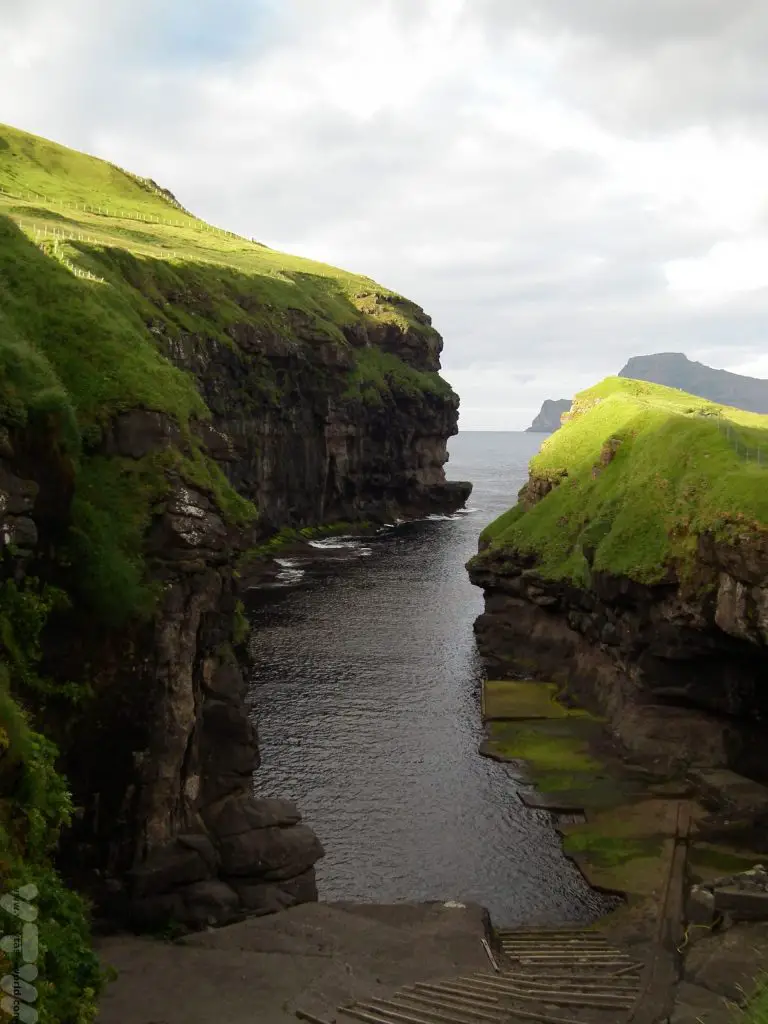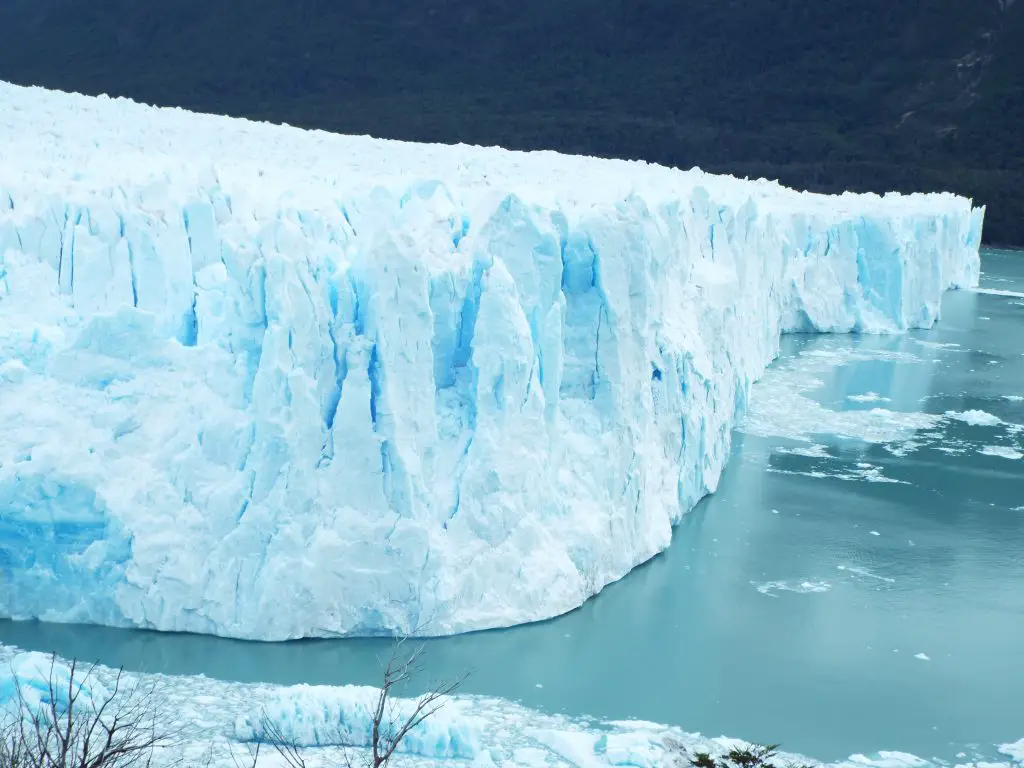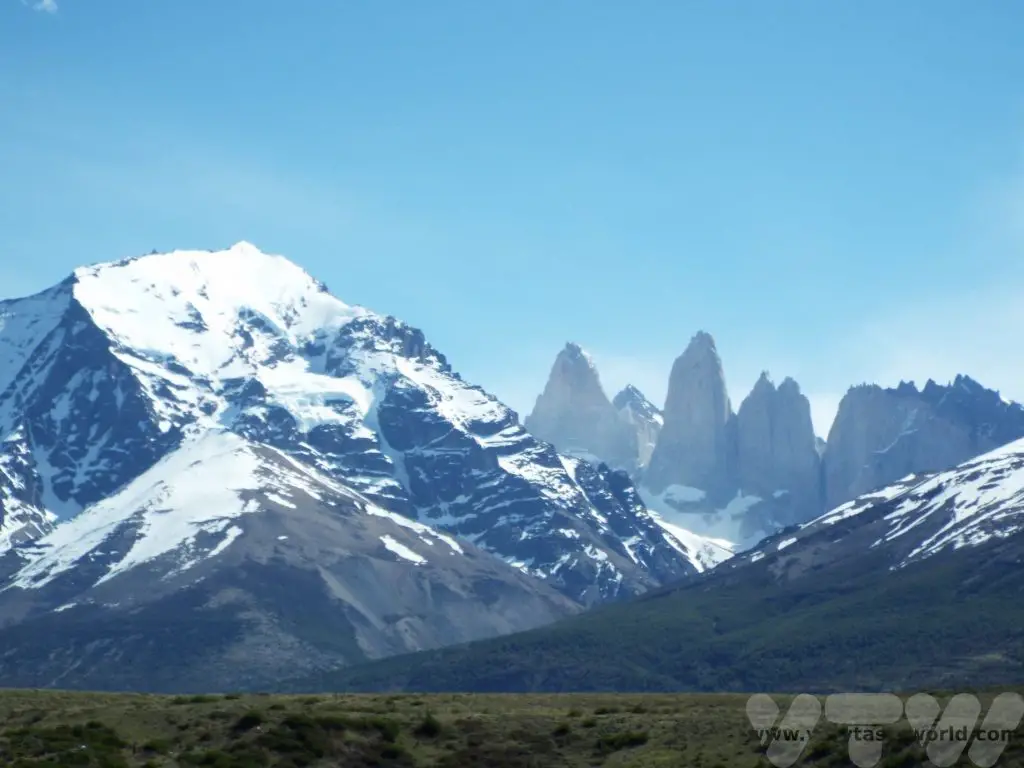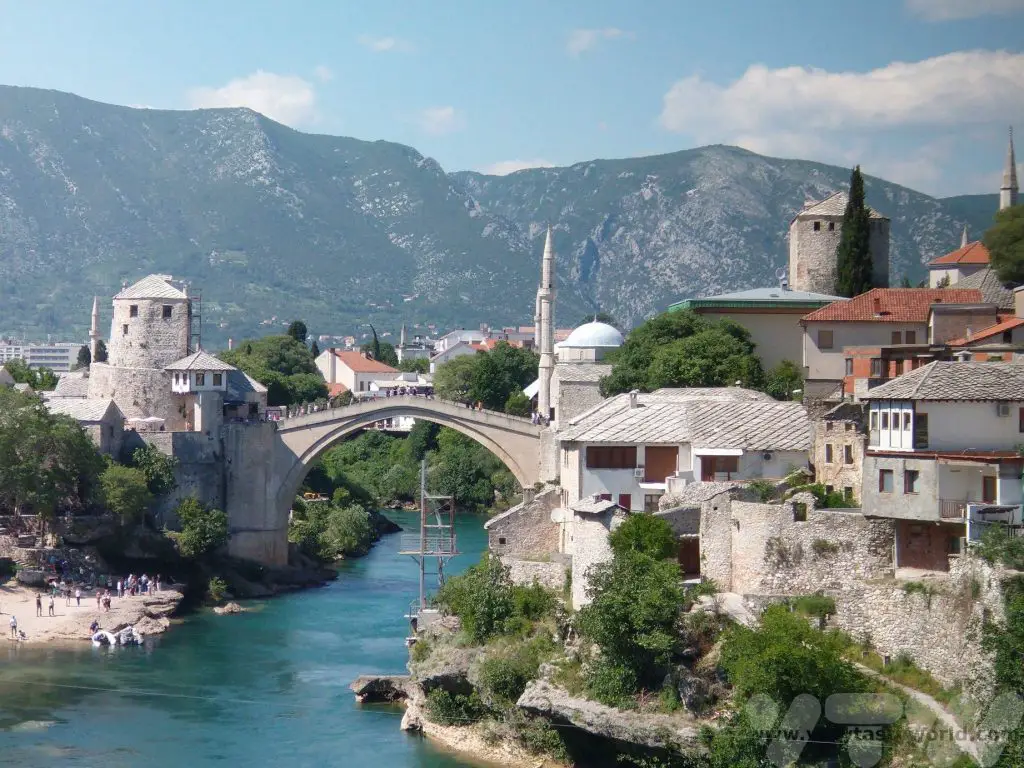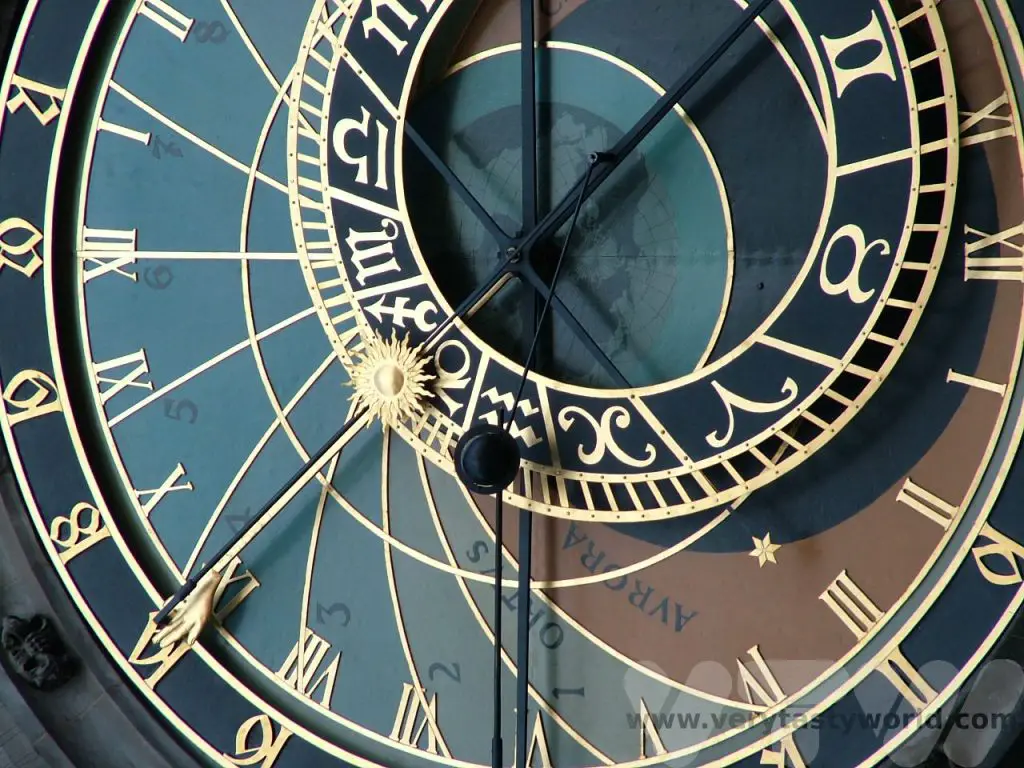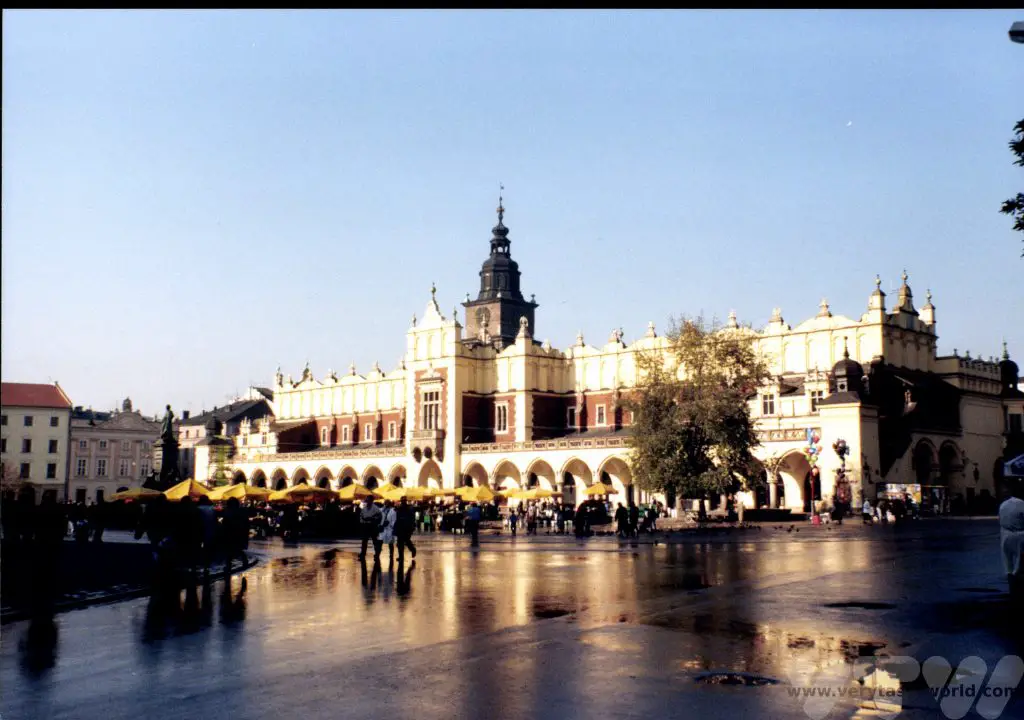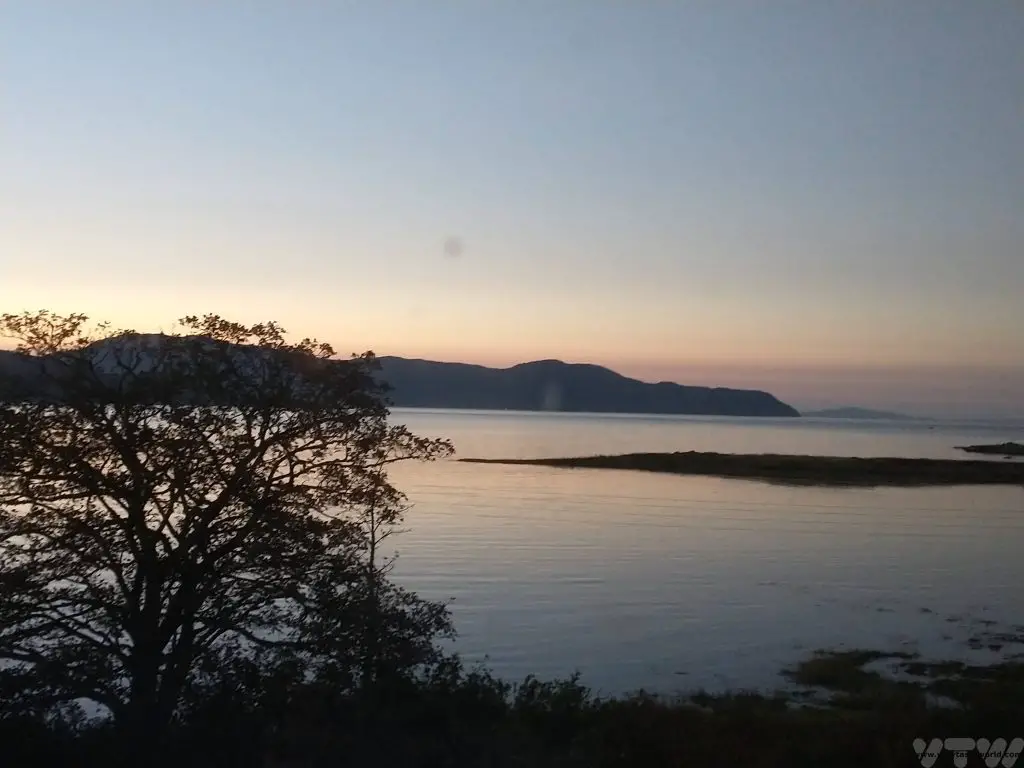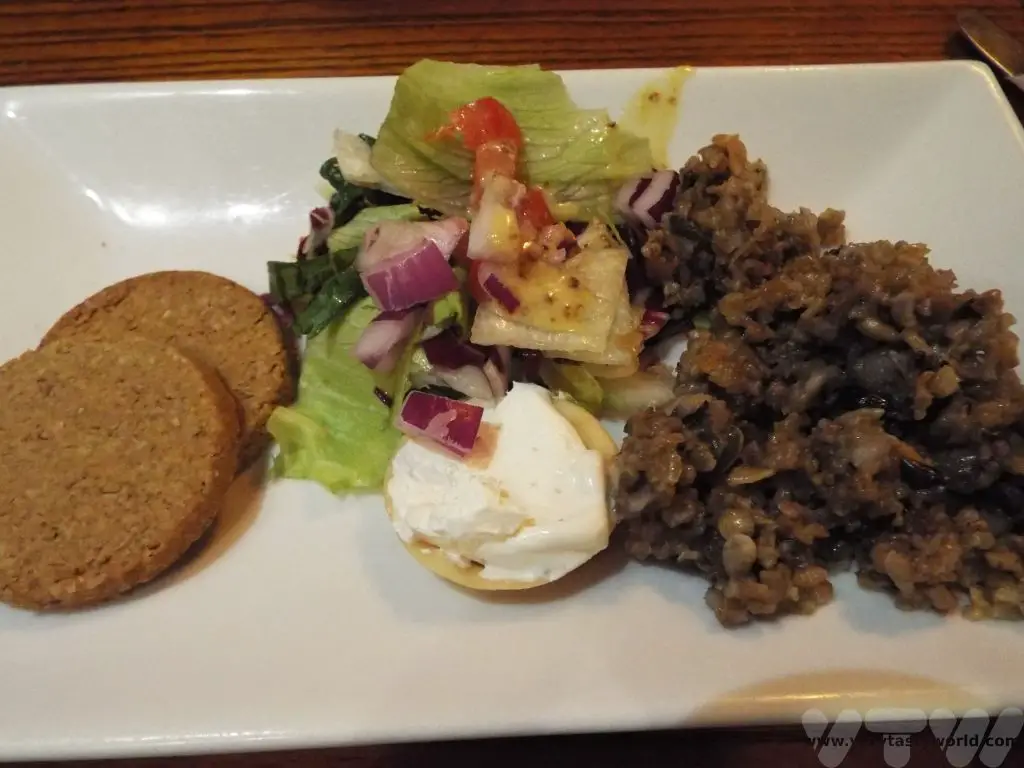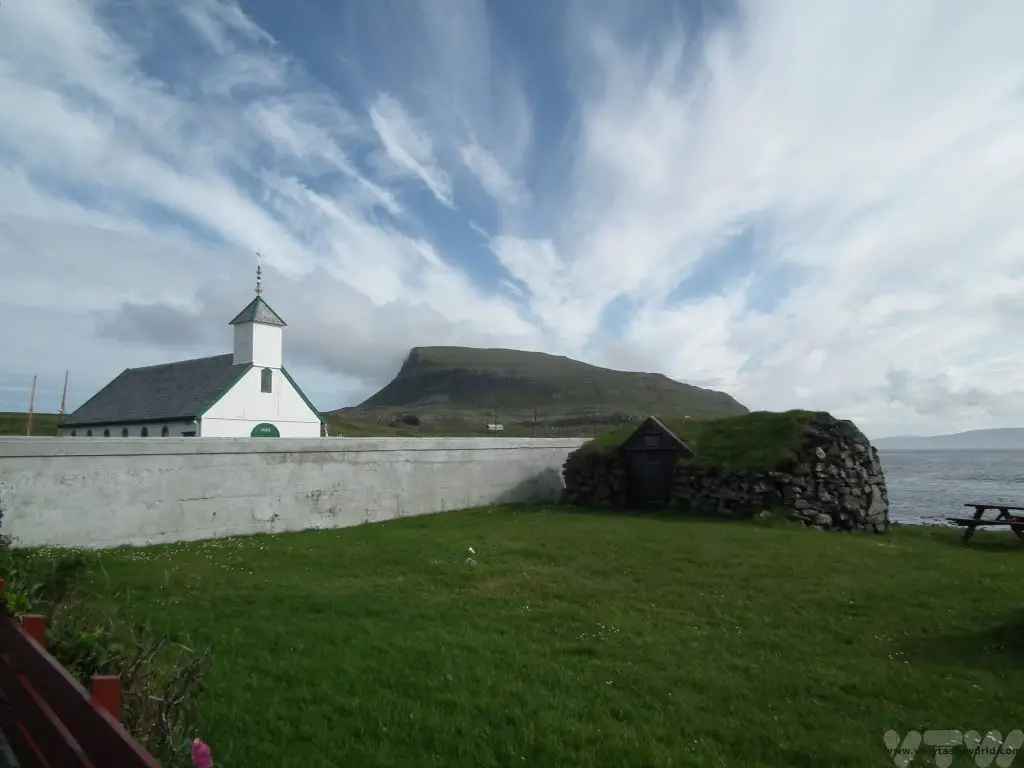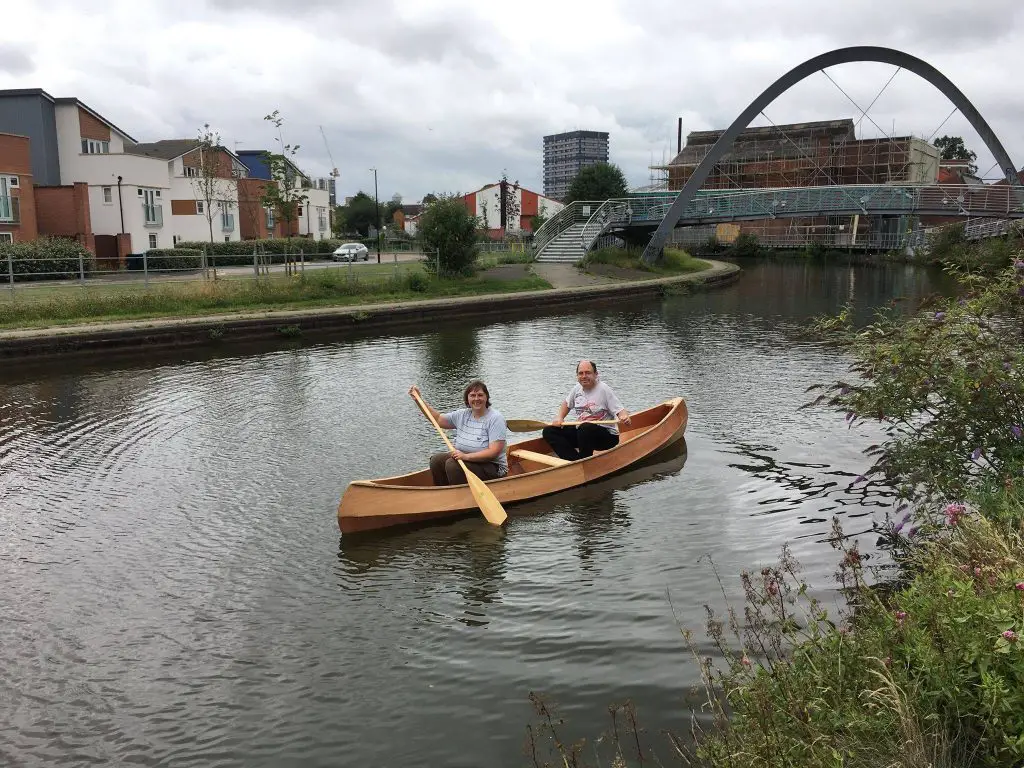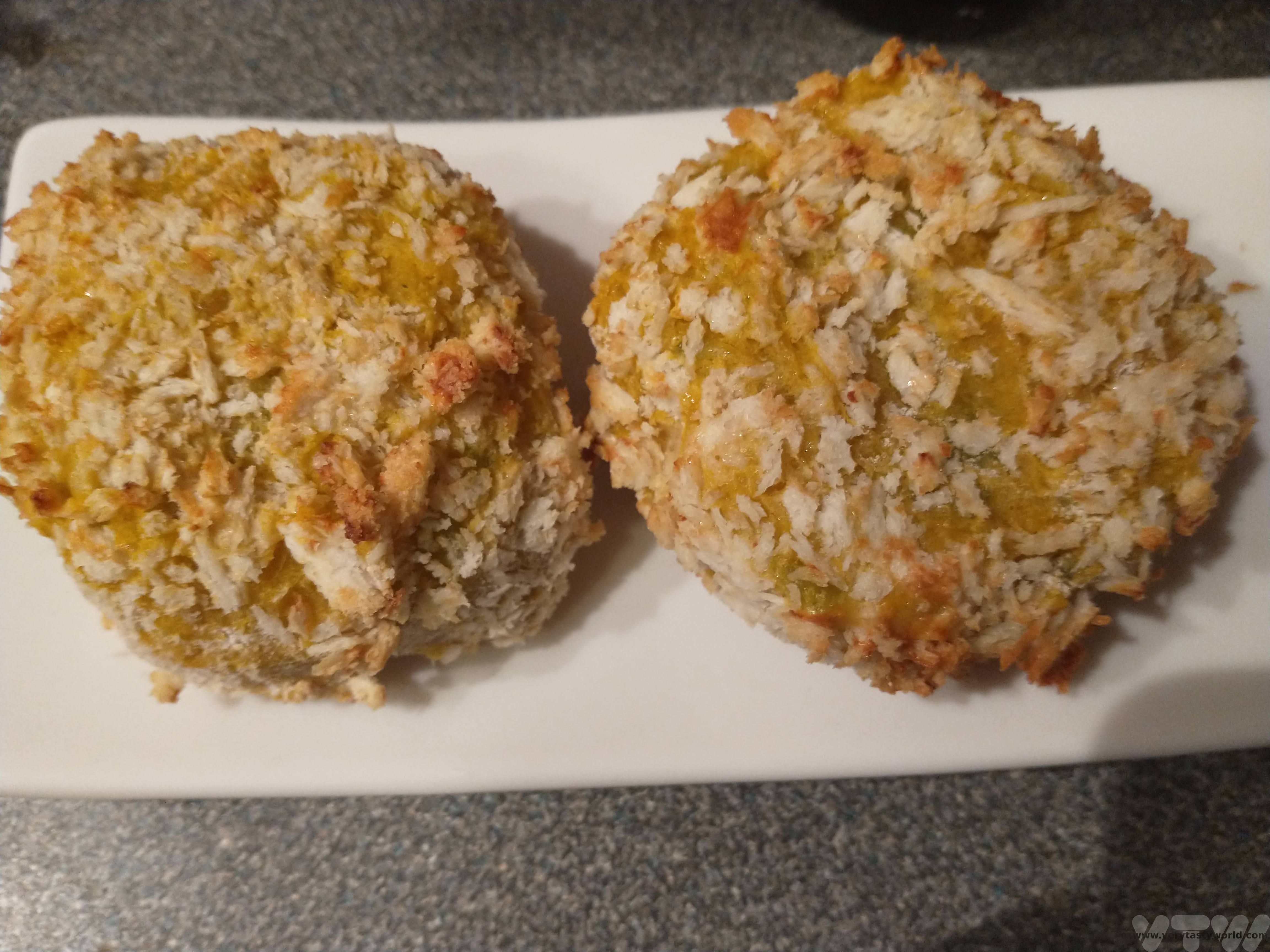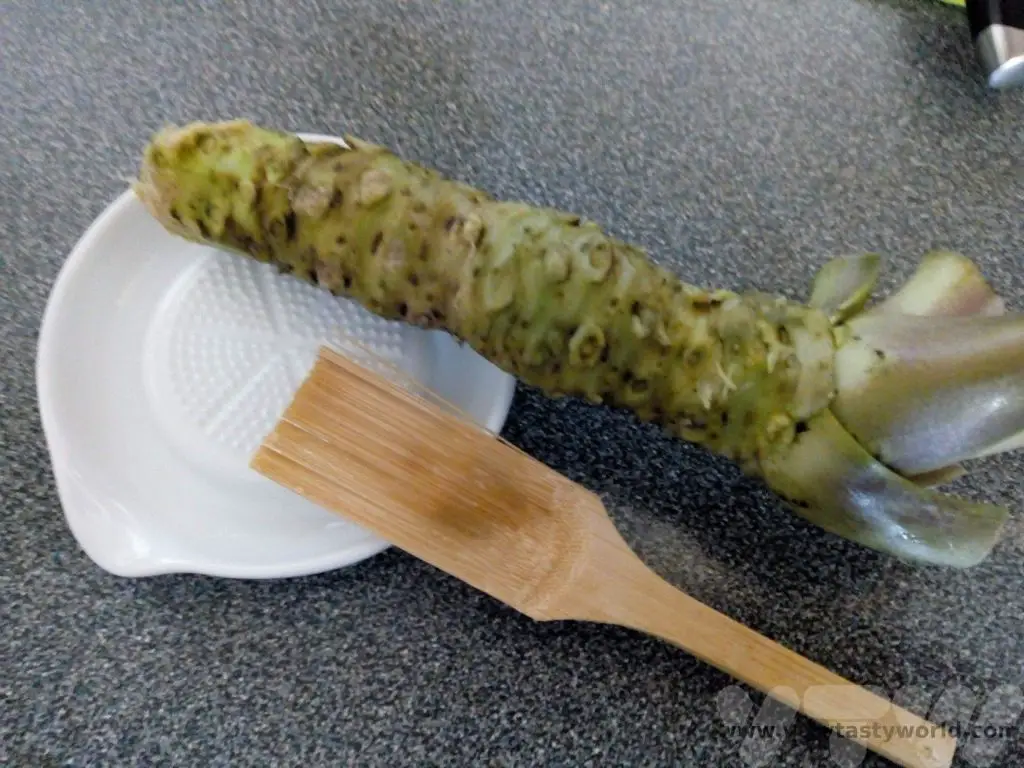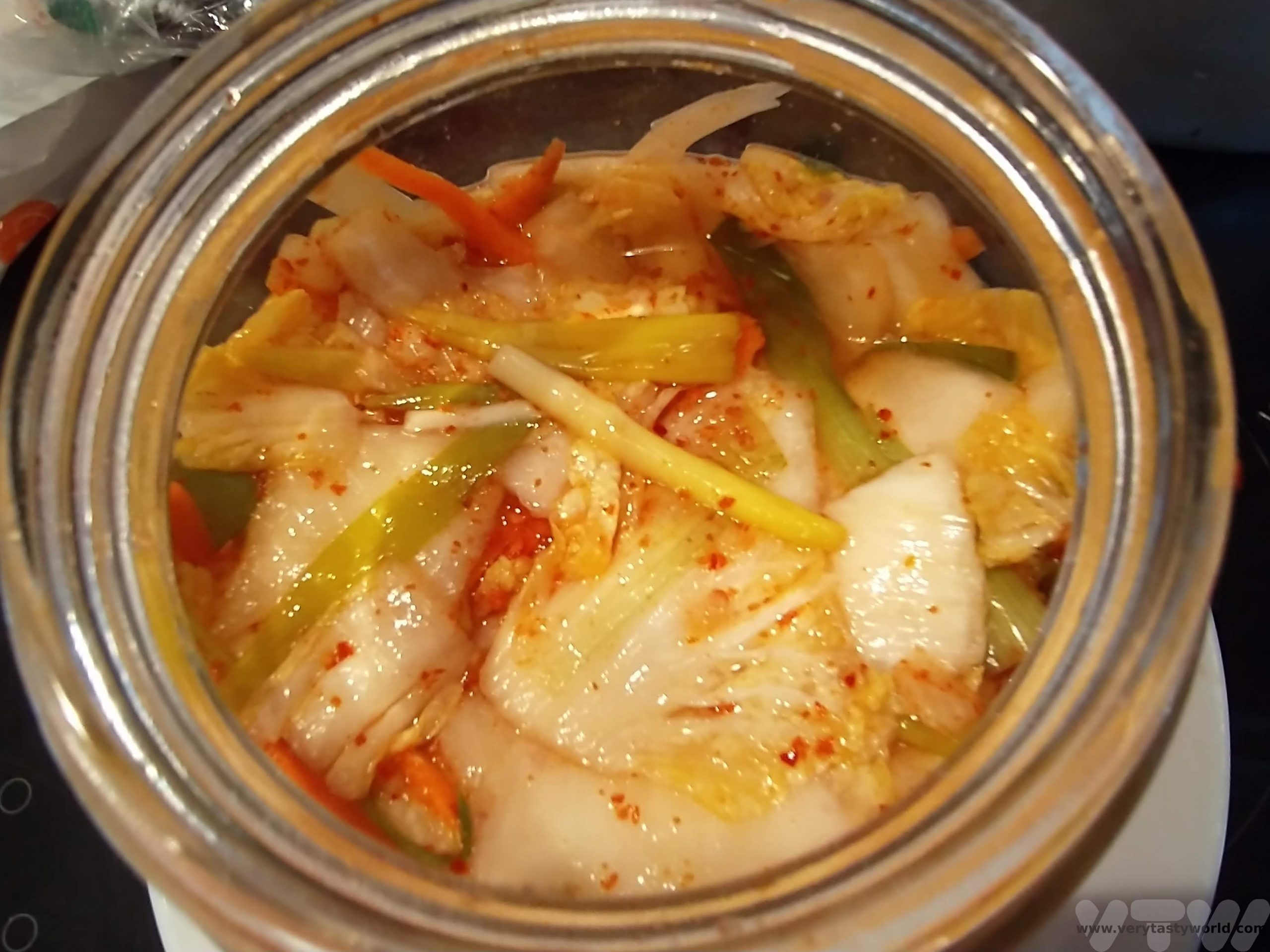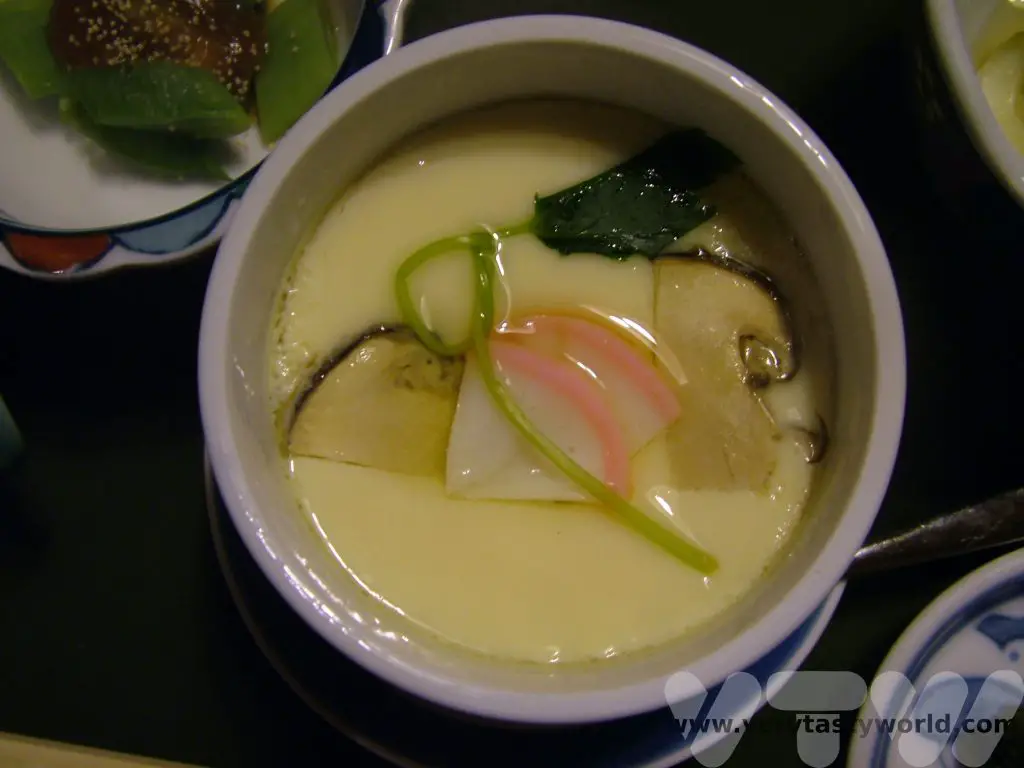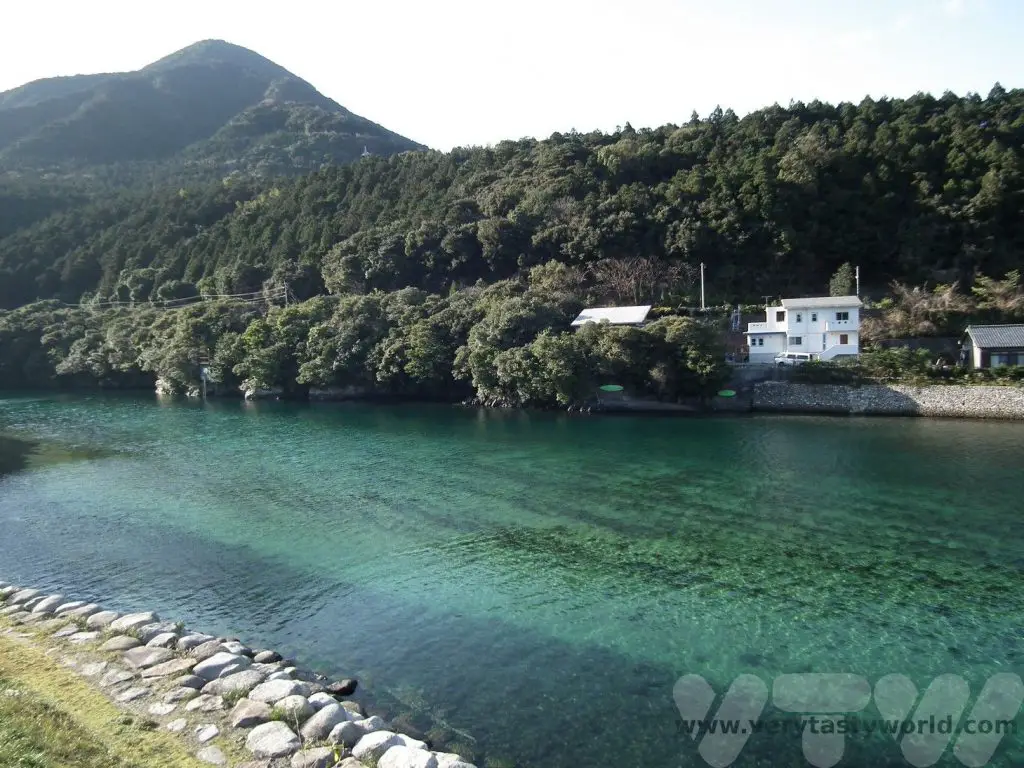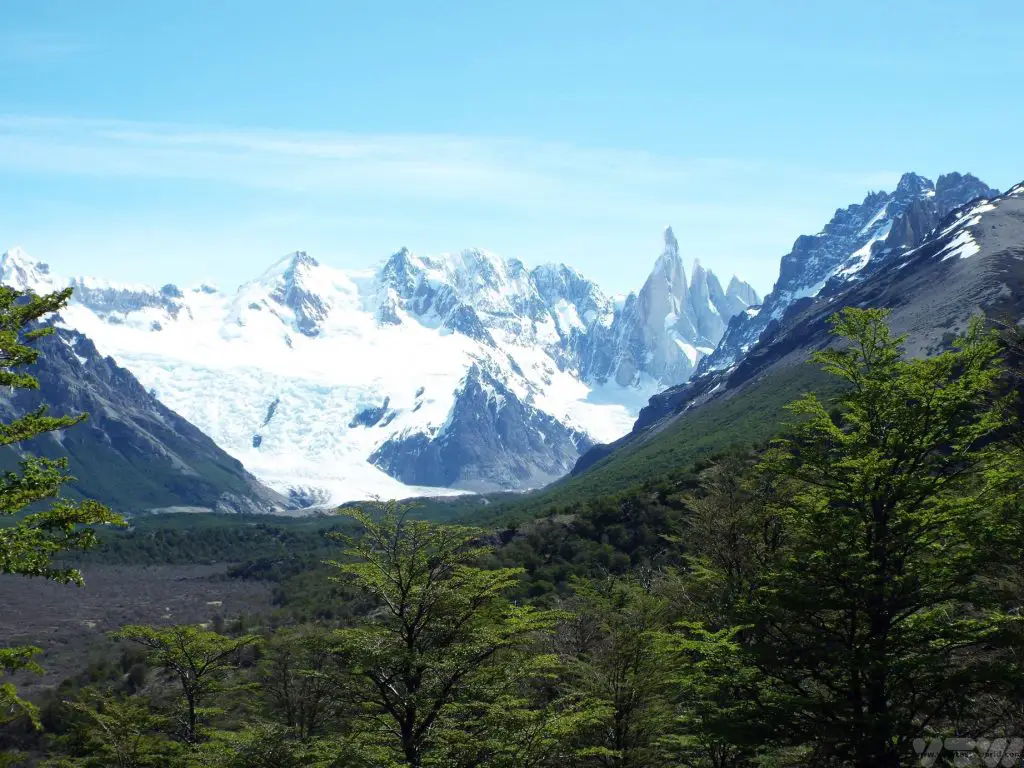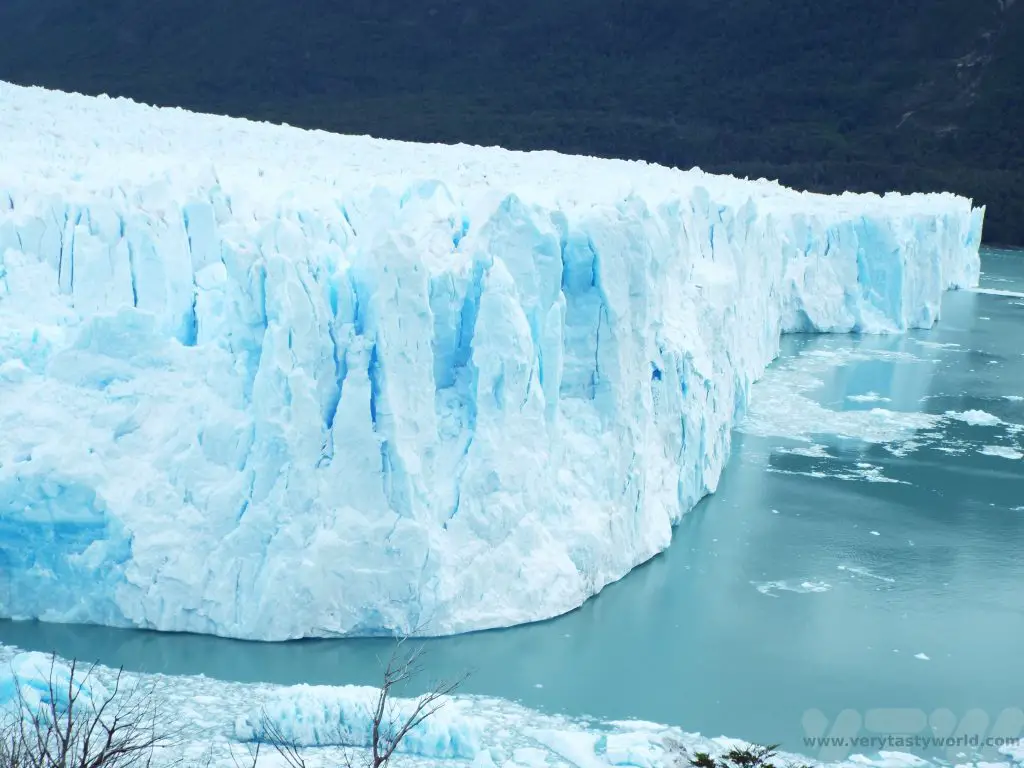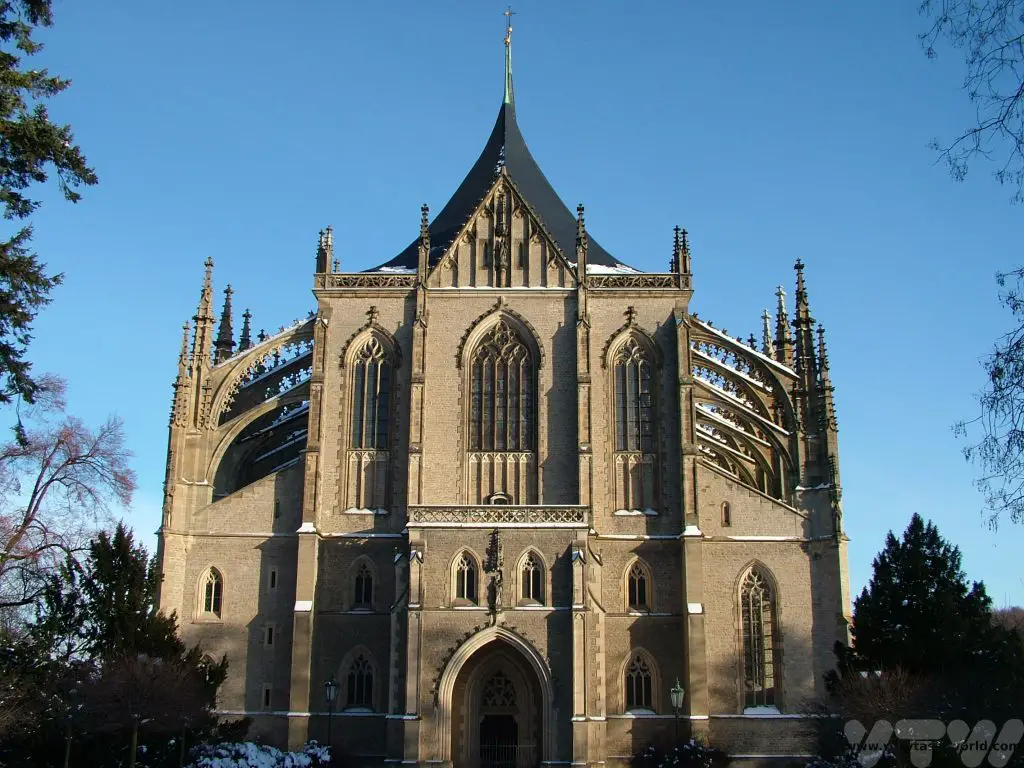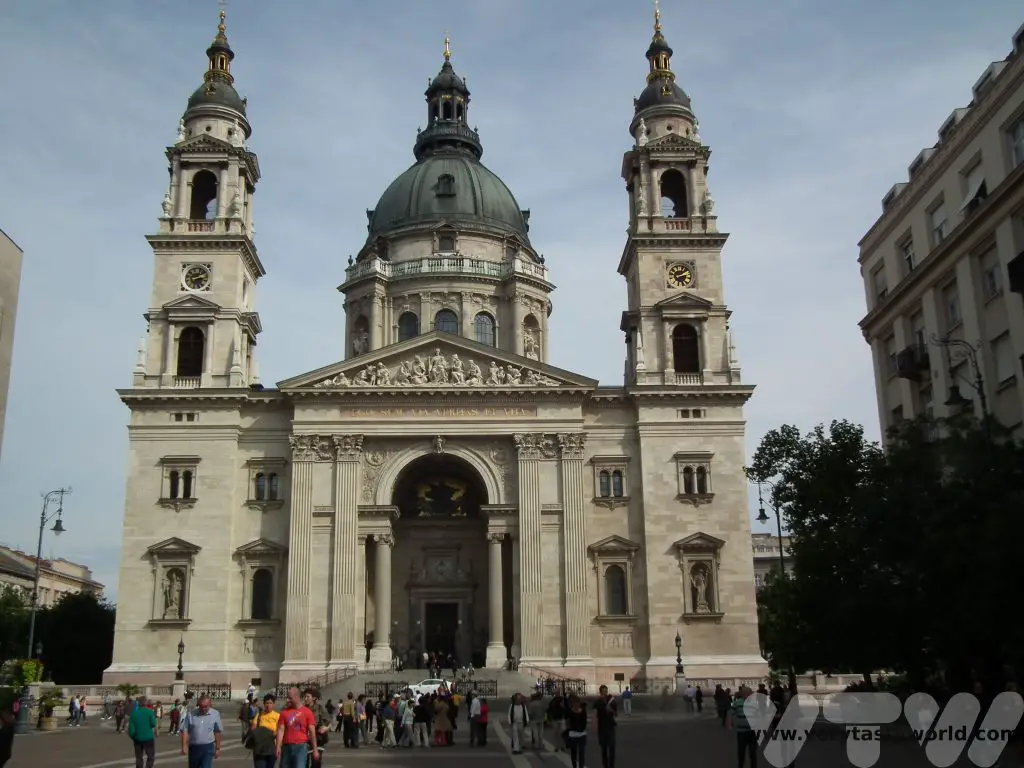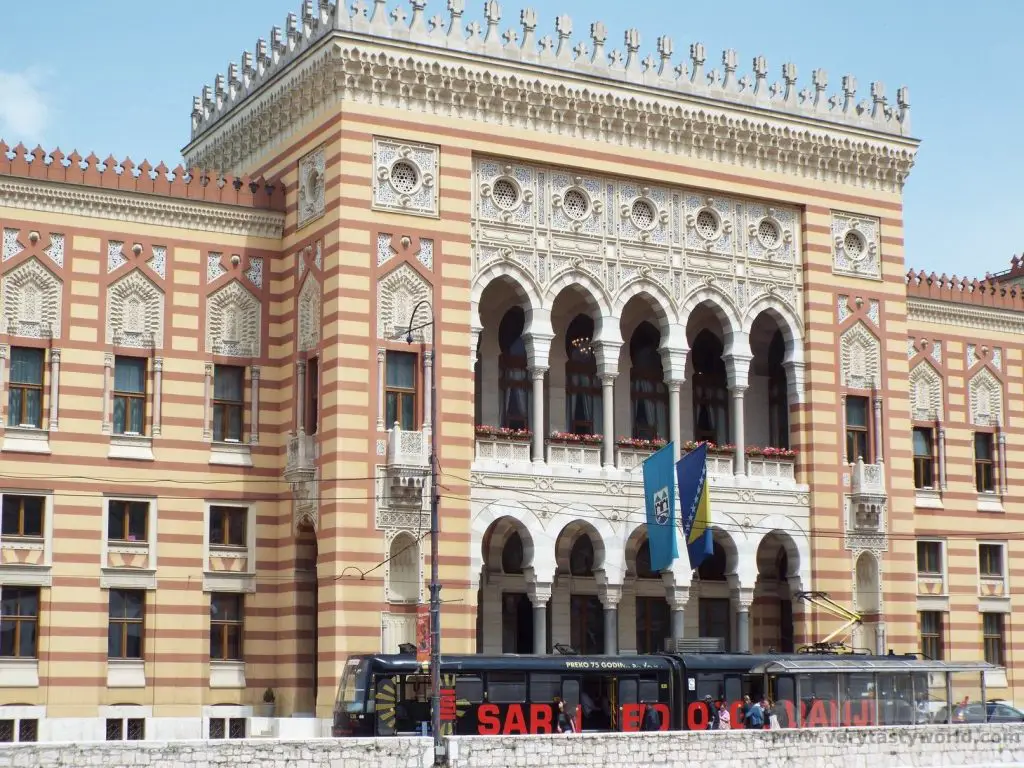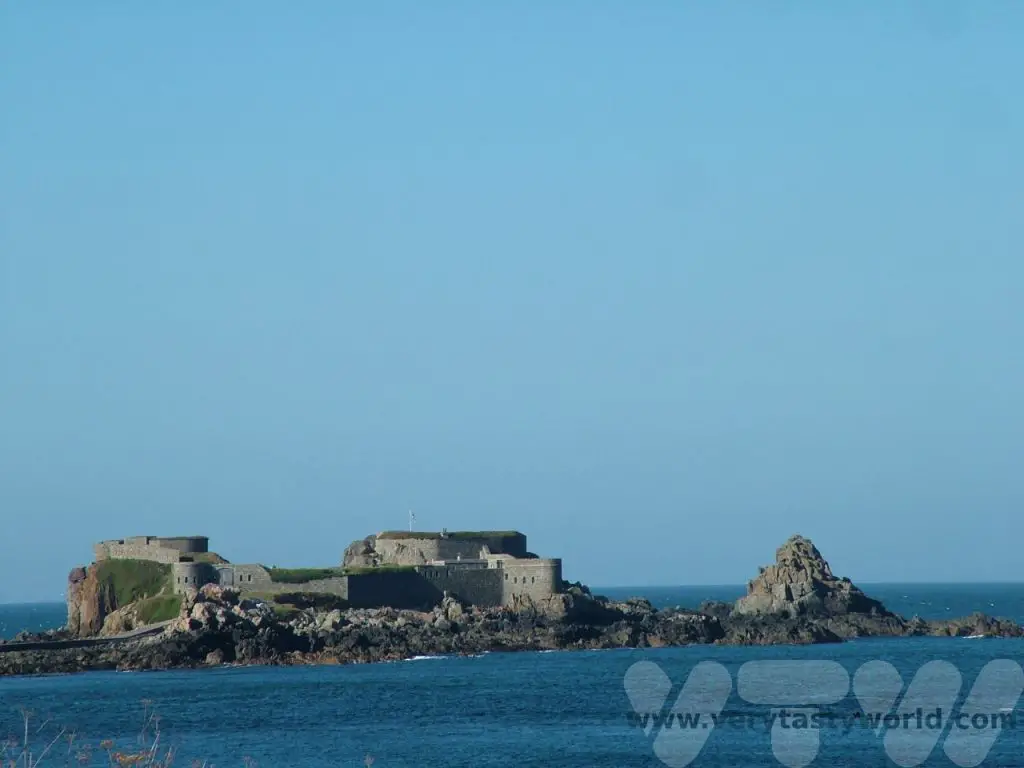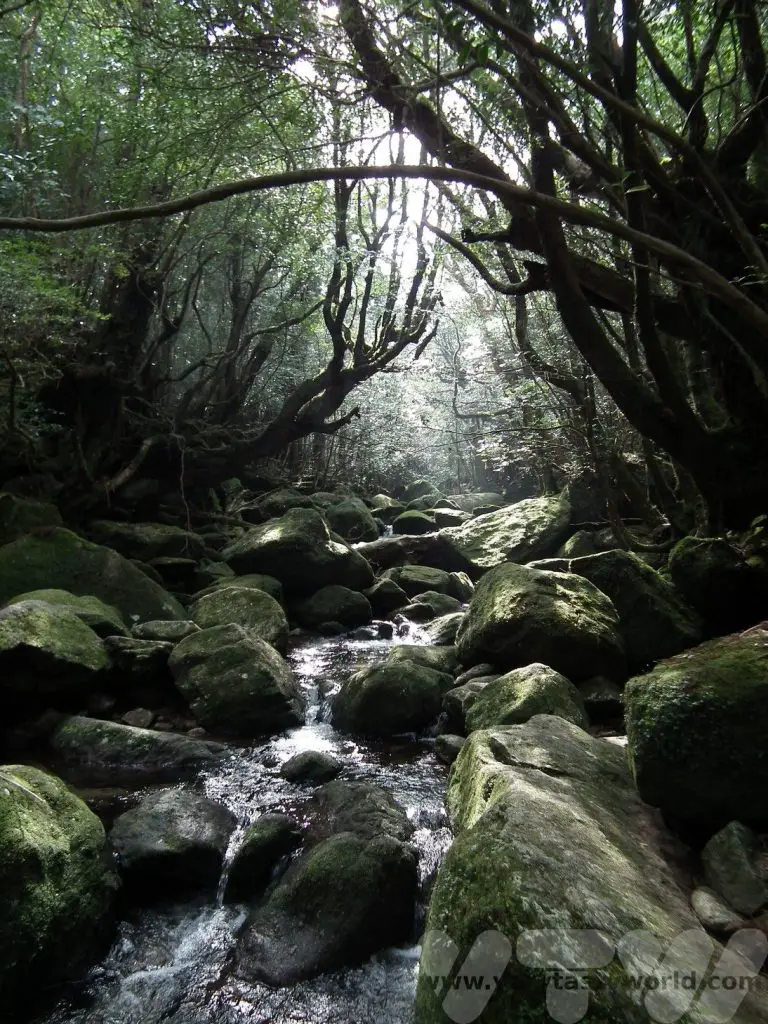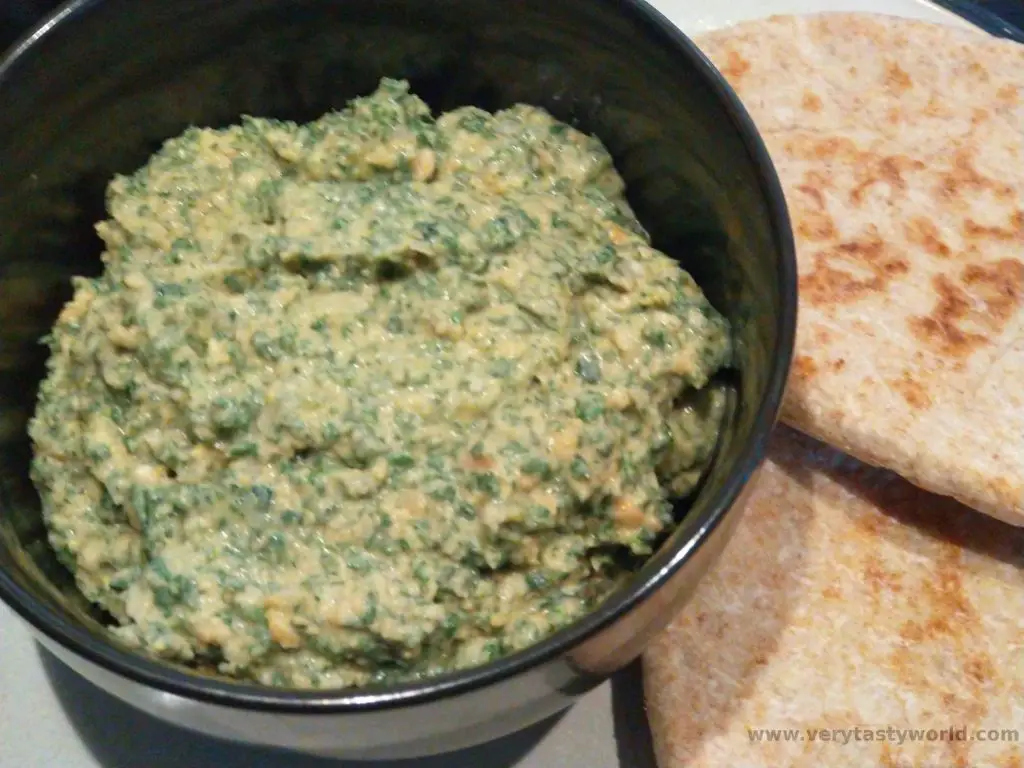A Winter Iceland Itinerary
Iceland is a perfect destination for a fly-drive holiday even in the middle of winter. Despite its chilly moniker Iceland isn’t as freezing as you might expect, thanks to the effects of the warm Gulf Stream from the Atlantic. We weren’t blessed with the greatest of weather on our visit, although it was largely dry, it was quite cloudy a lot of the time. But the winter landscapes were still absolutely beautiful. After flying into Keflavik, near Reykjavik, we drove a great big ‘smile’ along the rounded southern coastline from the west of Iceland to the east, stopping and staying at several locations along the way. Here’s our week-long winter Iceland itinerary:

Living in the UK, like most Brits, we are absolutely hopeless at dealing with even the slightest dusting of snow on the roads in winter. It’s because we don’t have seriously wintery weather very often and we’re just not used to driving on snow or, worse, ice. Our Icelandic hire car was a large estate with studded tyres.
Driving on ice? Surprisingly easy. The roads were clear and there were many stopping points along the way offering the opportunity to get out of the car and go walking. All the attractions were well signposted and easy to find. Our flight arrived quite late in Keflavik so we picked up the car and headed to Reykjavik where we stayed overnight.
Day 1 Reykjavik to Hveragerdi – Breaking the Golden Circle
Together, the sites of Thingvellir, Geysir and Gullfoss are known as the Golden Circle as they are all located near to Reykjavik and can easily be visited in a day – handy if you only have a short time in the country. But if you have more time, each site is worth exploring in more depth. Our itinerary was to take us back to Reykjavik so we decided to skip Thingvellir on the way out and visit on the way back. This meant we had more time to see Gullfoss and Geysir.
The word geyser is derived from the geyser, Geysir, located in one of the many geothermal areas that can be found all over the country. The original geyser, which looks a little forlorn, is no longer active…
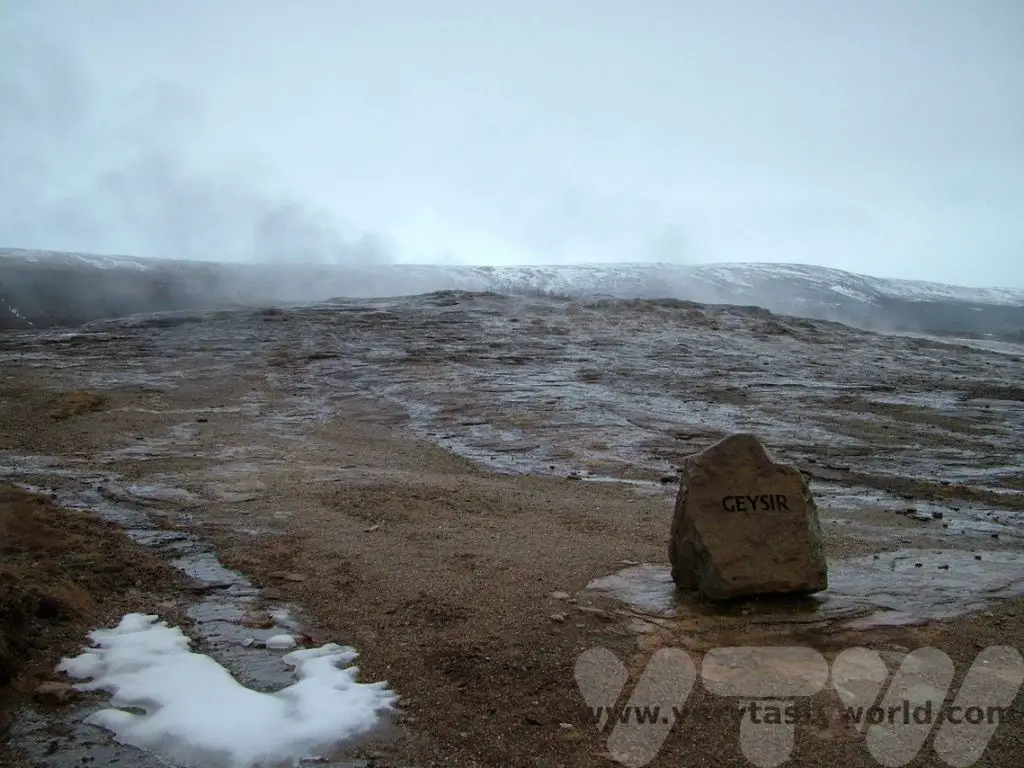
…but its companion, Strokkur, gushes reliably every few minutes – up to a height of about 30 metres – and is a spectacular sight.
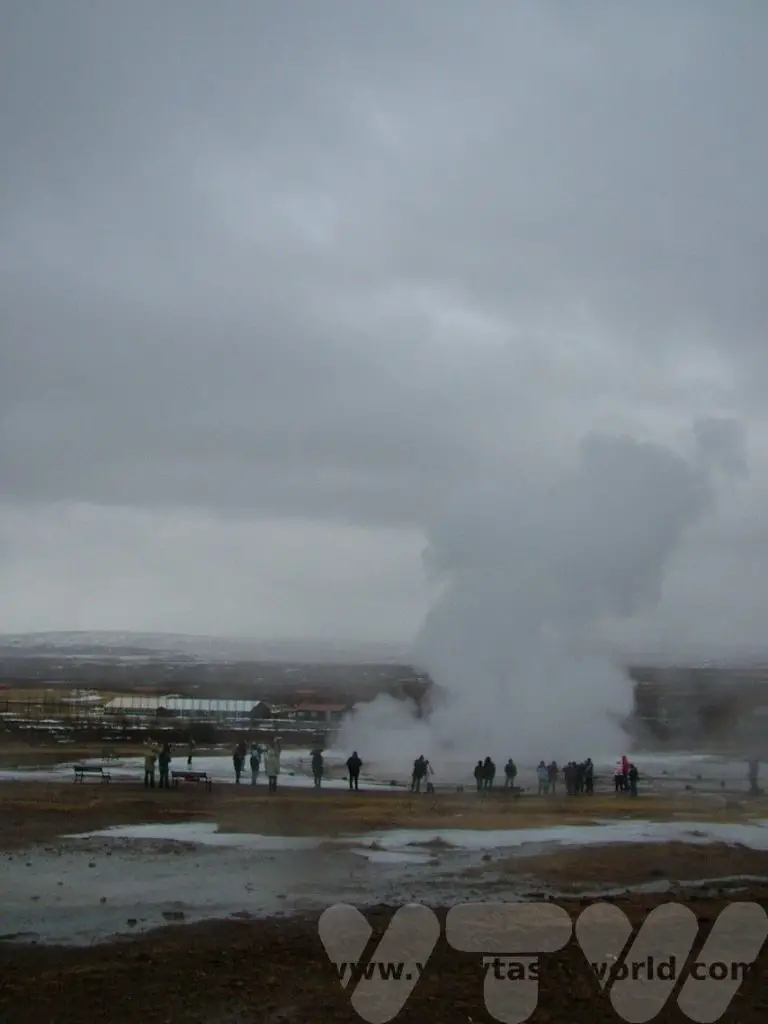
Gorgeous Gullfoss is a two tier waterfall that plunges dramatically into a gorge.
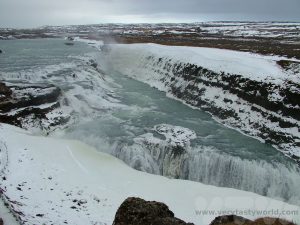
We spent the night at Hveragerdi, which is located just off Iceland’s ring road, Route 1, perfect for getting on the road the following morning. Because the area is so geothermically active, it’s known as a centre for horticulture and has a number of greenhouses heated by hot springs. In fact, many of the buildings in the area are heated using the hot water. And our hotel just happened to have a very nice hot spring bathing pool.
Day 2 Hveragerdi – Kirkjubaejarklaustur
Travelling along the south coast there are plenty of places to stop off, including the impressive waterfalls of Seljalandsfoss and Skogafoss.
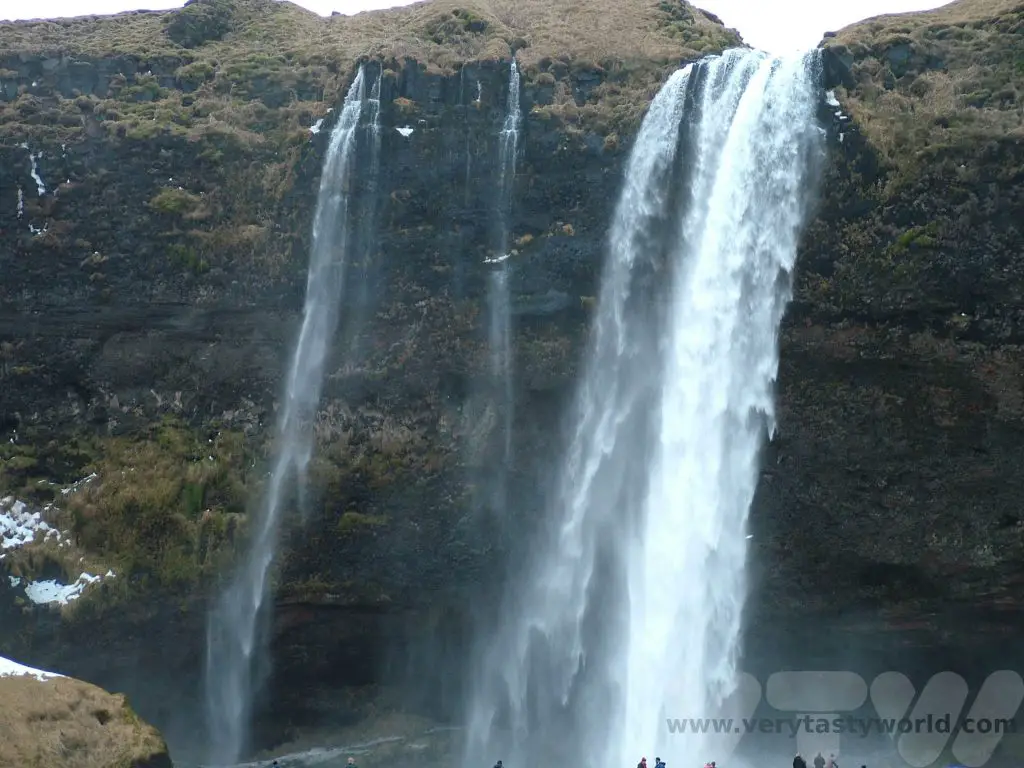
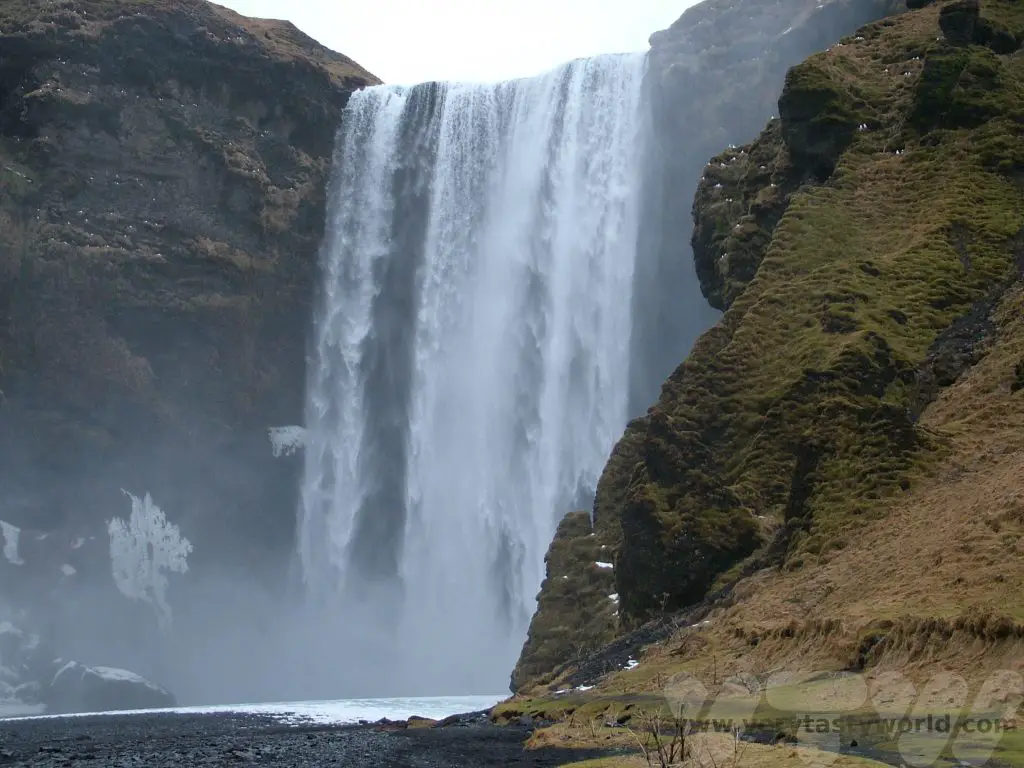
On arriving at Kirkjubaejarklaustur it was possible to do some walking in the area. There’s a pretty church and we could walk to see the ‘bear rock’.
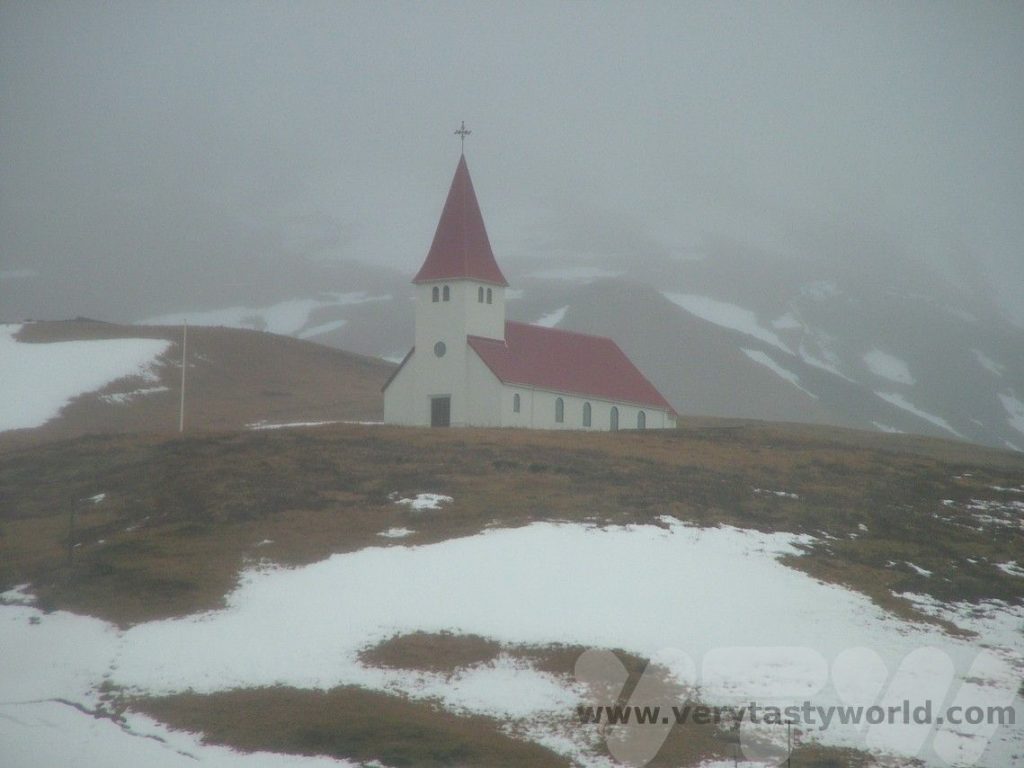
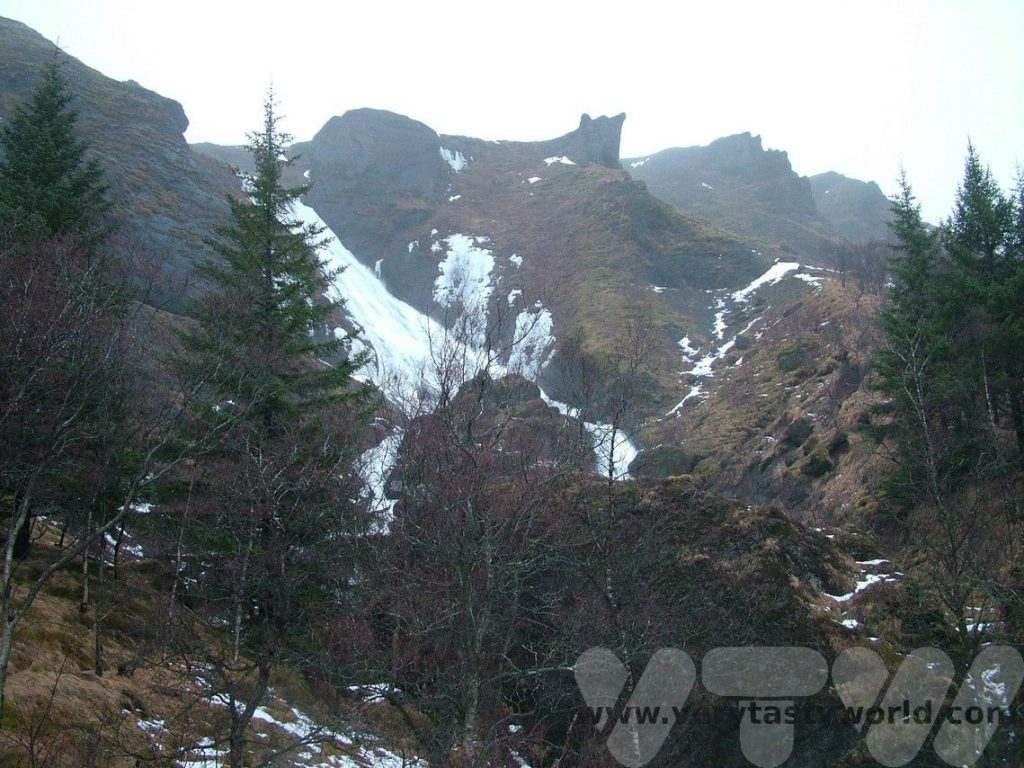
Day 3 Kirkjubaejarklaustur – Skaftafell
Stopping for a brief glimpse of the delightful turf-roofed chirch at Nupsstadur…
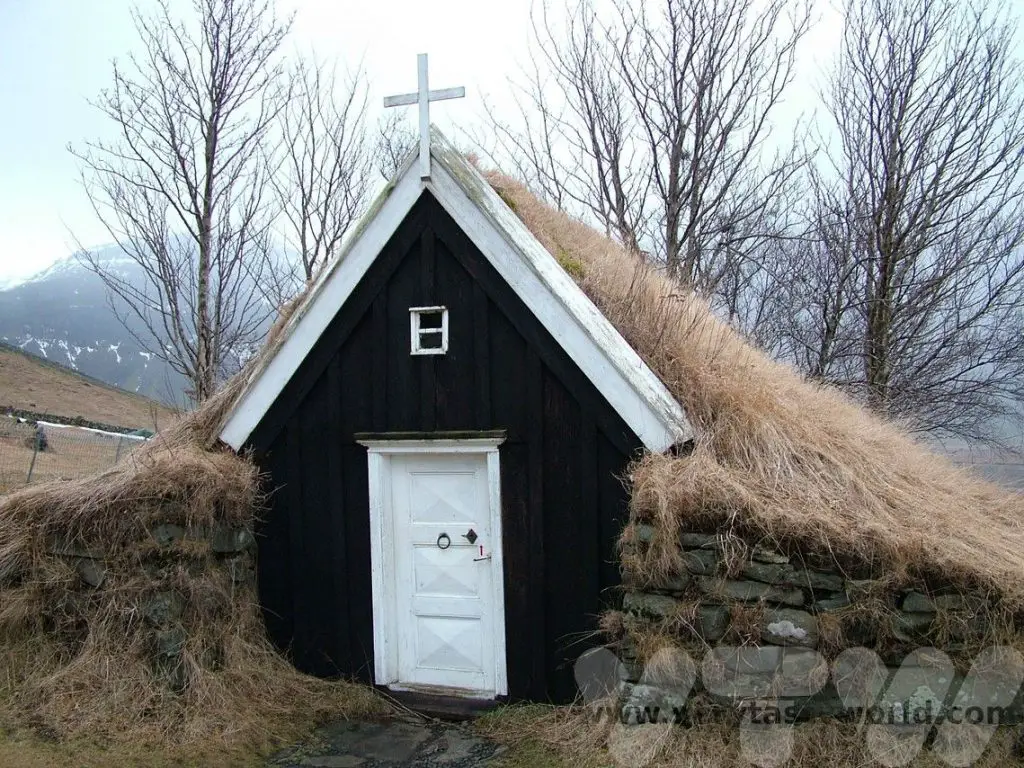
…we then drove across the outwash plains of Vatnajökull, the largest icecap in Iceland. Outwash plains are known as sandurs and develop when glacial rivers wash ash and ice towards the coast. They can be very large and we crossed this one via a long bridge. One thing worth noting is that during the winter the wind can whip up ash and sand and this can damage the paintwork on a car. Be aware of any warnings on the road about windy conditions and also talk with your hire car company about possible extra insurance to cover for this eventuality, if needed.
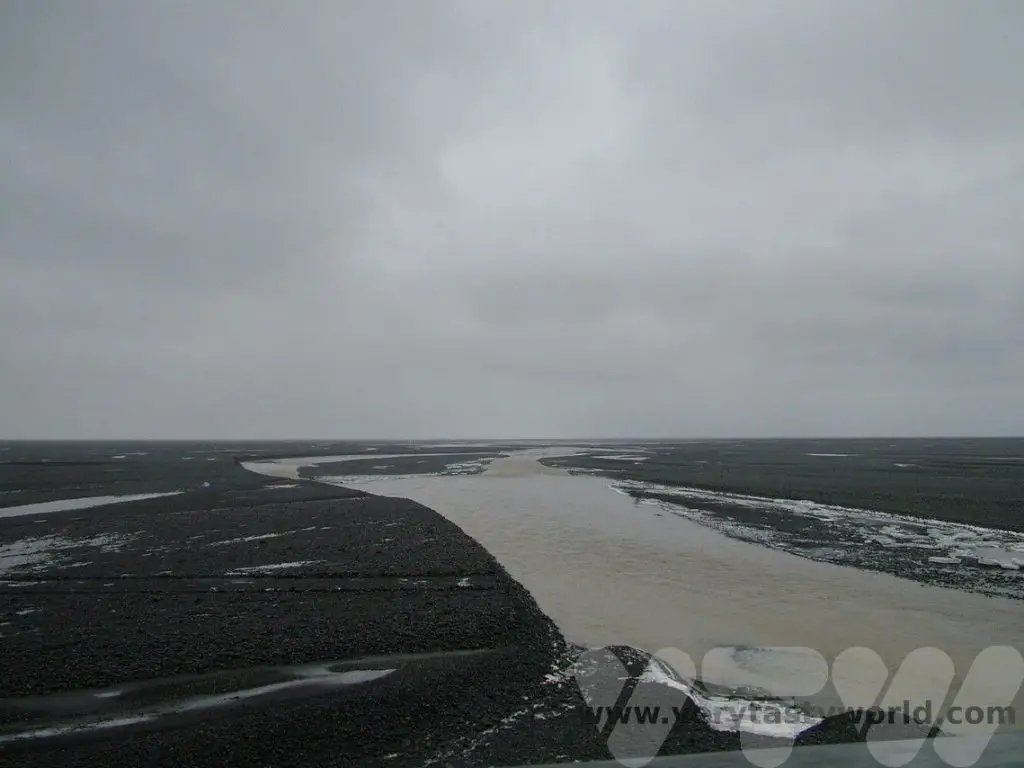
Skaftafell National Park was merged with other areas in the region in 2008 to become part of the Vatnajökull National Park. We discovered that is a delightful area to go walking in.
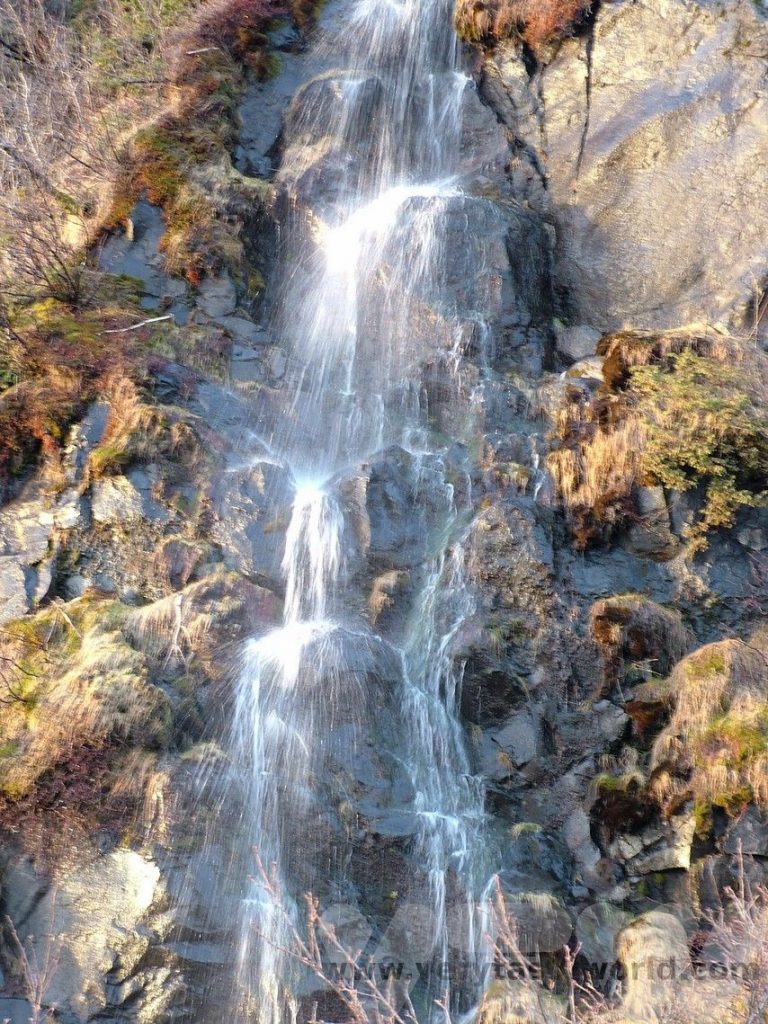
There’s a good hike to the waterfall of Skaftafell which is surrounded by black basalt columns. The walking was relatively easy but, due to the snow melting on the day, was a little slippery in places.
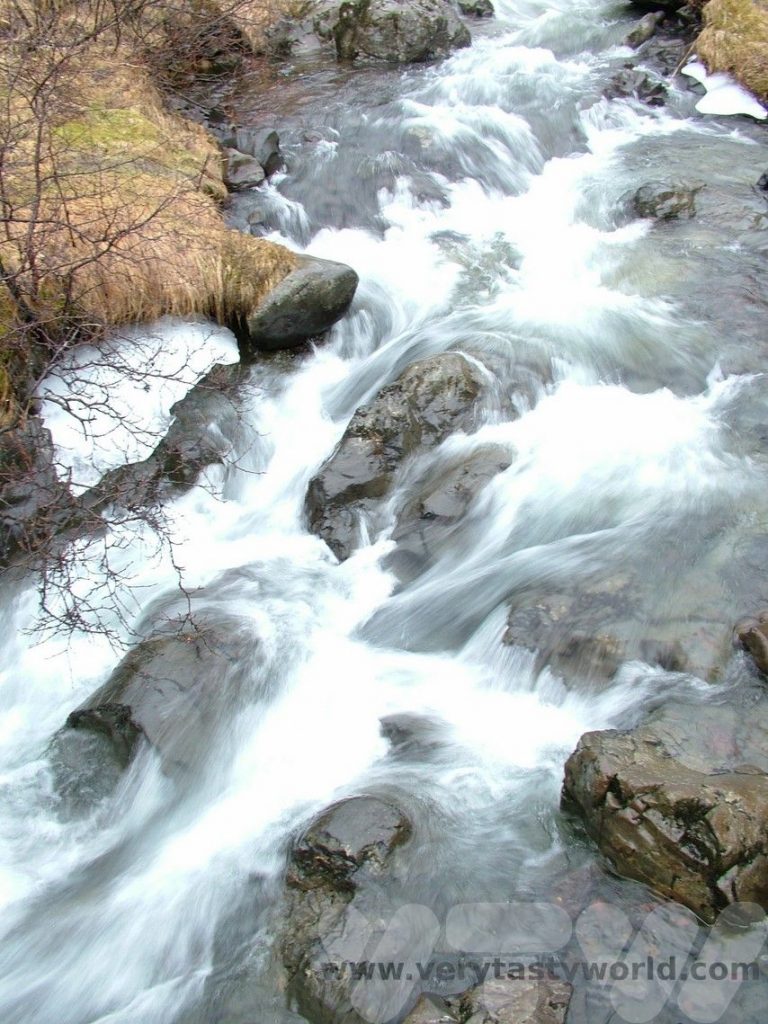
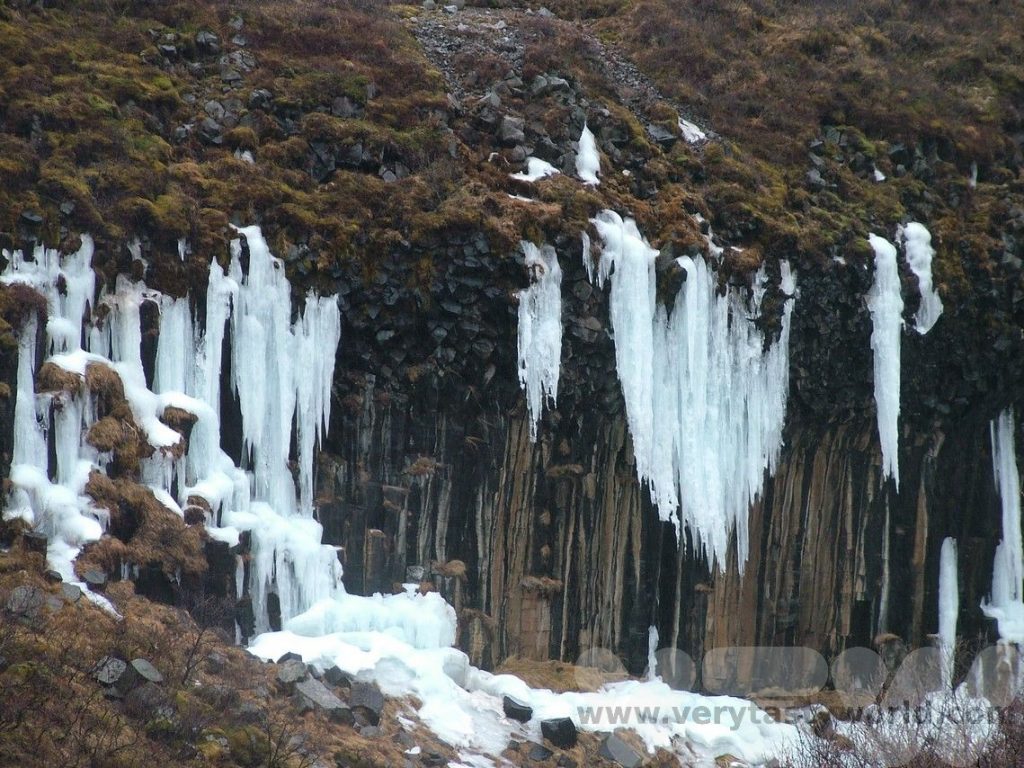
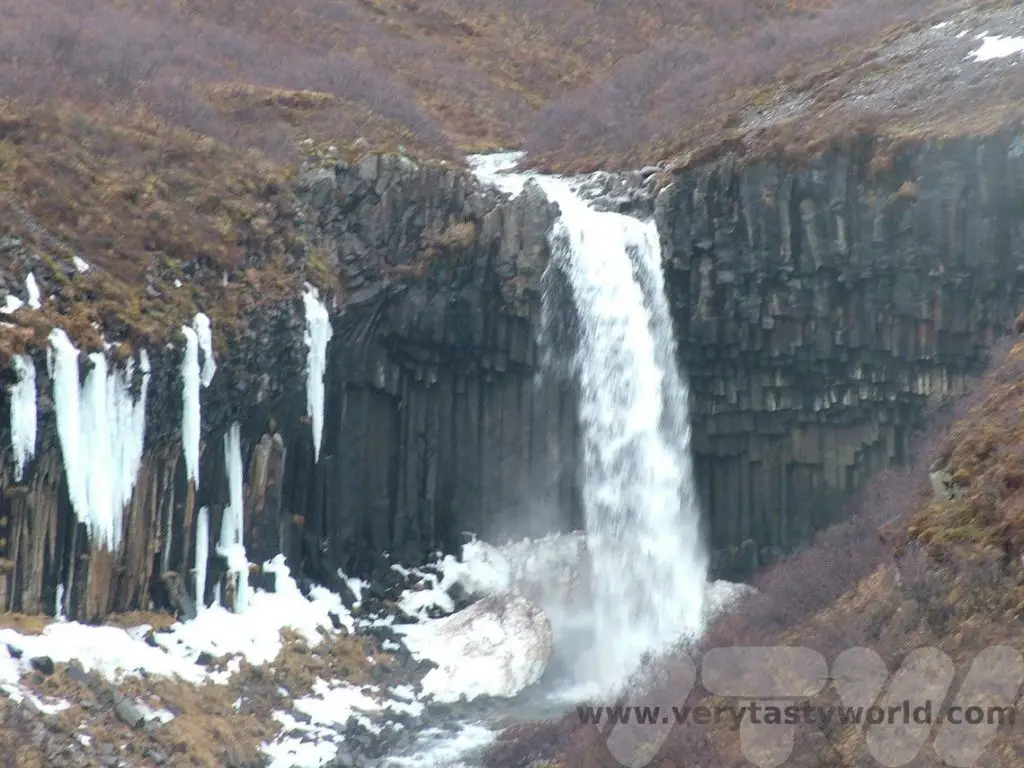
About 1km from the crossroads of road 1 and road 998 is a small track which leads to a glacier.
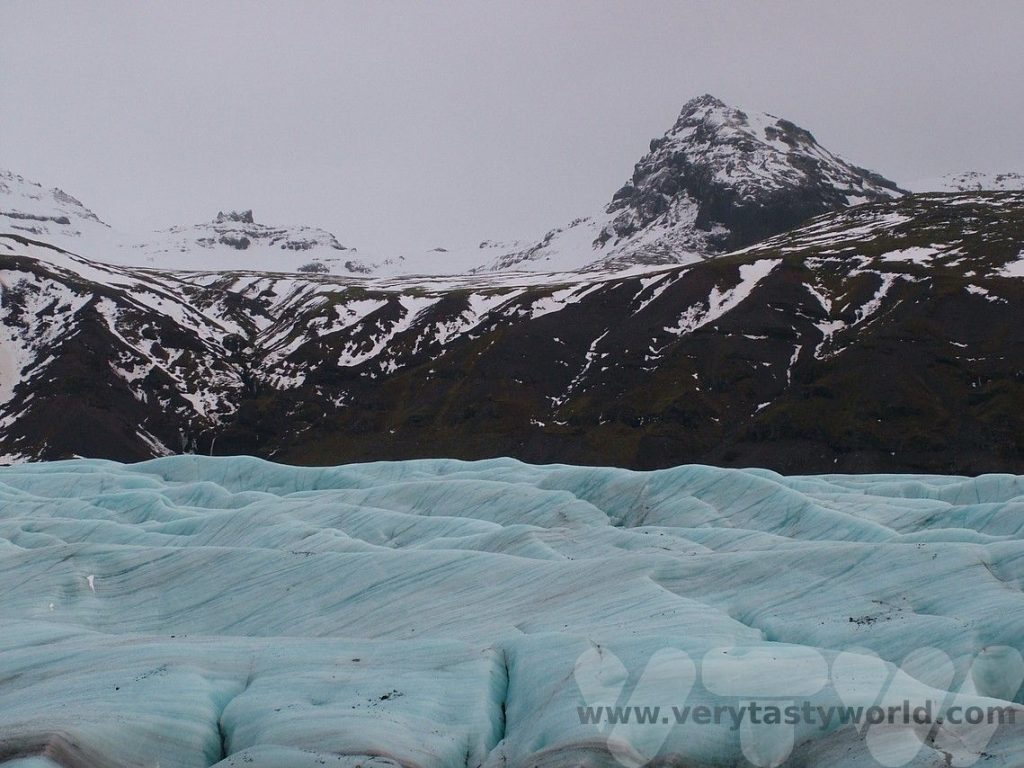
It is the Svinafellsjokull glacier and it’s possible to park up and walk to its snout. Bringing all those geography lessons on glaciation at school to life, it was absolutely wonderful to be able to get so close to a glacier. It was also amazing how to discover that they are actually just like sheep – very picturesque from a distance but really filthy close up!
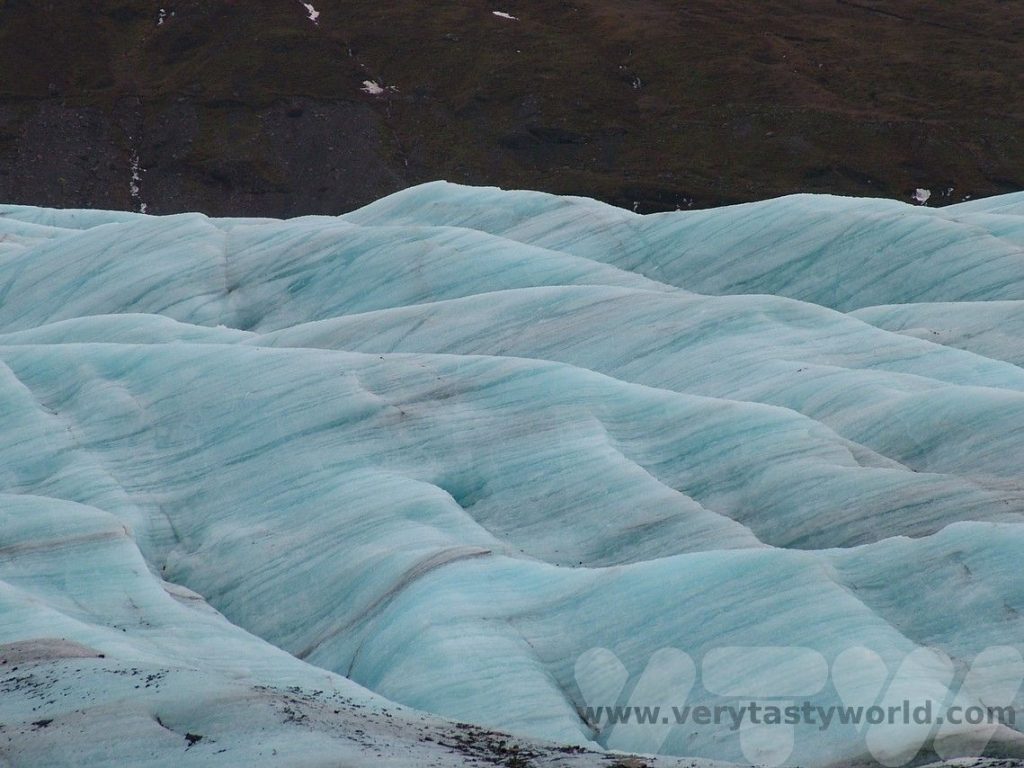
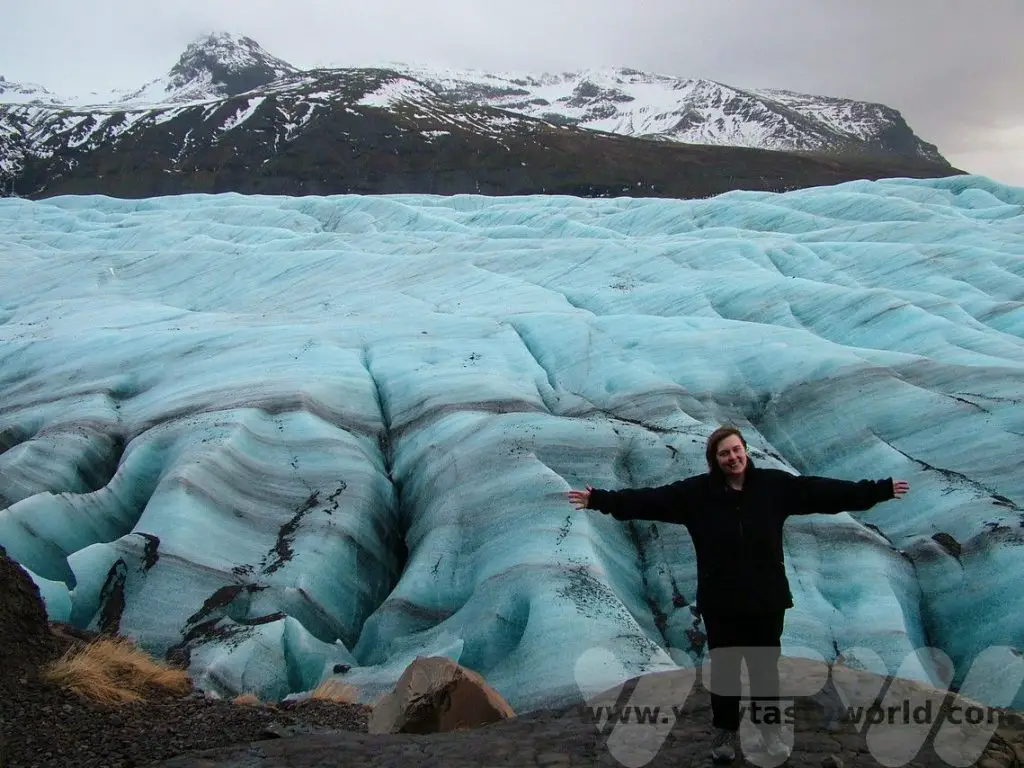
Day 4 Around Skaftafell – Jokulsarlon
The amazing iceberg lagoon at Jokulsarlon was unmissable and was one of the highlights of our trip. It lies very close to the coast at the edge of the glacier Vatnajökull which feeds the lake with melted glacial water and icebergs that calve off and float on the lake.
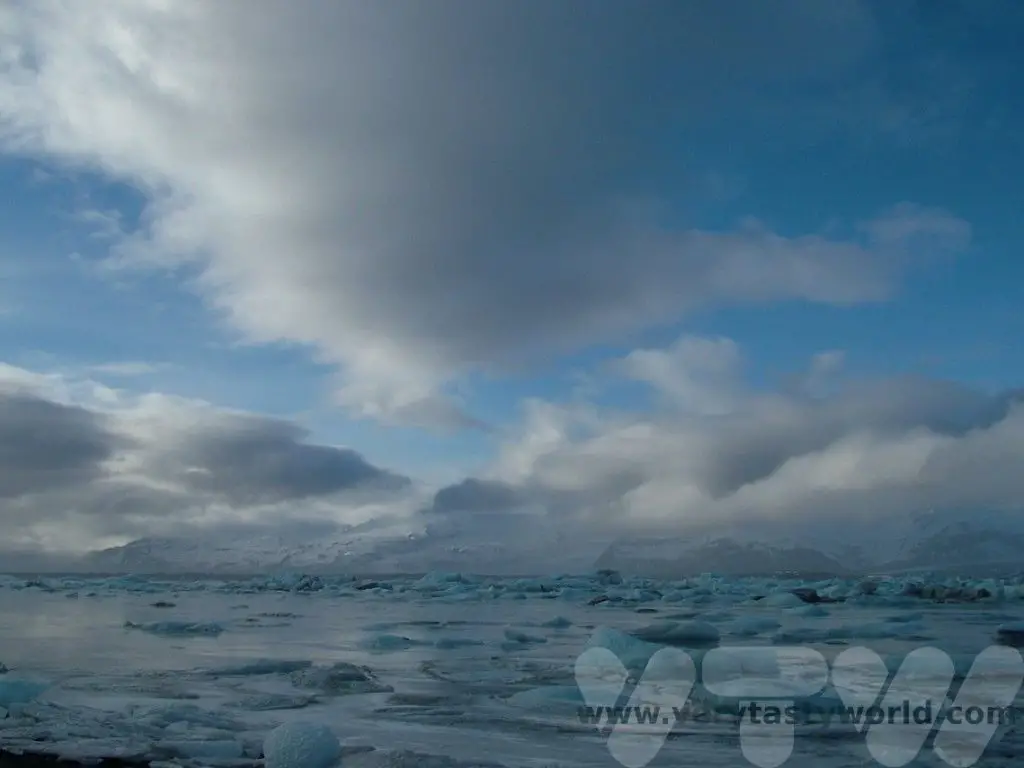
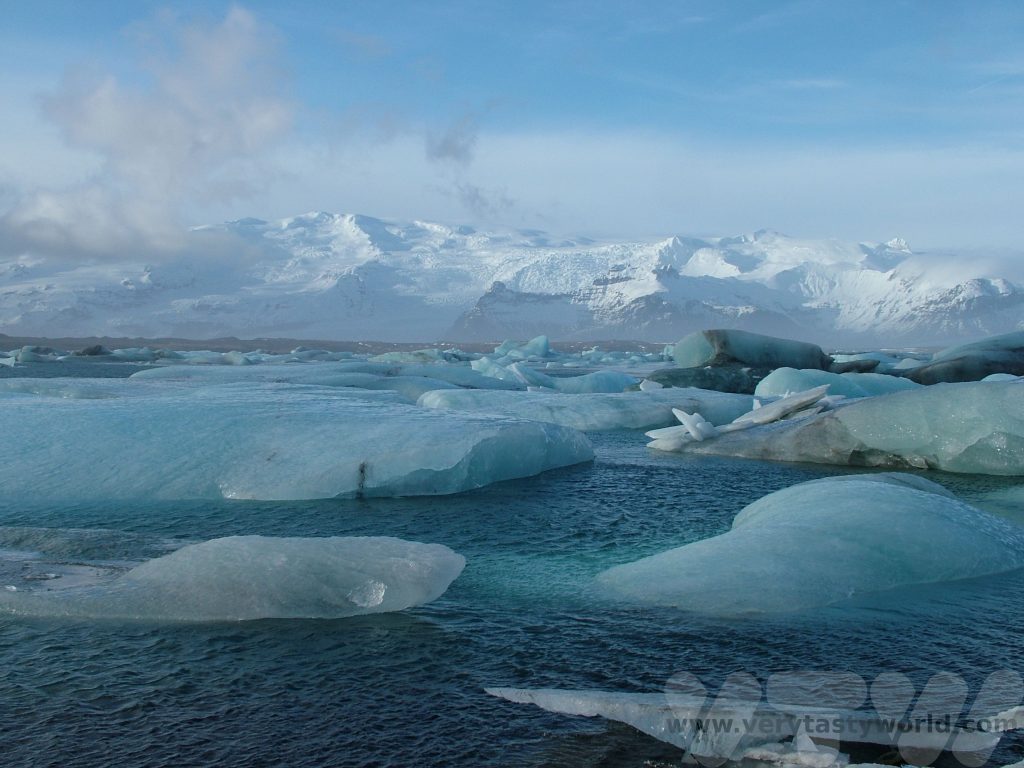
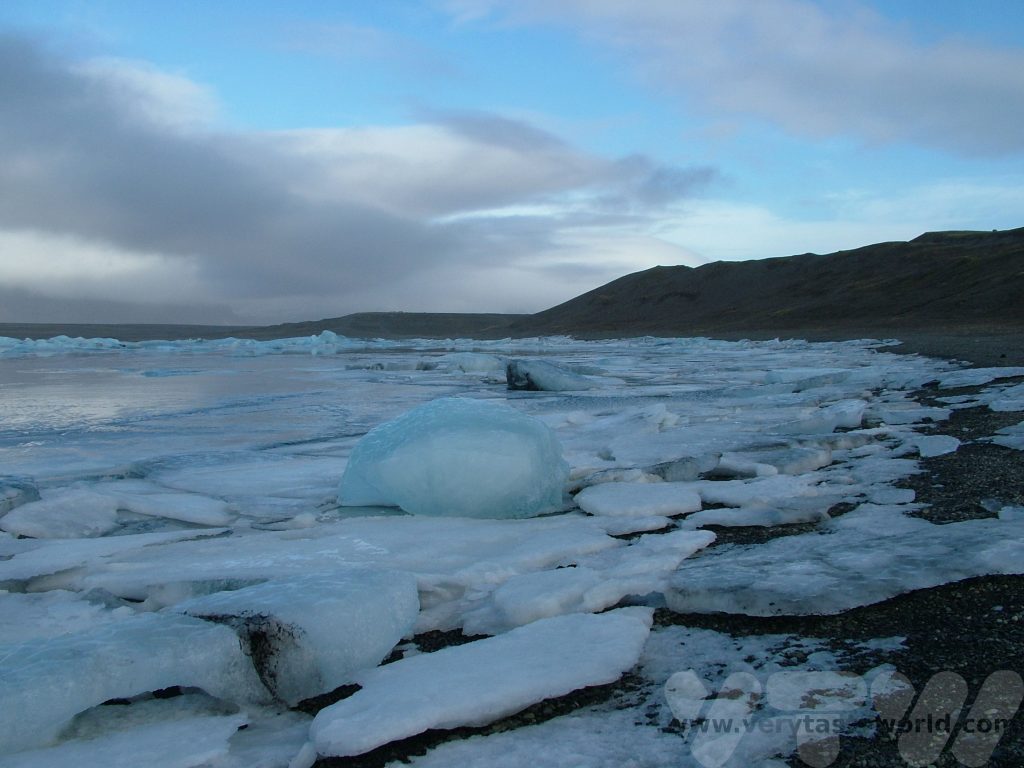
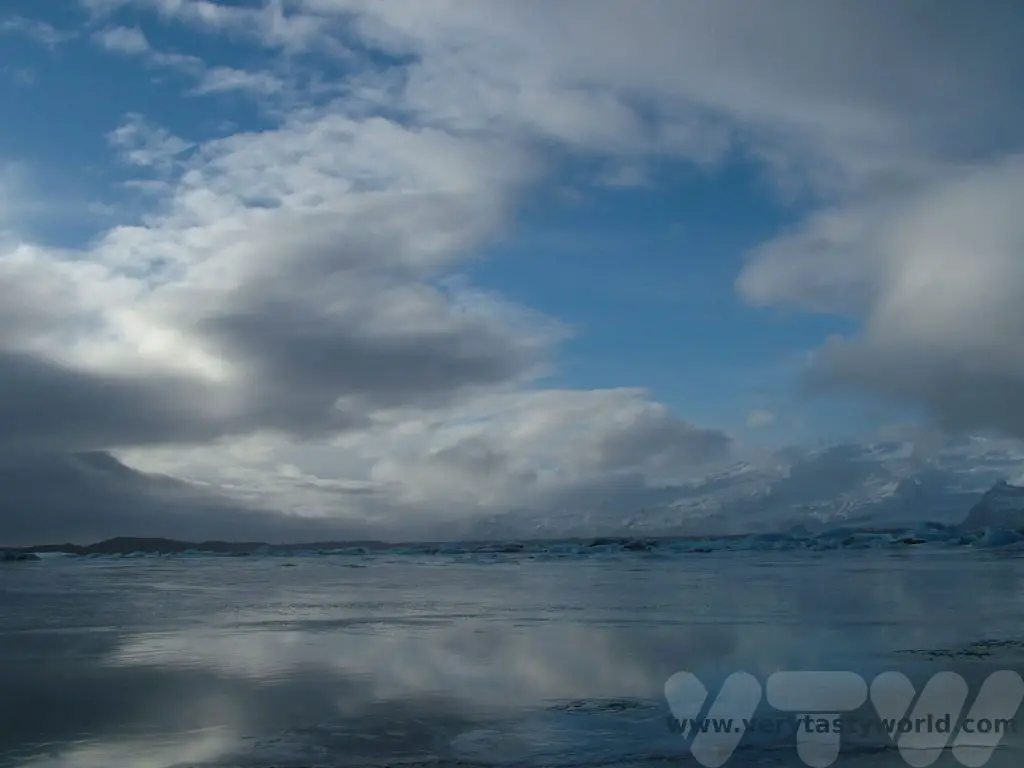
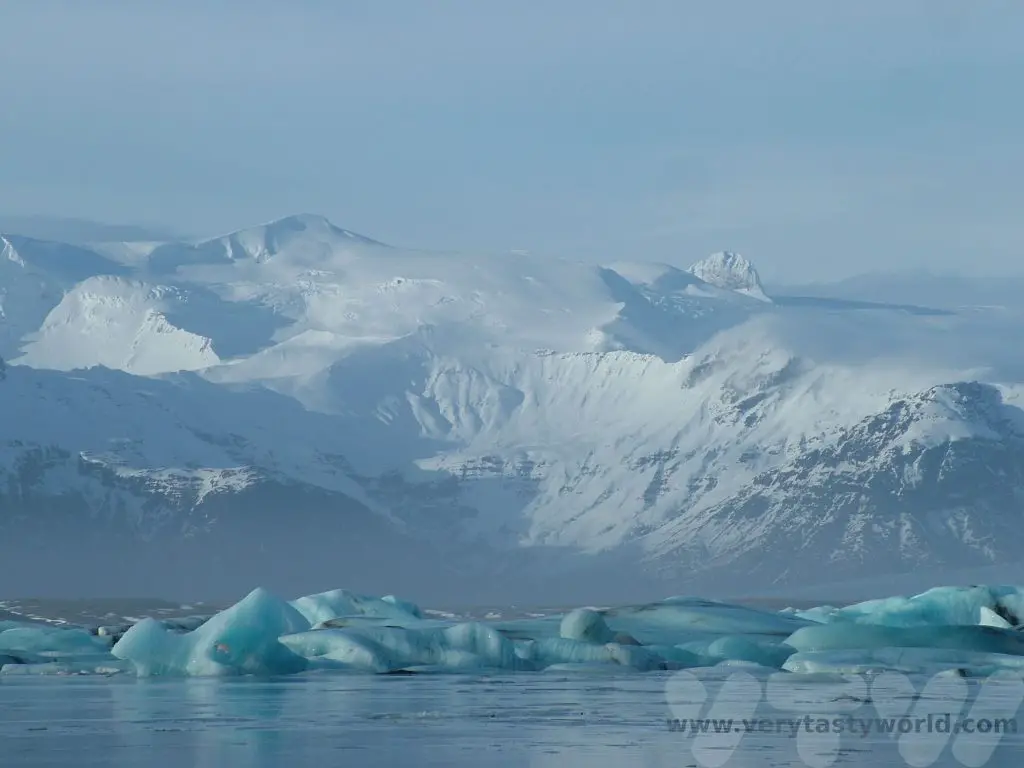
If the scenery looks familiar you may have seen this lake in the James Bond films Die Another Day and View to a Kill, as well as Tomb Raider. If you visit in the summertime it is possible to do a boat trip on the lagoon. This wasn’t operational when we visited but we were able to take a long walk along the stunning shoreline.
Because it was winter we had the place to ourselves, except for a few local seals.
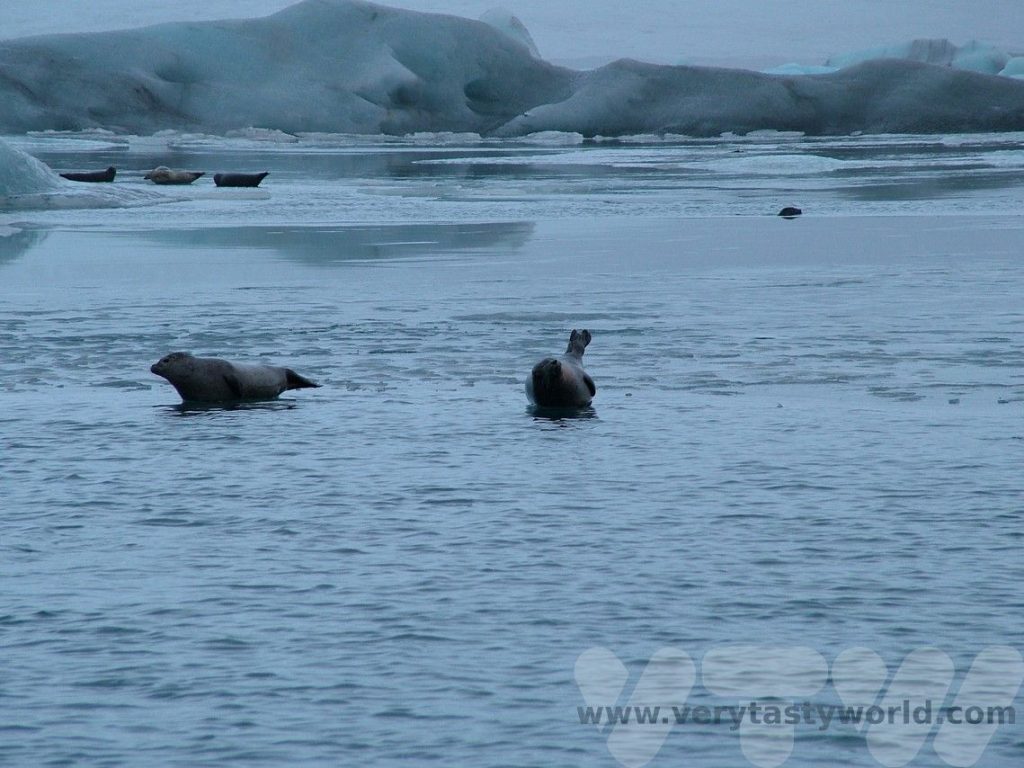
Over time the icebergs melt, serenely crossing the lake towards the shoreline before slowly heading out to sea.
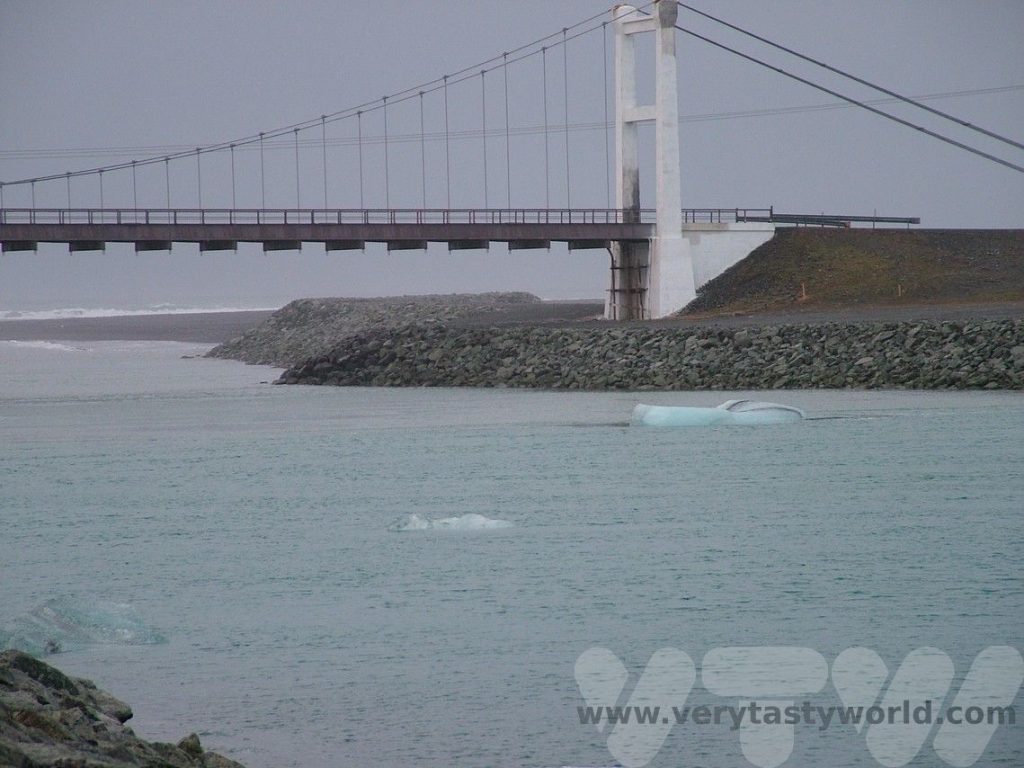
Lobsters in Hofn
Later in the afternoon we headed towards Iceland’s Hofn, which is famous for its lobsters. It’s a quiet town with a natural harbour where you can see the fishing boats come into shore.

We found a restaurant which offered delicious local lobsters (actually langoustines). Iceland is an expensive country to visit and restaurant meals are no exception. Hofn is one of the best places to eat good value lobster.

Day 5 Retracing Our Route
It was time to retrace that ‘smiley’ route and head back towards Reykjavik. We had skirted the stunning black beaches of Vik, the southernmost town of the country on our way through, so we made a point of stopping at this tiny town. It was a dark and moody day that showed off the amazing basalt sea stacks located just off the shore.
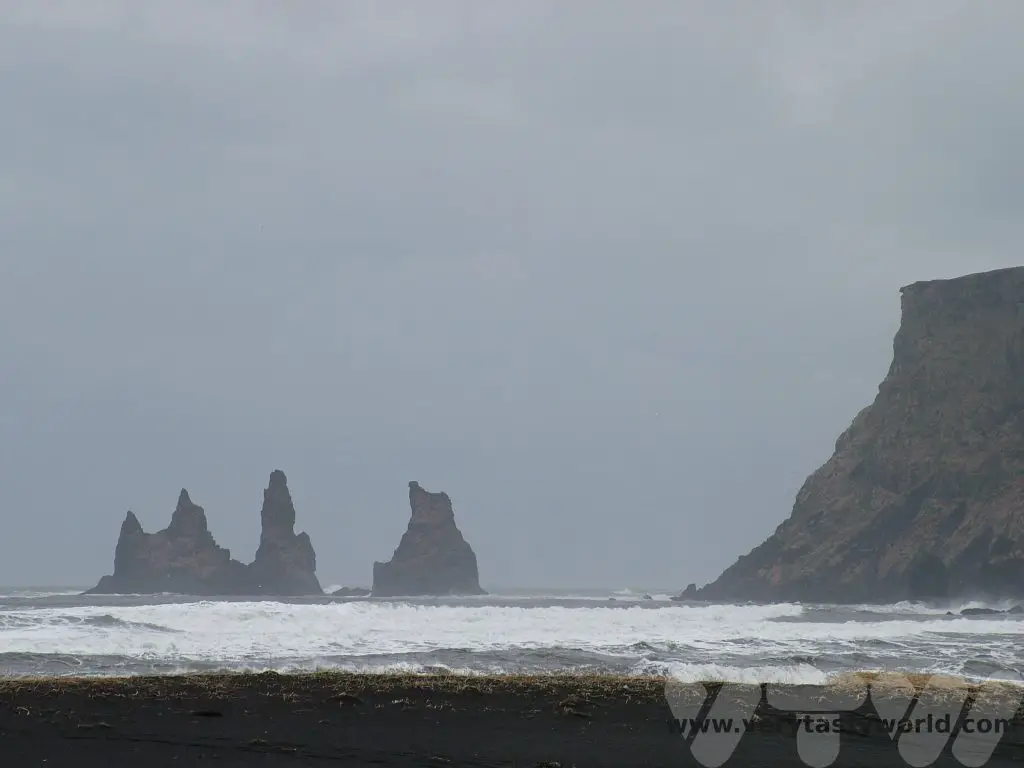
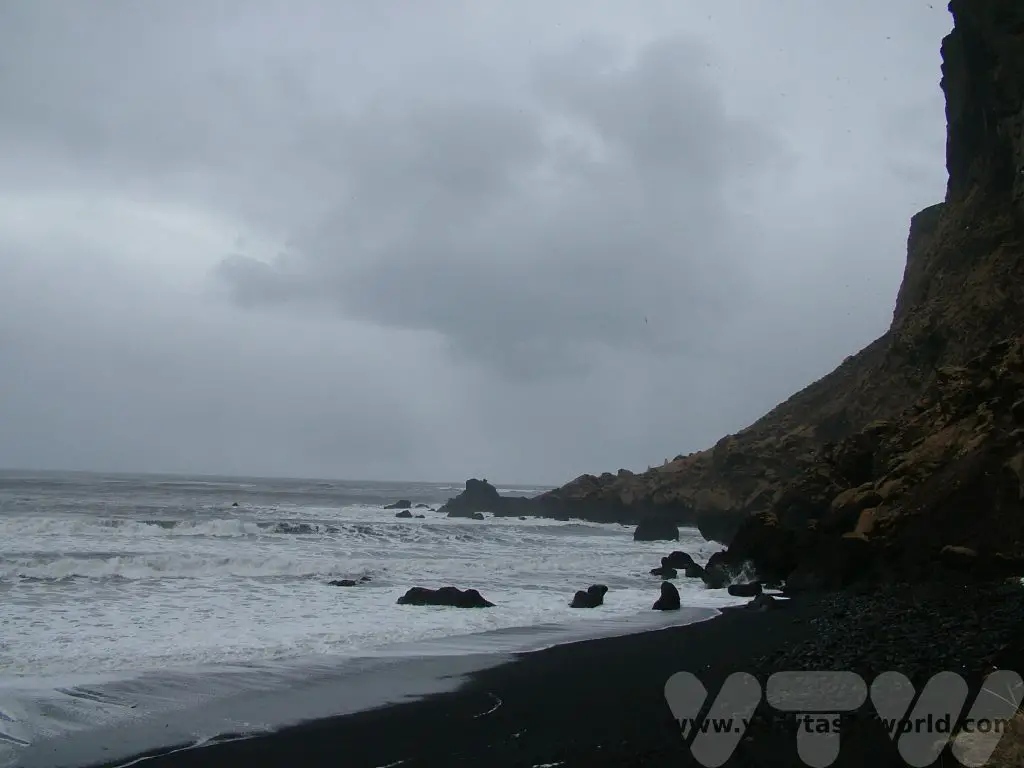
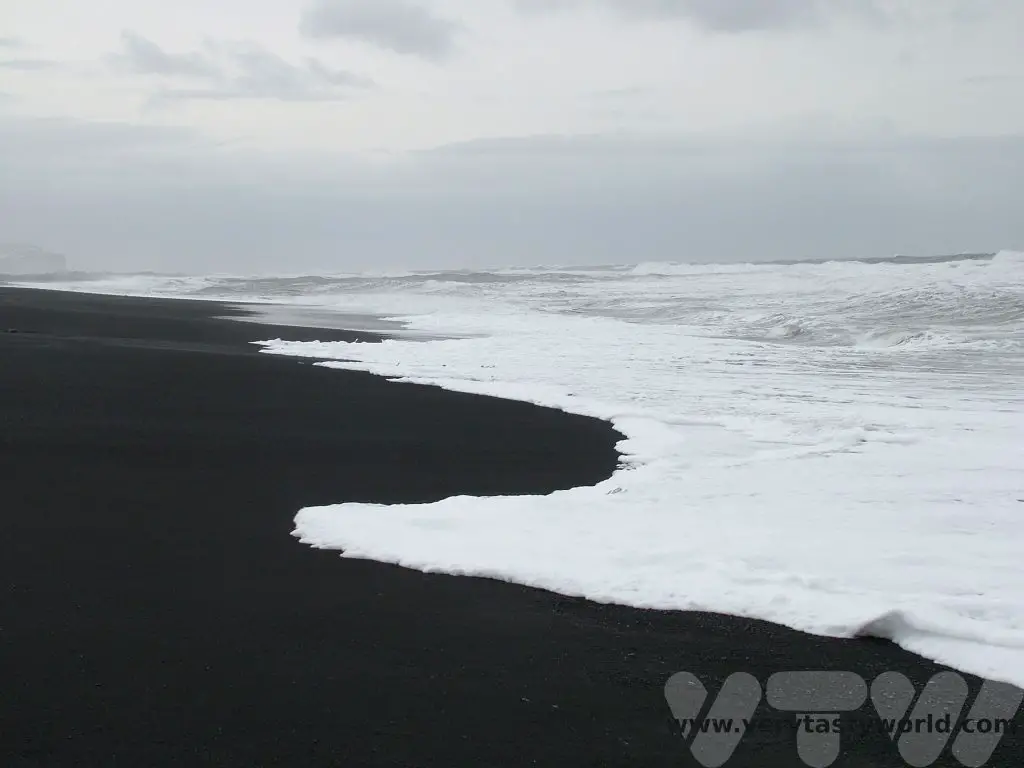
The Myrdalsjokull glacier is located close by and it is possible to go snowmobiling on it. This is highly recommended as it’s great fun. It was another grey day and as soon as we were on the ice, the weather closed in. We were with a reputable company who were navigating via GPS so even though we were snowmobiling in a white-out, we were safe at all times. It was a very strange experience – not being able to see anything in any direction. But we still enjoyed the thrill of speeding across the ice on the snowmobile, following the tail-lights of the vehicle in front.
We spent another night in Hveragerdi.
Day 6 Return to Reykjavik and Thingvellir National Park
On our journey back to Reykjavik we had a day to explore Thingvellir National Park. It is Iceland’s only mainland UNESCO heritage site and is hugely important both geologically and culturally. Unsurprisingly it one of Iceland’s most visited sites. An advantage to travelling in winter is that the area has fewer visitors at this time of year. (N.B. Thingvellir will be signposted ‘Þingvellir’ – the ‘Þ’ is a ‘th’ sound in Icelandic.)
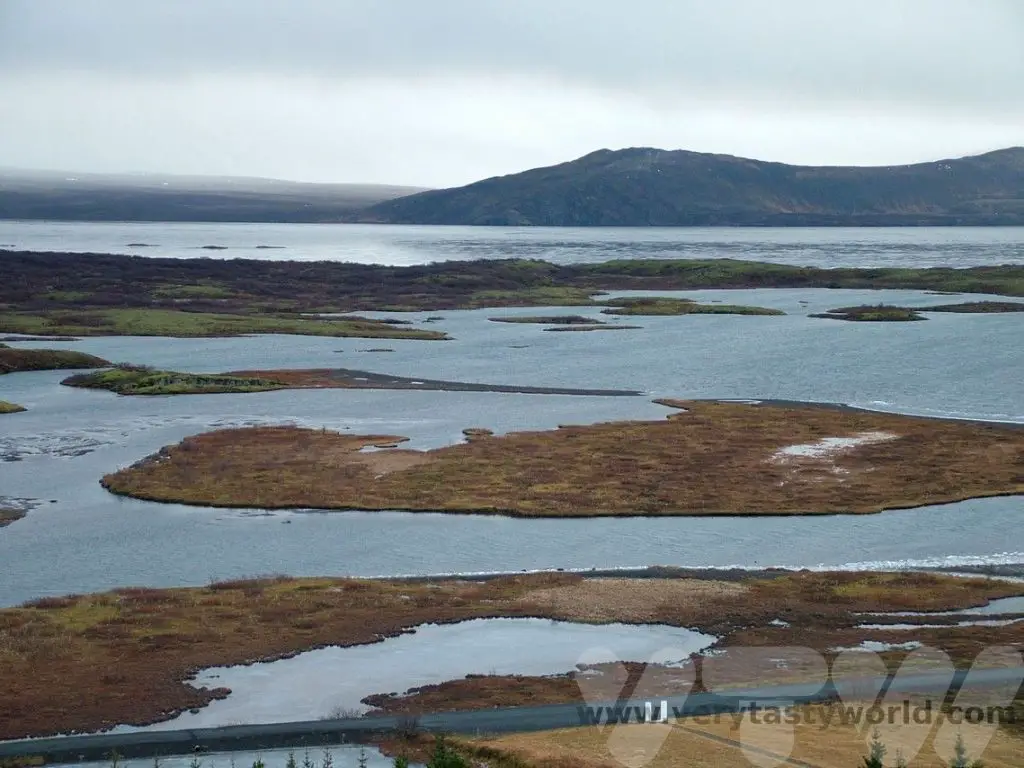
The Mid-Atlantic ridge is a volcanic belt that goes straight through Iceland, running from the Arctic Ocean southwards along the entire Atlantic. Thingvellir lies on the boundary between two tectonic plates – the Eurasion and the North American. This means you can walk between two continents.
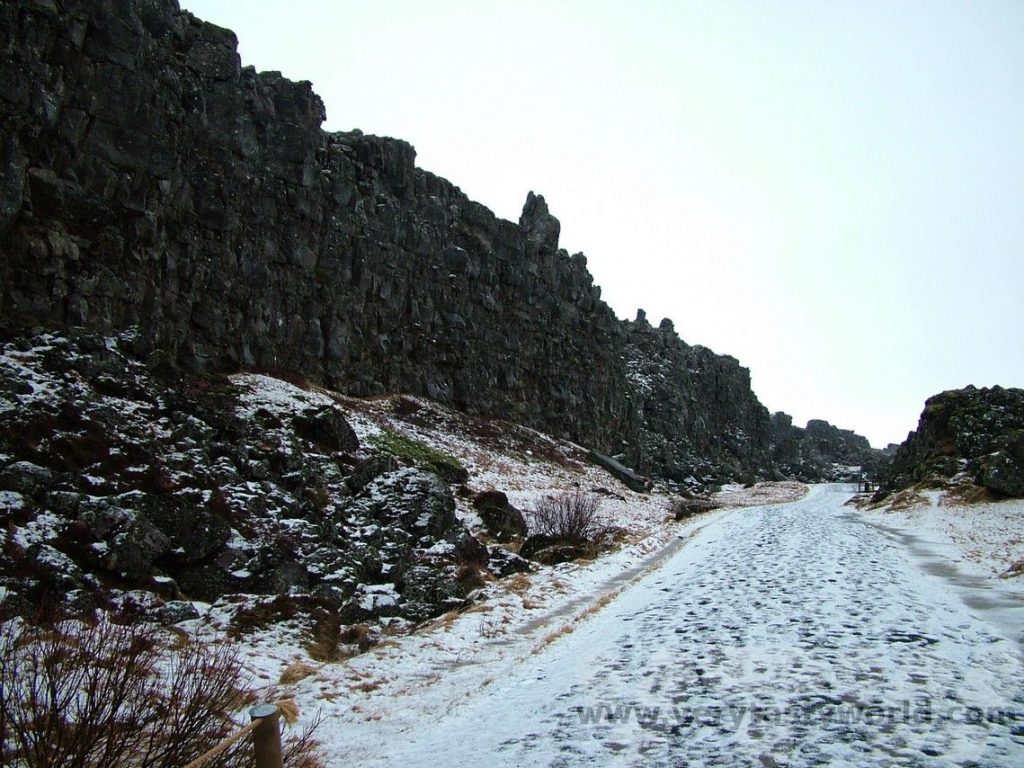
The plates are moving – very slowly – apart. You can see lots of canyons and fissures across the site. Almannagjá is the most notable and quite dramatic.
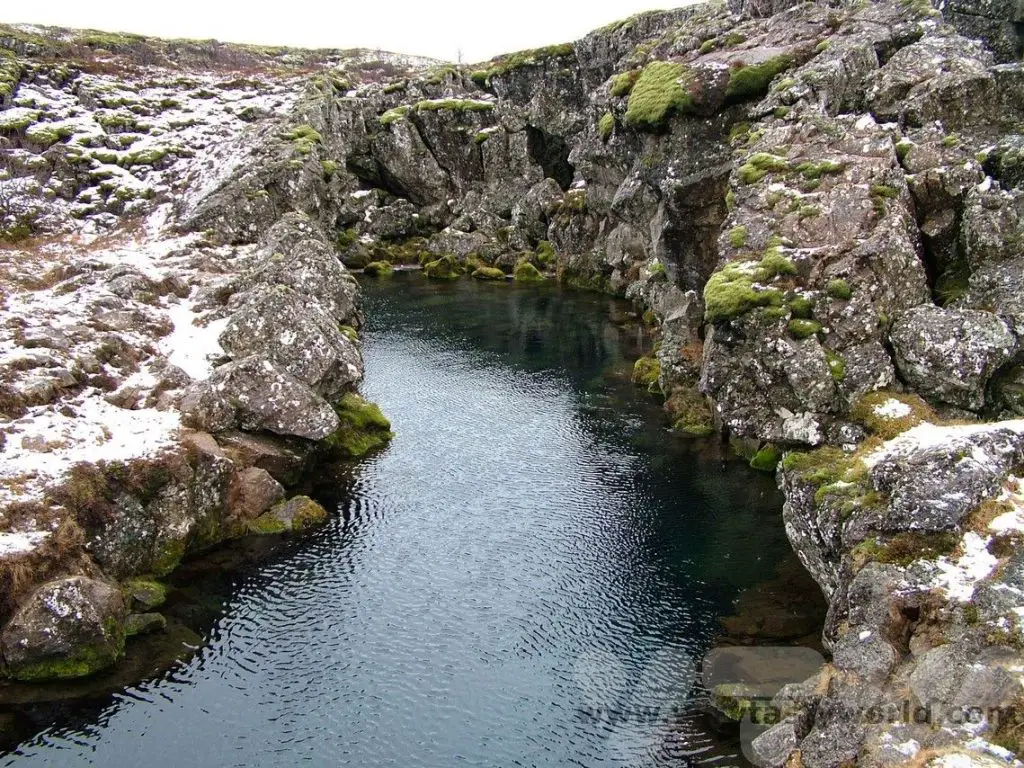
This area is also the place where the Icelandic parliament, Alþingi, was established over 1000 years ago. The name Thingvellir means ‘Assembly Plains’, a fitting title. The Icelandic Commonwealth started in 930CE and ran up until 1262. The Law Speaker, who memorised all aspects of the law, presided over the Lögrétta, the Law Council, meetings. The Lögberg, or Law Rock, was the central point for the legislative assembly, and anyone could speak and discuss issues from this place. The parliament continued to assemble until 1798.
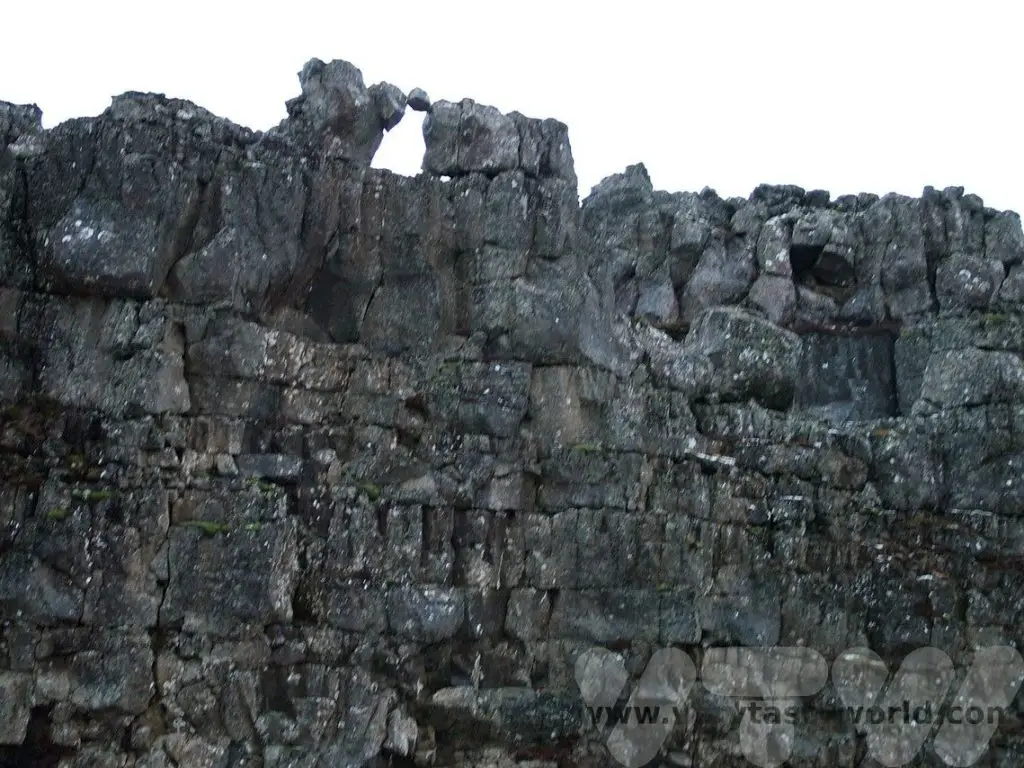
There is a visitor’s centre and plenty of hiking to enjoy. It’s a beautiful area, located on the shore of Iceland’s largest lake Thinvallvatn. The river Oxara runs through the park.
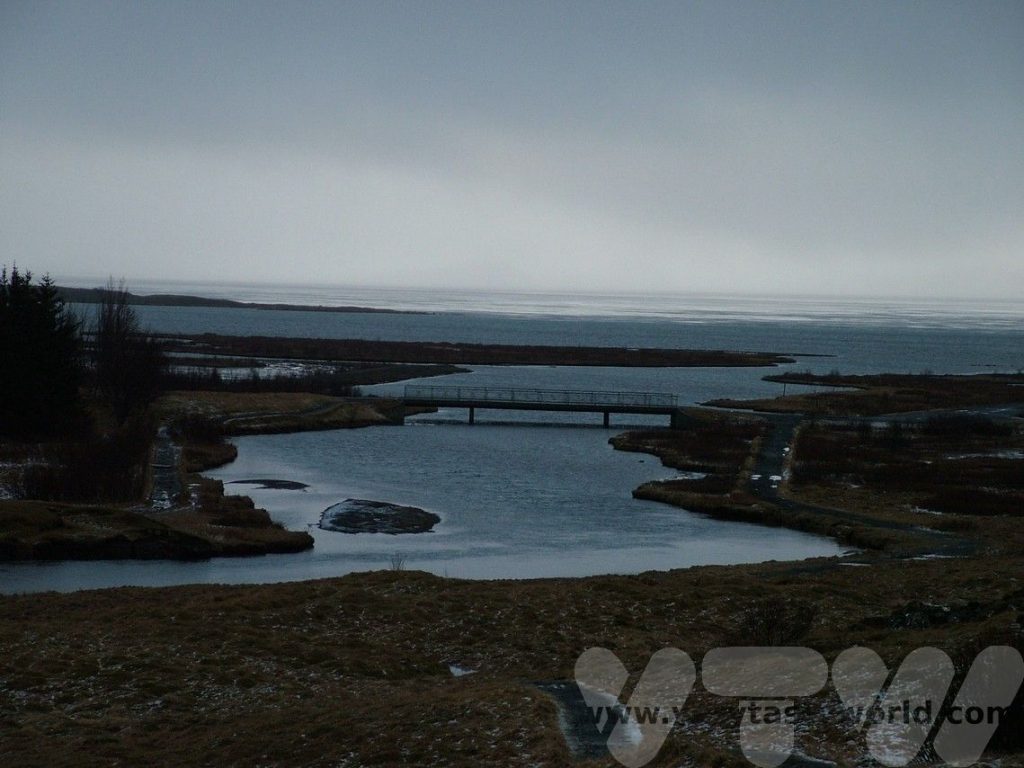
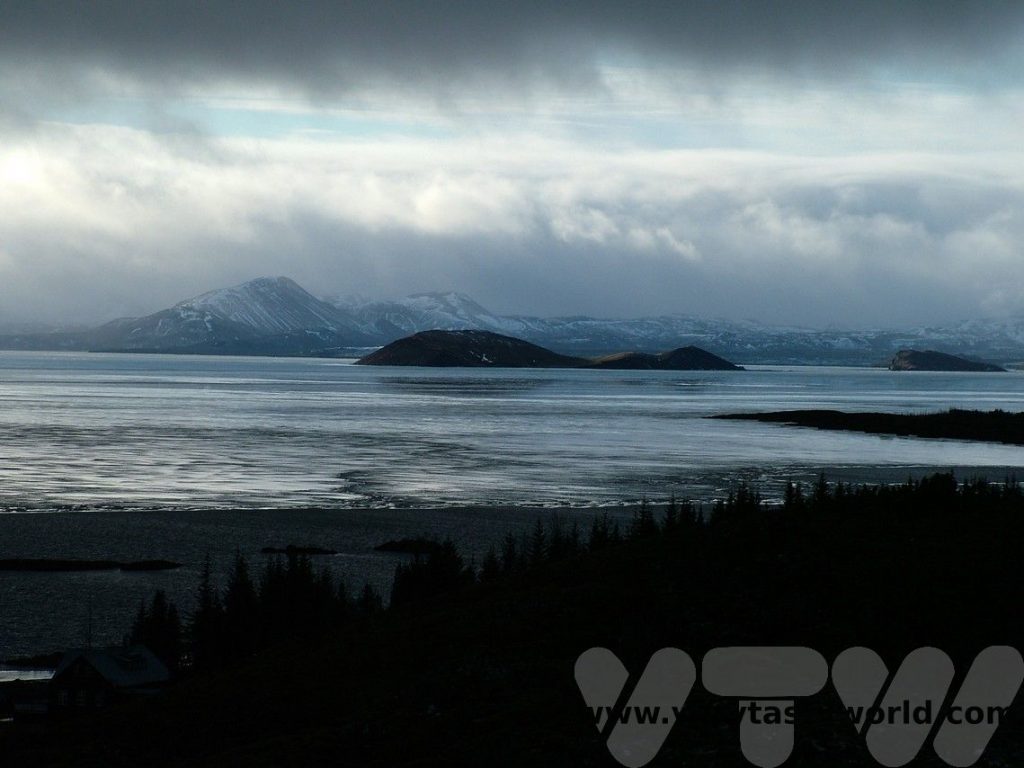
Day 7 Reykjavik and A Quick Bathe Before the Flight Home
We spent the night in Reykjavik and had some time in the morning to walk around.
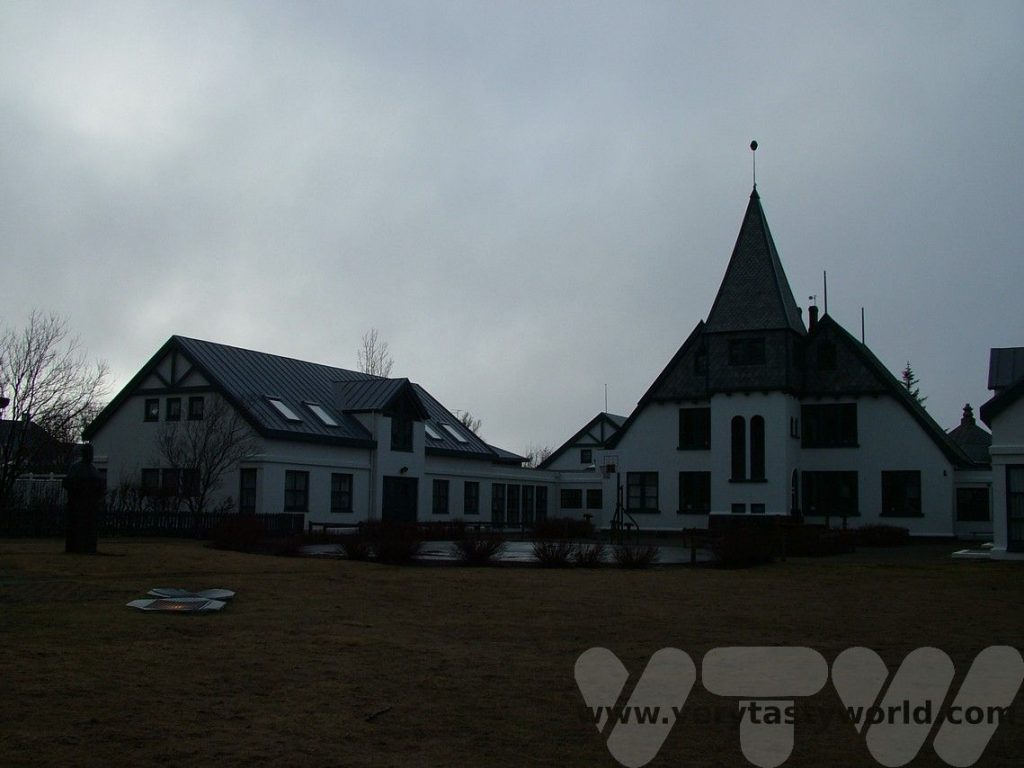
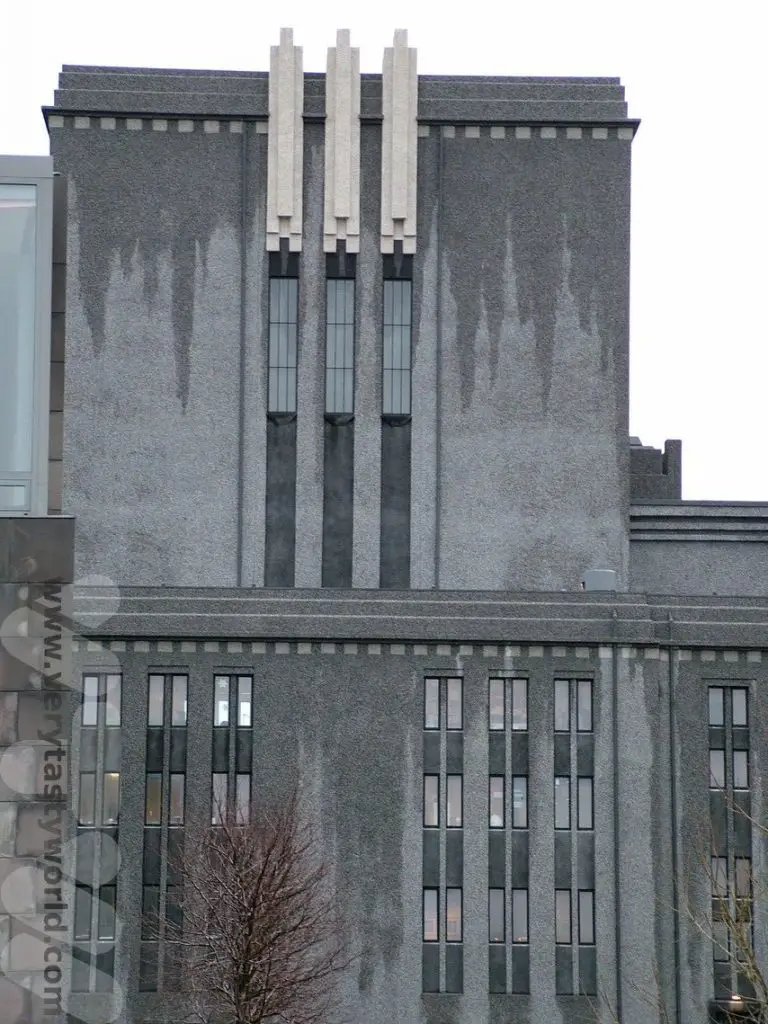
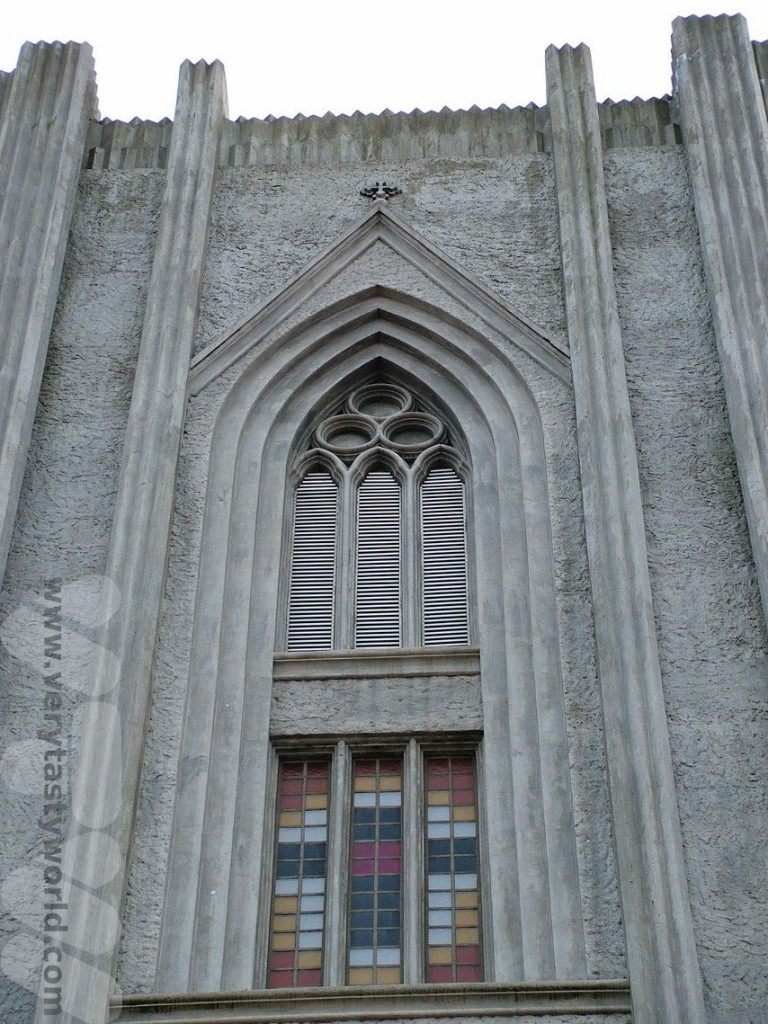
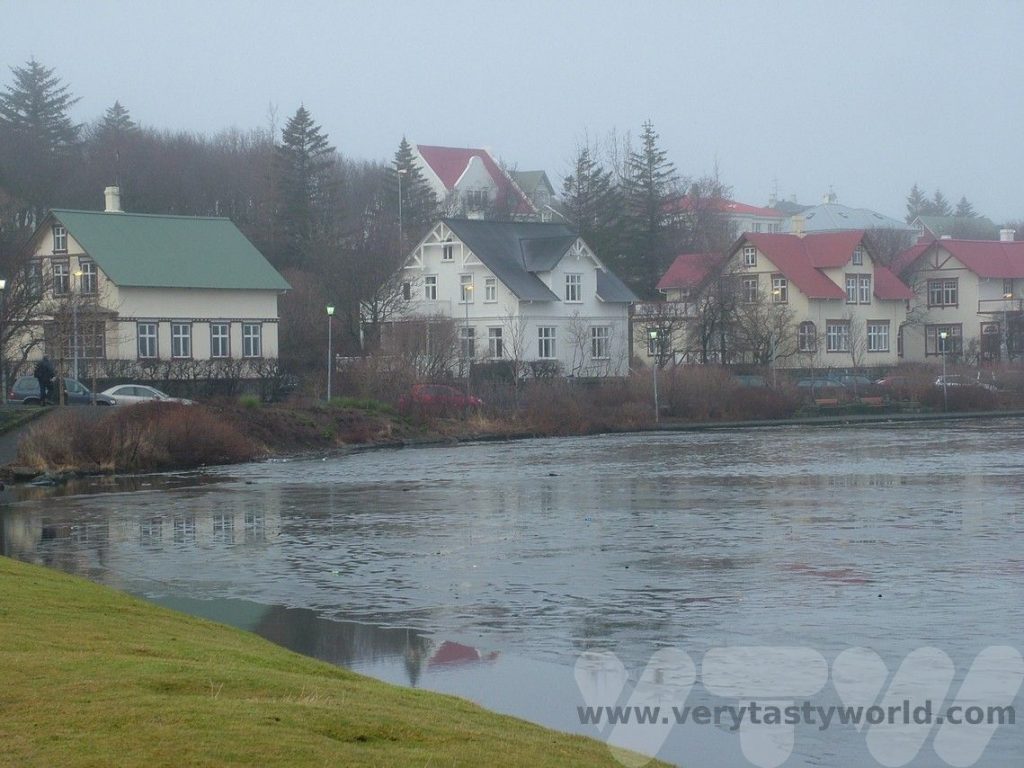
One of the city’s most iconic monuments is Gunnar Arnason’s Sun Voyager. It is often thought to be a viking ship. But its intention was as a dream boat – a voyager to places undiscovered and a tribute to the sun.
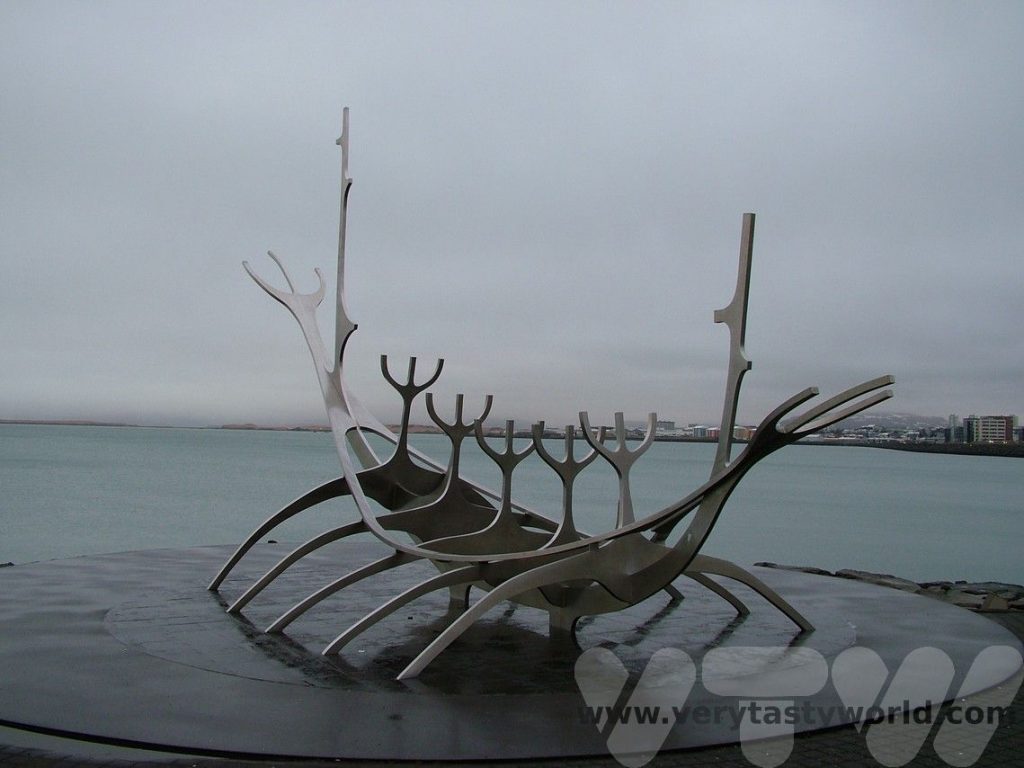
We also visited the Perlan – a fantastic space that features all sorts of exhibitions about natural Iceland. It even has an ice cave!

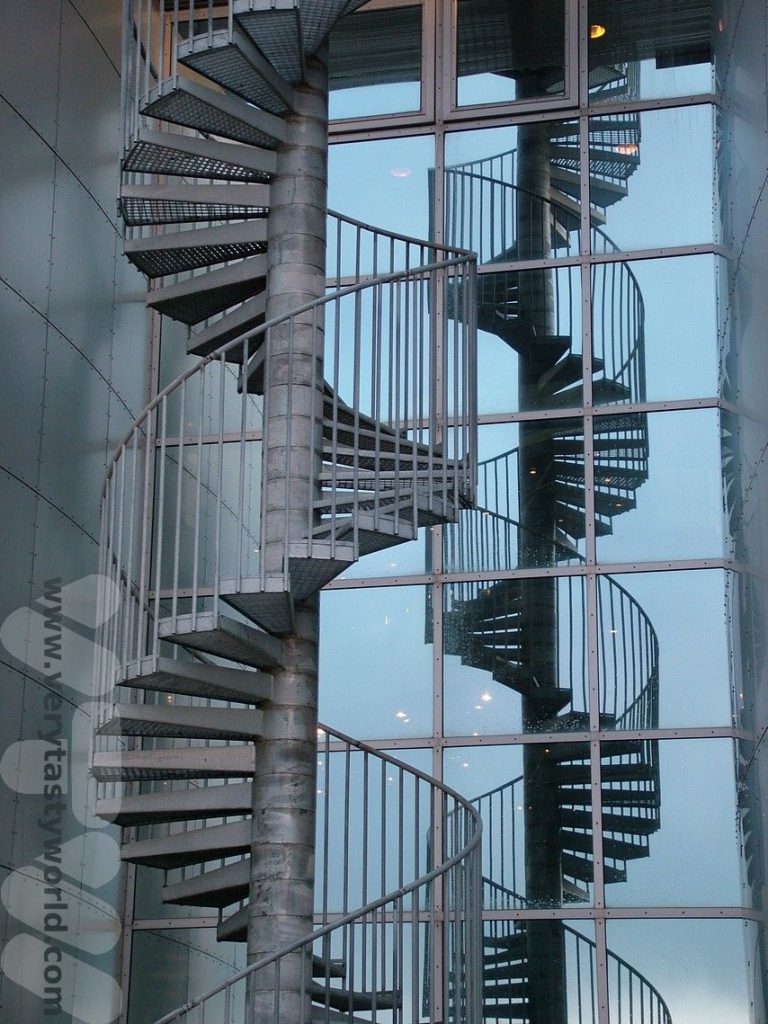
The Obligatory Trip to the Blue Lagoon
The Blue Lagoon is located very close to Keflavik airport and, as we had a flight leaving in the late afternoon, it gave us the perfect opportunity to bathe before heading home. If we’re completely honest, we weren’t that taken with the Blue Lagoon. Sure, it looks stunning and it is nice to bathe in lovely warm water (even in winter) but the prices are really expensive and it was surprisingly crowded when we visited. There are all sorts of packages with spa style treatments available but – again – they will be expensive. Like the Dead Sea in Jordan the mud is supposed to do wonders for your skin.
There are lots geothermal pools in the area so we were able to take photos of these to show the beauty of the blue water which is undeniably gorgeous.
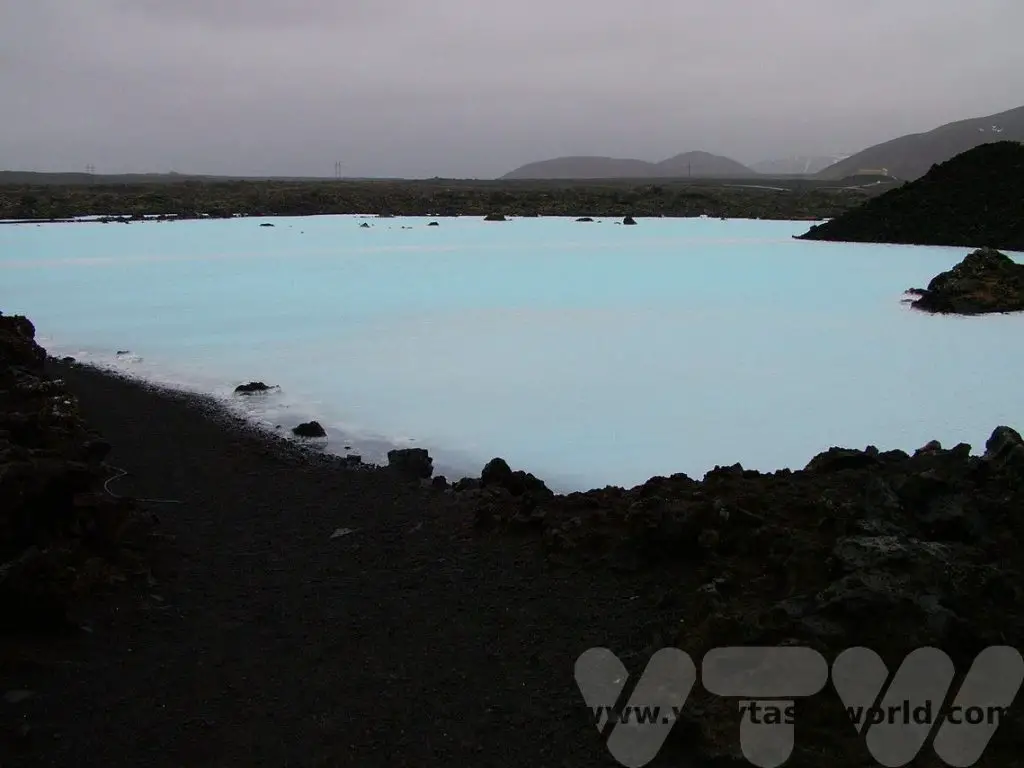
What to Pack for Winter in Iceland
Even though temperatures are milder than you would expect, winter in Iceland can still be fairly cold. We recommend packing layers so that you can add or discard depending on how warm it is.
Waterproofs are essential. We took waterproof thermal jackets which provided warmth as well. (Although we were often wrapping them around our waists on a long hike as we warmed up.)
Sturdy shoes/Walking boots. We did a lot of hiking along paths that were icy or muddy, so needed waterproof shoes. We recommend wearing your walking shoes on the plane and packing any other shoes – it keeps the weight of your luggage down and means you won’t lose the important shoes if your luggage gets lost.
Don’t forget your swimsuit gear and towel, especially if you plan to visit the Blue Lagoon. A number of our hotels also had thermal swimming pools which, while not as pretty as the Blue Lagoon, offered lovely bathing. It was particularly nice to swim in a warm pool in the cold night air.
Did We See the Northern Lights?
Another reason to travel to Iceland in winter is for the possibility of seeing the Northern Lights. It has long been an ambition of ours to see the Aurora Borealis but, as you can surmise from our photos, the weather was pretty cloudy during our visit. We didn’t see the lights, which was a shame, although it didn’t stop us from having amazing time.
One tip that might be of use: If you are flying to Iceland at night (and it gets dark early at this time of year), get a seat on the side of the plane that faces north. (If you are travelling from the UK/Europe it would be on the right side, if travelling from the US, it would be on the left). On our outward trip the pilot announced that the northern lights could be seen and loads of people rushed to have a look but, well, you can guess which side of the plane we were seated. Hey ho. Can’t win ’em all..
Related Posts You May Enjoy

A Day in Ronda
Ronda in Andalusia is a charming place to visit. It is most famous for being a town split in two – located on either side of a deep chasm, El Tajo, through which the Guadalevín River flows. It is a magnet for daytrippers – at just 60km from Marbella and 100km from Malaga, both on the Costa del Sol, and around 128km from the wonderful city of Seville. Here’s our guide for spending a day in Ronda.
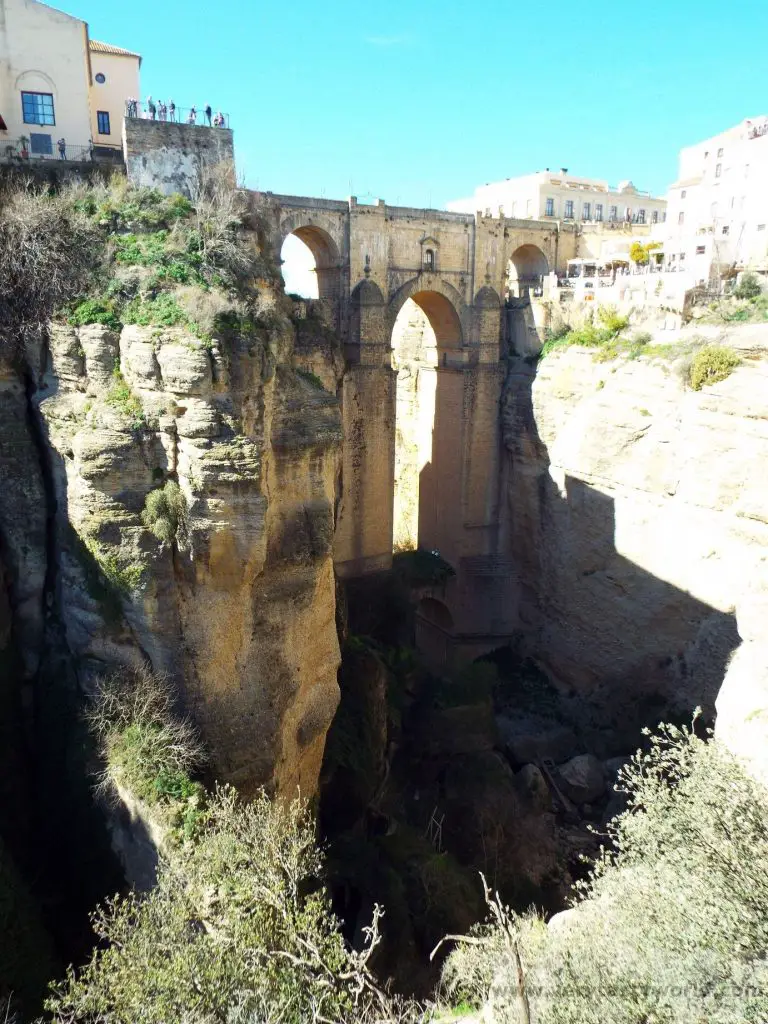
History of Ronda
Ronda is one of the oldest towns in Spain with settlements known to have dated from the Neolithic period. Celtic people arrived in the 6th Century BCE, naming the town Arunda. It was invaded by the Romans and became an important city in the region but fell into decline following the fall of the Roman Empire.
When the Moors, led by Prince Musa Ben Nusayr, conquered Spain in 711 the invaders recognised the strategic importance of its location; Ronda flourished as a city once more and became the capital of one of the five districts in Andalusia. The Moorish influence on the buildings remains to this day. Eventually Ronda became a focal point of Christian armies trying to recapture Southern Spain in the early 13th Century and the conquest of Ronda resulted in Christian knights establishing themselves in the city and replacing mosques with churches. By 1570 the city had become a completely Christian town.
It wasn’t until the 17th century that the major bridges were constructed across the town’s mighty gorge. The Old Bridge – Puente Viejo – was built in 1616. And the Puente Nuevo was completed in 1793, part of a series of buildings constructed in the town, including the famous bullring.
The city was occupied by the French in the 19th Century which resulted in hardship for many of the citizens. It is thought that legends of the guerrilla fighters, known as bandaleros, originated during this era. (There is a museum dedicated to bandits in the town.) Similarly, in the 20th Century the city also suffered significantly during the Spanish Civil War. Apparently the chamber above the arch on the main bridge was used as a prison and torture chamber by both sides, some unfortunate prisoners being thrown to the rocks in the gorge.
These days the town is thriving and is a hugely popular with tourists.
Jardines de Cuenca
The Puente Nuevo Bridge is the town’s most popular attraction and it’s easy to see why. It’s possible to walk down to the hillside to the Jardines de Cuenca, a serene set of gardens that you can wander through and get a spectacular view of Puente Nuevo and the gorge. But don’t forget to turn around and get some shots of the lovely countryside. We were lucky to visit in early spring, when the blossom was just coming out.
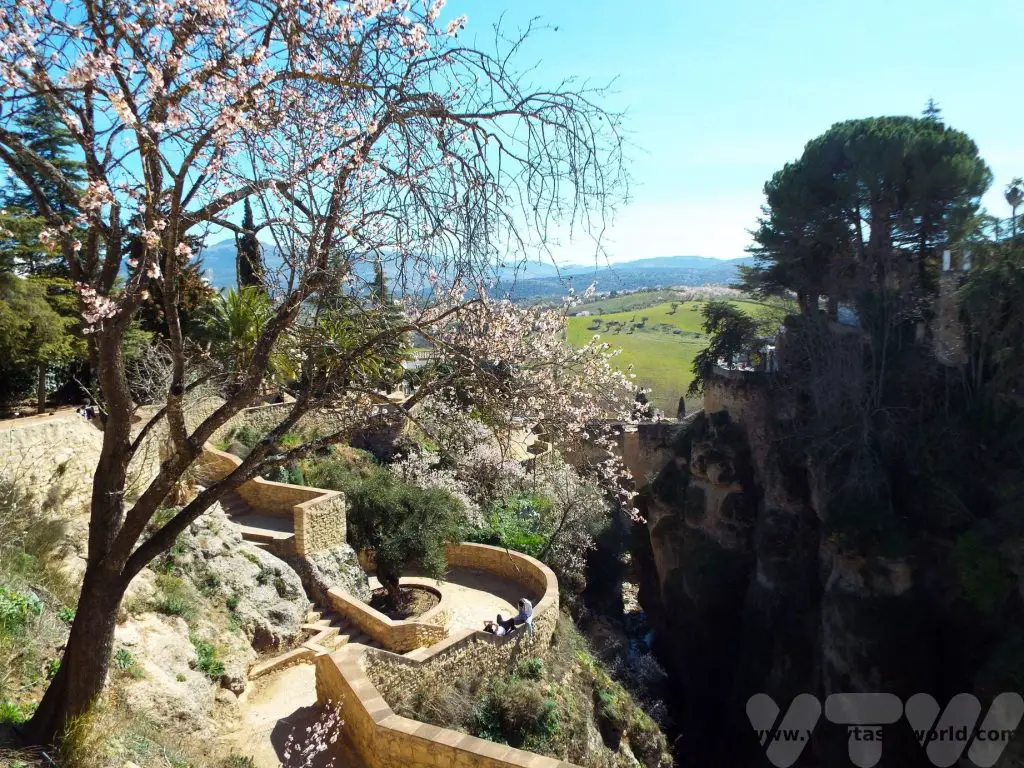
If you want to stay in a hotel or eat at a restaurant with a view of the gorge and bridge, the prices are likely to be higher than in other parts of Ronda. Although the dramatic bridge Puente Nuevo is the main attraction of the town, there are two other bridges in Ronda and both of them are lovely. They are located further down the gorge.
Puente Arabe (also known as the Roman bridge) – is the smallest bridge. Its foundations are Roman but it was rebuilt by the Moors. It is located close to the Arab baths.
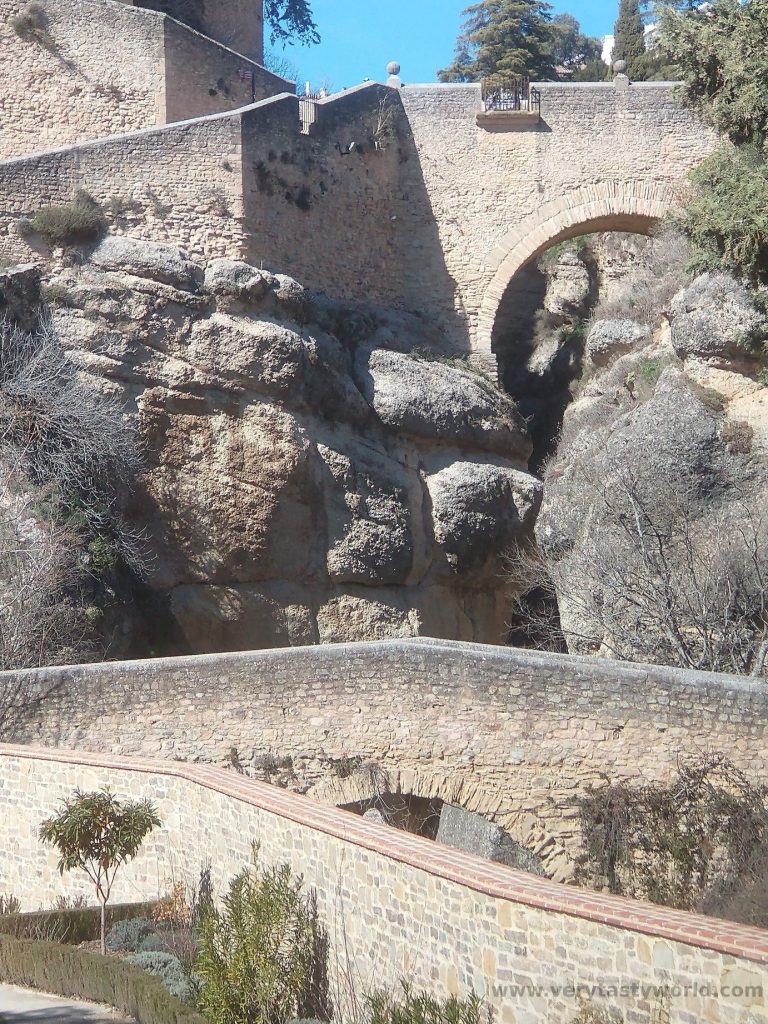
Puente Viejo is the “old bridge”, a single arch bridge constructed in the 16th Century.
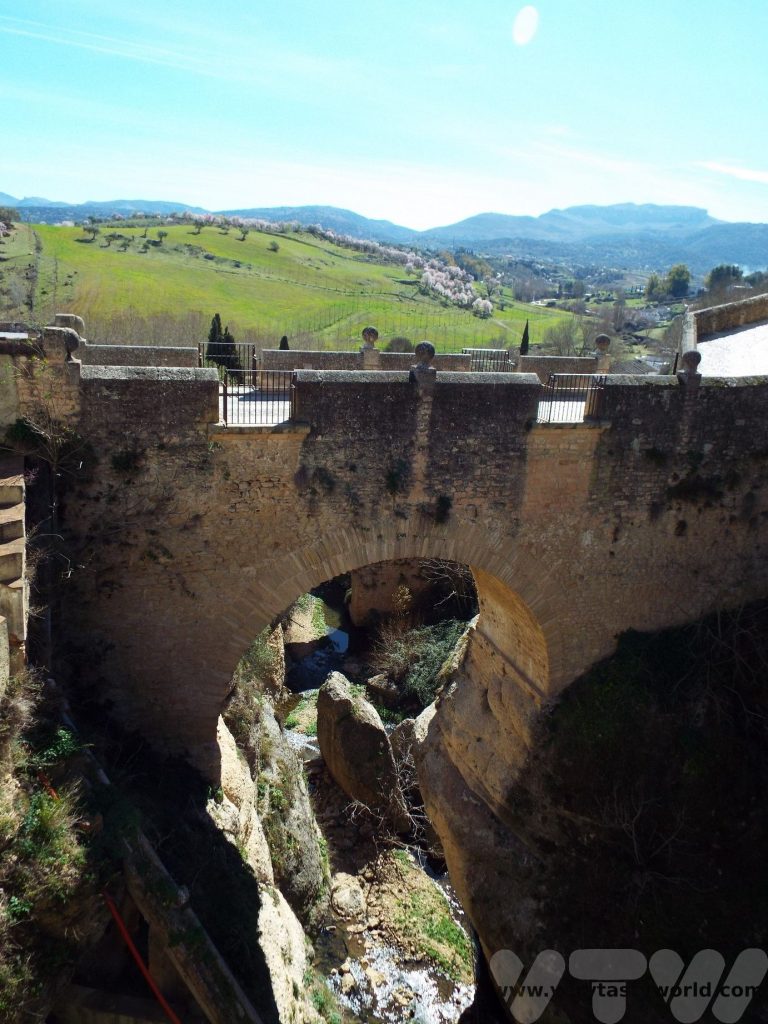
Puente Nuevo is the “new bridge”, even though it was completed over 200 years ago. The interior above the main arch used to be a prison (you can imagine it being very secure!), was briefly a bar and is now a museum dedicated to the history of the bridge.
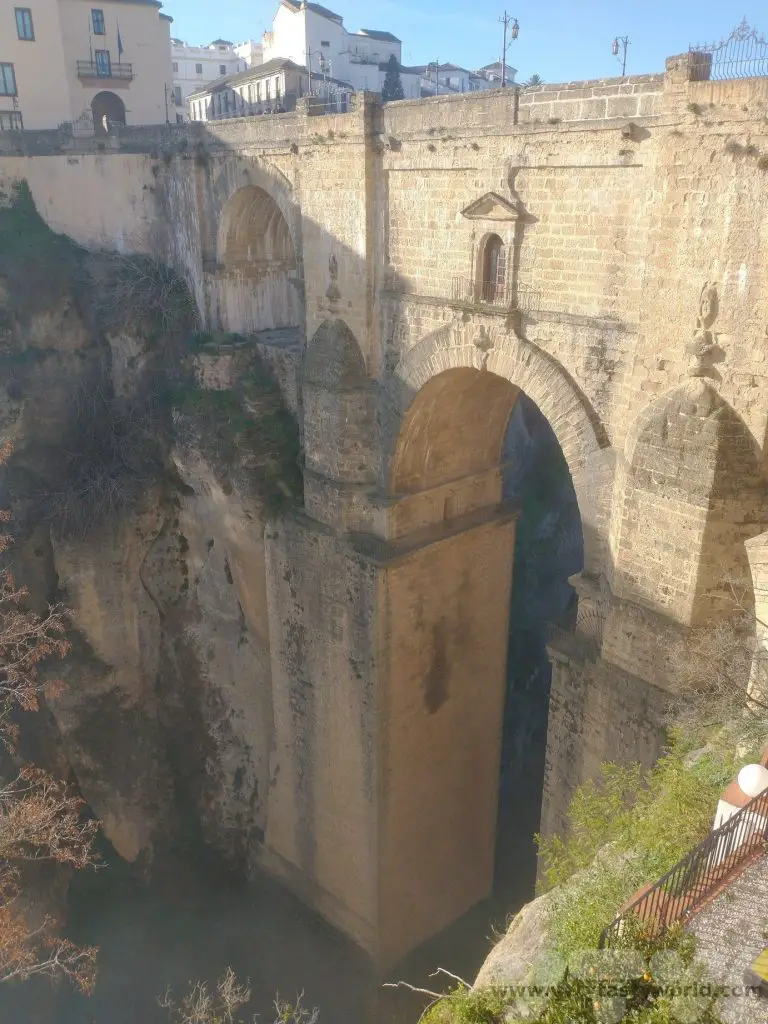
The city walls can easily be reached from the Roman Bridge and it is possible to walk along them to see fantastic views.
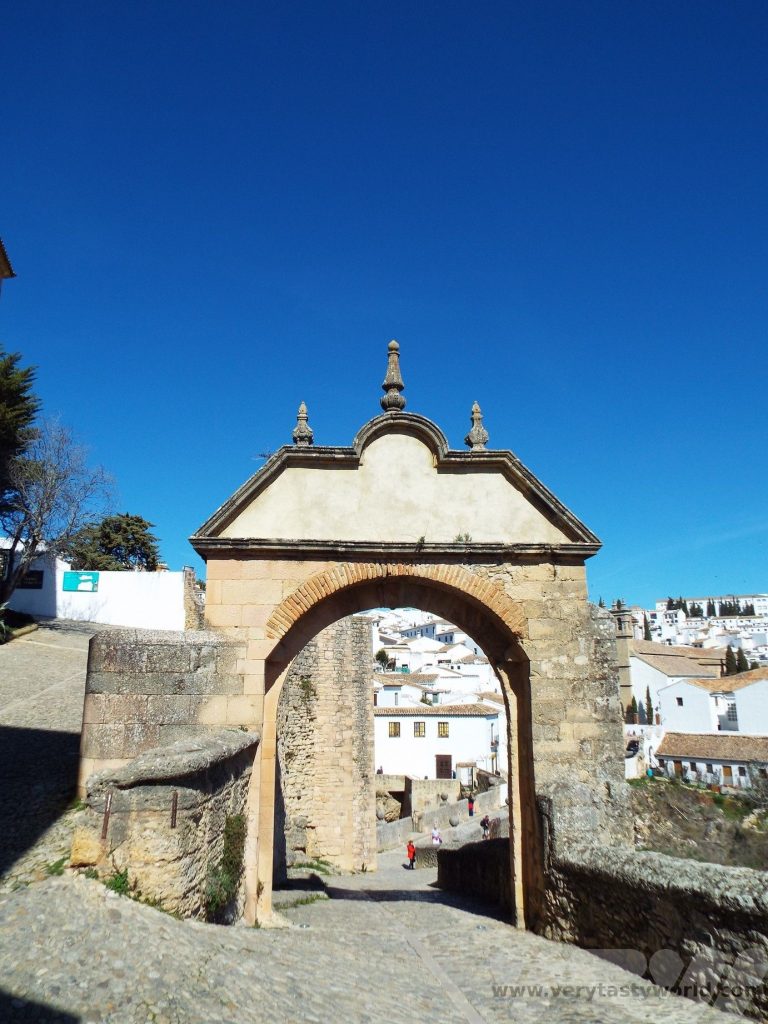
The Arabian Baths
The Arabian Baths are well worth visiting. They are located at the original entrance to Ronda, close to the Roman Bridge. They were built in the 13th Century by the Moors, who were Muslim, and hence placed a very great importance on cleanliness. But they weren’t just for cleaning, they also offered a social space where people would meet as well as bathe.
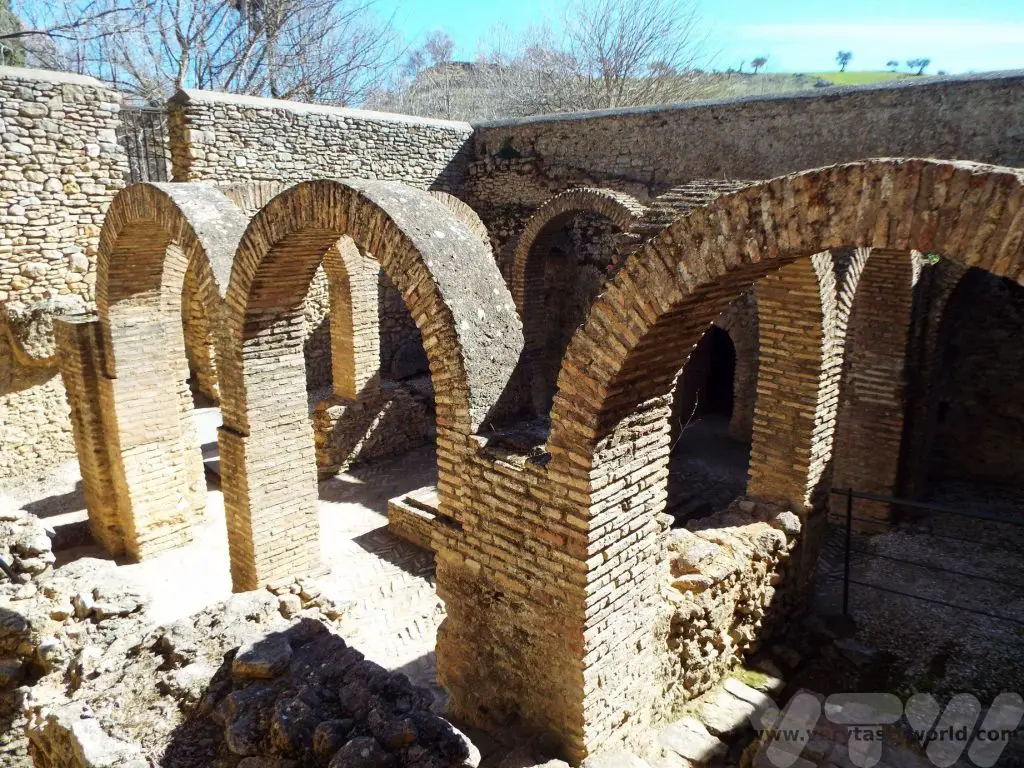
The baths are located next to the river to ensure a constant water supply, and were constructed partially underground in order to control temperatures. There are many similarities with the design of Roman baths.
The baths here are remarkably well preserved (in fact they are considered to be the best in Spain) and it is possible to visit the cold, warm and hot bathing rooms as well as some of the sanitary facilities. There is a central room with vaulted ceilings and wonderful star shaped skylights.
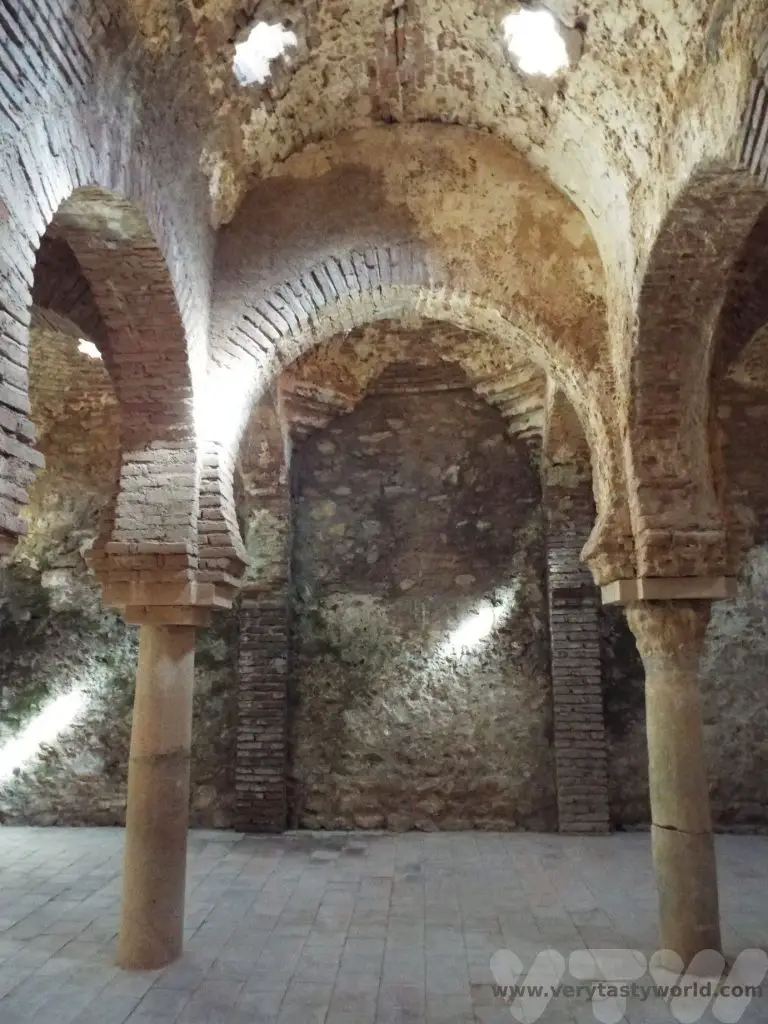
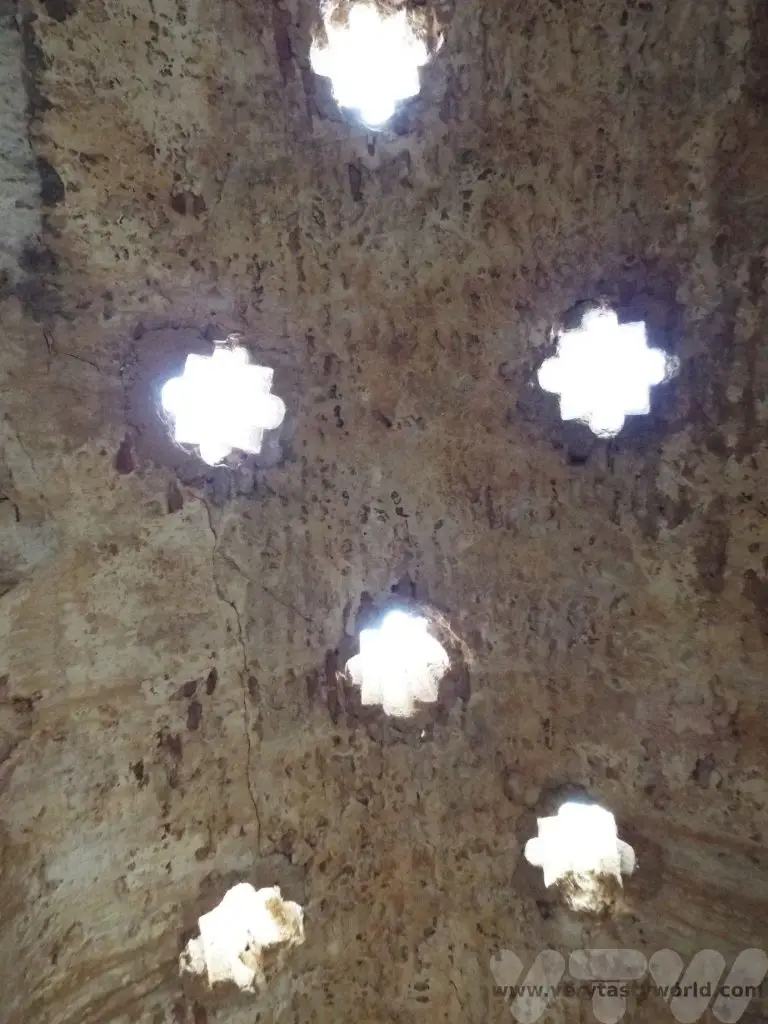
Outside the main baths is the water pump tower, known as a saqiya. A donkey would have turned a wheel to pump water from the river, which would flow along an aqueduct towards the boiler room, which heated the water for the baths.
The Water Mine and Garden Palacio del Rey Moro y La Mina
We found this to be disappointing and not very good value for money. The main attraction of interest was the water mine – a staircase that leads from the top of the gorge down 231 steps that have been carved into the rock to reach the river below. The history is interesting: the mine was the only source of water for the city. In Moorish times, Christian slaves, chained to the steps, were used to carry the water in bags up to the top. When a Christian army invaded the city in 1485 the mine was blockaded and the inhabitants of the city lost their water supply. It is possible to enter the mine and walk down the steps.
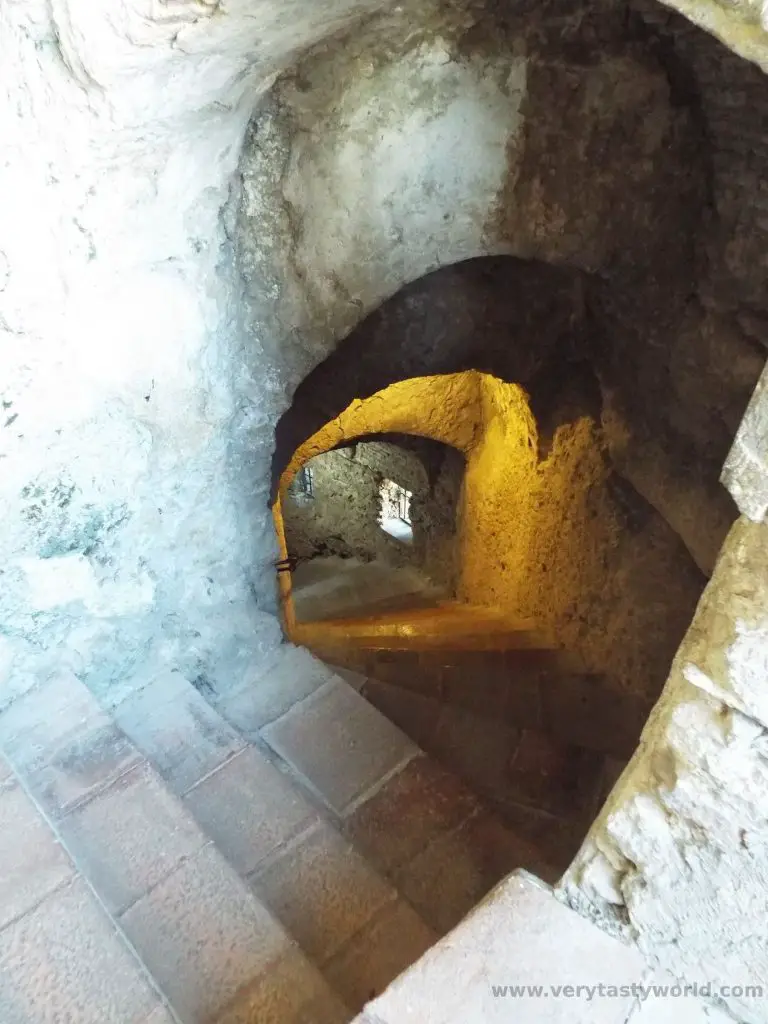
Beware, though, the steps are well maintained at the start but soon get slippery. It would have been helpful if the warnings about steep, slippery steps had been given outside the entrance, before we paid up, and entered the site. And, what goes down must come up, so be prepared for a long climb back.
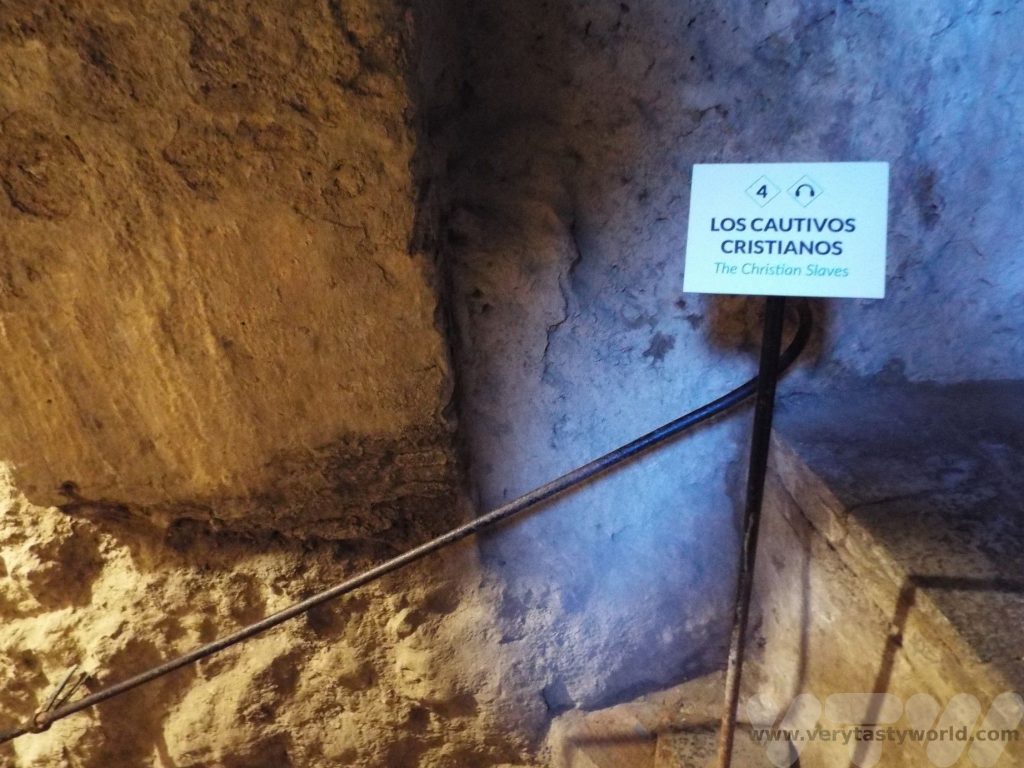
The garden of the Moorish King’s palace is pretty but not extensive. Also, it was built in the 18th Century, long after the Moors had gone, and the garden was designed in 1912, which feels like a bit of a cheat.
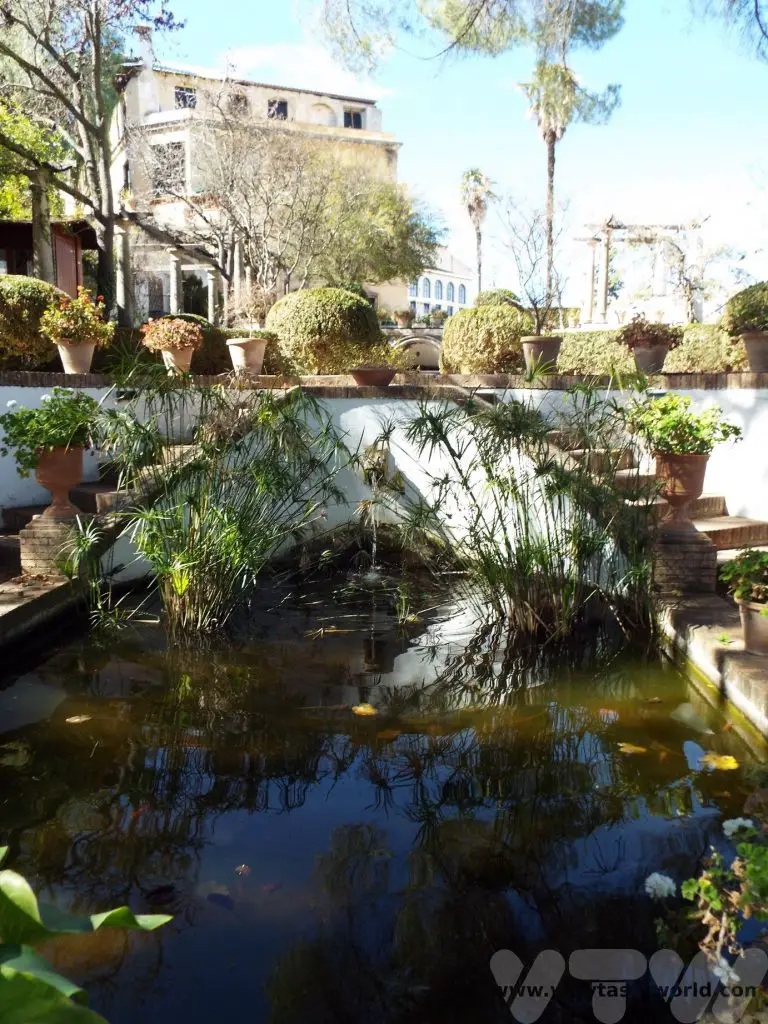
The Bullring
Ronda is considered the place where modern bullfighting began. At the Plaza de Toros, Ronda has a large bullring, built in 1785, which is one of the oldest in Spain. There is a museum which gives a history Bullfighting is a part of Spanish culture and history but it wasn’t something that we wanted to see. If you are in need of visitor information, the tourist office is located close to the bullring.
Next to the Plaza de Toros is a small park with two unusual statues by sculptor Seville Parra. Film director Orson Welles and author Ernest Hemingway both fell in love with Ronda and Spain. Hemingway wrote about Spain in his novels Death in the Afternoon and For Whom the Bell Tolls. Welles was so taken with Ronda that his ashes are buried close by, in a well on the estate of his friend, bullfighter Antonio Ordóñez. The park itself offers some nice views of the surrounding area.
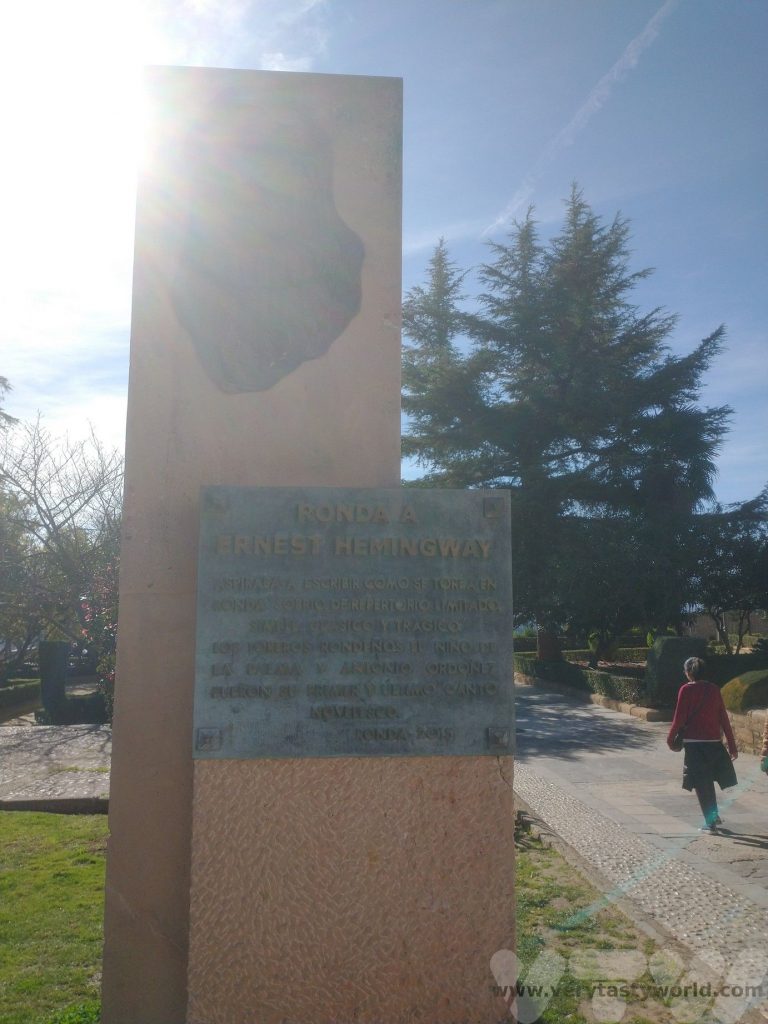
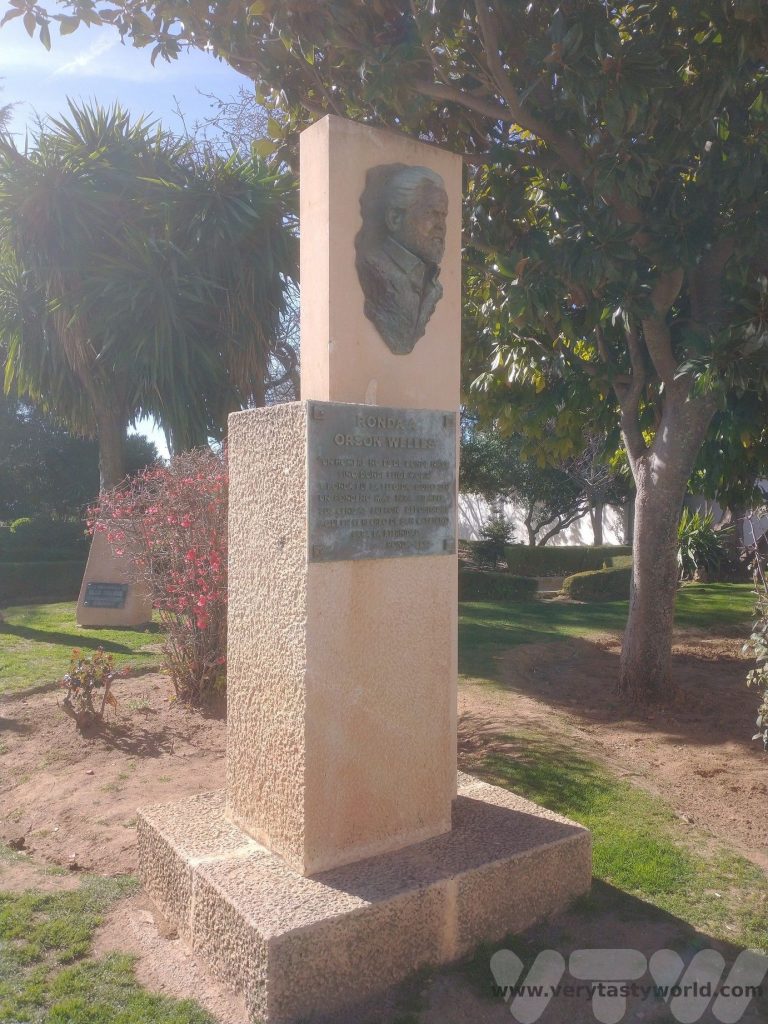
It’s lovely just wandering through the town. The oranges were already ripening on the trees.
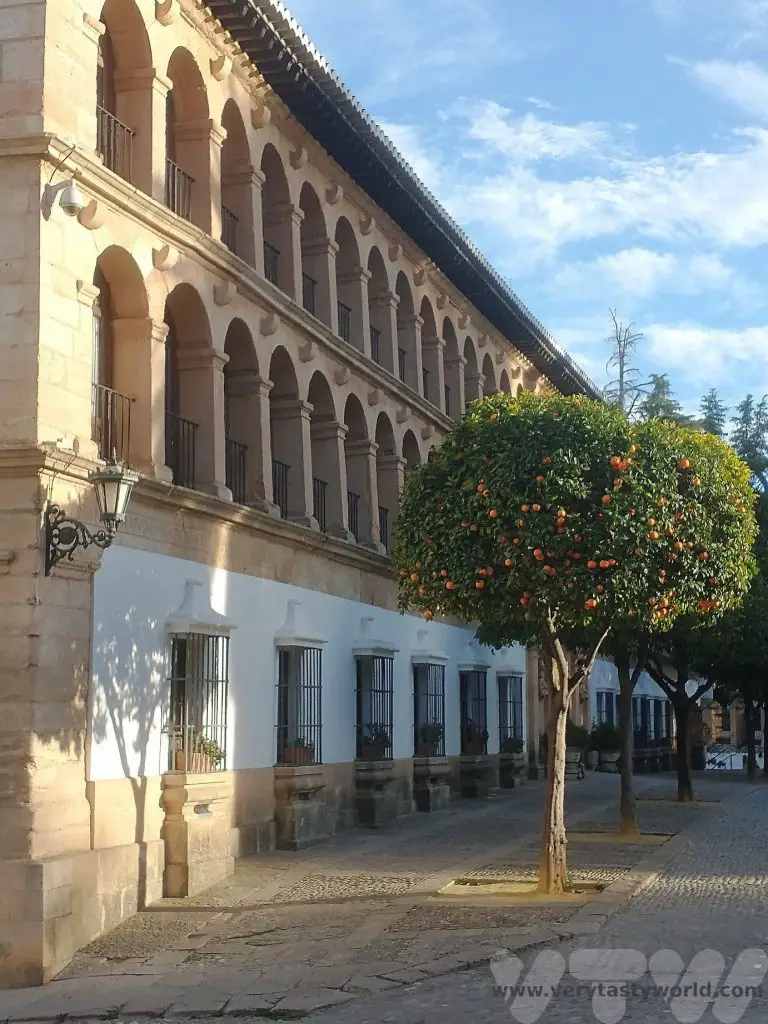
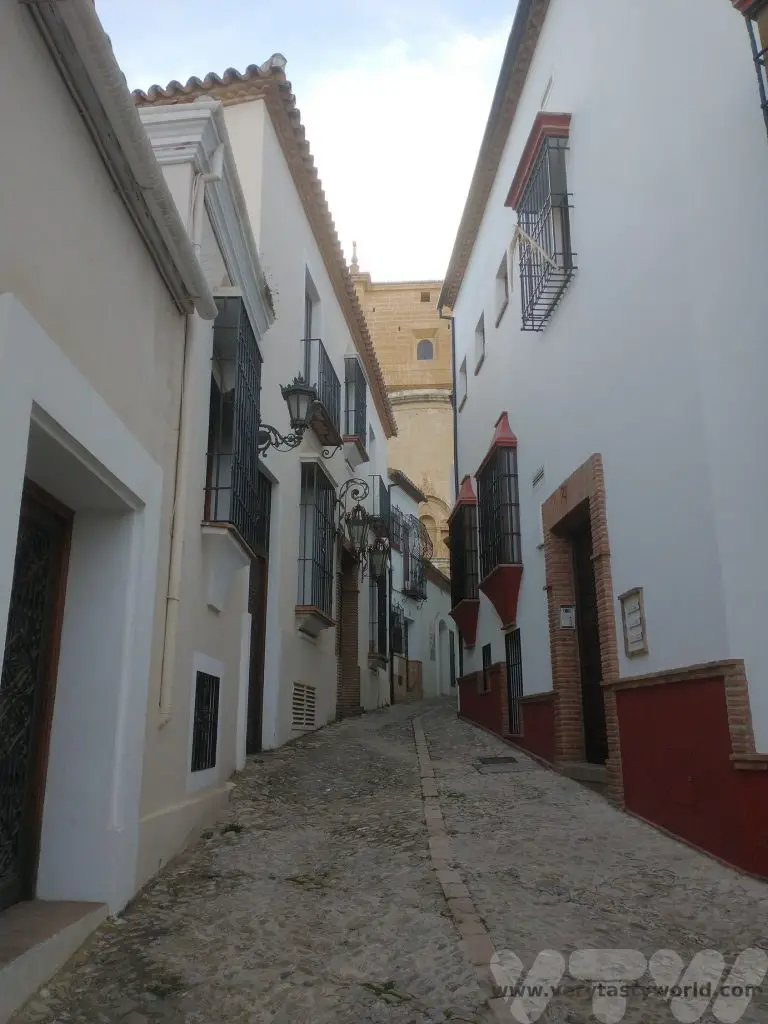
Eating in Ronda
In terms of eating, like much of Spain, Ronda has its fair share of restaurants that offer a menu del dia at lunchtime – a fixed price set menu which is usually good value. Bear in mind that the restaurants are likely to be busy at lunchtime because of the day trippers. Prices in the evening are likely to be more expensive. Sadly some of the restaurants we wanted to visit were closed, so we contented ourselves with tapas followed by churros.
Meats and cheeses in Andalusia are fantastic – with a wide choice available and all delicious.
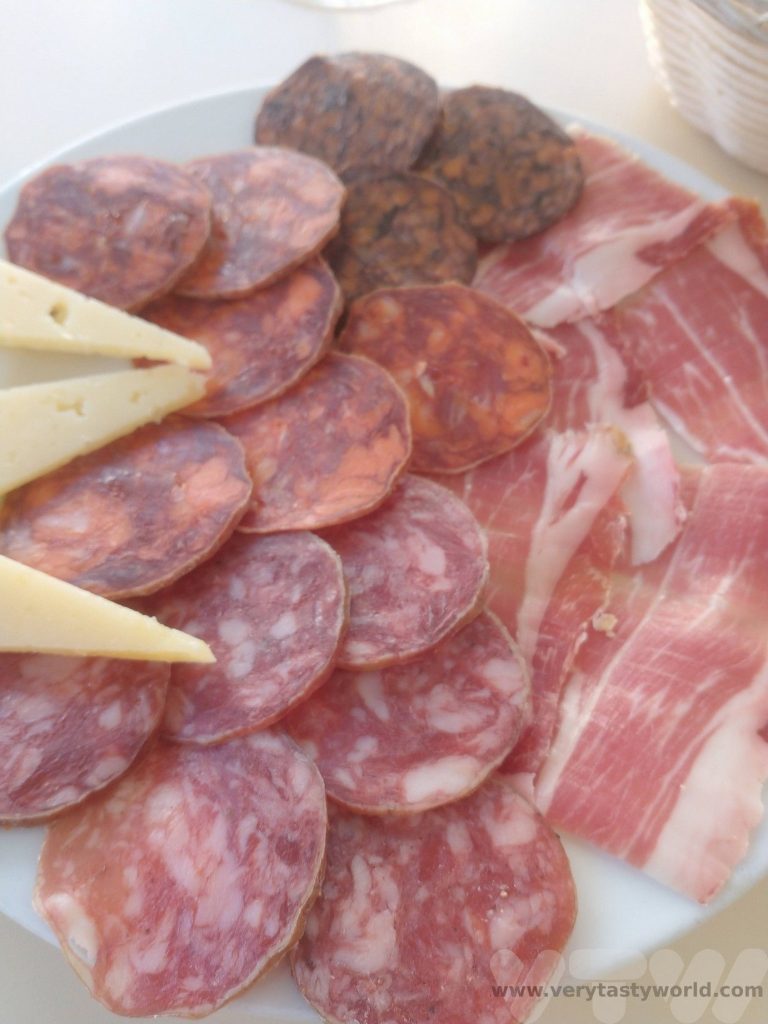
Churros are cylindrical fried dough delights. They can vary in shape and length – some thicker, thinner, longer or shorter, but they usually have a ridge along the length due to the dough being piped into the sizzling oil using an implement called a churrera, which is a bit like a syringe with a star-shaped nozzle. They may also be coated in sugar. Churros are traditionally dipped into hot chocolate, which is rich, thick and deeply chocolatey.
Churros are usually eaten at breakfast but there were restaurants all over Ronda offering them as daytime snacks. They are popular so some cafes may run out later in the afternoon. They are so sweet! We got such a sugar rush we felt like we could have run up and down the gorge several times after eating them.
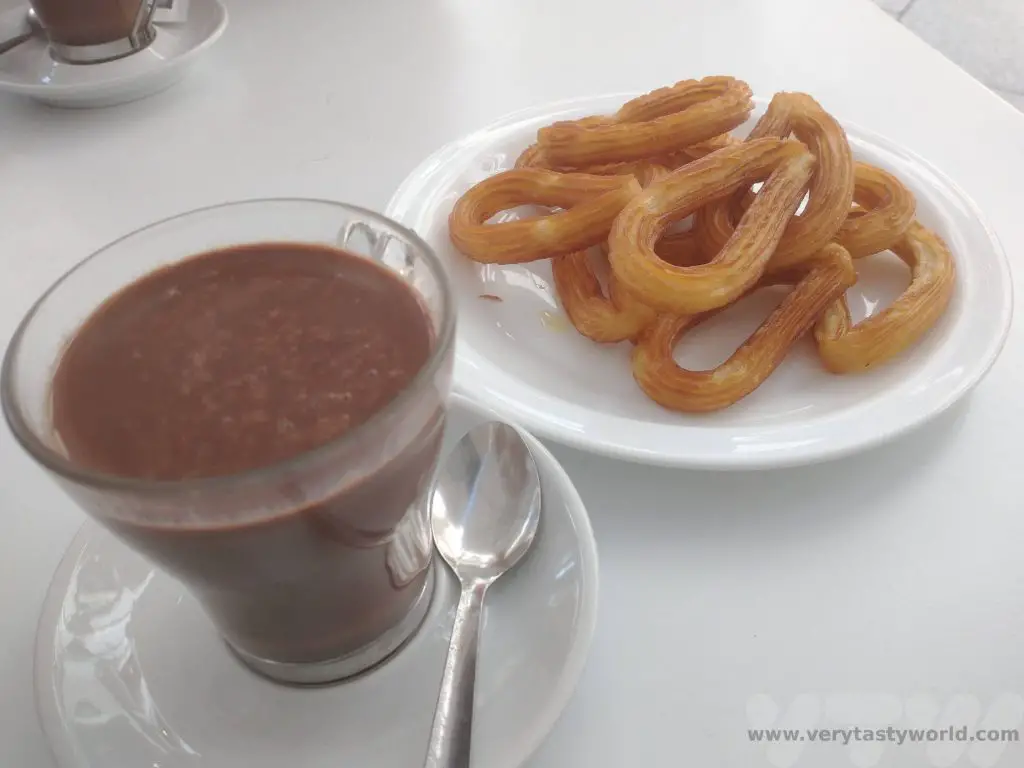
While many people spend just a day in Ronda day, we would actually recommend an overnight stay if possible. One of the reasons for wanting to stay overnight was that we could see the bridge lit up at night. The daytripper crowds will have melted away by this time.
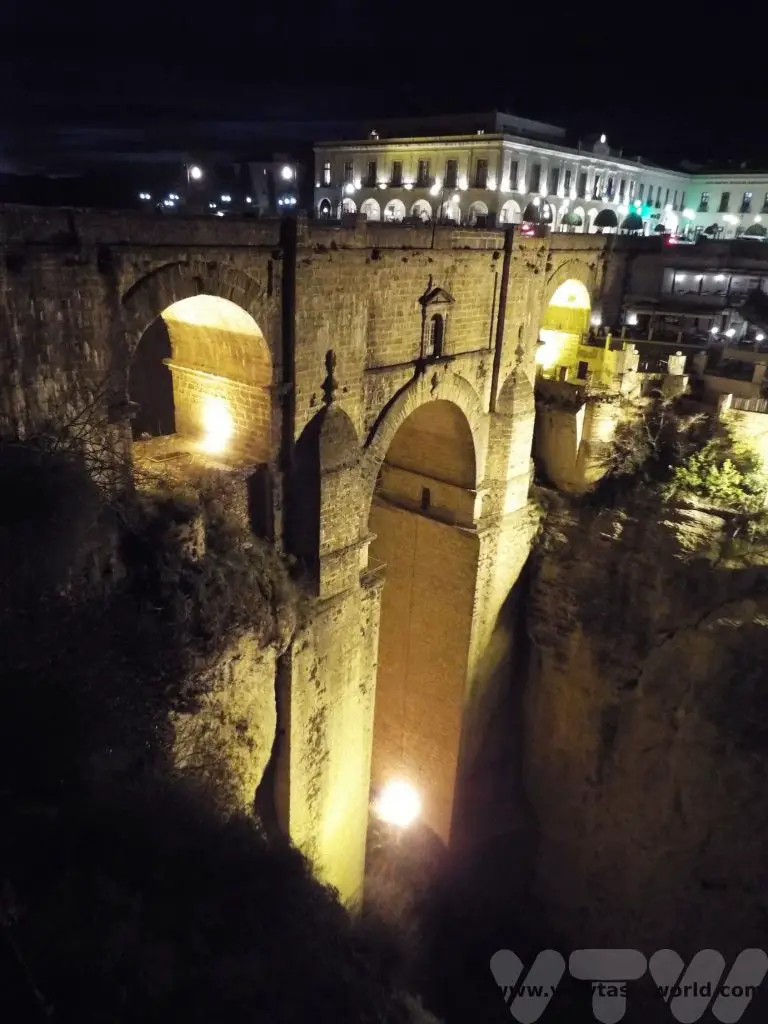
We paid a bit extra for a room with a view of the bridge. It wasn’t quite what we expected – it did include a bit of the bridge but the hotel’s claim that we had a ‘bridge view’ didn’t really meet our expectations. Hey ho.
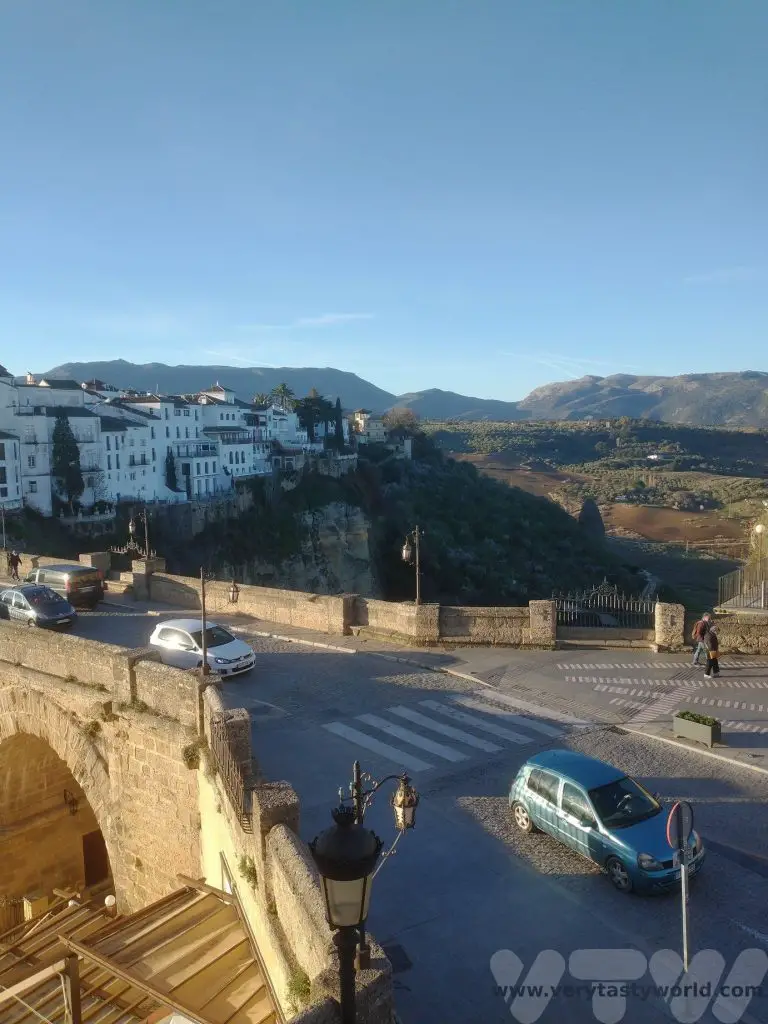
Much better was eating a traditional Andalusian breakfast in their restaurant…
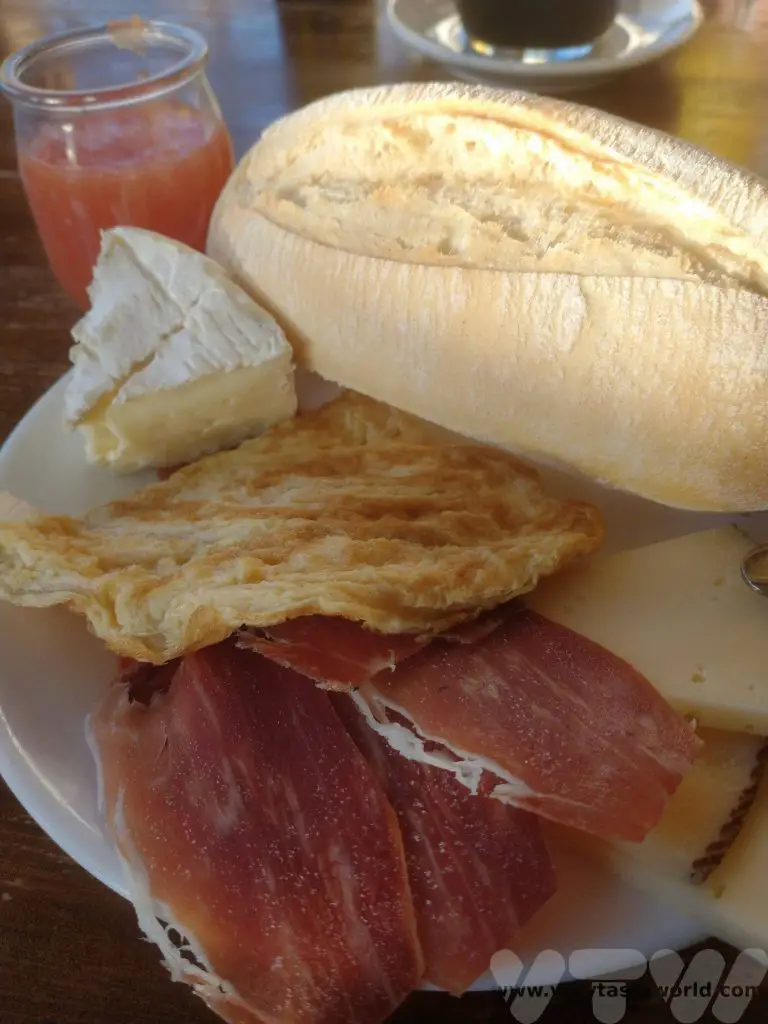
…overlooking the gorge on a beautiful misty morning.

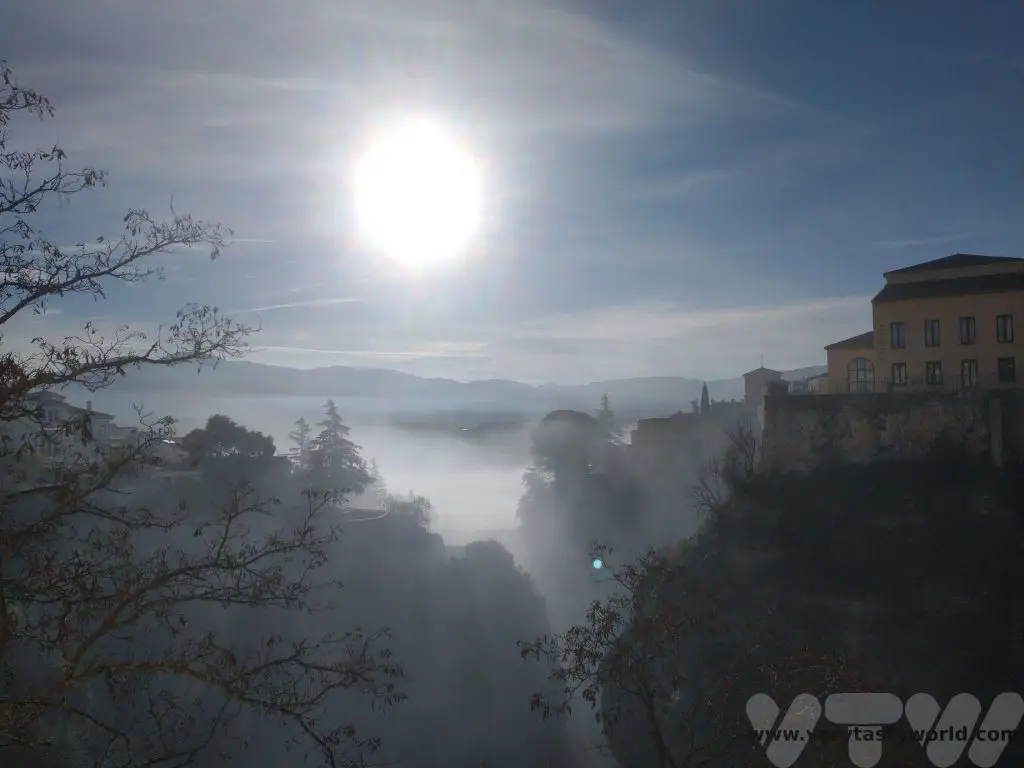
Related Posts You May Enjoy

Things To Do In Oban, Scotland
Oban is a town in Argyll and Bute located around a pretty bay on the west coast of Scotland. It’s a popular place to visit and also has a ferry port from which it’s possible to travel to some of the western islands and as such is often considered the gateway to the Hebridean islands. But there are plenty of things to do in Oban itself and the surrounding area.
A Towering Folly
McCaig’s Tower is the town’s most prominent landmark, set on a hill looking over the bay. It was funded by John Stuart McCaig in 1897, a local banker who wanted to ensure employment for local builders and stonemasons as well as to leave a monument dedicated to his family. But he died before his plans fully came to fruition and, although he left a legacy for its completion, his family contested this and work stopped.
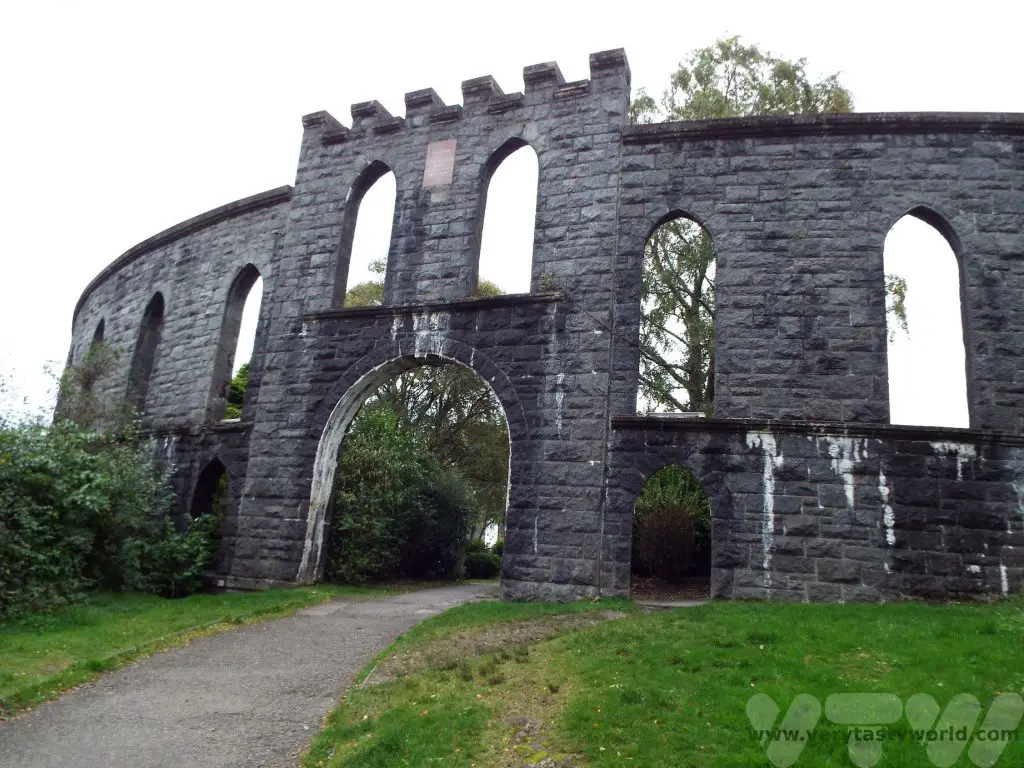
McCaig had apparently wanted a grand design based on the Colosseum in Rome, which would have been impressive, but it was not to be. It is a folly, but is nice to climb the hill and walk around the tower to have a look at the design and also to get a panoramic view of Oban below.
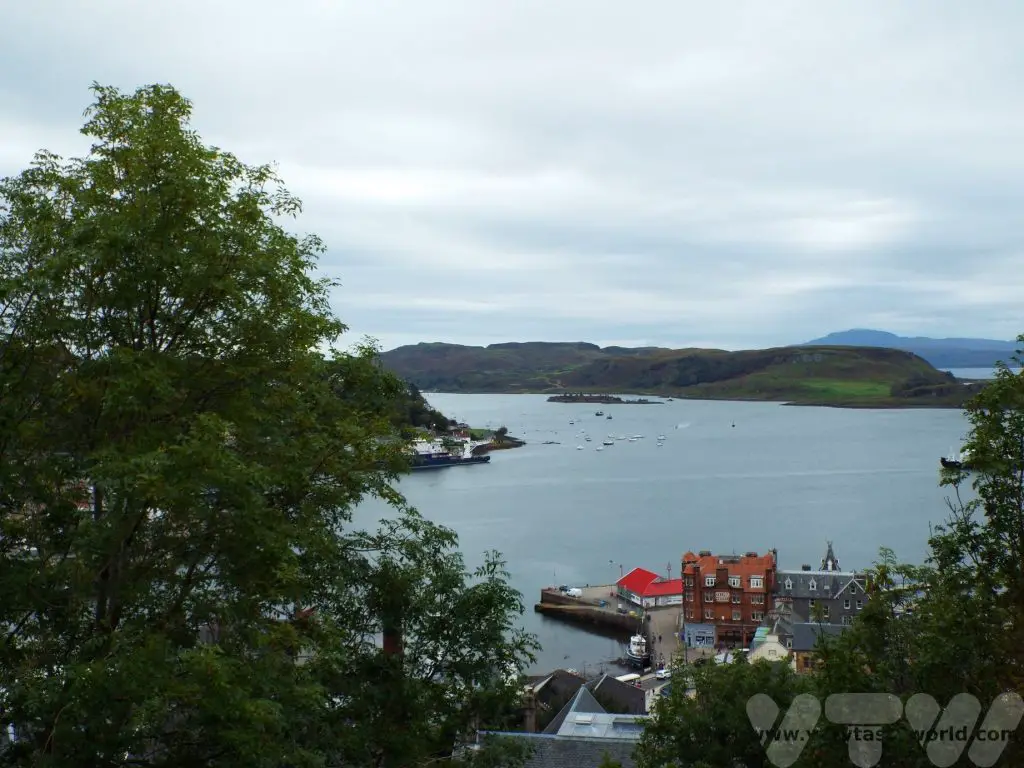
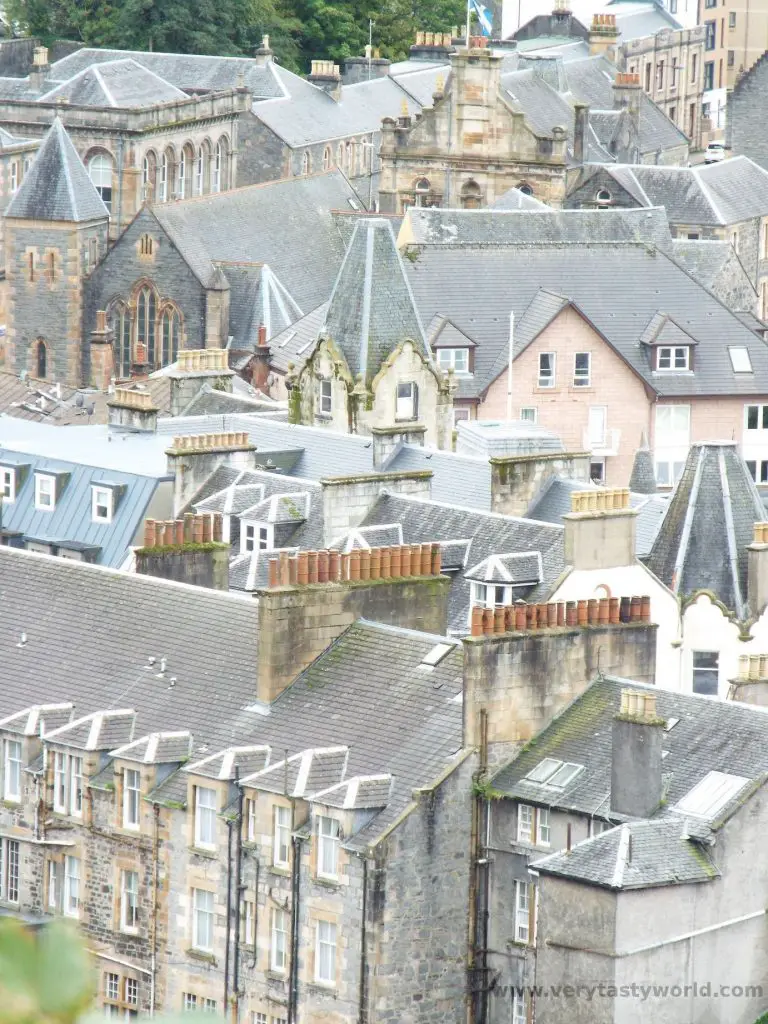
Visit Oban Distillery
Oban has one of the smaller whisky distilleries in Scotland. In fact the town developed around the distillery which was established in 1794. Hence it’s very conveniently located right in the centre of Oban. Because of its location the distillery didn’t really have the opportunity to expand so it remains small but perfectly formed. Also, because it’s town-based, there are no issues with someone having to drive to the distillery if you want to indulge in a tasting and are staying locally.

Of course they offer tasting tours. It’s definitely worth making a booking. You can tour the distillery itself or enjoy a tutored tasting. On arrival you are shown to a table and presented with some samples in little glasses and a tasting card.
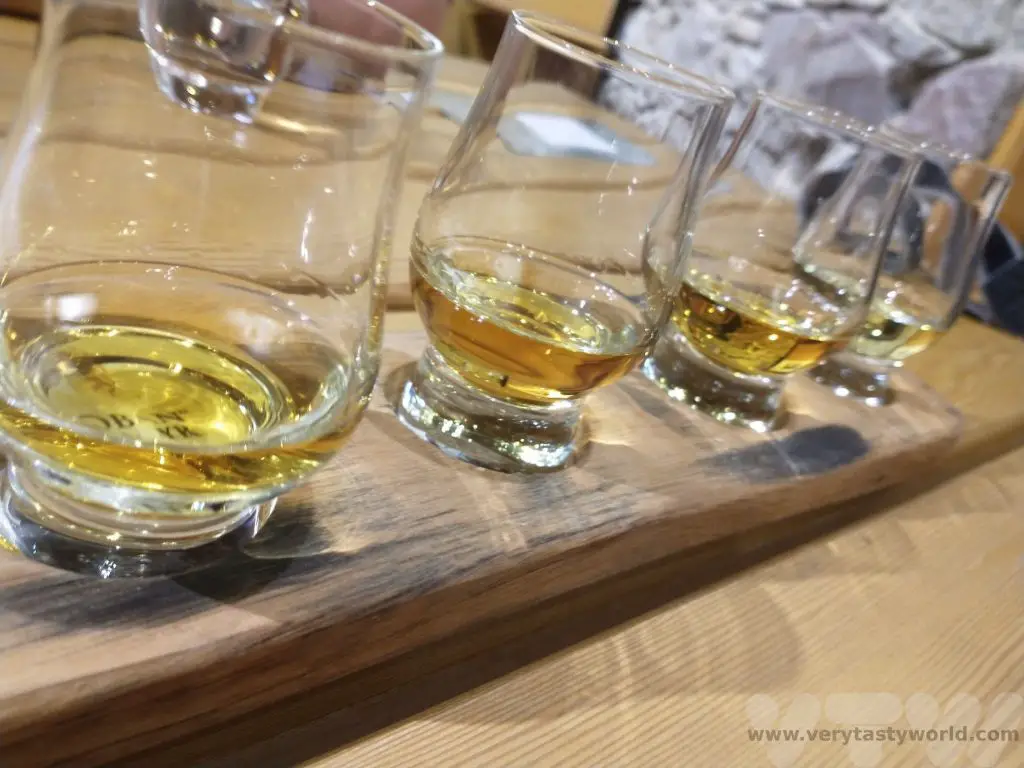
It was really useful to have some guidance as to how to taste whisky. The advice was to sip and don’t sniff the whisky on the first taste. Definitely don’t quaff the shot or you will just get a burn at the back of the throat. Sipping again, your mouth is now used to the whisky, so let the whisky lie on your tongue for 15-20 secs to let the saliva glands release saliva and savour the flavour. You don’t expect to get a peaty whisky in Oban, the water is sourced from a local loch, about three miles away.
When whisky is first distilled it is a clear liquid. Its colour and flavour derives from the barrels it is stored in and the length of time the whisky is aged. There are some interesting techniques – the whisky can be aged in bourbon or sherry barrels but the casks can only be used a certain number of times (around five). Some barrels are charred inside, then the burned timber is scraped away to expose new timber and this offers a new flavour. Some whiskies are tripled matured in three casks. We tried the 14 year old whisky, which had a light, citrusy flavour; the 14 year old (charred barrel); the Distiller’s Edition which had been aged in a bourbon and then a sherry cask, which had a sweeter, more caramel roundness; and the triple matured Little Bay, which had a great complexity of flavour.
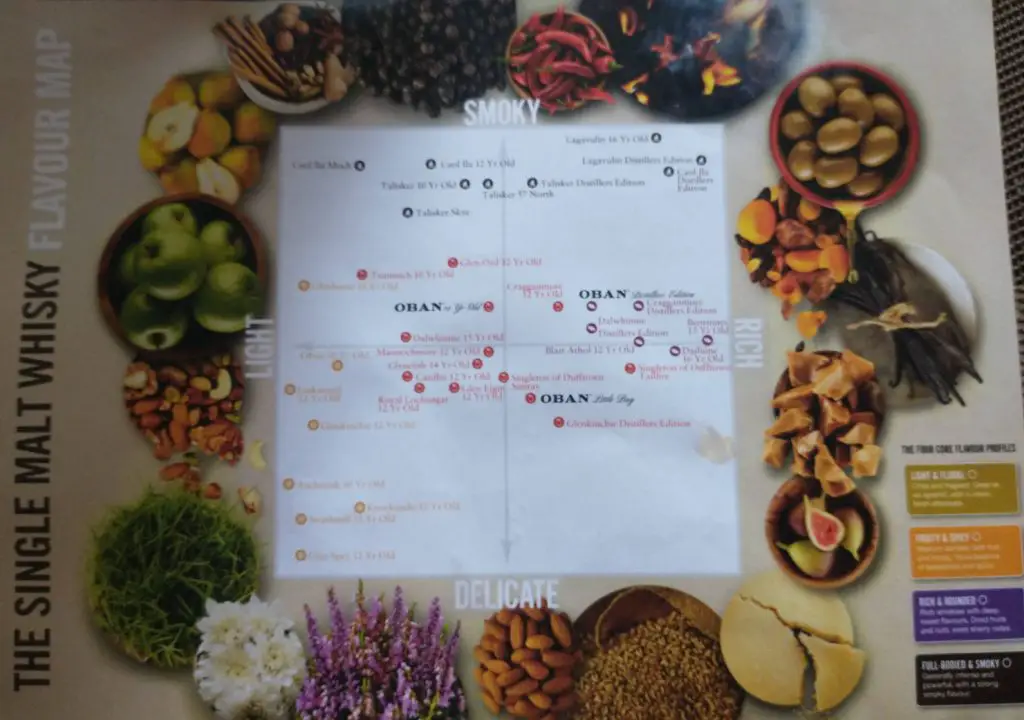
Of course, there are lots of bottles of whisky available to buy. We were quite taken with their Game of Thrones special edition.
Things to Do Around Oban – Day Trips
We recommend using a car to get around Scotland if you can – the driving is generally easy, the routes are guaranteed to look beautiful and it gave us flexibility to explore the wider area. However, there are public transport options if that is preferable.
Easdale Slate Island
Easdale is a tiny island located around 25 km from Oban. It’s easy to reach but first you have to cross the Bridge Over The Atlantic – possibly the cutest bridge in Scotland. Clachan Bridge joins Seil Island to the Scottish mainland so it really does cross the Atlantic – sort of! It’s a darling humpbacked bridge, built in 1792. It’s on a single track road, so take care when crossing.
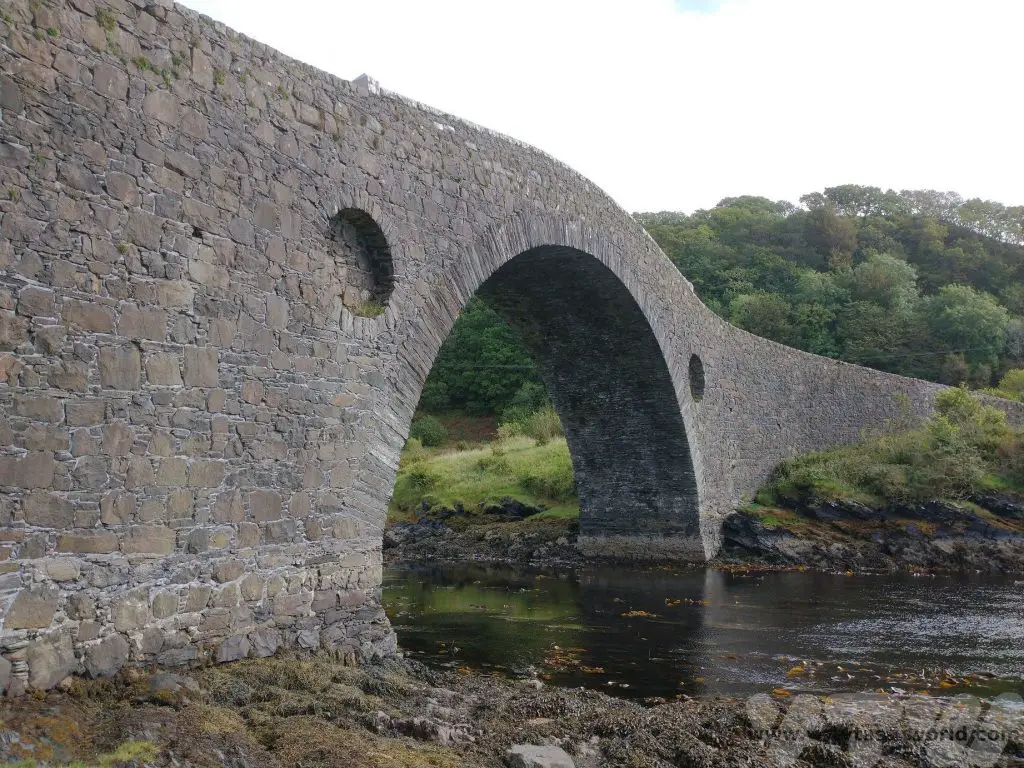
From there head to Ellenabeich, which has a large car park and the ferry port for the three minute journey across the sea to the island. It costs just a few pounds to make the crossing.
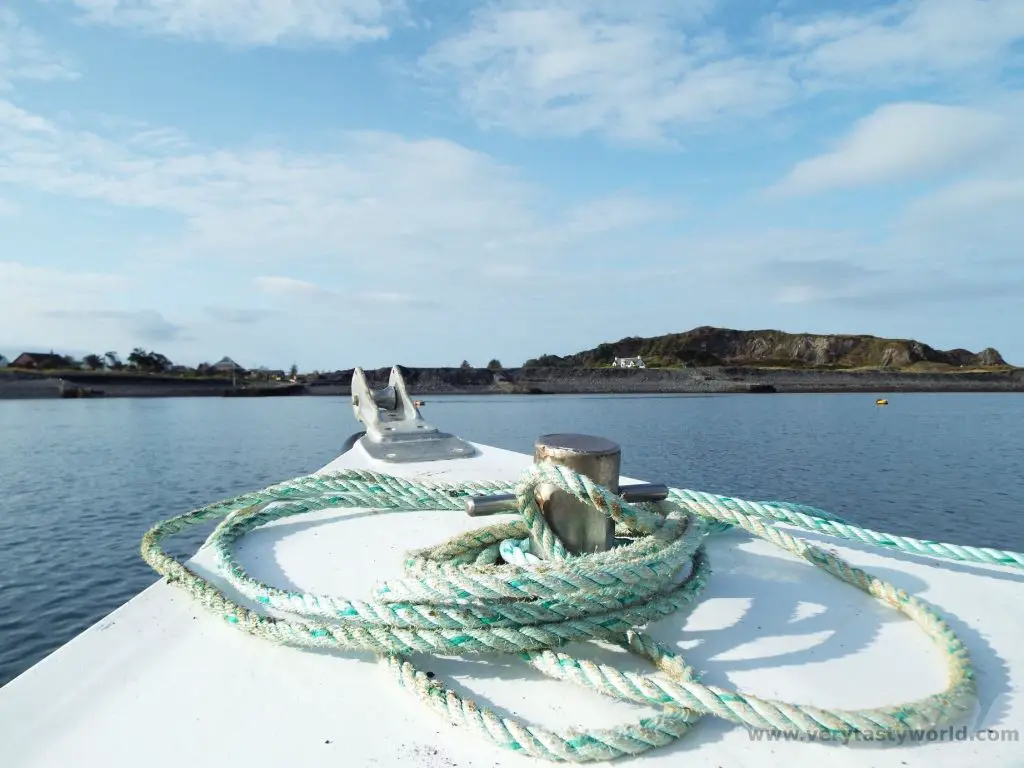
On arrival at Easdale you discover that there are no cars but it is the most delightful place to go walking. There is a café/reastaurant and a folk museum.
Easdale was once the focal point of the Scottish slate industry. As such it has a number of slate quarries, many of which are now flooded. Despite the industry, the island is really beautiful. Skimming Quarry holds a national stone skipping competition every September.
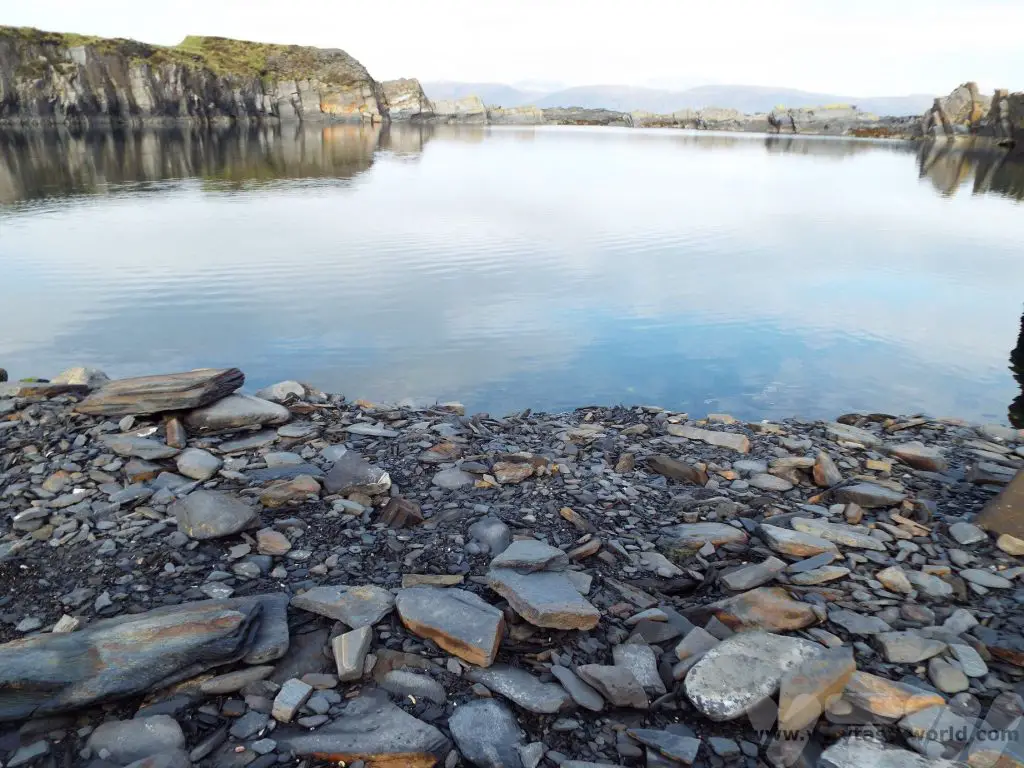
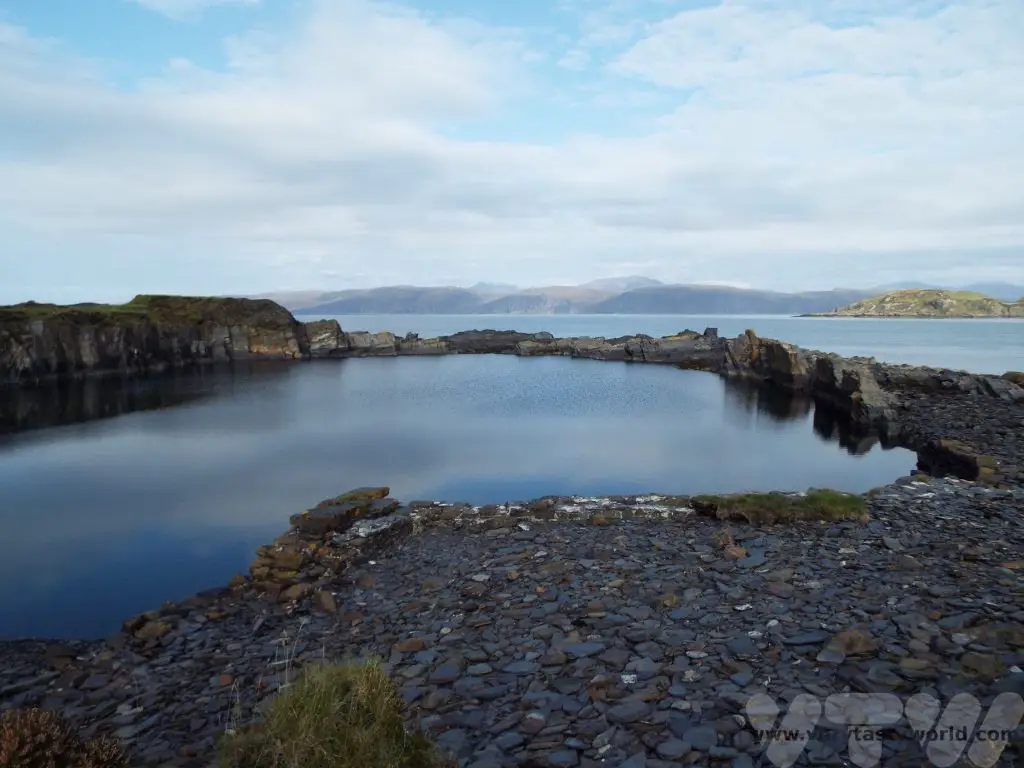
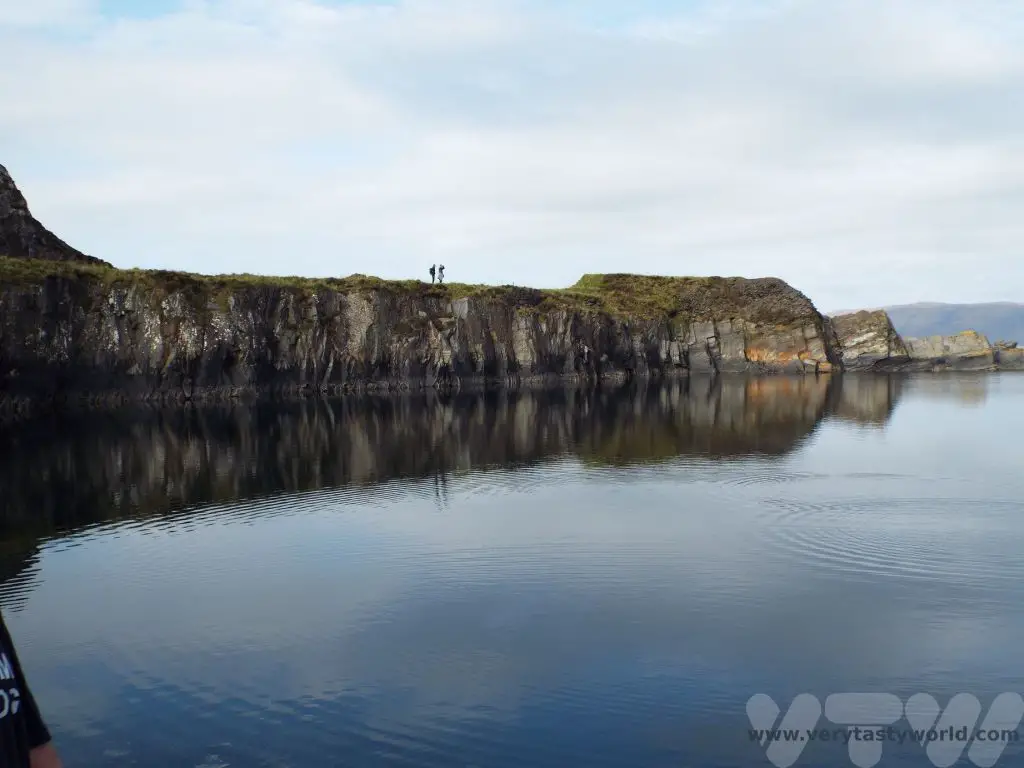
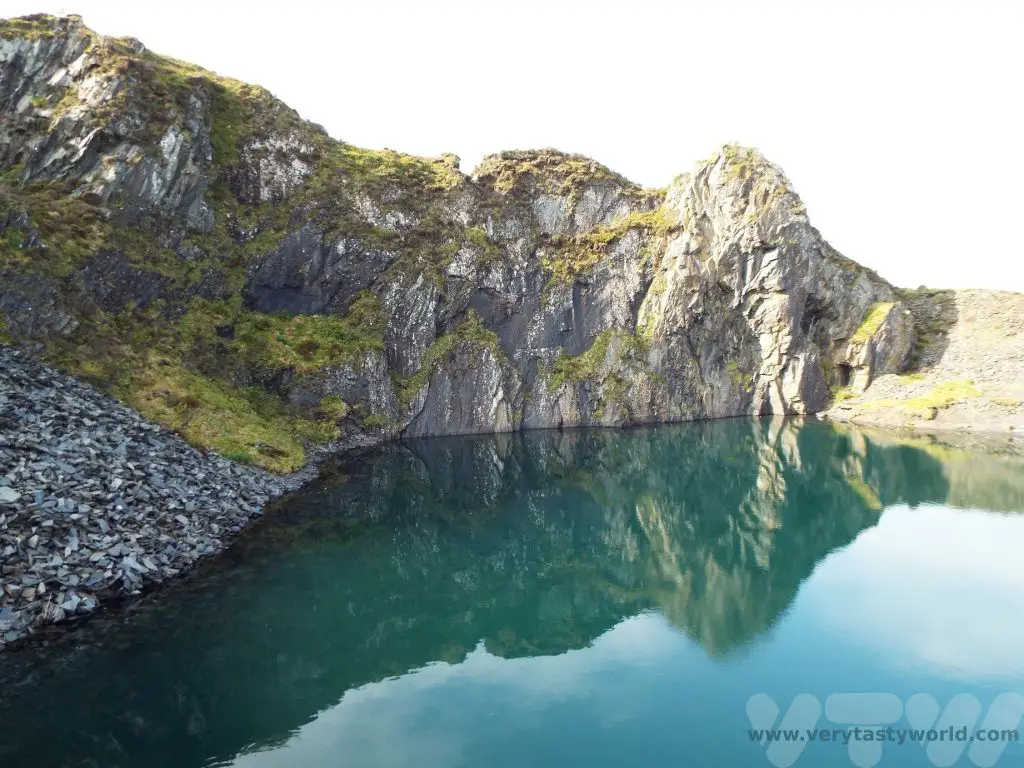
It’s very easy to walk all the way around the island and sometimes you get lucky with perfect weather.
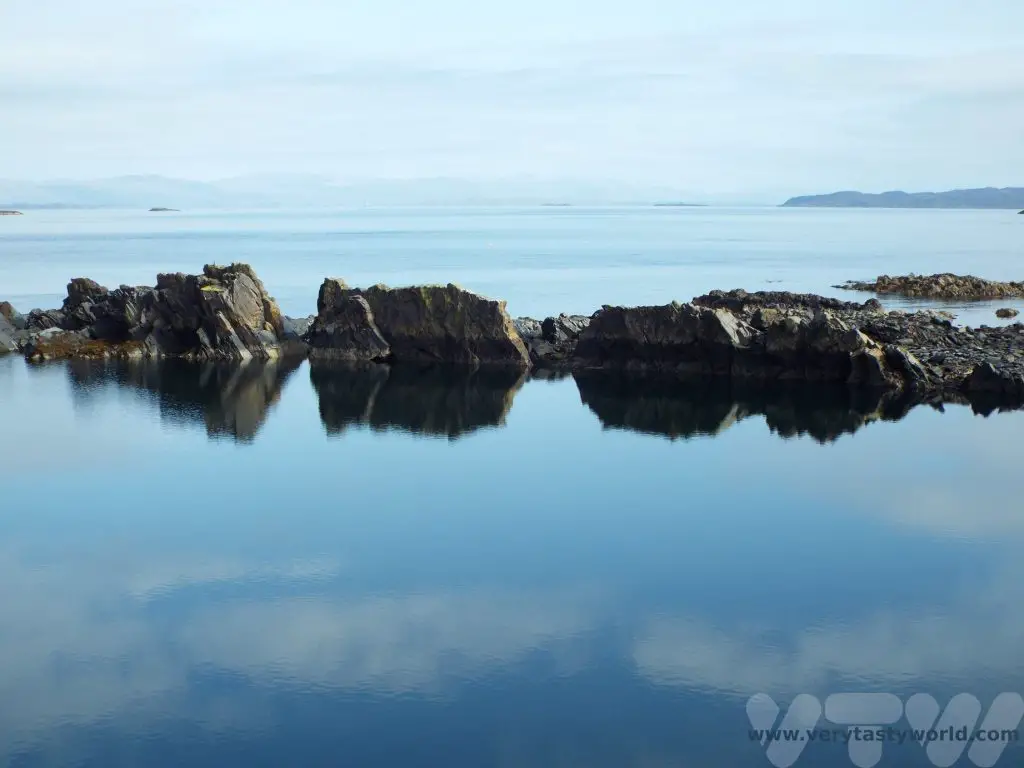
Kilmarten Glen and the Standing Stones
Driving further south towards Kilmarten it’s possible to explore some of Scotland’s prehistoric monuments, including cairns and standing stones.
Stopping in Kilmarten itself there is a museum which gives a history of the area, and the church next door, which has a collection of early grave slabs.
Further down the road there is a car park and, after crossing the road into the field, it’s possible to see Nether Largie Stones. The stones, believed to have been erected 3200 years ago, align with the midwinter sunrise and the autumn and winter equinoxes.
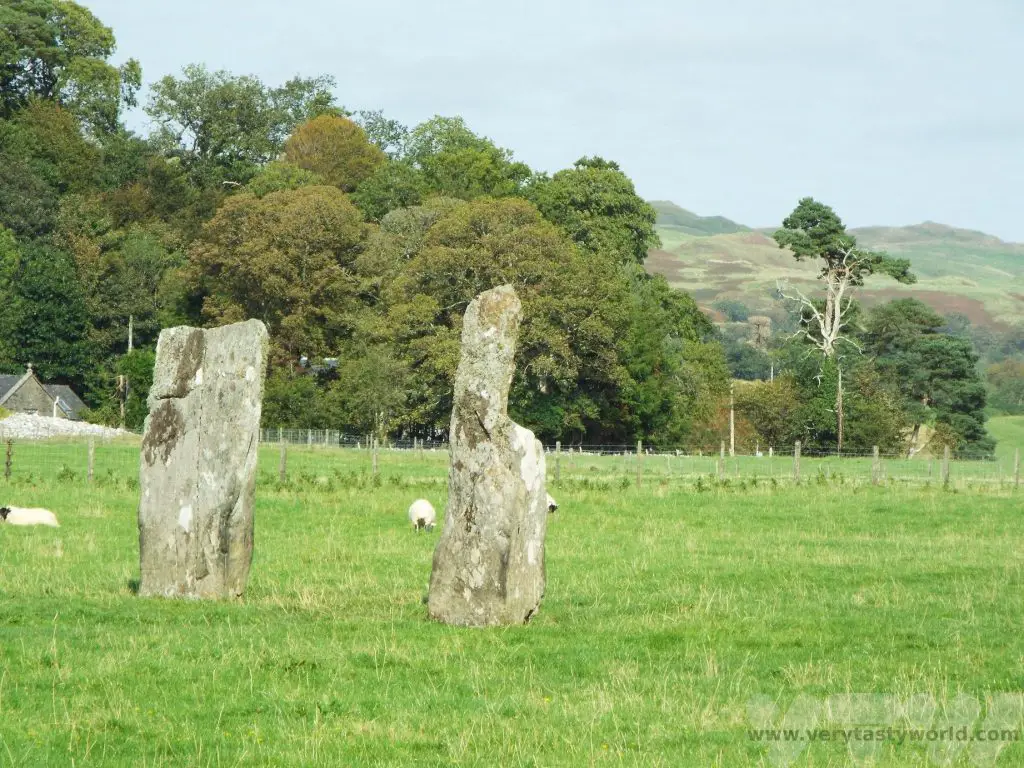
Temple Wood is a stone circle which has a cairn in its centre. It was originally a wood circle, dating from about 5000 years ago but the wood was later replaced with stones. Cremated remains, dating from around 3300 years ago, were found inside the centre of the circle.
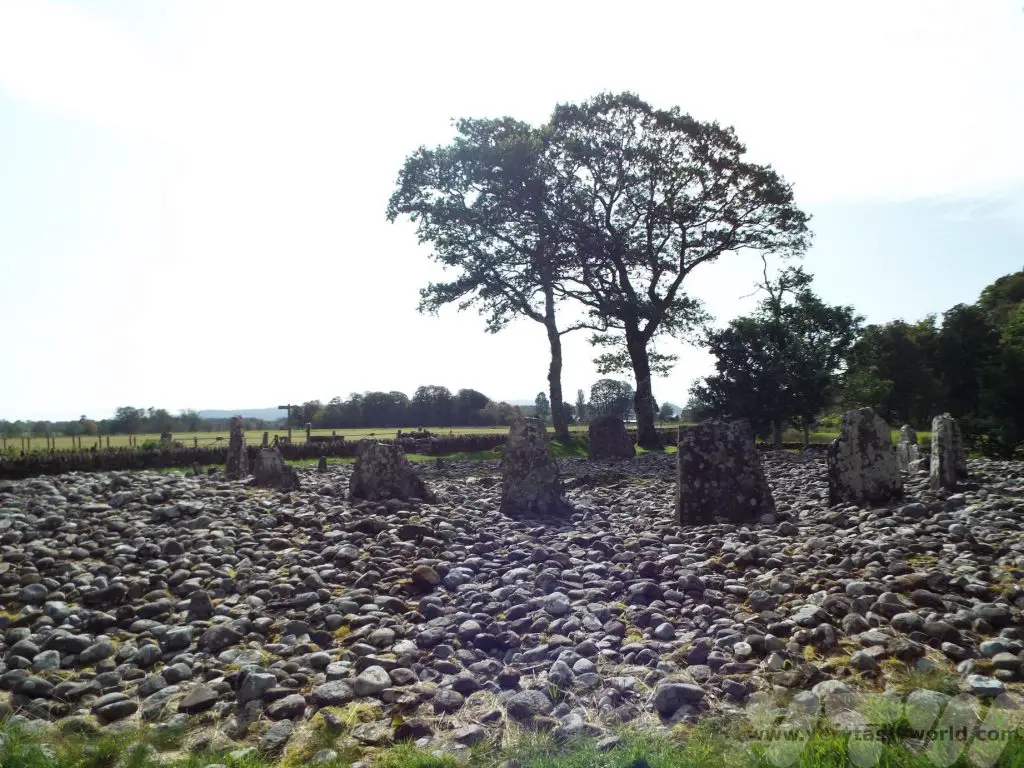
Another short walk just down the lane takes you to the Nether Largie South cairn, a Neolithic chamber tomb. It is thought that it was constructed around 5600-5500 years ago. It’s believed that it was used for burials in the early Bronze Age as well.
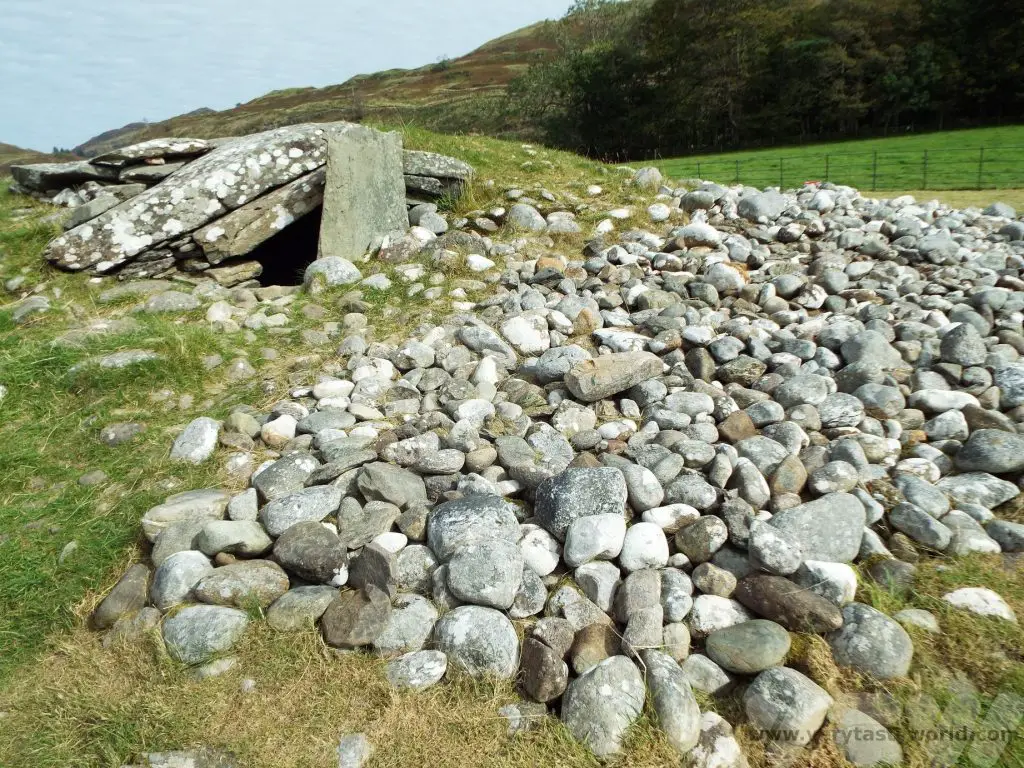
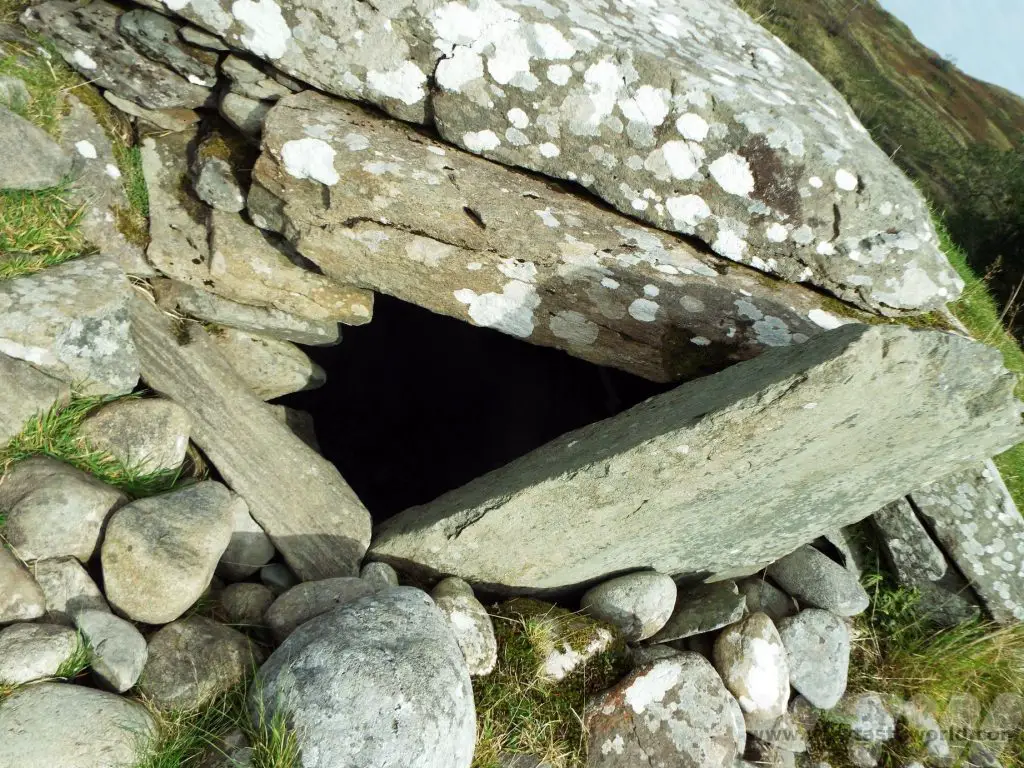
Seafood and Eat It!
On our return to Oban we discovered plentiful restaurants, many of which offer seafood. Blessed with a long and beautiful coastline, Scotland’s seafood is fantastic! If you want the very best, which is also incredibly good value for money, there is only one place to go: Oban Seafood Shack, also known as The Green Shack, located by the harbour on the railway pier.
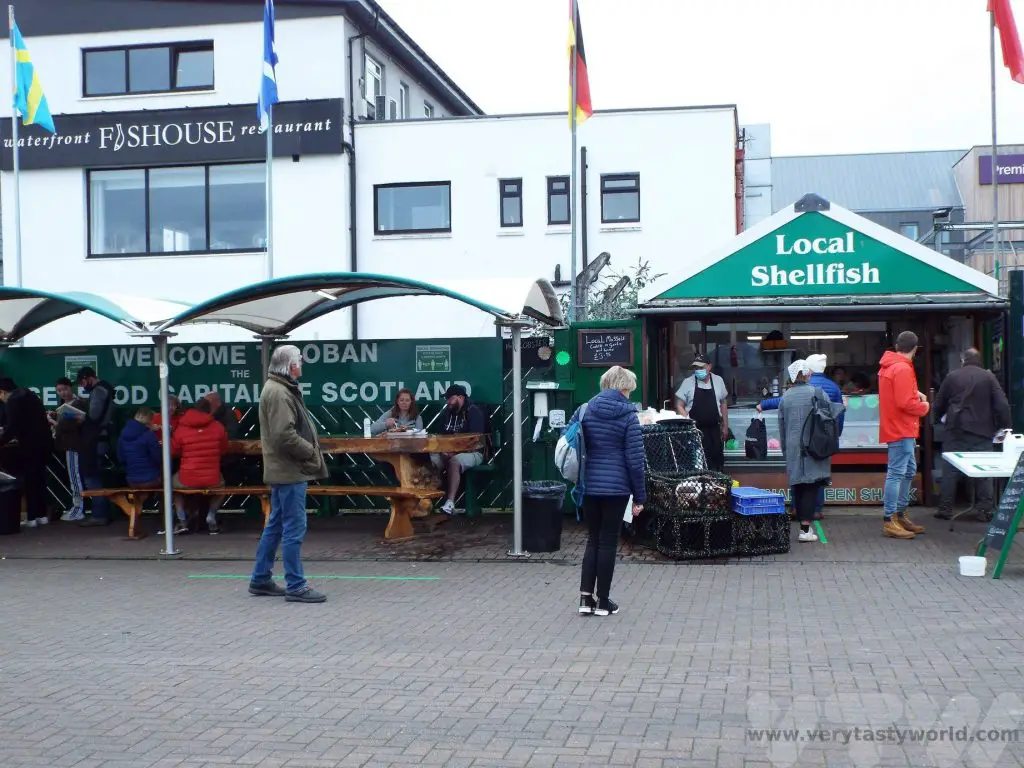
It’s so good, there will almost certainly be a long queue, but it’s emphatically worth the wait as you can order a huge variety of fresh seafood. It is literally a shack – a tiny hut – where you place your order. There’s not much seating, just a small covered area next to the shack and some tables for standing. It’s not the place for an intimate dinner but who cares when the food is this good? We ordered the seafood platter which was just divine: lobster, crab claw, langoustine, mussels, prawns, scallop in butter sauce, hot smoked salmon, pickled herring, crab sticks, squid rings. It was served with simple bread and butter, Marie Rose and sweet chilli sauce.
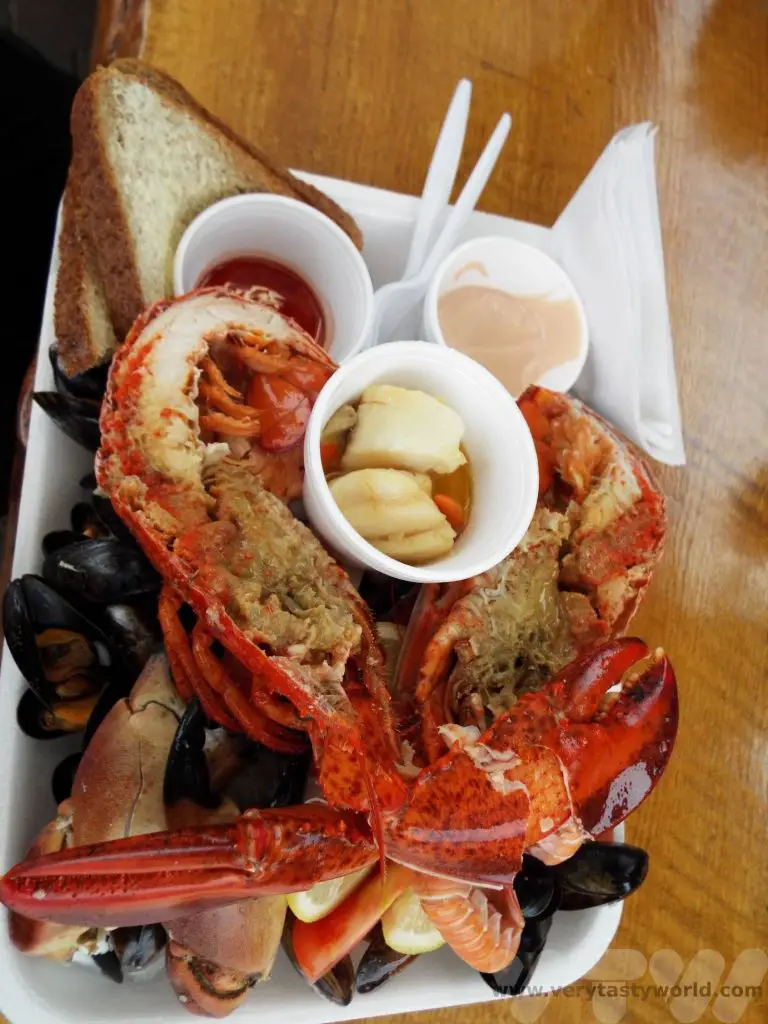
There was so much we needed a platter for the debris. We ate standing up, using our fingers (they have a wash station), although forks were provided to pick crab and lobster meat.
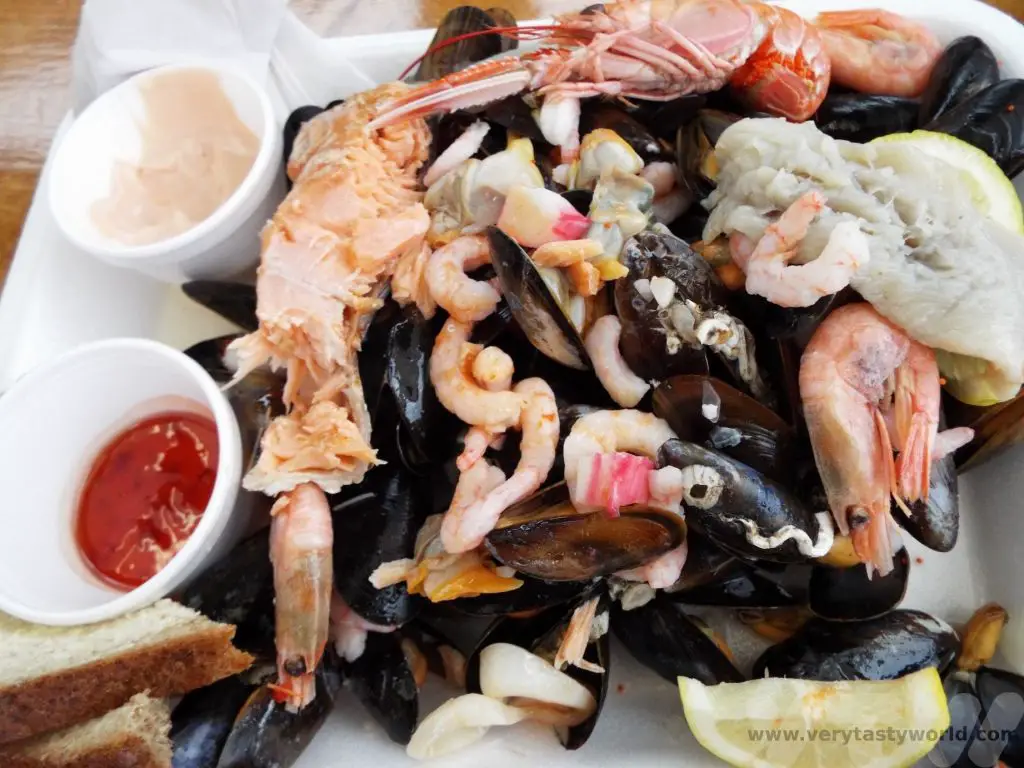
The seafood shack offered food as it should be – fresh ingredients, perfectly cooked, friendly service, no pretension whatsoever. Perfect. (It’s worth noting that at the time of our visit they only accepted cash as payment.)
The following day we skipped breakfast at the hotel in favour popping down to the shack to pick up some prawn and crab sandwiches. Absolutely delish! It set us up for the day to continue our journey through Scotland and onto the Isle of Skye.

Other Attractions in the Area
If you like castles, there are a couple close by: Dunollie Castle is located about 1.5km north of Oban. You can visit the castle, a museum and the grounds. There’s also Dunstaffnage Castle & Chapel, one of the oldest stone castles in Scotland which stands on an enormous rock overlooking the Firth of Lorn.
Oban is also gateway to some of Scotland’s marvellous Hebridean islands via the ferry port. It is possible to enjoy trips to Mull, Lismore, Coll, Kerrera and Barra, some either as day trips or to continue your journey through Scotland. Check the Calmac website for information and timetables.
Related Posts You May Enjoy

RECIPE: How to Make Umeboshi
A typical Japanese breakfast will comprise of a bowl of rice, some grilled fish and pickles accompanied by a bowl of miso soup. What a lovely way to start the day. And at the Japanese breakfast table you will often come across a bowl of pink, wrinkly fruit, roughly the size of an apricot.
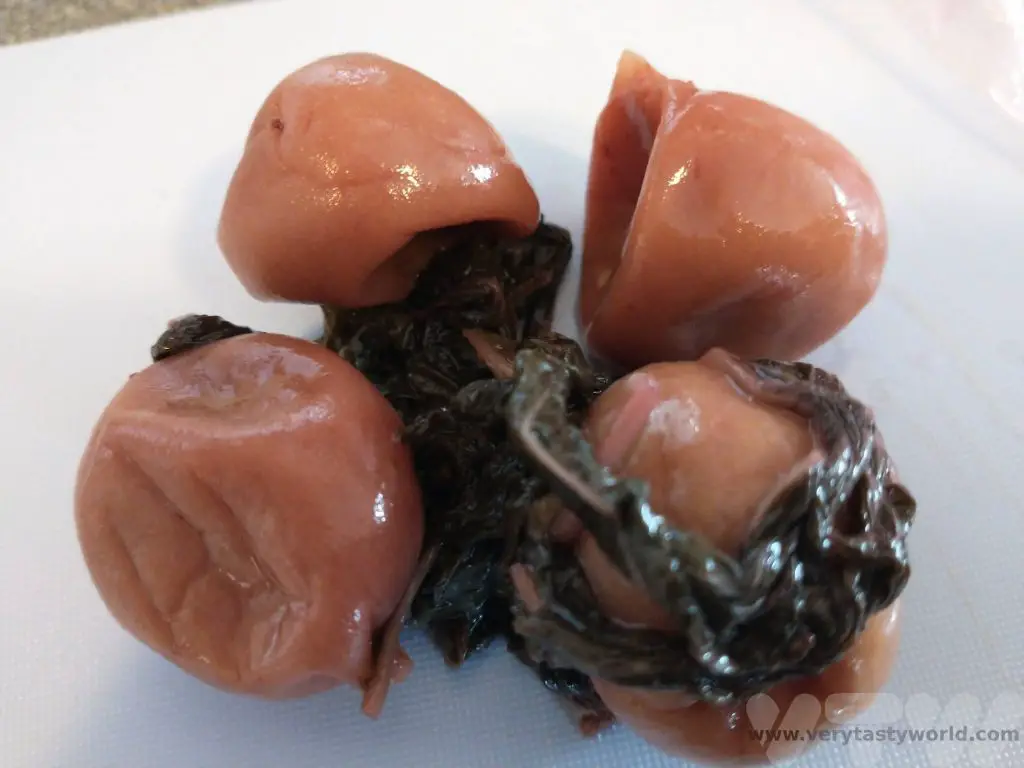
These are umeboshi, incredibly sour and salty ume fruit, which are like small plums or apricots, and are absolutely guaranteed to wake you up. They are also reputed to be a hangover cure, especially good if you are a salaryman who has had a late night out in the city. Or tourists who have had a late night in the city which involved chatting with all sorts of very interesting people in random bars and drinking quite a lot of booze.
Beware the stone, especially if you have a hangover.
Umeboshi are tsukemono, literally “pickled things” which brined and therefore fermented, so they will last for ages. Some will even last decades. If they turn black, they should be chucked. We always bring some back from our trips to Japan and rationed them so had some in our fridge for about 5 years – they were still pink and wrinkly and utterly delicious. Most Japanese meals have tsukemono as an accompaniment but umeboshi are most often eaten at breakfast. They are also used in onigiri (rice balls) as a flavouring and can be converted into a paste to add plentiful salty/fruity flavour to a variety of dishes.
Some Japanese households make their own umeboshi. If you are lucky enough to be offered these, don’t be polite. Well, do be polite because that would be the right thing to do, but don’t hesitate to take your host up on their offer. Home-made umeboshi are absolutely delicious. The pink colour derives from red shiso – also known as perilla – which is a herb added during the pickling process. Shiso is a very common herb used a lot in Japanese cuisine. Green shiso is often the herb that garnishes a sushi platter.
It is possible to make sort-of-umeboshi in western countries. The ume fruit is not usually available, but you can have a bash using plums and salt.
We treated ourselves to a Japanese pickle press a while ago but it should be possible to make umeboshi using a wide-mouthed jar, just as long as you have something heavy that will fit inside the jar to weigh the plums down and a utensil that can extract them (tongs should be fine) as you will need to take them in and out of the jar after the fermentation.
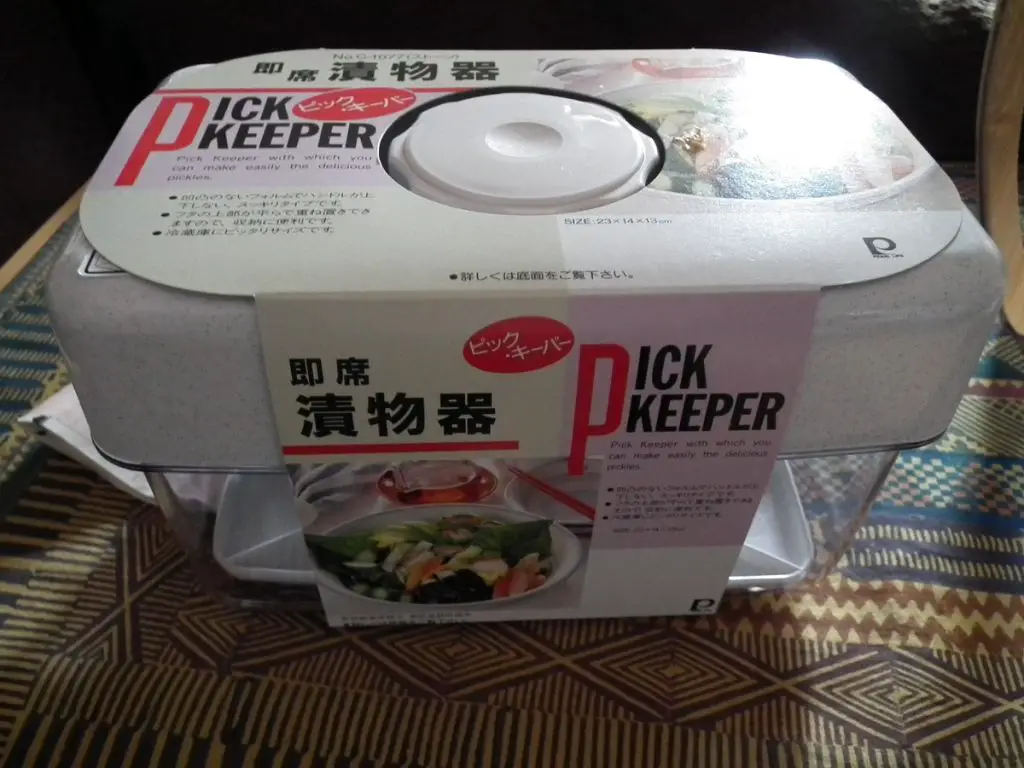
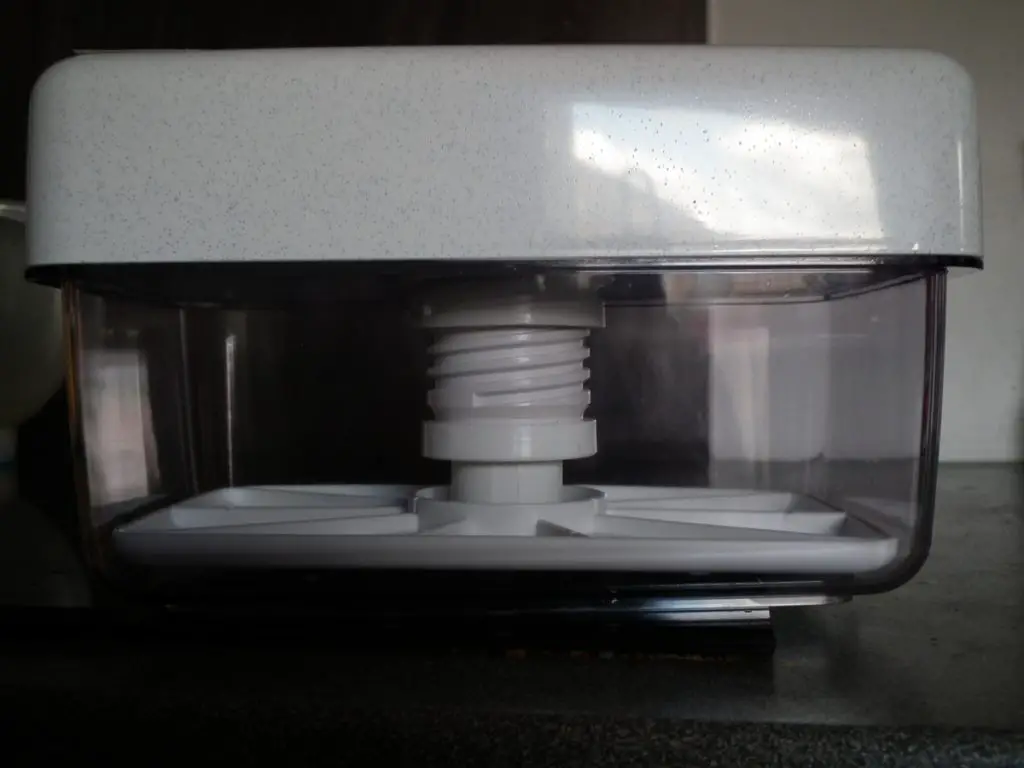
We use plums from our allotment. They have the delightful name Warwickshire Droopers. The great thing is that we can assess how ripe our plums are and pick them. This year the plum tree has been very generous. If you don’t have a plum tree your local market or greengrocer may well have a variety of plums for you to choose from.
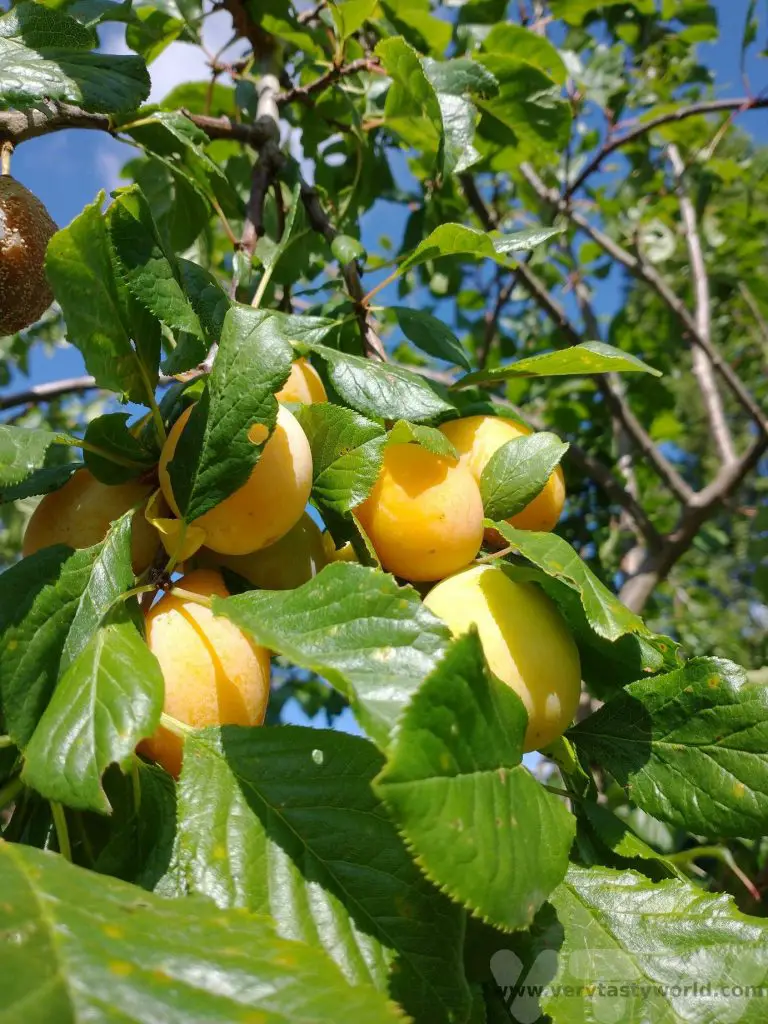
You want the plums to be ripe but not over-ripe, they need to have a degree of firmness.
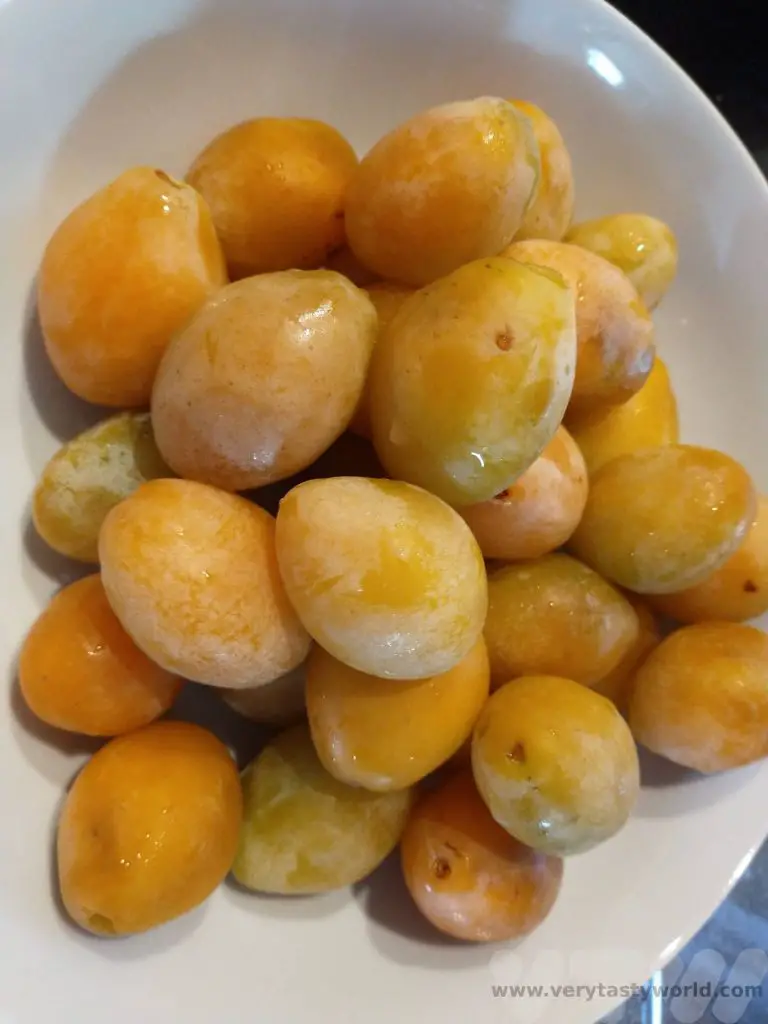
How to Make Umeboshi
Ingredients
Plums – enough to fill your container but leaving enough space to add a weight. If using a press, make sure the press can close and provide enough pressure.
Salt – 8% of the weight of the plums. Try not to use table salt, as this contains anti-caking agents. We prefer Himalayan pink salt but any pure salt will be fine.
2 red shiso leaves (optional)
Method
Wash your plums and pat them dry. Weigh the plums.
Measure out your salt – the total should be around 8% of the plum weight. This is a lot of salt but most of it will leach into the juice during the pressing process.
Massage the salt into the plums
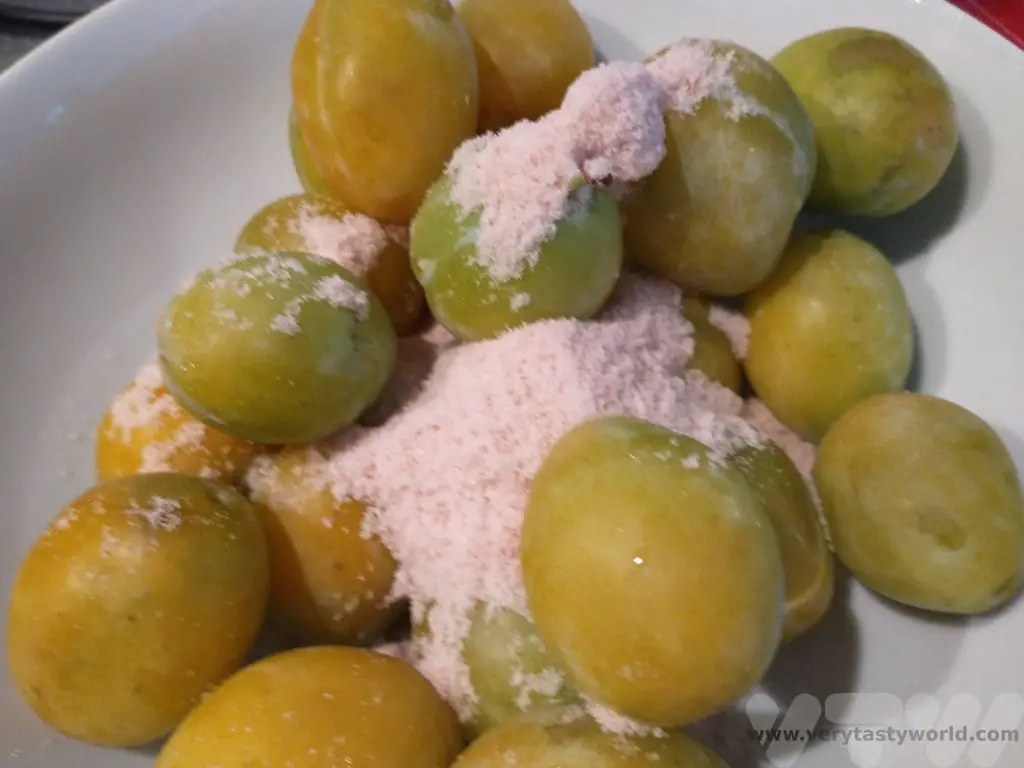
Place in the press. Add the shiso/perilla leaves if you are using them.
Attach the lid and screw the pressure plate down as far as it will go. If you are using a jar, put a clean weight (you can put a weight inside a plastic bag) that puts pressure on the plums.
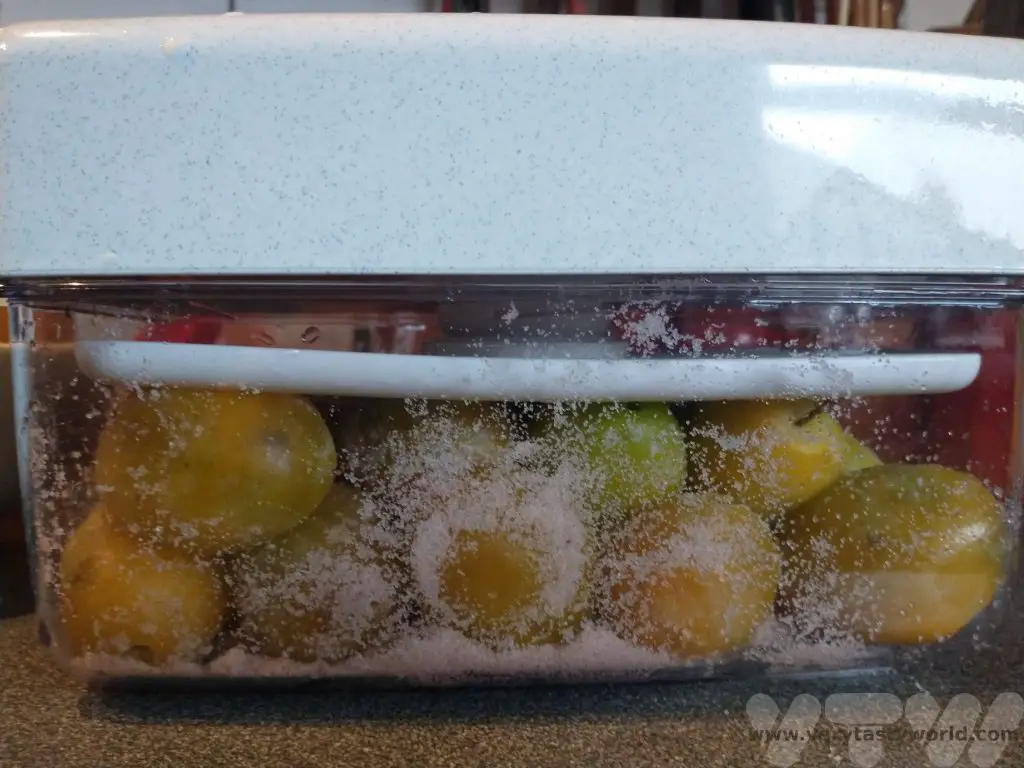
This ferment doesn’t use a brine. The pressure of the weight will release juice from the plums.
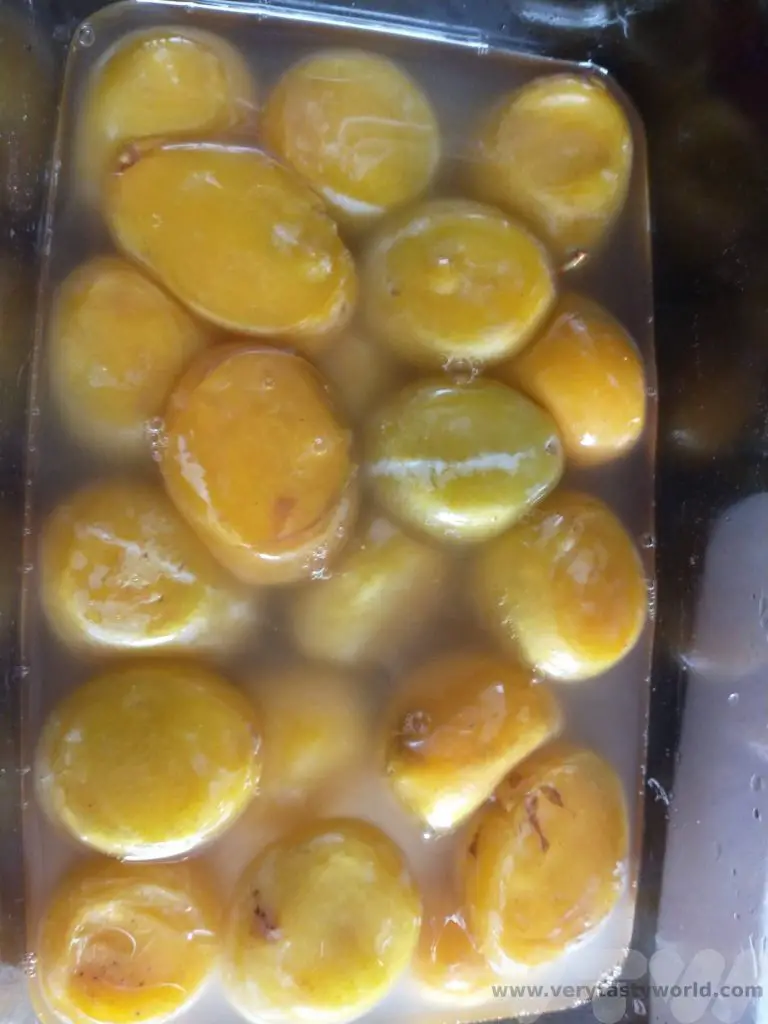
Leave in a cool, dark place for 2-3 weeks. Check the plums occasionally. You will start to see juice appearing in the bottom of the press.
(As with all ferments, if you ever see any mould on the fruit you should throw it away as the spores could cause illness if you consume the plums. It is unlikely that mould will develop with an 8% salt mix as that is lot of salt.)
The next step requires a bit of luck with the weather. Ideally you want a warm, sunny day. In fact, you need three warm, sunny days.
On your sunny day, remove all the plums and place them on a mat, or some kitchen paper, in the sunshine to dry. Place them back in the juicy brine at the end of the day.
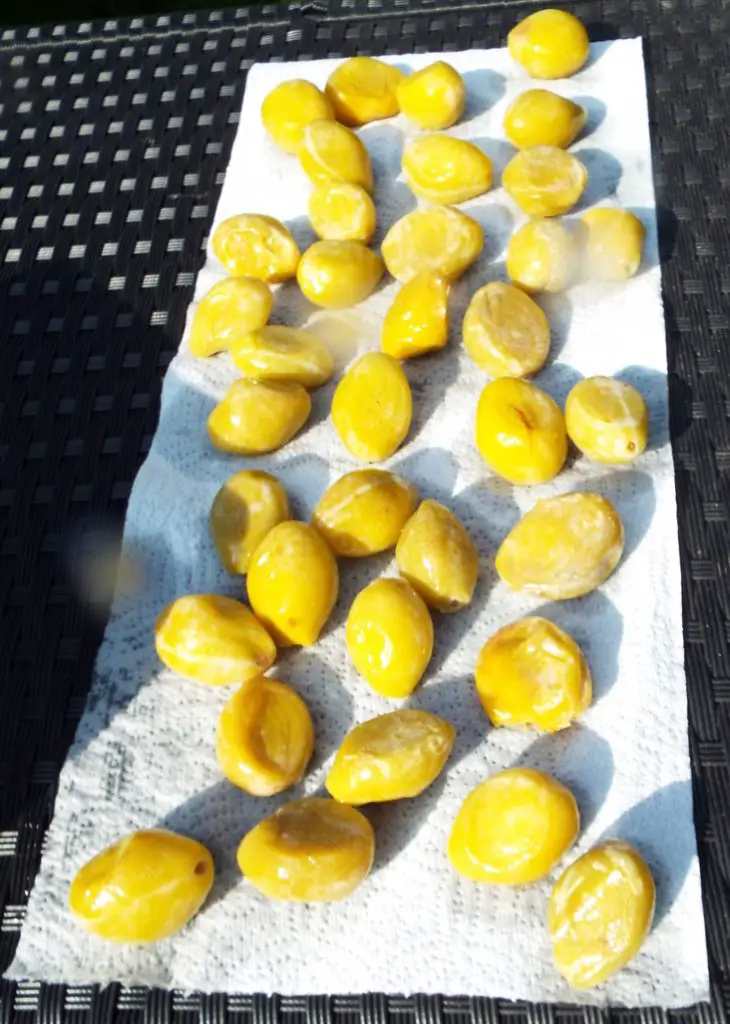
Repeat for a further two days. They don’t need to be consecutive days but it would be helpful if you can dry the plums over the course of a week.
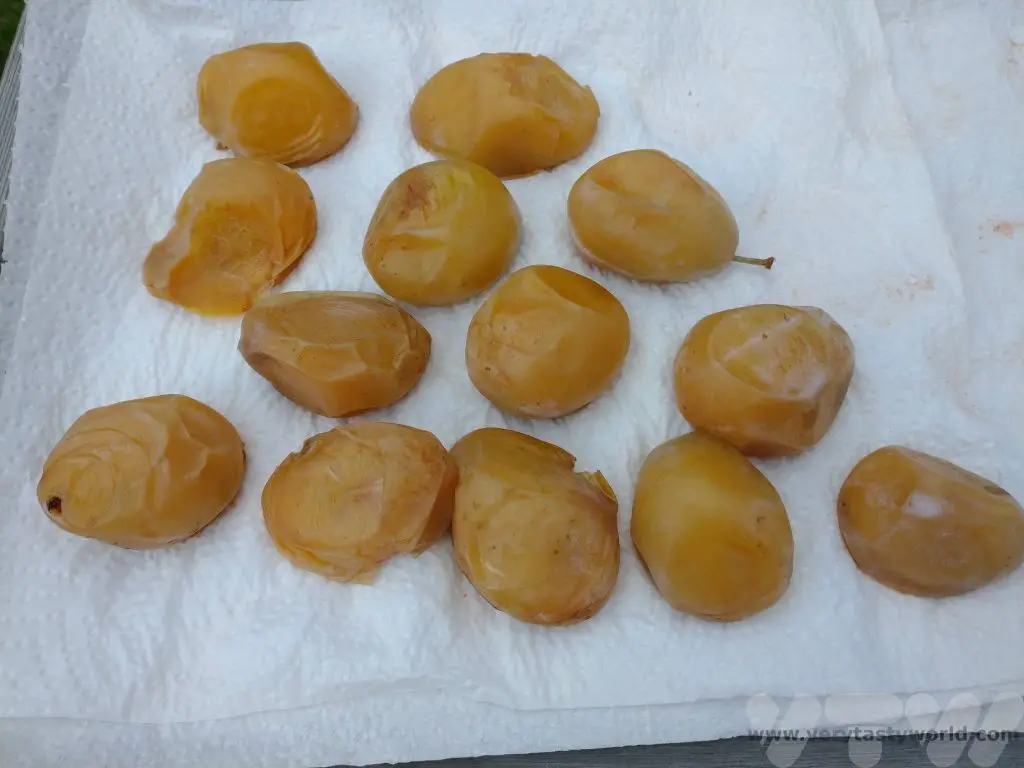
After the third day, you can place the plums in a jar or a plastic container, or even a plastic bag. They will last for months and months. That’s if you don’t scoff them…or have too many hangovers to cure!
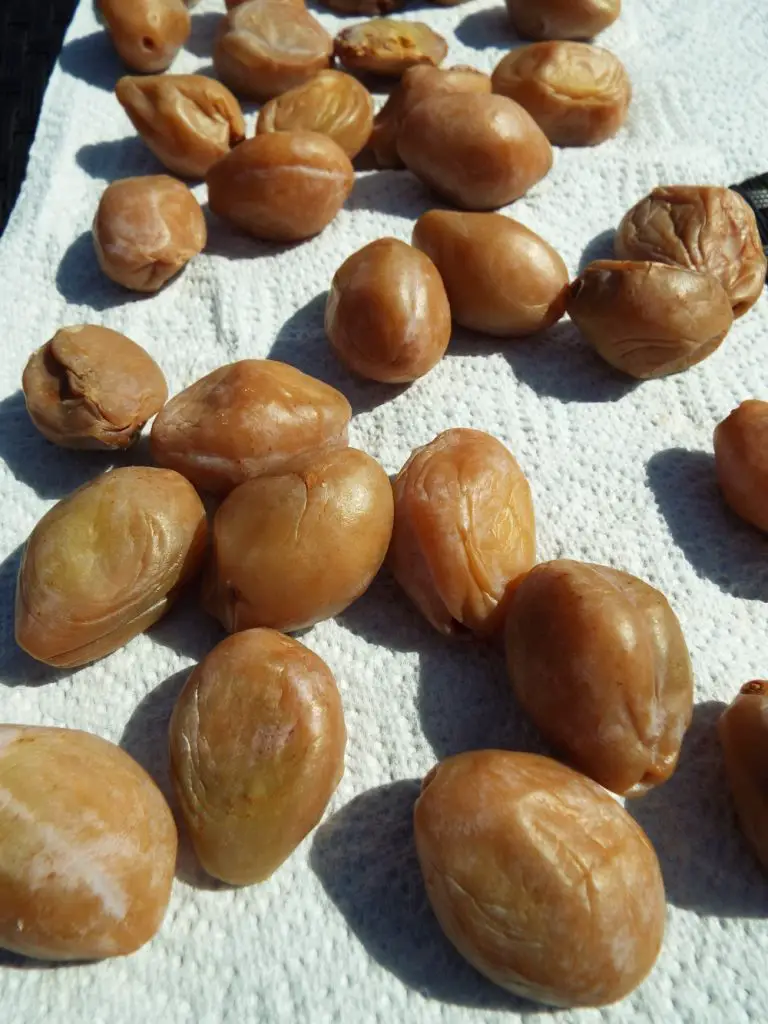
Save the Brine!
We hate food waste so we have devised a way to re-use the salty plum juice brine.
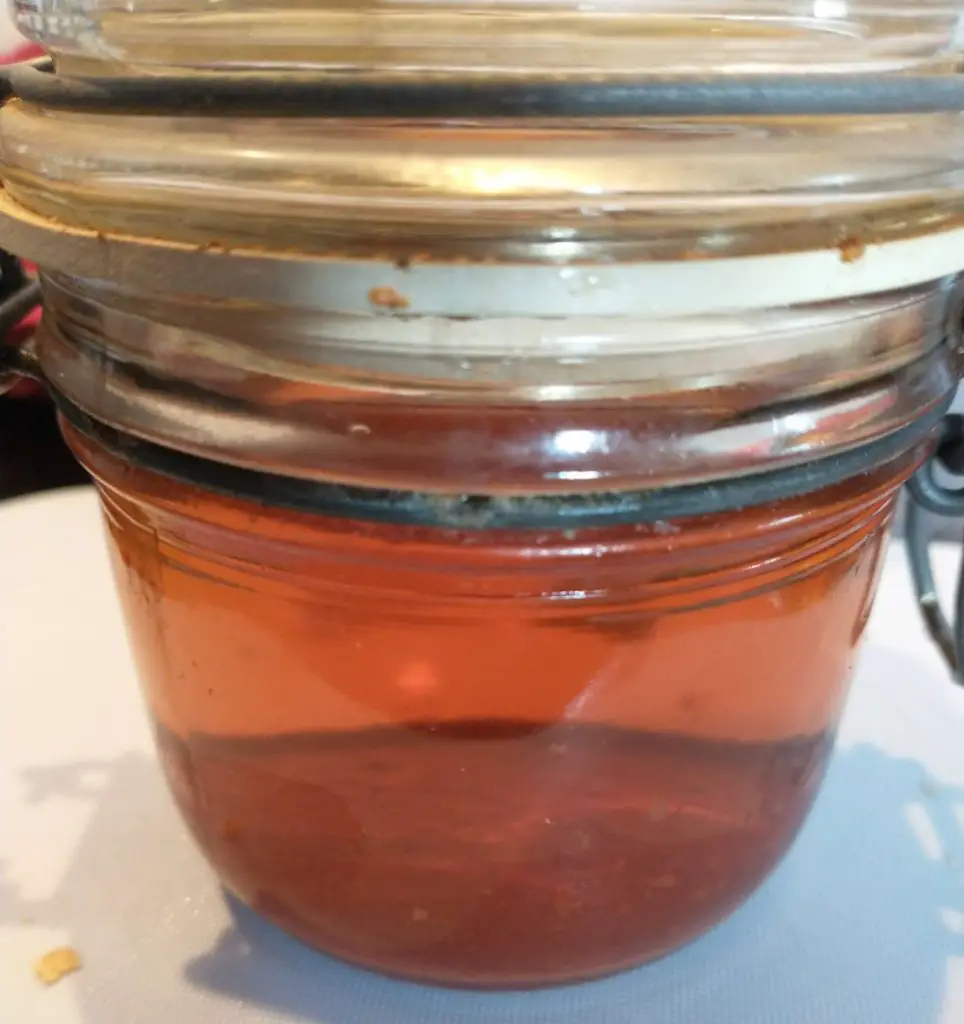
We use it to pickle ginger.
Peel the ginger and cut into matchsticks.
Place them in a jar and cover them with the brine. After a couple of weeks they will be deliciously sour and salty. We use them to add some zing to rice and noodle dishes or as a garnish.
Actually, we have been known to open the jar and sneak a matchstick or two for a quick snack.
Related Posts You May Enjoy

- RECIPE Oyakodon Donburi
- Zero Waste Recipes Before Your Holiday
- RECIPE: Vegetable Biryani Tamil Nadu Style
- RECIPE: Vegan Wild Garlic Pesto
- Recipe: Venetian Pasta Sauce
- RECIPE: Biryani Raita Recipe
- RECIPE: How to Make Costa Rica’s Gallo Pinto
- Recipe: Japanese Simmered Pork Belly – Buta no Kakuni
- RECIPE: How to Make Umeboshi
Visit Plitvice Lakes In Croatia
The Plitvice Lakes are probably one of Croatia’s best known national parks. We had long wanted to travel to this area and see these stunningly beautiful lakes and waterfalls and managed to weave it into our recent itinerary to Bosnia Herzegovina and Croatia. The route wasn’t really optimal – it was quite a long way out of our way – but we were so keen to visit Plitvice, we felt it was worth the extra driving. Driving through the countryside in the region is straightforward and very beautiful, but not particularly speedy. We did have high expectations for Plitvice… and we weren’t disappointed. The Plitvice National park is located by the Zagreb–Split D1 national highway which runs between Slunj and Korenica. It is also close to the Bosnia Herzegovina border – it’s about a half hour drive to the lake region from the Bosnia-Croatia border. We had driven in from Jacje in Bosnia via Bihac to visit Plitvice Lakes.
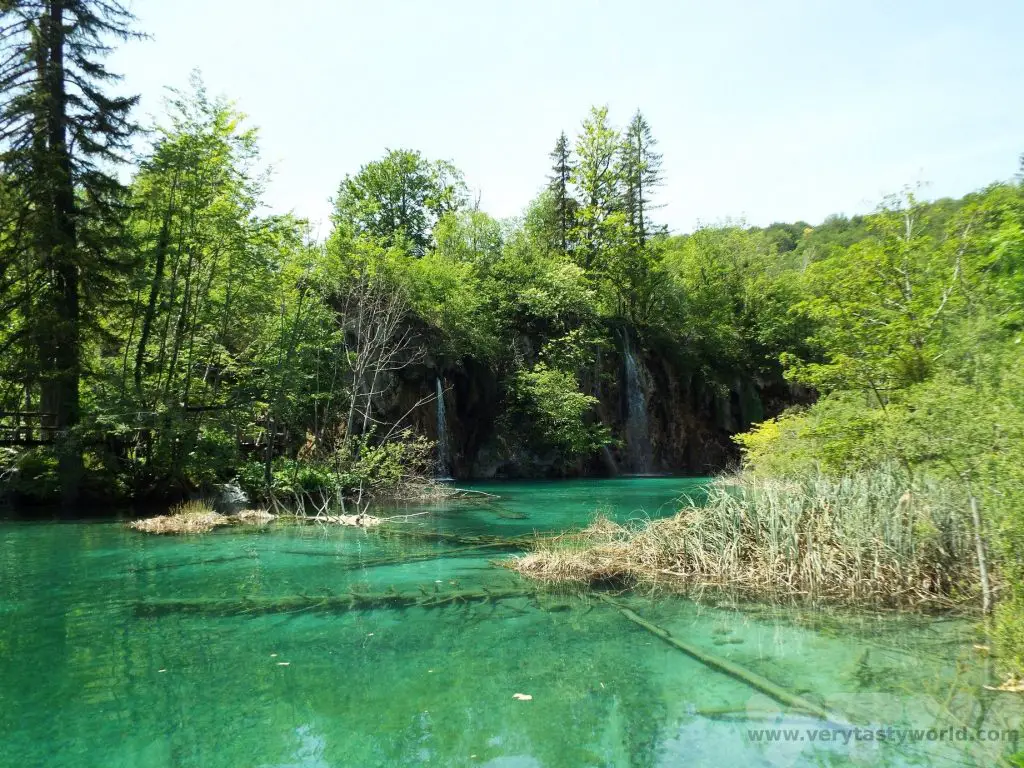
Geography of Plitvice Lakes
The lakes are located across Lika-Senj and Karlovac counties and the area comprises sixteen lakes which are interconnected, cascading into each other via waterfalls within a karst topography, which is mainly limestone or dolomite. The highest lake is Prošćansko (639m above sea level) and the lowest is Novakovića Brod (503m above sea level). The region was designated a National Park and an area of outstanding natural beauty in 1949 and 30 years later became a UNESCO site. The lakes are fed by the Medica river which fills the Proscansko Lake and cascades through the lake system all the way down to the Korana river.
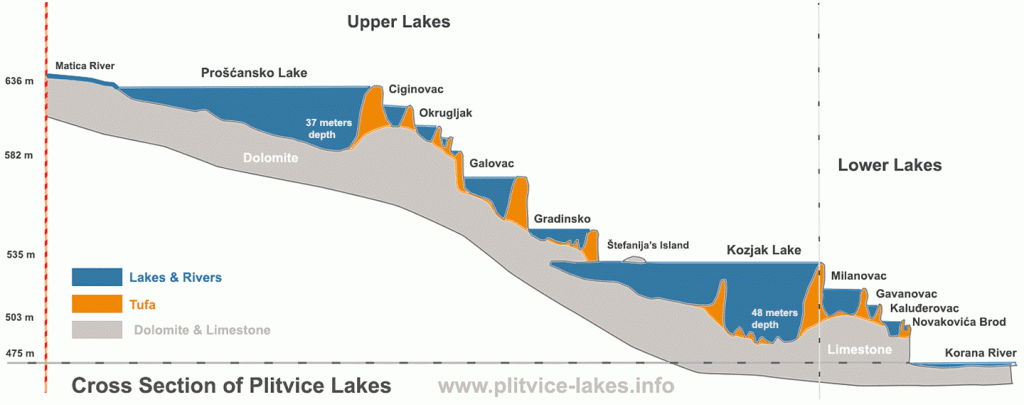
Staying in the Area
The area around Plitvice is largely dedicated to tourism so there are loads of hotels and guesthouses lining the main roads into the area. Some of these feel a little isolated, there aren’t really any significant towns nearby – there are a lot of villages – but there are lots of restaurants and mini-markets. There are also a bunch of companies that offer a number of different activities in the area – you will see the adverts from the roadside.
Plitvice Lakes National Park – Practicalities for the Visitor
You need a ticket to enter the park. It’s possible to buy these in advance and is definitely recommended if you are visiting in the high season in order to avoid the queues. Entrances are timed, you can arrive any time within the hour stated on your ticket.
The official website has all sorts of practical information for a visit to Plitvice Lakes.
There are options for visiting the park depending on how much time you have. Some people explore the area over a couple of days, visiting the lower lakes on one day and the upper lakes on the next. Others might visit the whole site in a day. We were short on time so decided to spend a full day in the park.
Our hotel was located around 4km from the park and we were driving a hire car, so we had a lot of flexibility, but there are busses that come in from all over Croatia, notably the cities – Split, Zagreb, Sibenik and Zadar amongst others. There are bus stops with ticket booths located on the road close to each entrance – they look like log cabins.
We chose to arrive for the 9:00am slot, at entrance number 1. The car parks are well marked from the road and are also ticketed – you pick up a ticket on arrival at the barrier then pay for the hours you use just before you exit. You have around 15 minutes to leave after you have paid. The car parks are located around a five minute walk from the park entrances. There’s a wooden bridge across the road.
Inevitably, as with many popular attractions, trails are crowded at the start of the route – even at 9am and in springtime. In retrospect we should have arrived earlier. Entrance 1 is located closest to the lower lakes and you generally follow the crowds along the paths.
There are a number of routes around the park which are clearly marked, depending on where you start and how energetic you are feeling. We recommend wearing comfortable shoes and making sure you have protection from the sun and possibly wet weather gear if the forecast suggests it might rain. Also, make sure you take water if you are planning on a long walk. There are facilities at both entrances as well as the P3 boat docking point. It’s fine to take a picnic with you but, of course, take all rubbish away with you. We did spot a number of park litter pickers along our walk – the site is absolutely pristine so it’s important to keep it that way.
Finally, you are not allowed to swim in any of the lakes, despite how utterly inviting they look on a warm spring day.
Visit Plitvice Lakes – The Lower Lakes
Entrance 1 follows a path that leads to the four lower lakes. The view from the top offered a taste for the day to come.
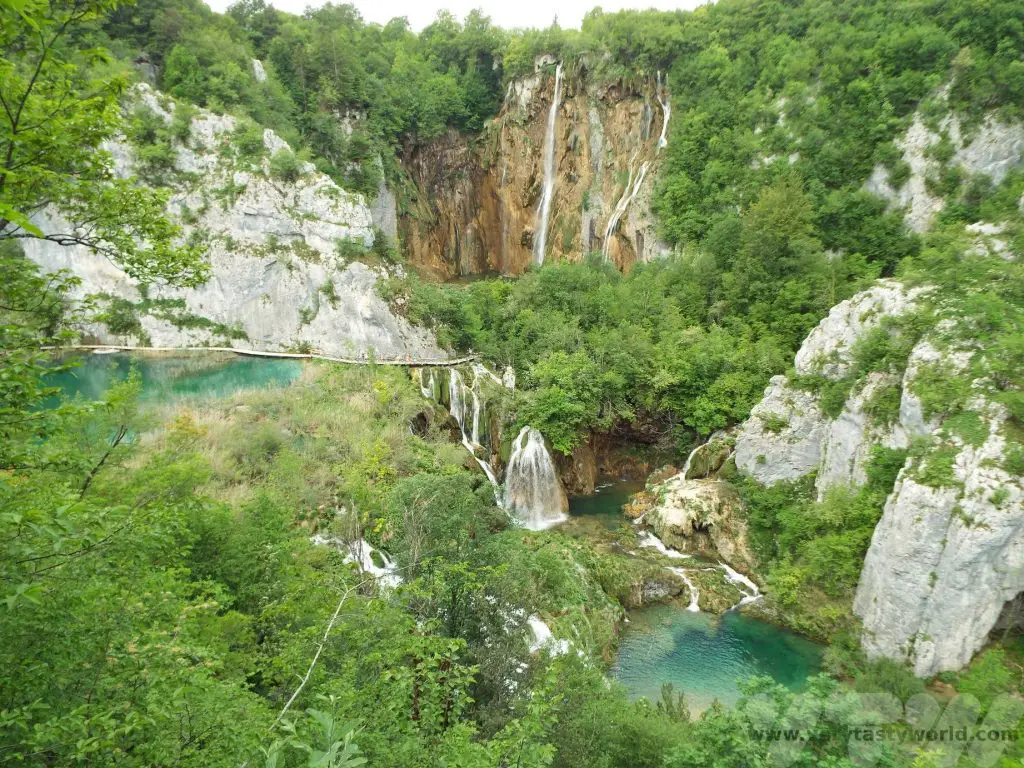
The boardwalk gets a bit congested as there are plentiful visitors and the route isn’t very wide. However, this was the only place we really had to queue, apart from waiting for a boat.
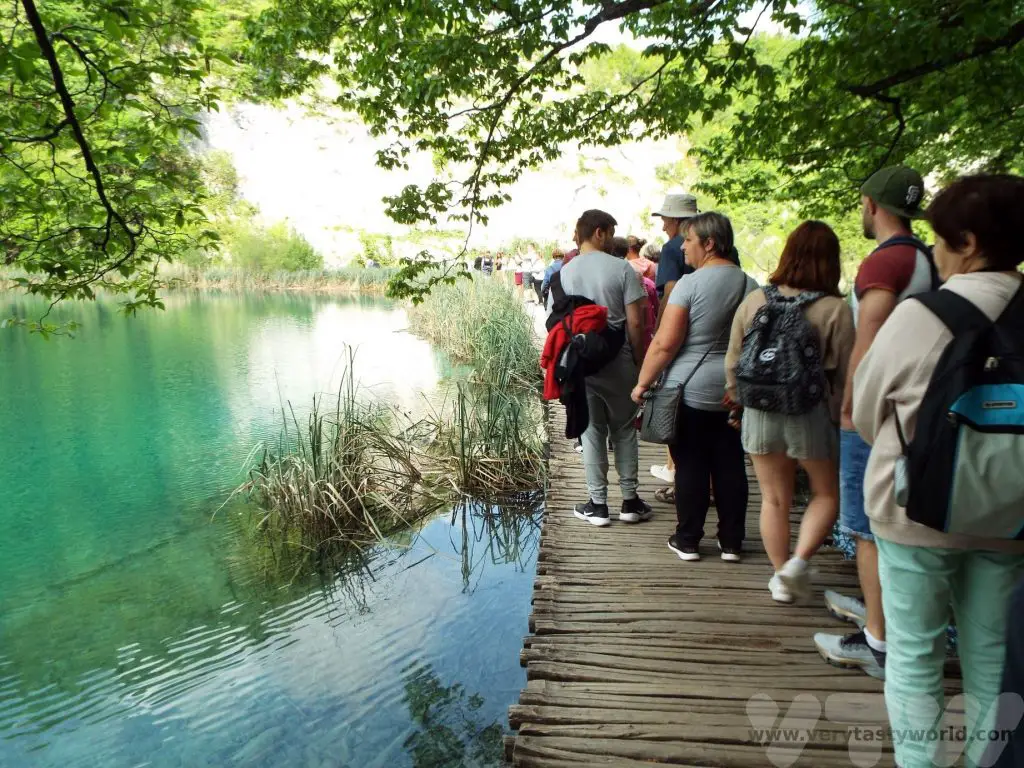
We saw a snake swimming through Kaluđerovo jezero, the second lowest lake.
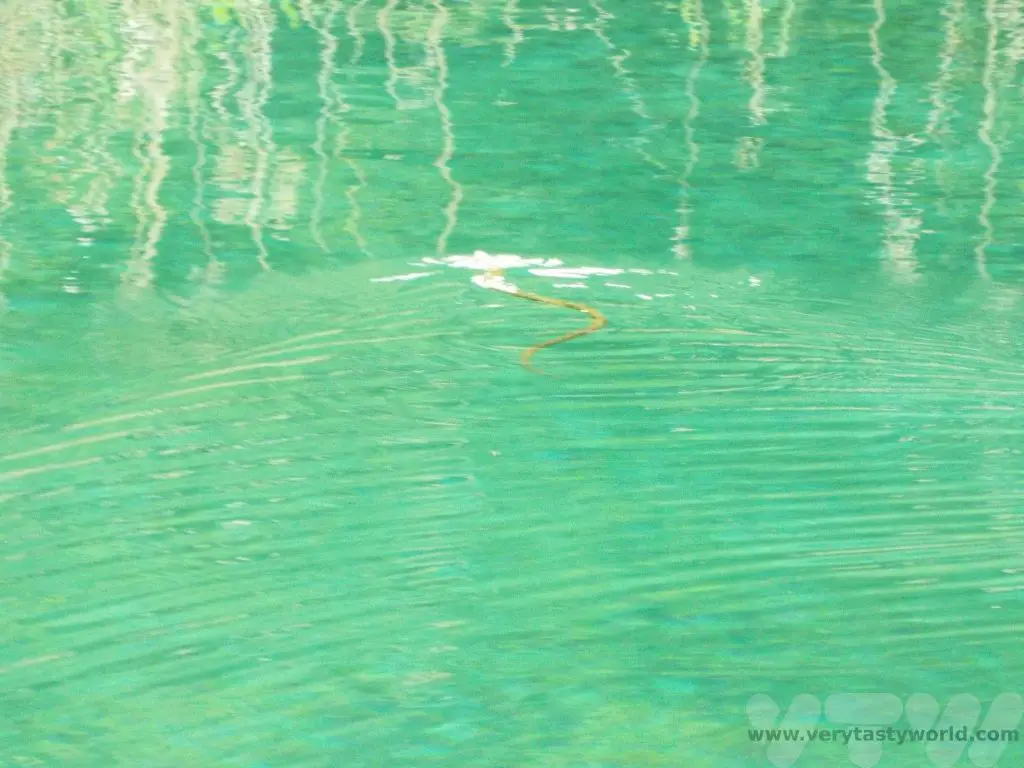
The lowest lake is Novakovića Brod and at the end of the system you can see the Sastavci waterfall, an 87m drop.
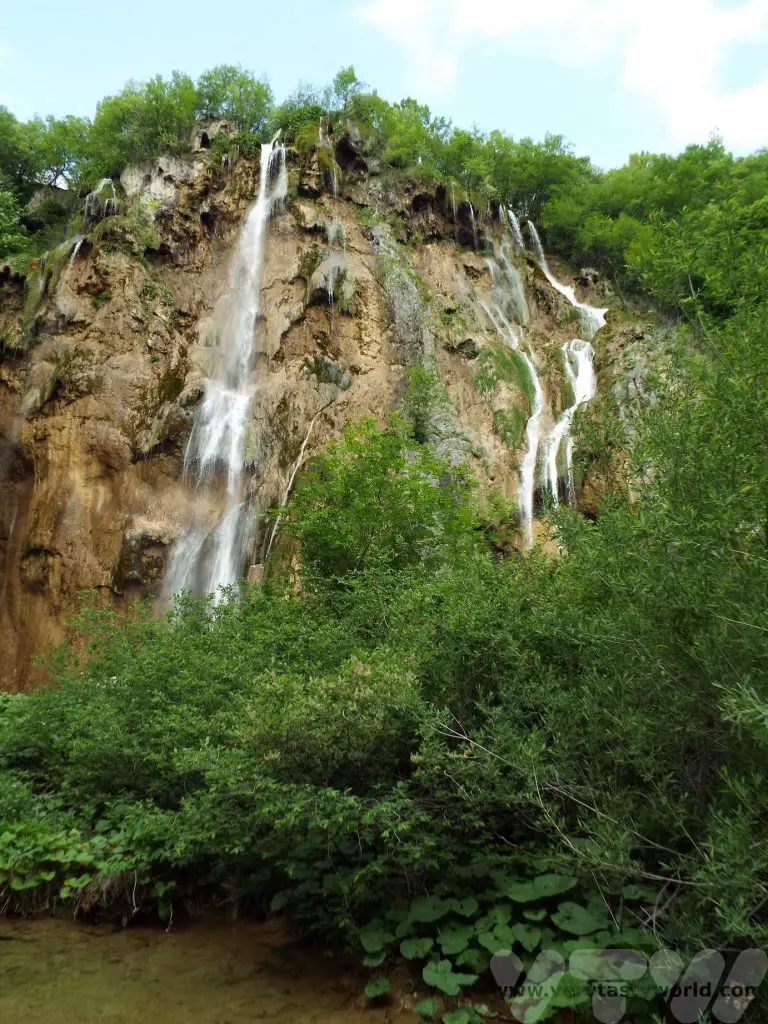
There’s a little bit of doubling back to reach the upper lower lakes, Gavanovac and then Milanovac.
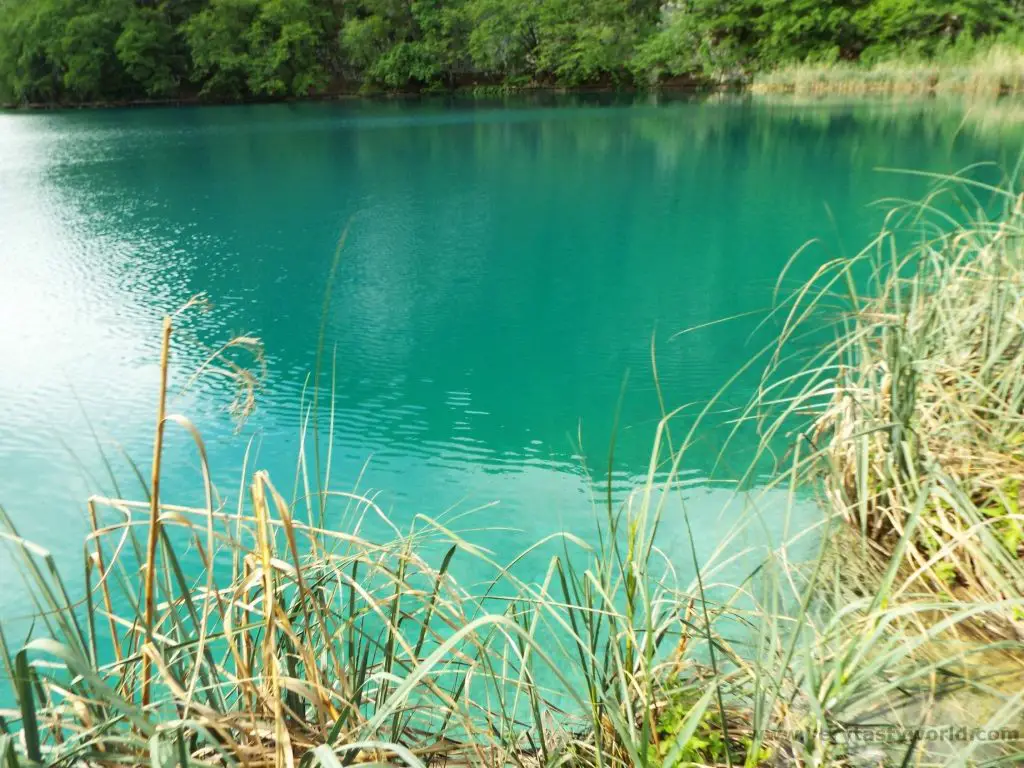
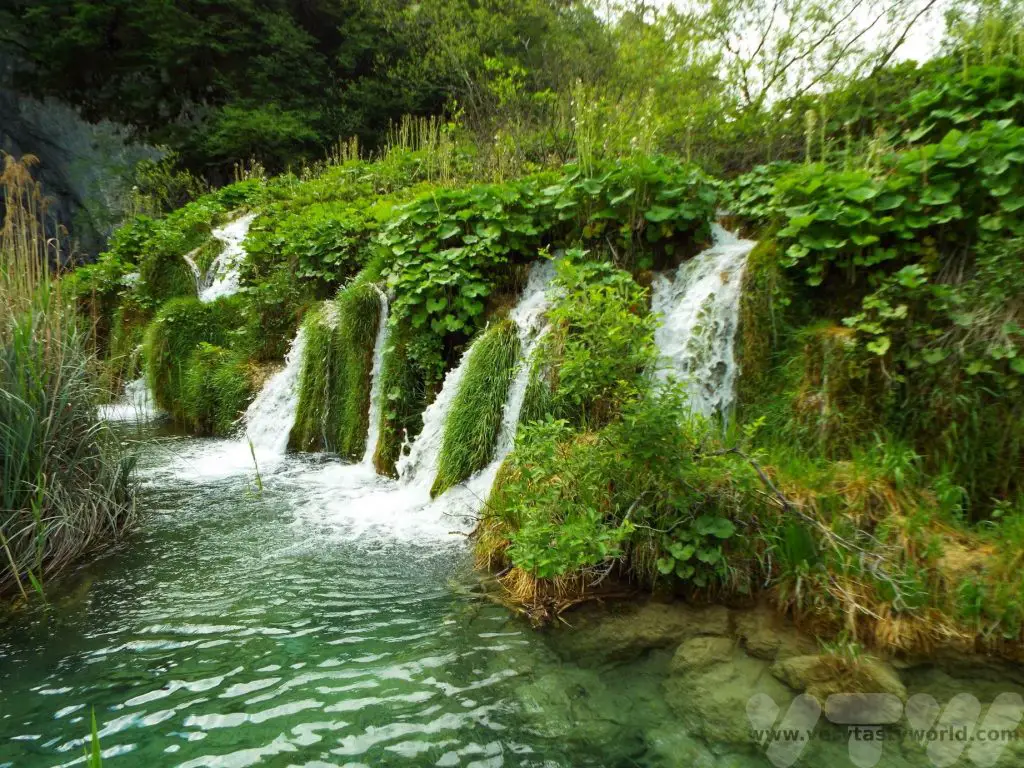
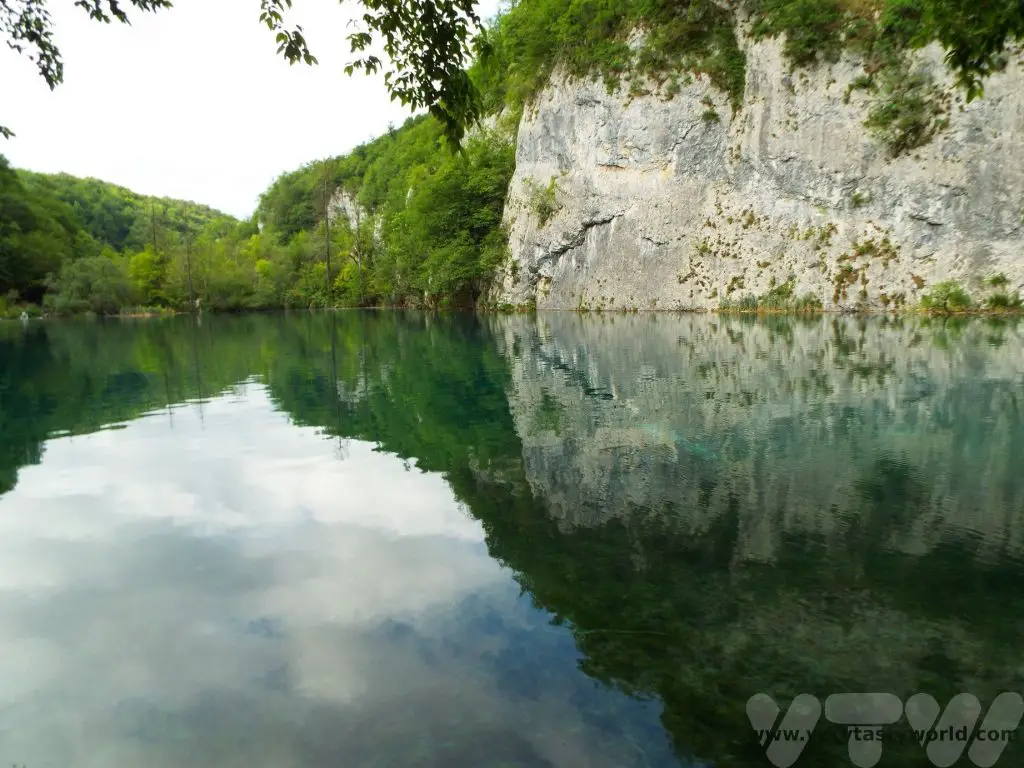
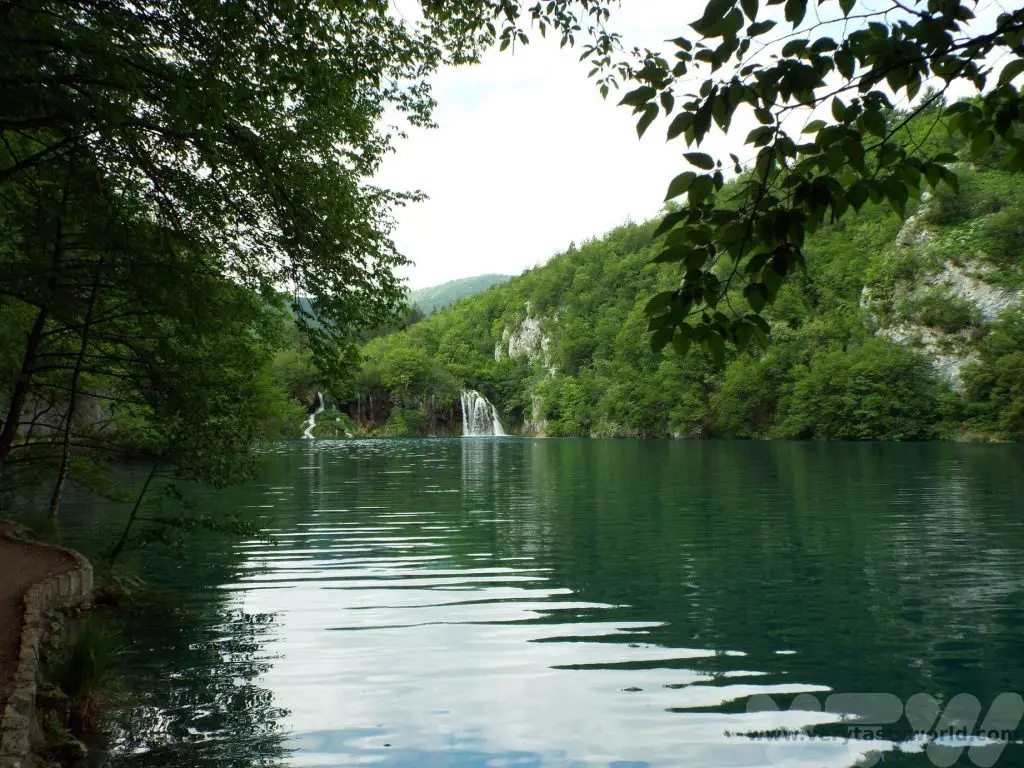
A Long Walk
Having explored the lower lakes we walked to Jezero Kozjak lake, which is actually the lowest of Upper Lakes and both the largest and deepest of all the lakes in the area. It has an area of 82 hectares and a depth of 47 meters at its deepest point. It also features the little island Stefanijin otok. When we arrived here, where we faced some choices. This is the lake which offers boat rides to the upper lake area. When we arrived there was already a queue forming. At the time it seemed as though there was only one boat every half hour and it looked like a pretty long wait. So we reviewed the trail maps and opted for Route K – to walk the entire perimeter of the park. It’s around 18km in total but, for us, it was the perfect choice.

We started off on the trail and the crowds soon melted away so that we could walk beside these stunningly beautiful lakes, virtually alone, save for a few others who had also decided to take a long walk. The trail skirted the edge of Kozjak lake and then took us into the woods on a climb to the upper lake area. The walking was generally easy, the trails well marked and the upward slopes weren’t challenging. It was also a glorious day.
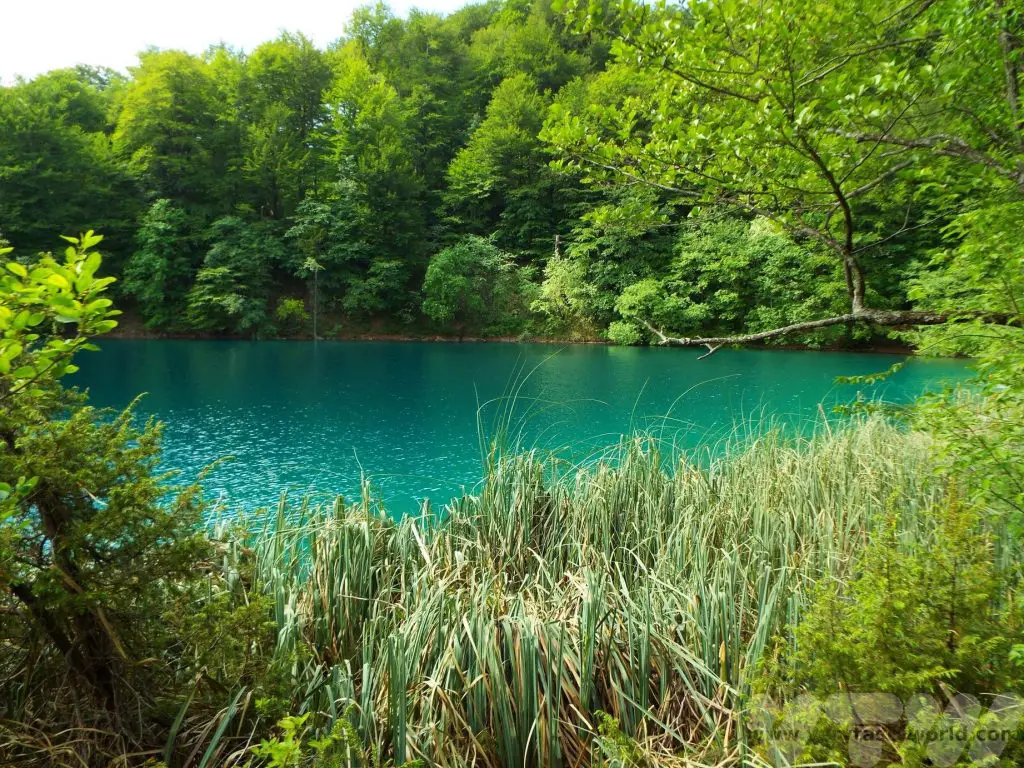
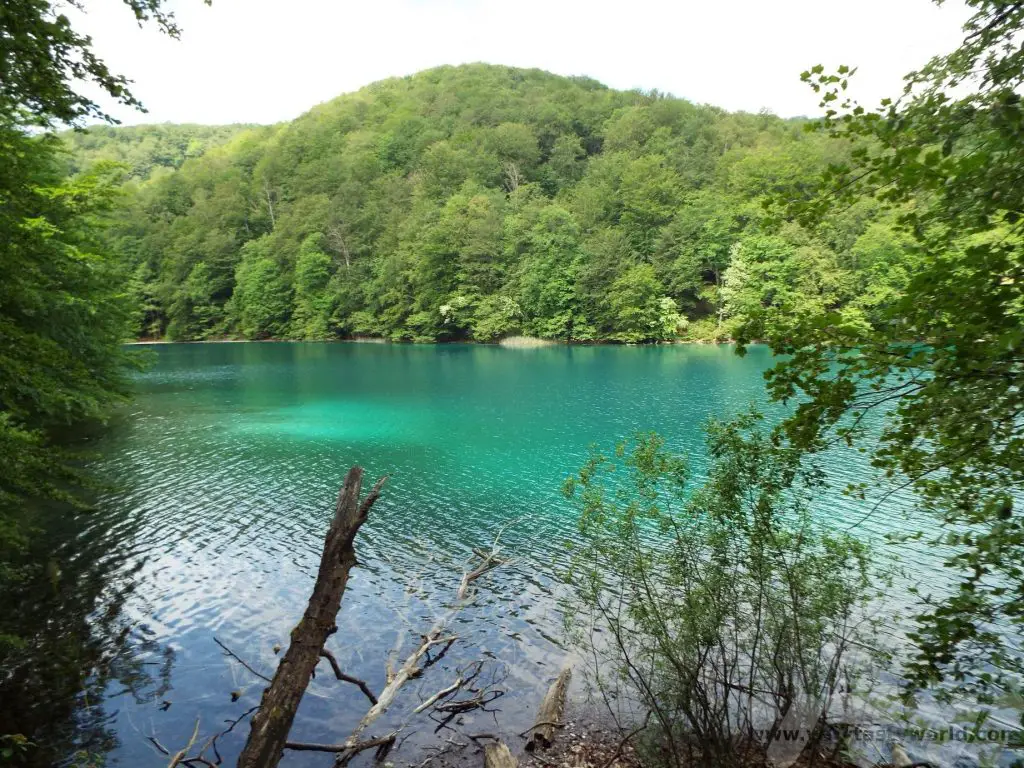
Visit Plitvice Lakes – The Upper Lakes
The walk took us through a quiet, shady forest where we met a slow-worm sunning itself…
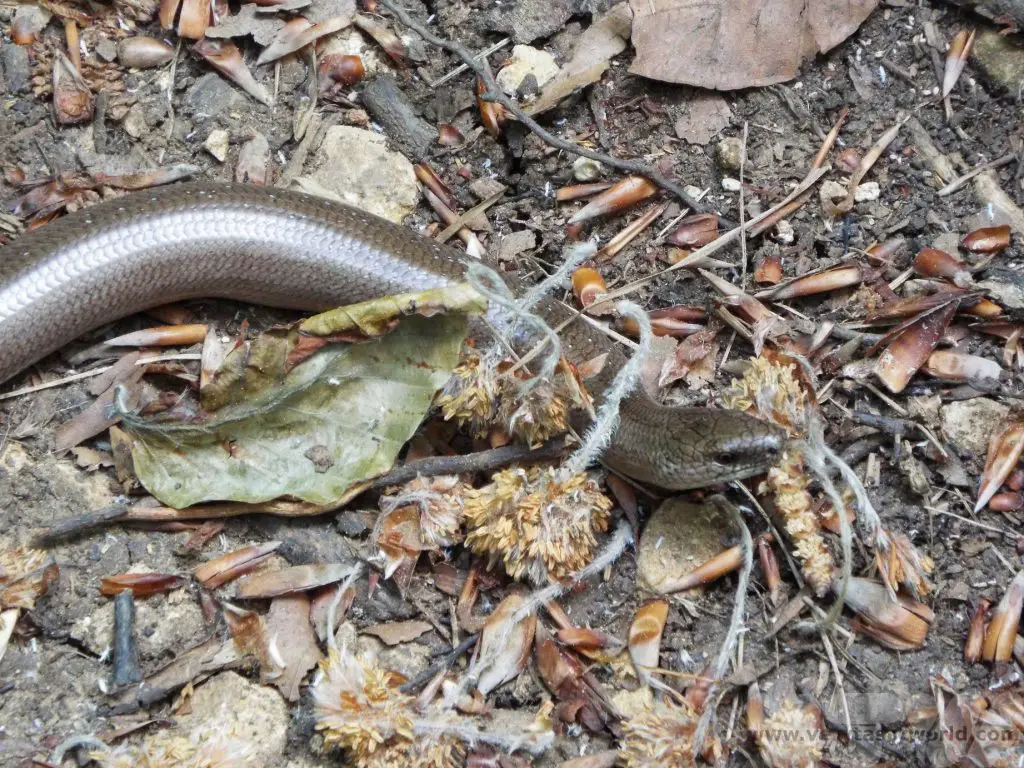
..and after an enjoyable walk through the trees we emerged back into the sunlight to get a spectacular view of the upper lakes.
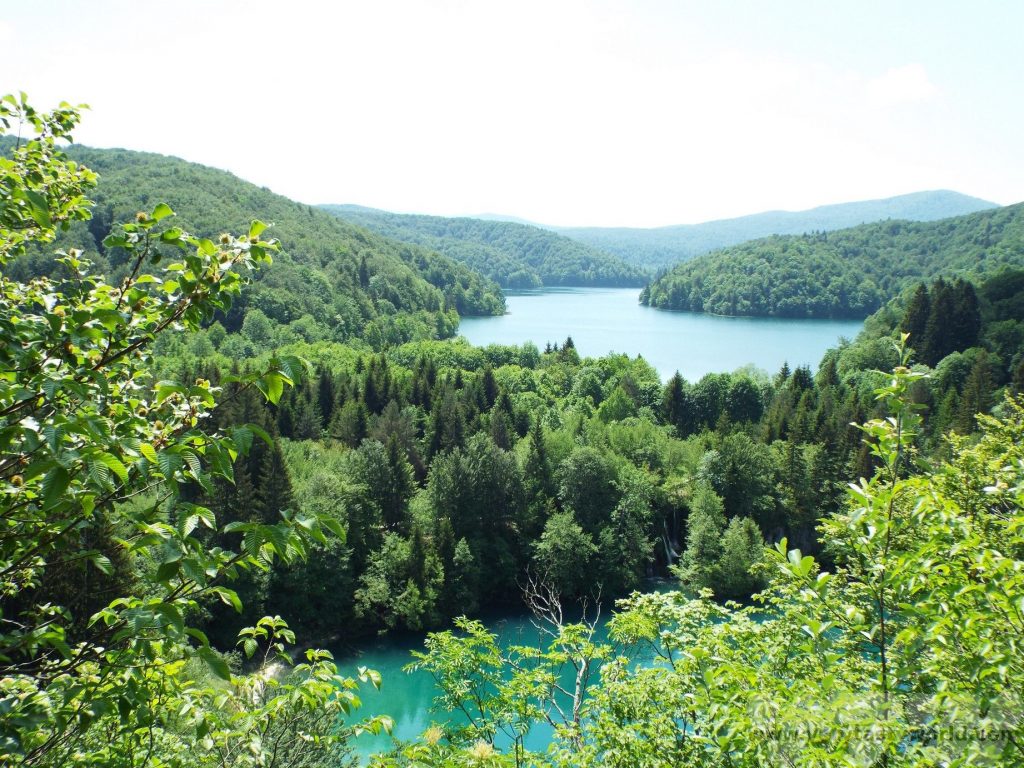
The is the waterfall flowing into Lake Okrugljak from Lake Ciginovac.
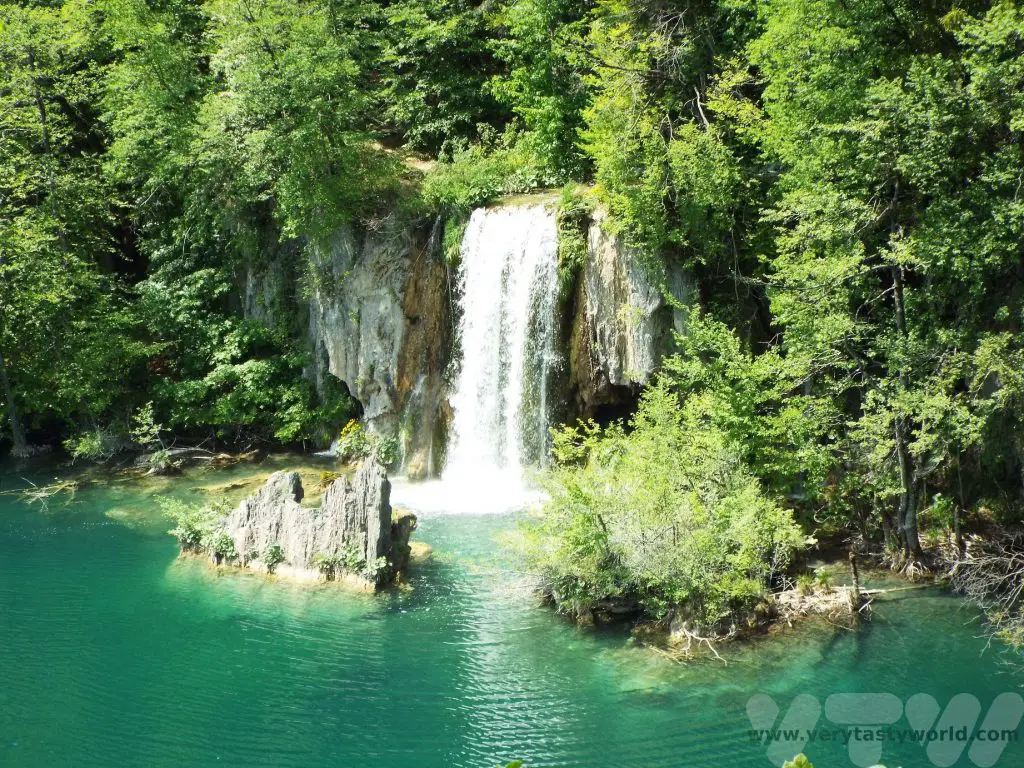
The upper lakes are just as beautiful as the lower – crystal clear and with a gorgeous turquoise hue.
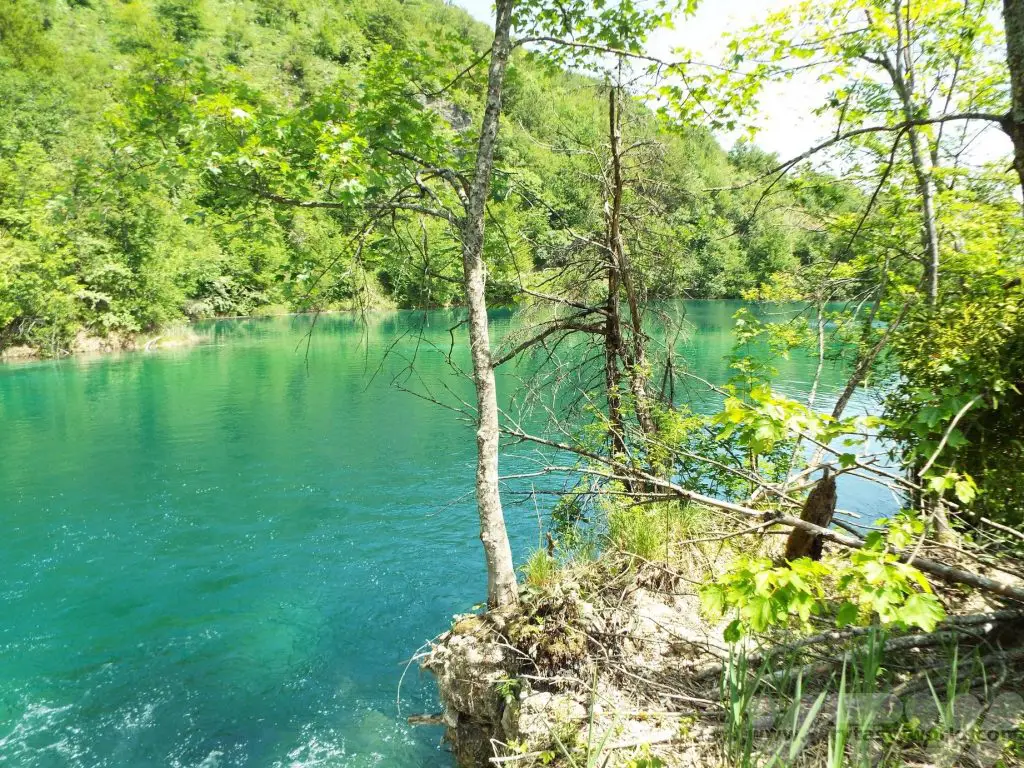
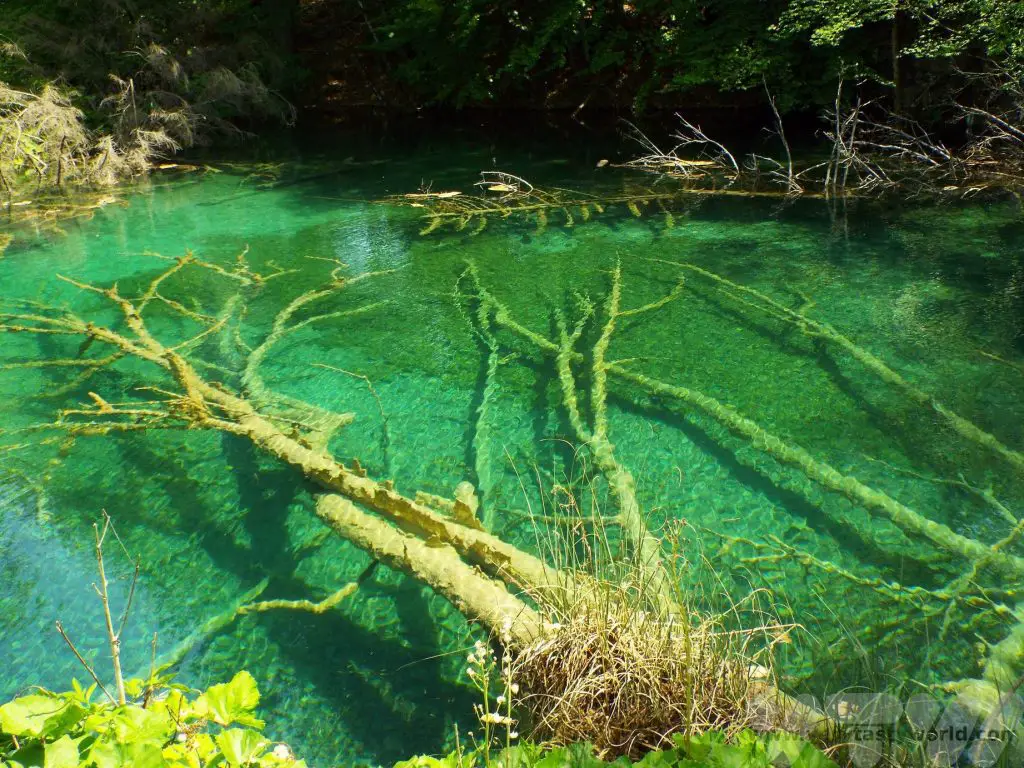
Just follow the boardwalk…
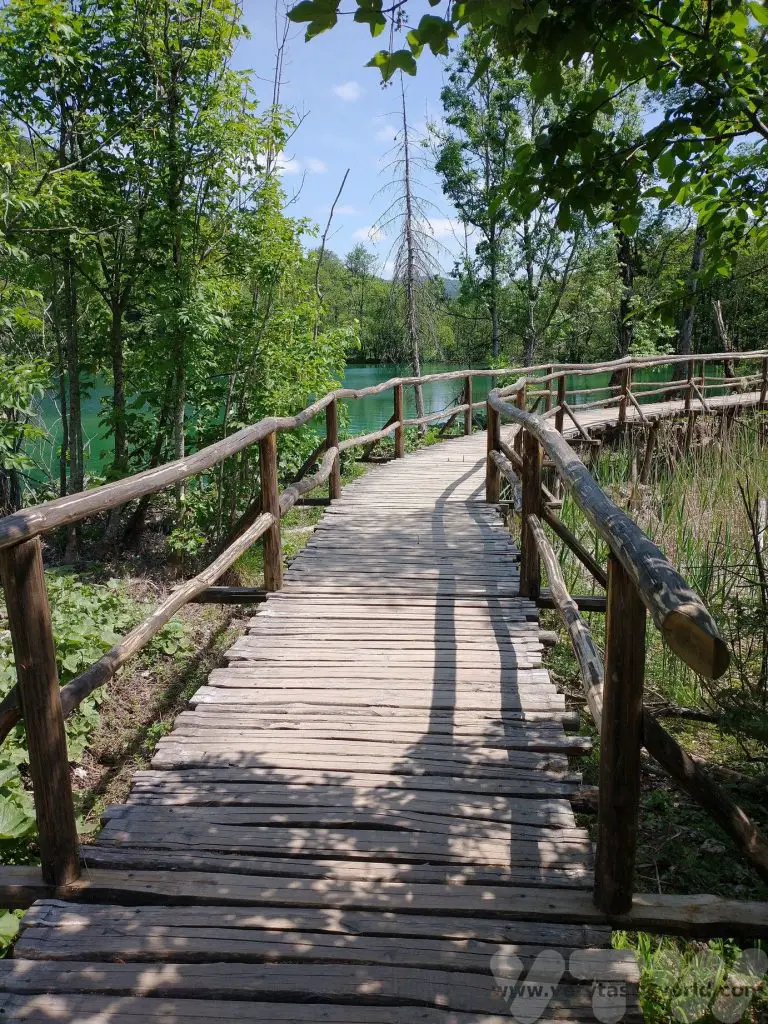
The route takes you very close to the waterfalls and cascades…
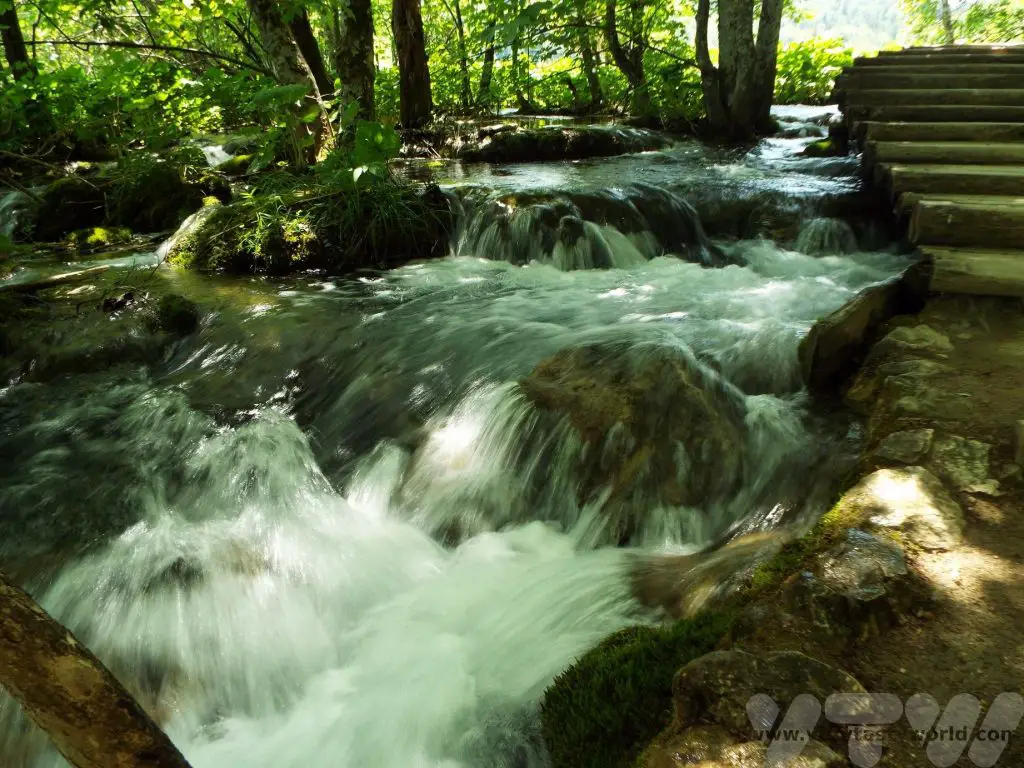
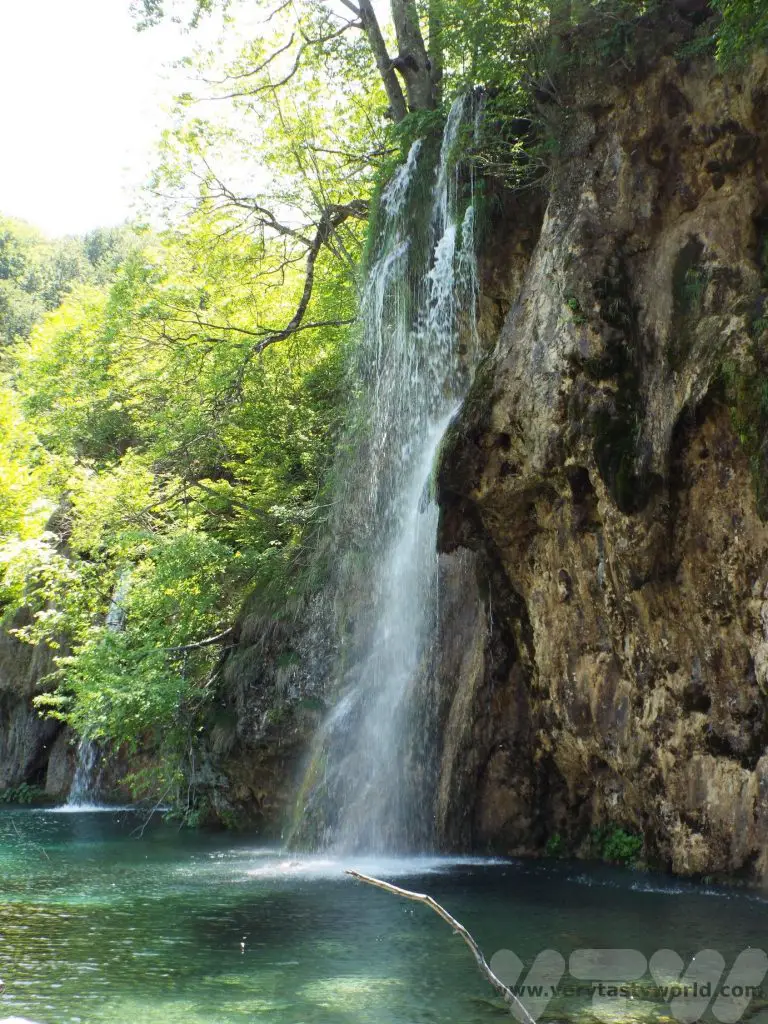
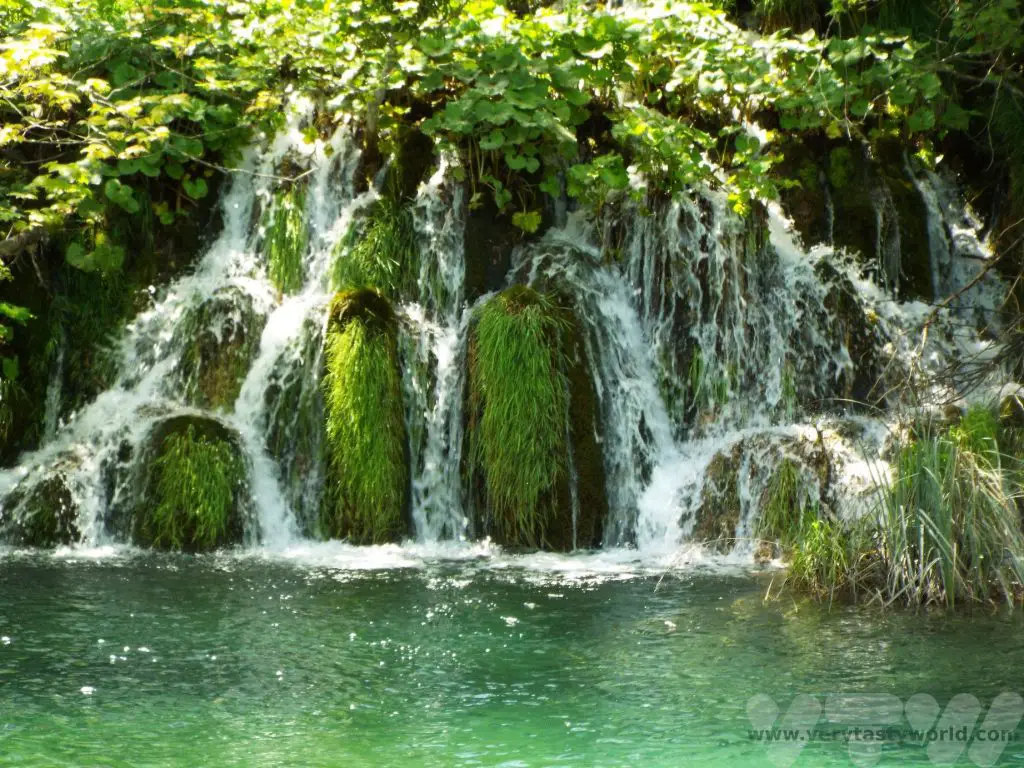
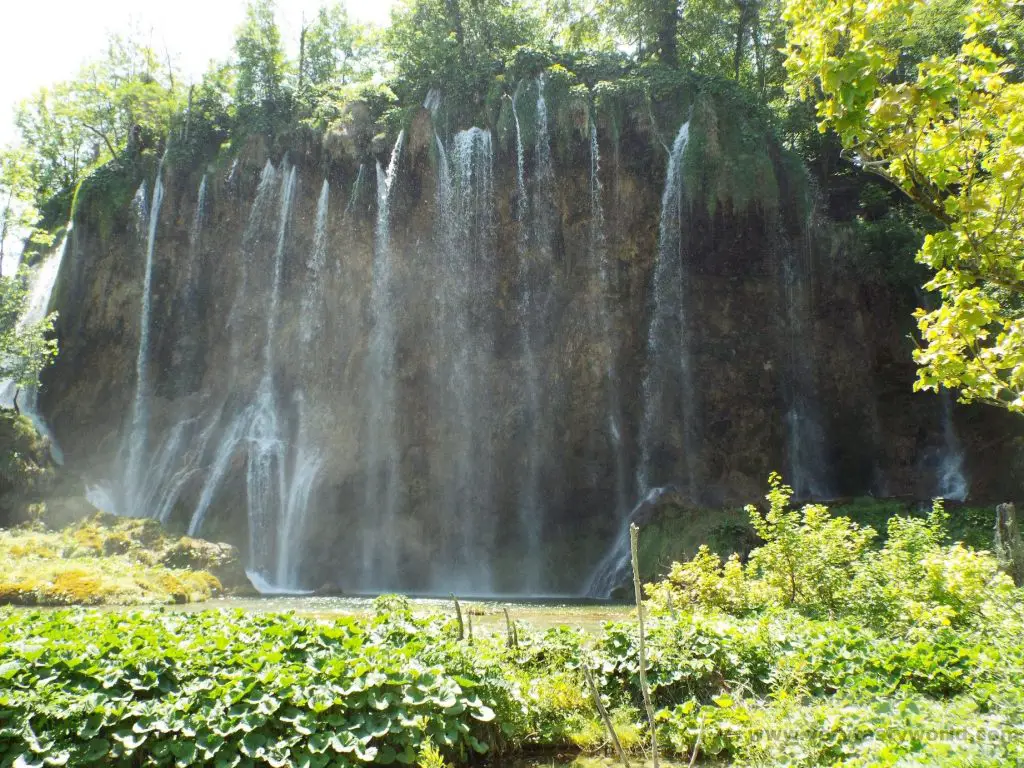
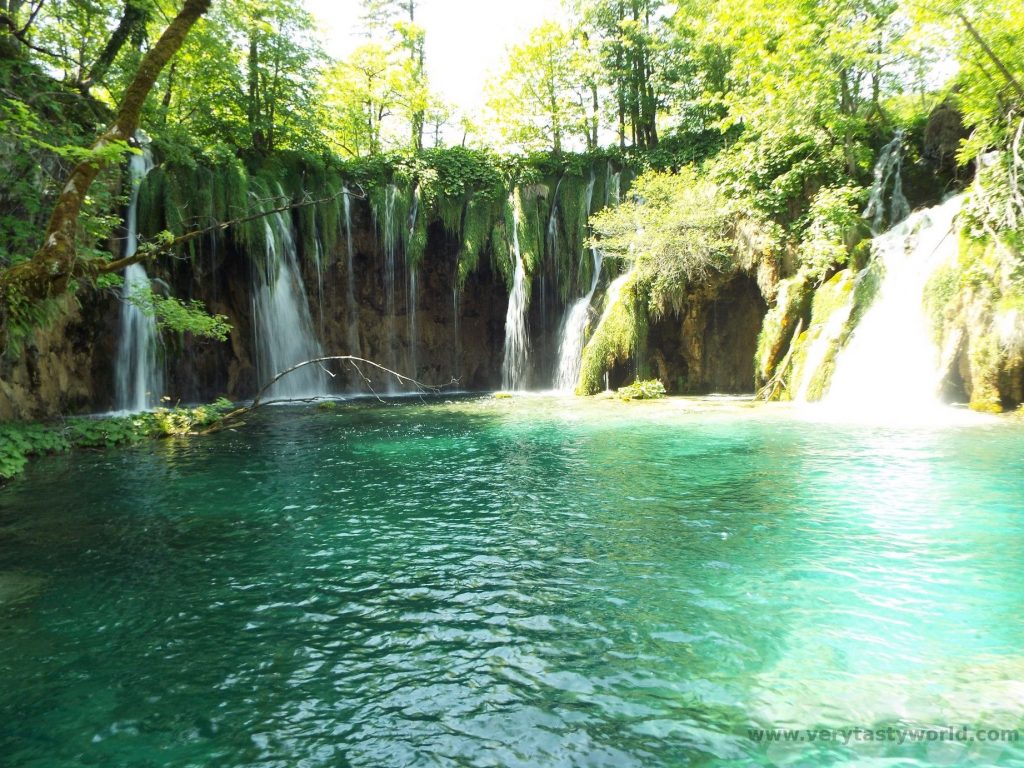
We also spotted some noisy frogs in the reeds.
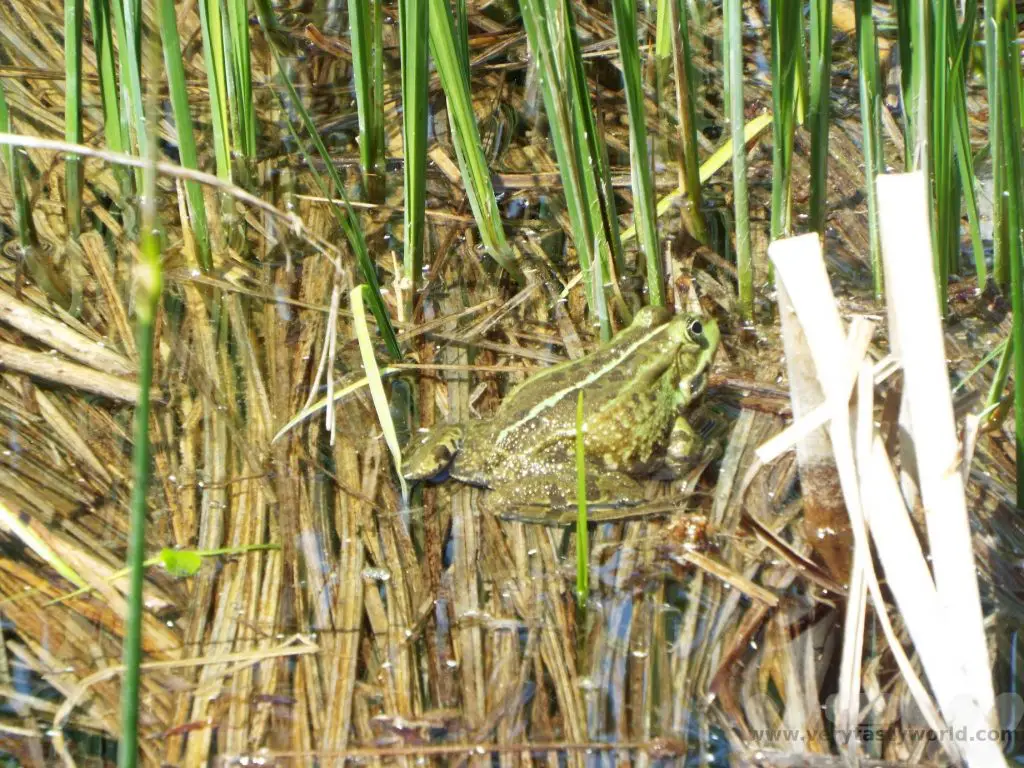
The upper lakes weren’t as crowded as the lower lakes but there were a few bottlenecks at particularly pretty lakes or falls, when people blocked the boardwalk as they tried to take their perfect instagram shot.
An Unexpected Boat Ride
Initially we didn’t realise that, despite our intention for walking the entire circumference of the park, the trails don’t quite follow the perimeter of all the lakes. If following the K route there will be a need for a short – 5 minute – boat trip. Boats shuttle back and forth regularly and are included in the price of the ticket – just queue for the boat (hoping the queue isn’t too long) and hop on. The dock is very close to Entrance 2. (If you are parking at Entrance 2 this would be the perfect place to start/end the walk in the opposite – i.e. clockwise – direction.) We continued our walk along by the waterside of Jezero Kozjak towards our starting point at Entrance 1.
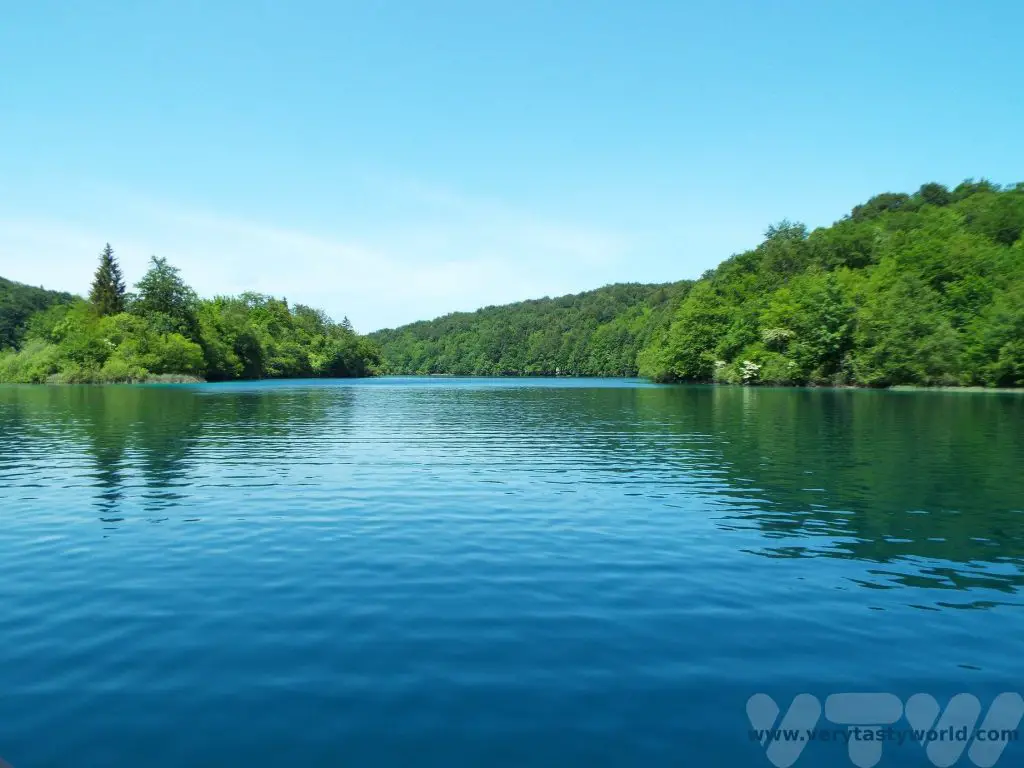
Other Places To Visit – The Caves of Barac
Due to the limestone geology of the area, Croatia has thousands of cave systems. The Caves of Barac, located about 20km drive from Plitvice are also worth visiting. You can have an hour-long guided tour of the upper cave. It’s a show cave which includes some impressive stalactites and stalagmites but also some has some interesting features on display.
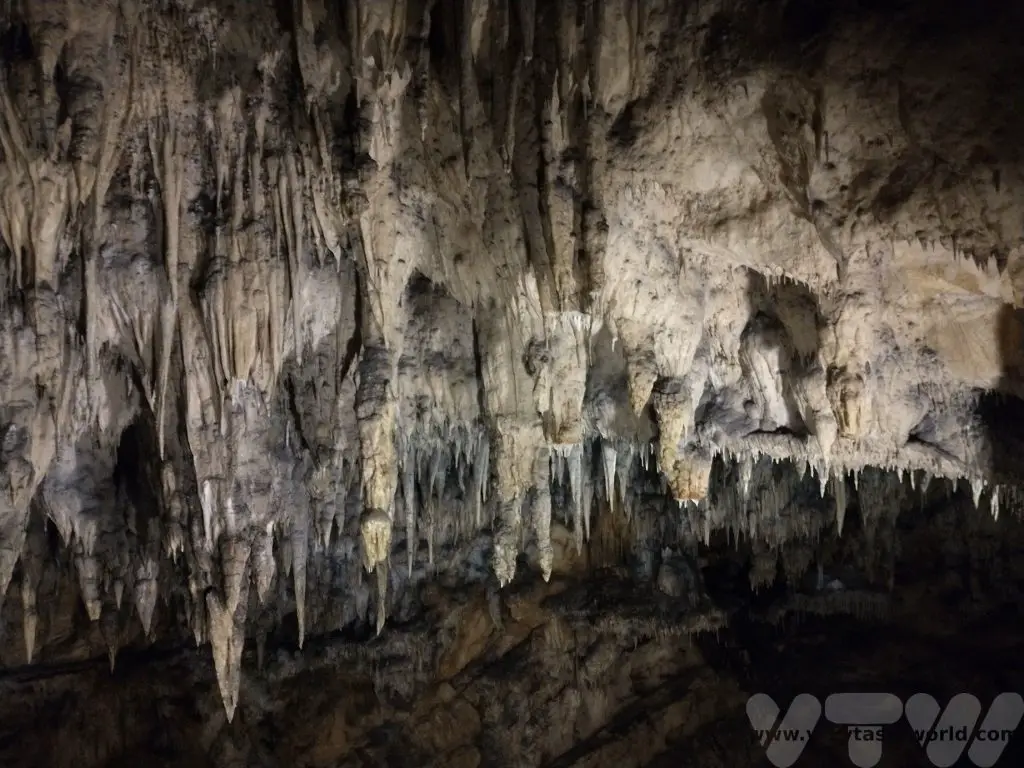
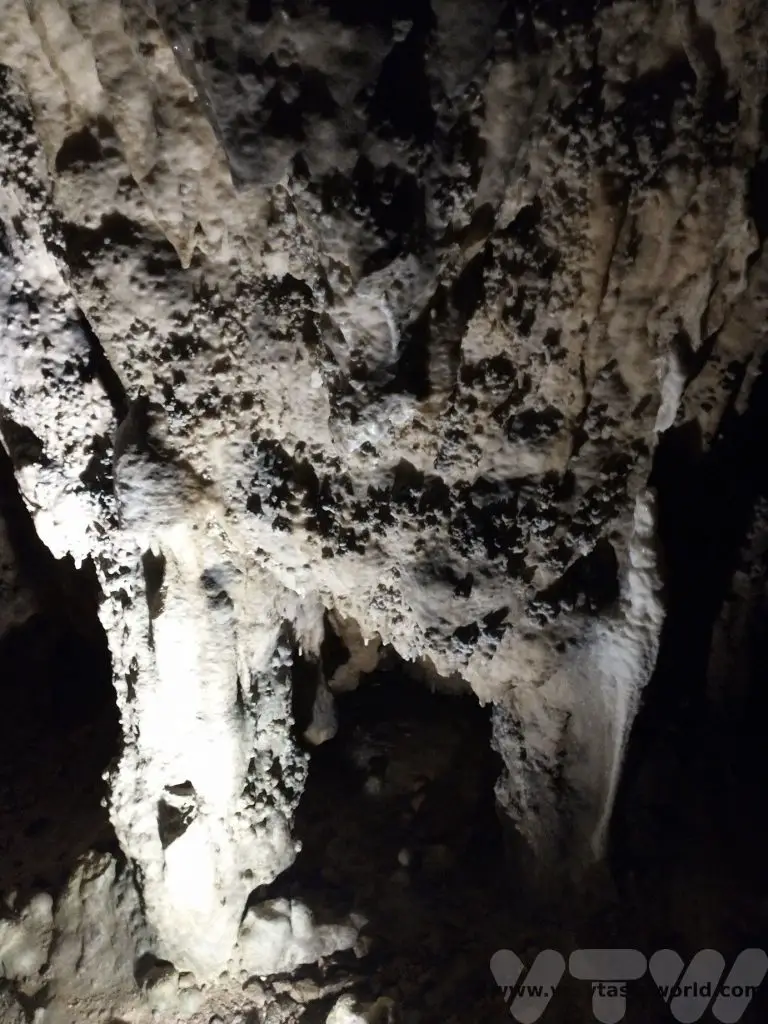
The photo below shows the skeleton of a young bear that fell into a crevice during the Pleistocene era . The bones are the same size as you would expect of an adult bear but bears were enormous back then – an adult would have been 3m long and could have weighed up to 1000kg. They were also vegetarian apparently. This bear would likely have entered the cave to hibernate but sadly never emerged into the sunshine. (The helmet is an artefact from the species greater carelessius touristicus and dates from 2022!)
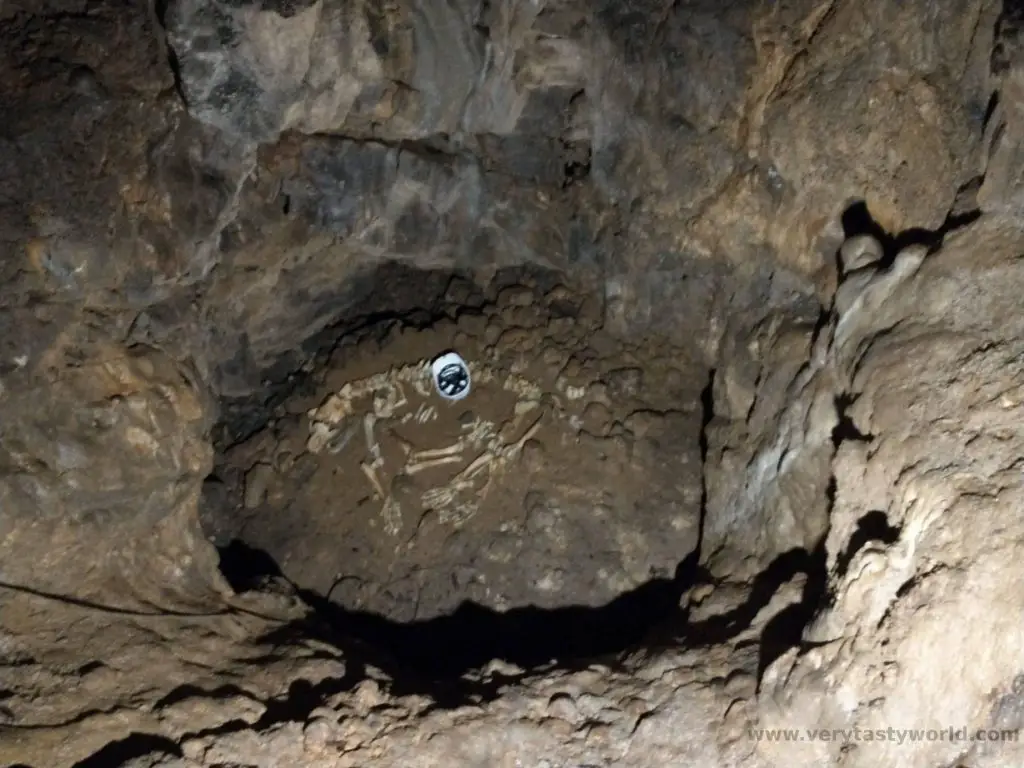
Similarly artefacts showing evidence of human habitation can be seen.
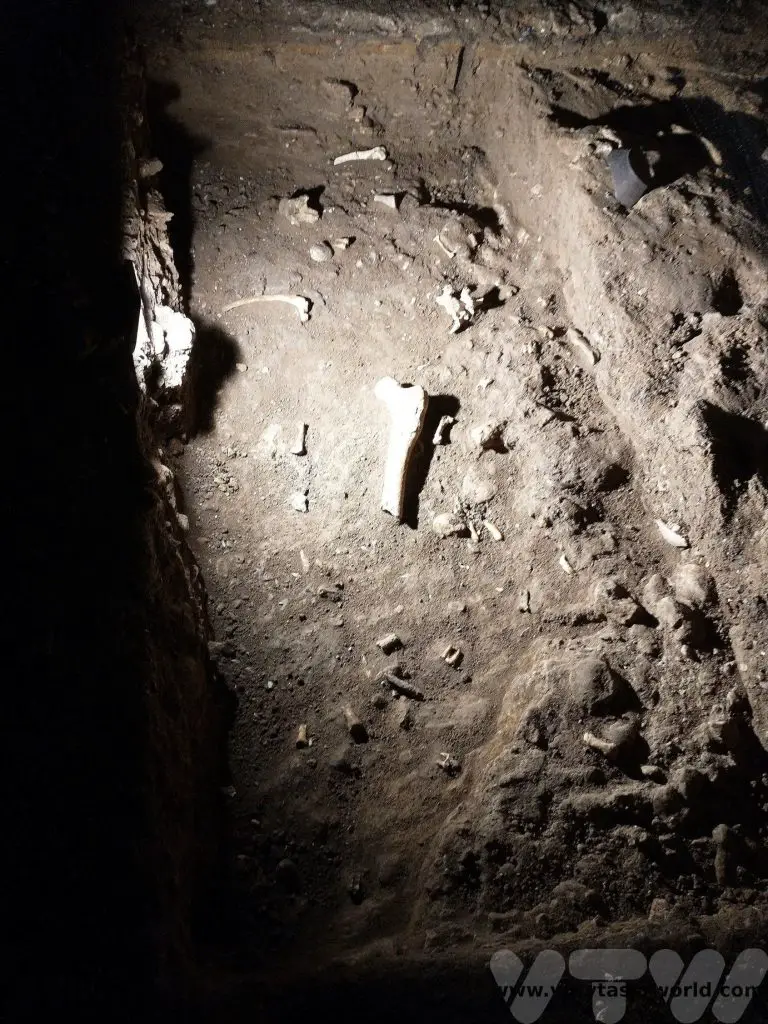
When inside the cave system our guide turned out the lights and we experienced total blackout. The caves are incredibly dark, even just tens of metres from the entrance, so it is very easy to understand how a bear or human could have wandered in, got lost and ended up falling into a canyon and not finding their way out.
There are around 100 bats living in the cave. We visited in the late afternoon, just as they were waking up. We caught a glimpse of one fluttering sleepily around the cavern before heading our to taste some delicious insects.
The caves are delightfully cool inside, a welcome relief from the heat of the day, but if you are likely to feel the cold, bring a jumper or jacket. The ticket salesman knew we were British the moment he suggested that we wear a coat inside and we thanked him but told him we didn’t need one!
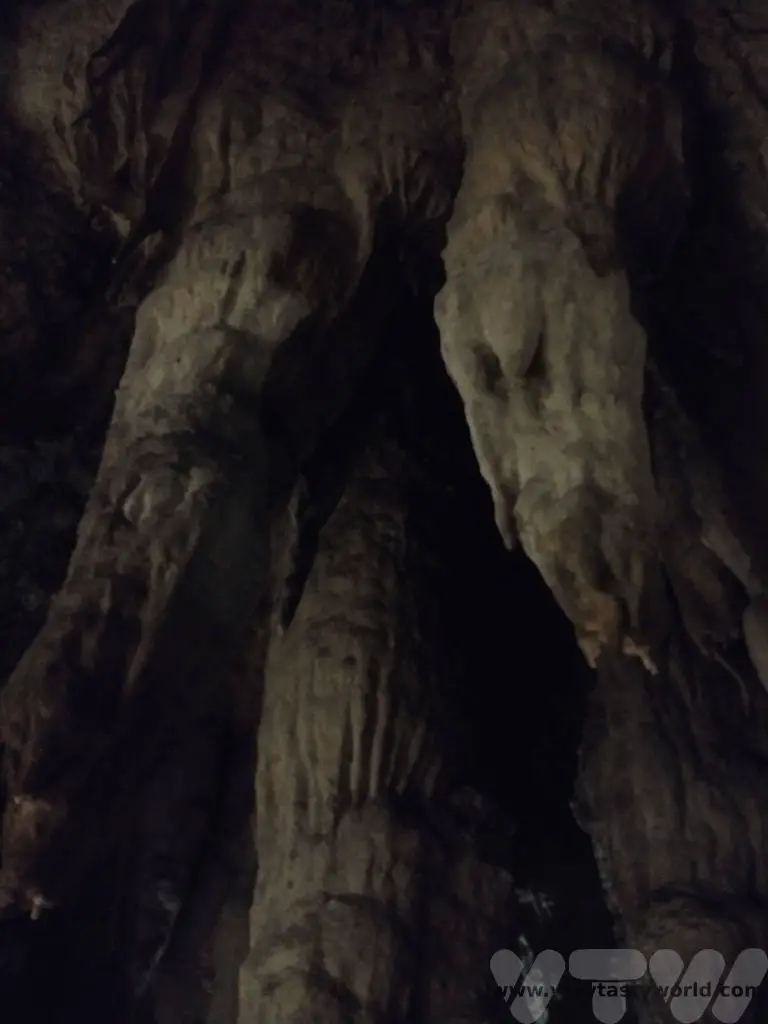
Related Posts You May Enjoy

Recipe: Shopska Salad
One of the dishes that was pretty much ubiquitous when we visited Bulgaria, and could be found pretty much every meal we had, was shopska salad. It is Bulgaria’s national salad, apparently created as part of tourism campaign in the 1950s, its colours of red, green and white match those of the Bulgarian flag.
The dish is popular throughout the Balkans – we also enjoyed it in Bosnia and Herzegovina and it made a regular appearance on menus in Croatia as well. There are all sorts of variations. Fruit and vegetables in Eastern Europe are usually more delicious than those we get at home. They make look uglier but they taste so much better. Because the salad uses very finely grated cheese you get a lovely hit of salty cheese with every forkful as opposed to, say, a Greek salad which uses cubes of cheese. It’s a really easy recipe that tastes absolutely great. This version is the one that we ate in Bulgaria.
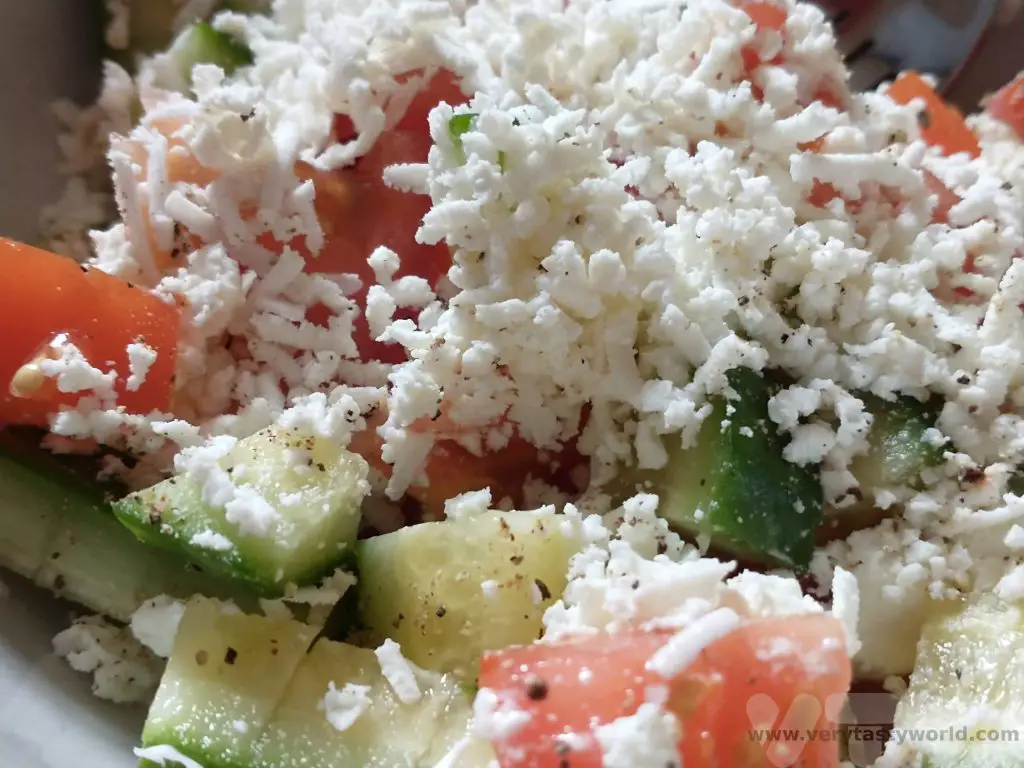
Shopska is traditionally made using Bulgarian sirene cheese which is difficult to get in the UK. Feta cheese is more easily available and is a really good substitute. Here’s our recipe for shopska salad.
Shopska Salad Ingredients
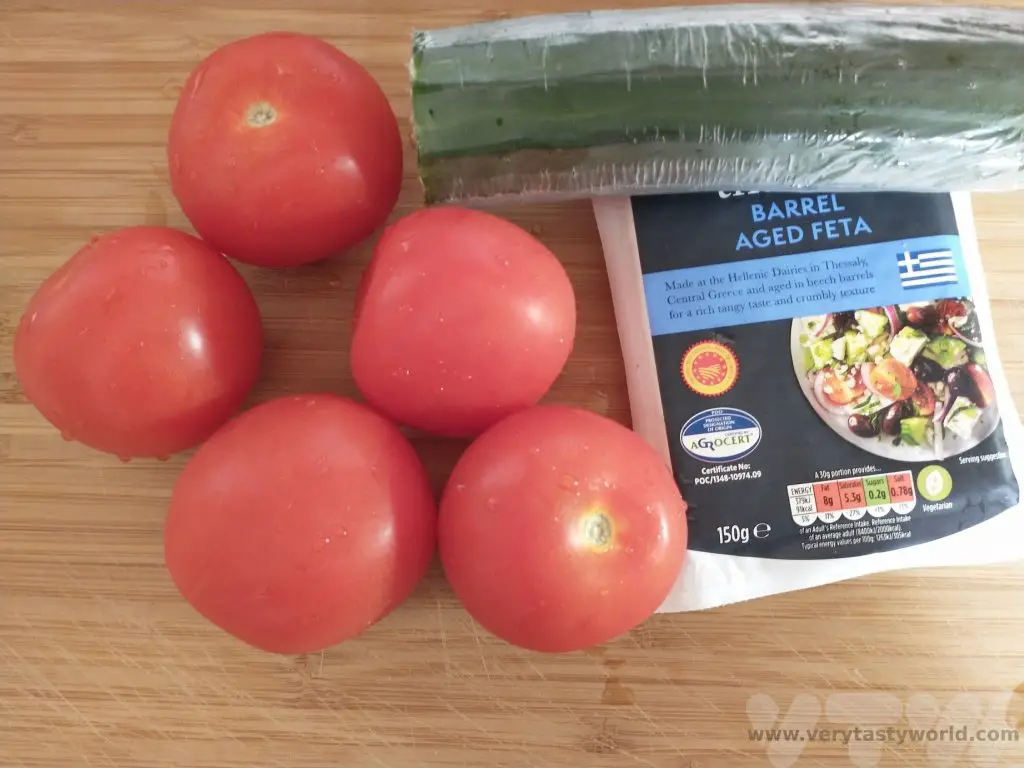
1 cucumber
4 tomatoes
1 cup of feta cheese (we like the barrel aged variety as it has a lovely rich, salty flavour)
1 tbs red wine vinegar (white wine or cider vinegar can also be used)
2 tbs sunflower oil (sunflower is more traditional but it is fine to use olive oil if you prefer)
Pinch of salt (go easy) and pepper (as much as you like)
Method
Many recipes recommend removing the seeds from the tomatoes and cucumber but we hate food waste so we tend to leave them in.
Wash the cucumber and chop into cubes
Wash the tomatoes, cut out the stem and cut into small cubes.
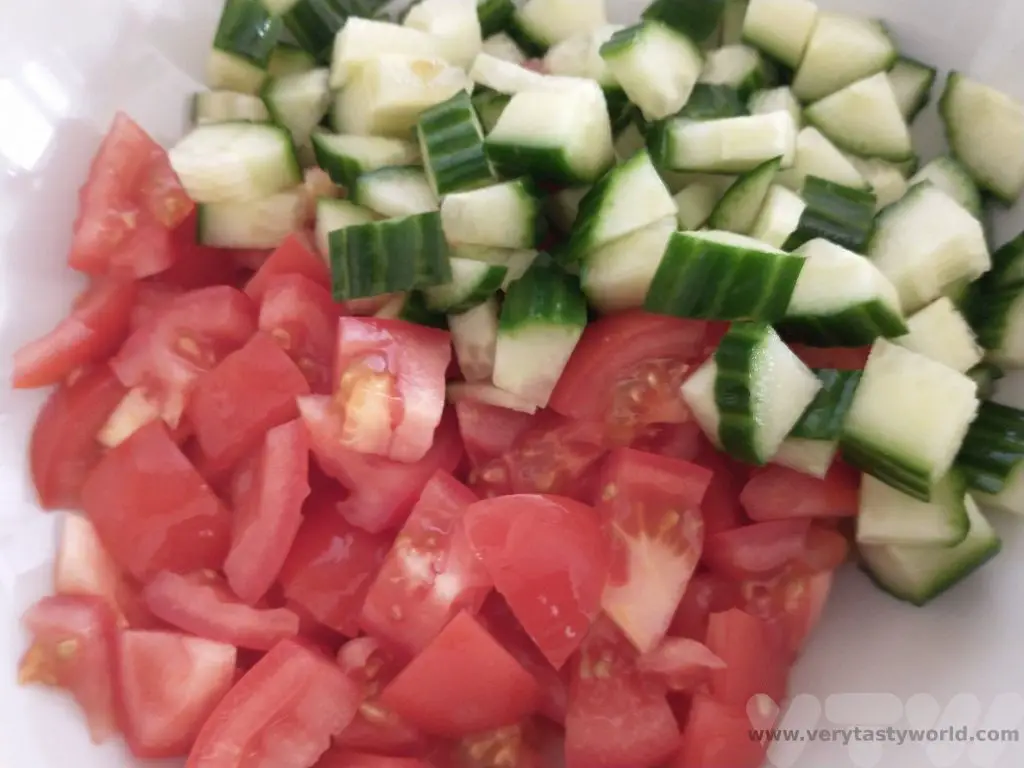
Make the dressing: combine the oil, vinegar, salt and pepper – we recommend minimal salt as the cheese is salty; often we omit the salt altogether. Mix together and then pour over the cucumber and tomatoes. Let them marinate for a few hours if you wish.
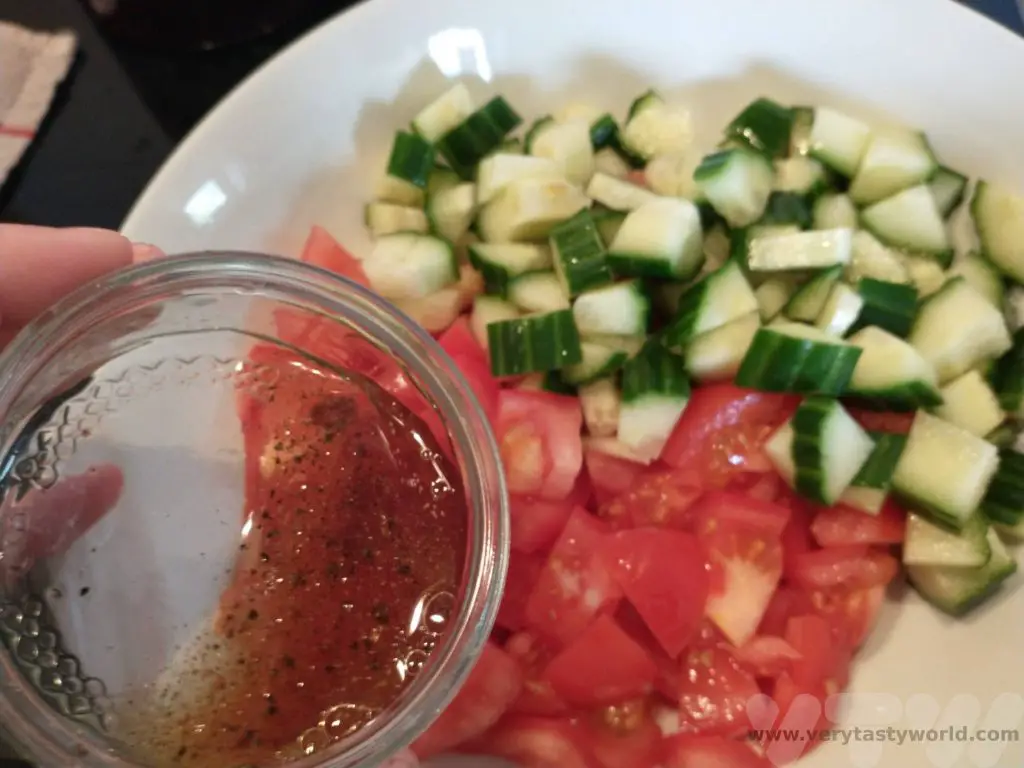
Finely grate the cheese. If you have an ordinary grater that’s absolutely fine but if you can, use a grater with a really fine setting. Feta is quite soft, so isn’t the easiest cheese to grate but it is worth persevering to get a lovely fine mass of cheese.

Place the marinated vegetables in a bowl. Sprinkle over the grated cheese. Devour.
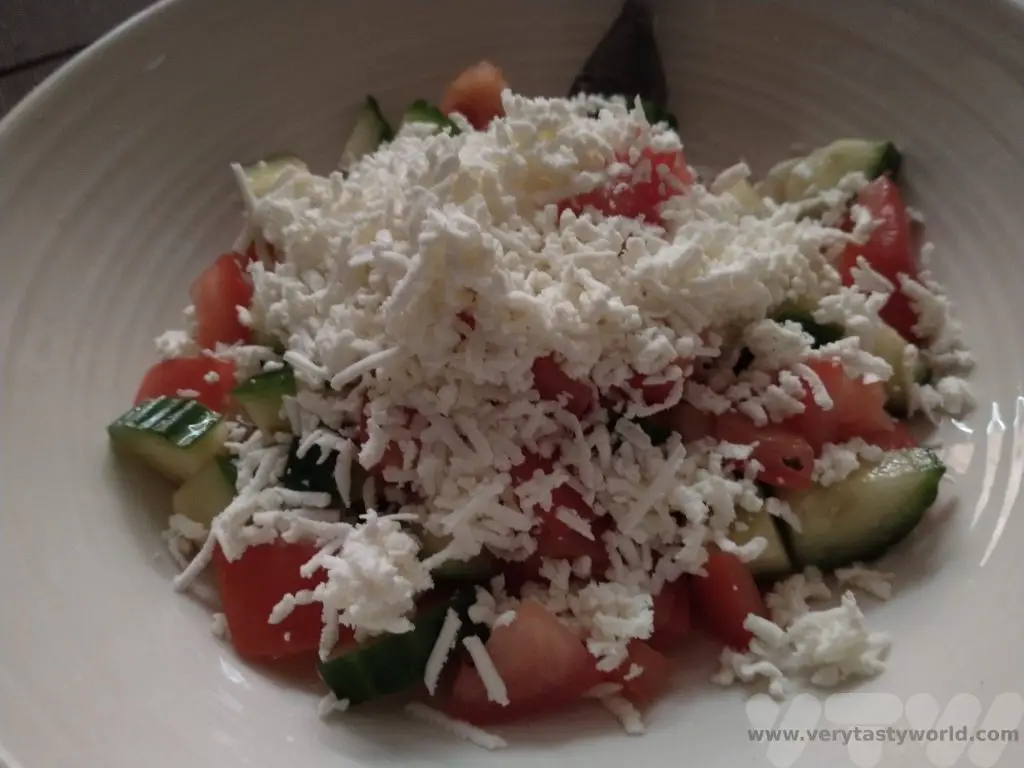
Variations. It is perfectly fine to add in other vegetables: finely chopped red onion, chopped celery, red or green bell peppers etc. If you want to add some herbs such as parsley or basil, that’s okay too.

- RECIPE Oyakodon Donburi
- Zero Waste Recipes Before Your Holiday
- RECIPE: Vegetable Biryani Tamil Nadu Style
- RECIPE: Vegan Wild Garlic Pesto
- Recipe: Venetian Pasta Sauce
- RECIPE: Biryani Raita Recipe
- RECIPE: How to Make Costa Rica’s Gallo Pinto
- Recipe: Japanese Simmered Pork Belly – Buta no Kakuni
- RECIPE: How to Make Umeboshi
1 Day in Mostar, Bosnia and Herzegovina
We have recently returned from a holiday travelling through Croatia and Bosnia Herzegovina, two countries that we have long wanted to visit. We decided to take a fly-drive trip, flying in and then hiring a car so that we could have flexibility touring through these two beautiful countries. We spent 1 day in Mostar exploring this beautiful city with its iconic bridge.
Driving in Bosnia and Croatia
We flew into Dubrovnik in Croatia (as that worked best for our flights from the UK) and then hired a car at the airport. It’s always worth pre-booking the hire car. Driving in both countries is pretty easy – the roads are generally good (they are better in Croatia which has a more established tourism infrastructure) and, even better, usually free of traffic. Due to the mountainous nature of region dual carriageways were rare and the drives were leisurely but the scenery throughout each drive was spectacular. We kept to the speed limit – and be aware that there are speed cameras, particularly close to schools in towns – but were overtaken on quite a few occasions.
An ordinary driving licence was fine for driving in Croatia but we needed to obtain an International Driving Permit (1968 version, available from Post Offices in the UK for £5.50) in order to drive in Bosnia Herzegovina. It was also important to ensure that the car hire company provided the car’s registration and insurance paperwork as we could have been asked to show it to police or customs officials at any time, particularly in Bosnia.
Border crossings were generally easy – we just needed to join the queue for cars and simply hand over our passports at the first check-in booth and then answer any questions as the next one, the customs booth. In Bosnia Herzegovina proof of Covid vaccination was needed (at the time of travelling). We had printed our Covid passes out so they were easily to hand but a mobile phone app would have been just as good. Our itinerary took us in and out of both countries. After an overnight stay in Mali Ston we headed into Bosnia Herzegovina.
Bosnia and Herzegovina’s History
Bosnia Herzegovina has a long and complex history. Its location in the Balkans is often described as the crossroads between south and south-east Europe. Populated by south Slavic people it was annexed into the Ottoman Empire, who brought Islam to the area, in the middle of the 15th century. Hence the population comprises Serb (Orthodox Christians), Croat (Catholic) and Bosniak (Muslim) peoples. This is reflected in the multitude of churches and mosques that can be seen throughout the region.
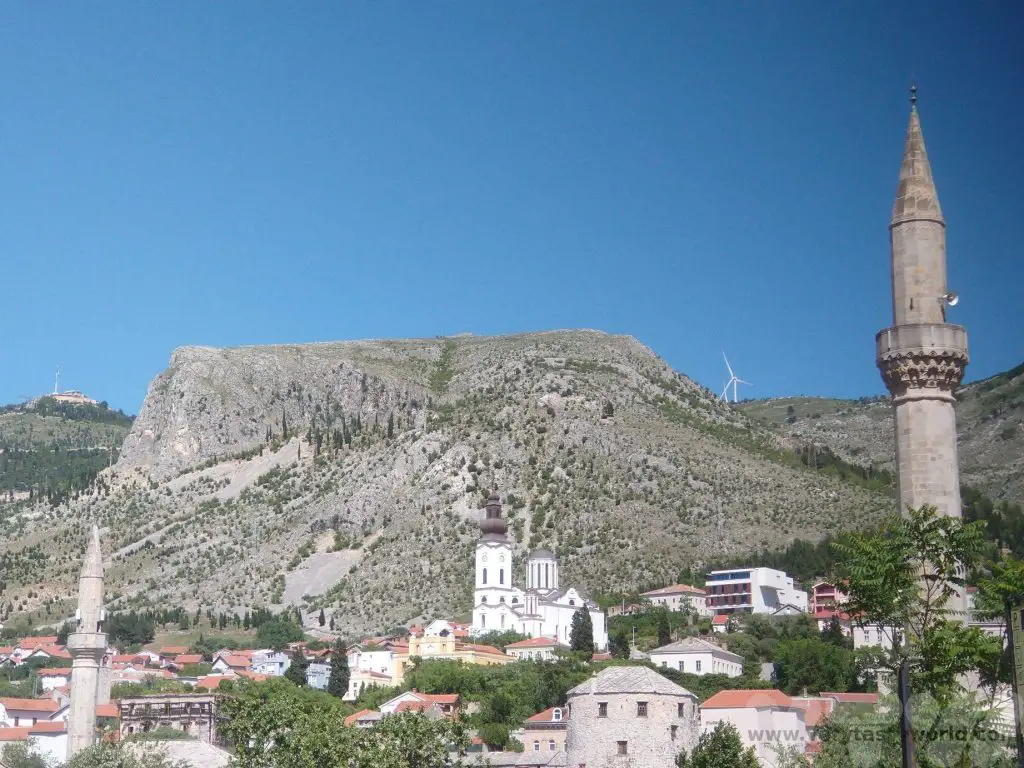
Mostar is the main (in fact, the only) city in Herzegovina. (The northern region of the country is Bosnia, with Sarajevo as its capital, and Herzegovina is the south.) Mostar is located on the Neretva river, surely one of the world’s most beautiful rivers, with its crystal clear turquoise water. The city is most famous for the Stari Most bridge that crosses the river. It was commissioned by Suleiman the Magnificent in 1557 and completed somewhere between 1566 and 1567.
It was the widest constructed arch in the world at the time at 30 metres long and 4 metres wide. The drop to the water is around 20 metres depending on the river level. The Ottomans were clever in that this was the only bridge spanning the river for several centuries – the word Mostar derives from ‘mostari’ – bridge keepers – so that the authorities could impose tolls on the traders who needed to cross as they moved their goods through the region. The bridge is flanked by two impressive towers.
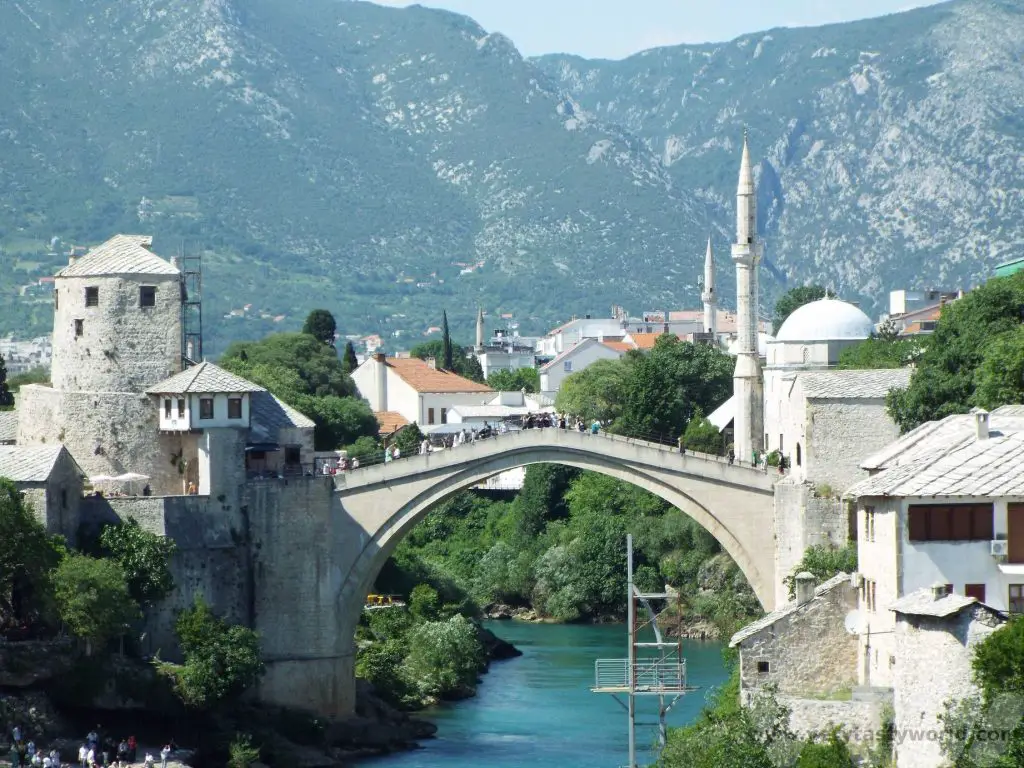
Following the decline of the Ottoman Empire and then the annexation of Bosnia Herzegovina by the Austro-Hungarian Empire in 1909, the Kingdom of Yugoslavia was established in 1929 after World War 1. This became the Socialist Federal Republic of Yugoslavia, under the rule of Josip Broz Tito, following World War 2. The region remained stable until the breakup of Yugoslavia in the early 1990s. Following Slovenia and Croatia’s respective secessions from Yugoslavia, Bosnia Herzegovina held an independence referendum in February 1992. The outcome was in favour but, while most Bosnian Croats and Muslim Bosniaks had voted, the referendum had been boycotted most of the Bosnian Serbs, a significant proportion of the population. A series of events following this led to war breaking out between the different groups. It lasted until December 1995.
It is incredibly difficult to summarise – let alone truly understand – the complexities of the war but what is undeniable is how horrific it was. This was a war that happened during our lifetime – we remember from seeing news reports on the television at the time. We spoke to a number of local people – from all ethnicities – during our time in Bosnia Herzegovina and they told us about their experiences living through the war, notably the Siege of Sarajevo. Following the peace declaration, the government structure in Bosnia Herzegovina has become incredibly complex with representatives from each ethnic group holding positions of power. For example, the country has three presidents: a Bosniak, a Serb, and a Croat.
One of the consequences of the war for Mostar was the destruction of the Stari Most bridge in December 1993. It was not only considered to be a strategic bridge (the other bridges crossing the river in Mostar were also destroyed) but also a cultural icon. The bridge was rebuilt after the war using funding from a variety of sources and many different countries contributed to the fund. The aim was to reconstruct the bridge in identical style and using similar materials (some salvaged from the original bridge where possible). It was reopened in 2004.
1 Day in Mostar – A Walking Tour
When visiting a new city, particularly when we are touring and short on time, we enjoy taking a walking tour. There are usually lots of options available but we especially like the ‘free tours’ which are run by local guides (who will expect a tip at the end of the tour and absolutely deserve one) who can show you the main places to visit in Mostar, explain the history of the area and give some personal insight into the country. They are also the perfect people to recommend local food and restaurants.
We started at the Spanish Gymnasium, which is the first public school in Mostar (the word derives from the European term for high school rather than being an exercise centre). It’s about a 20 minute walk from the centre of the city and is a good meeting point as its orange colour is very easy to spot. It is a working school so entering the building isn’t possible.
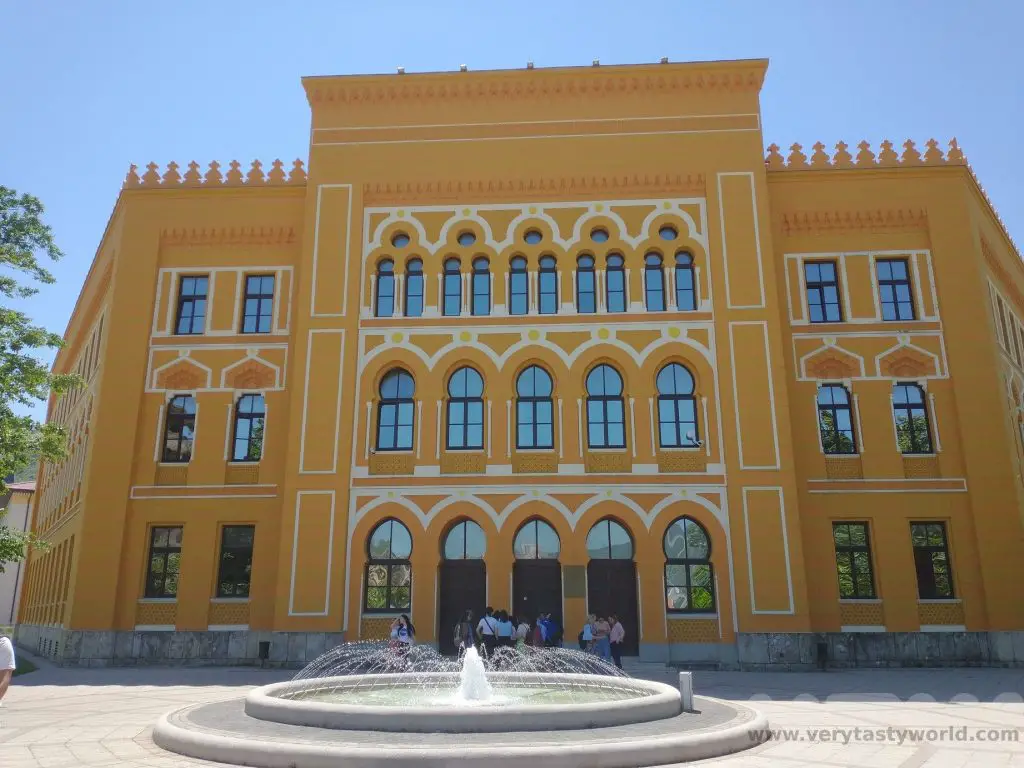
The gymnasium is located next to the Zrinjevac City Park, which is a pretty park that has a rather unusual statue. We really weren’t expecting to see a life-sized (well, apparently it’s 4cm short of life-sized) statue of Bruce Lee. Apparently he was chosen as a symbol of diversity and couldn’t be perceived to have an affiliation with any of the local ethnicities, but rather represented “loyalty, skill, friendship and justice.”
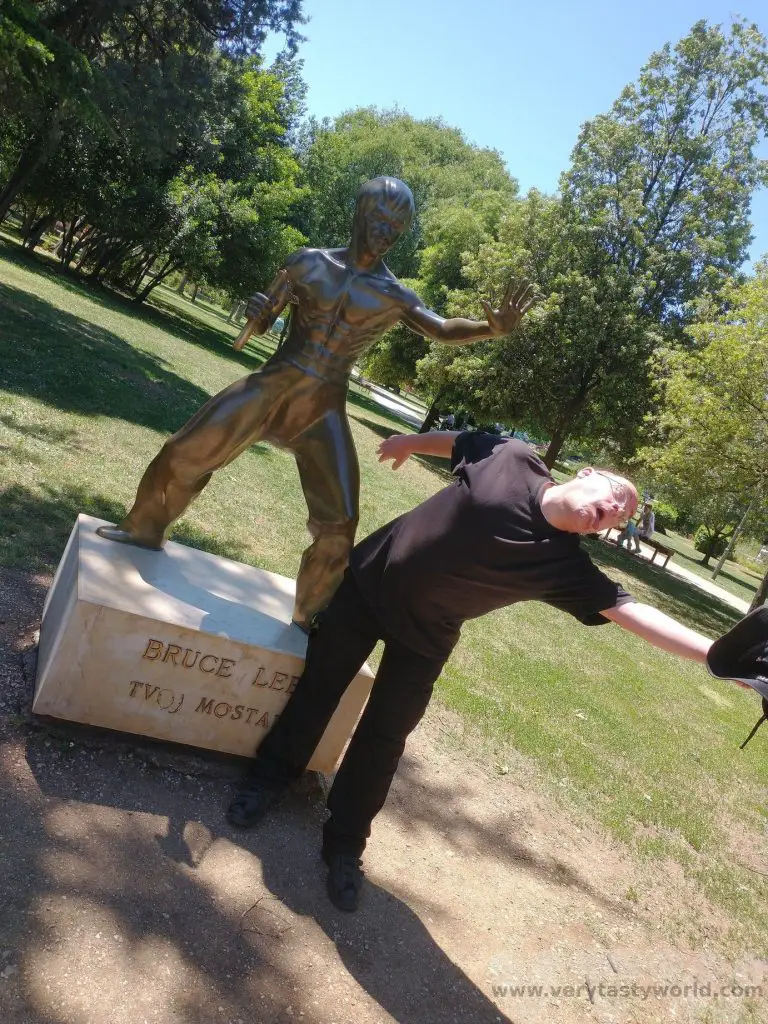
When walking around Mostar the scars of the war remain. We walked through the former financial district – many of the buildings are still shells. Our guide explained that while reconstruction work had taken place following the war, the capital Sarajevo had received more money to rebuild. There was still a lot of work that needed to be undertaken throughout Bosnia and Herzegovina.
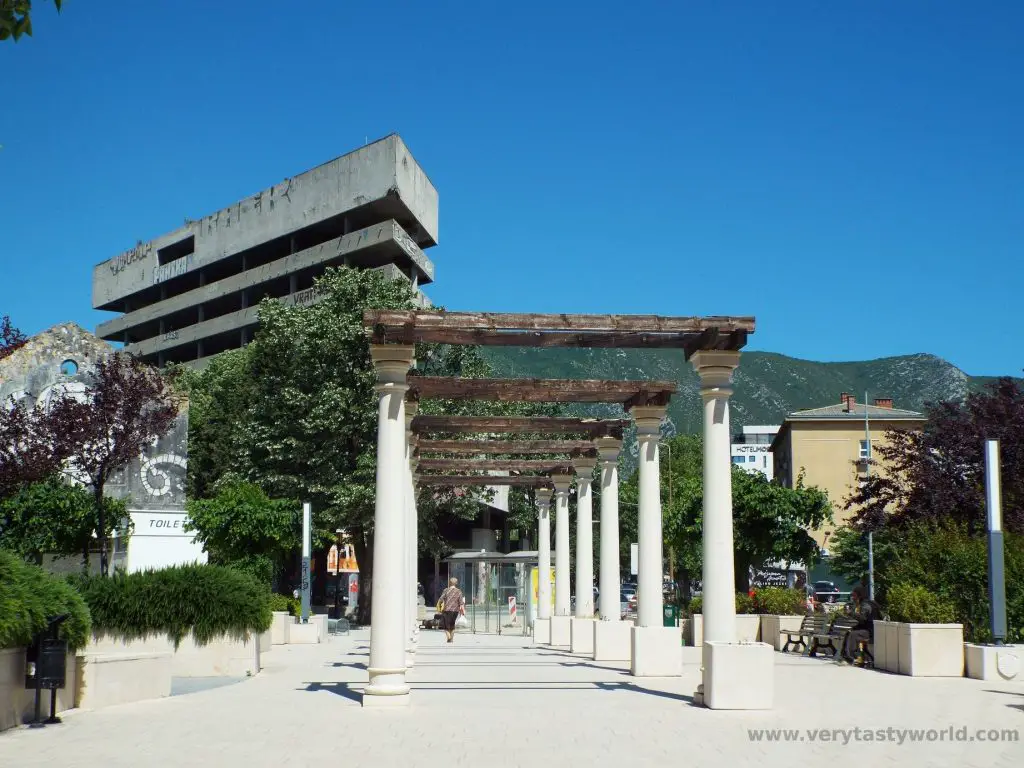
Walking across the Most Musula bridge we could see good views to the hills above. Although walking up to the summit would ensure a magnificent panorama of the city, the area sadly still contains land-mines.
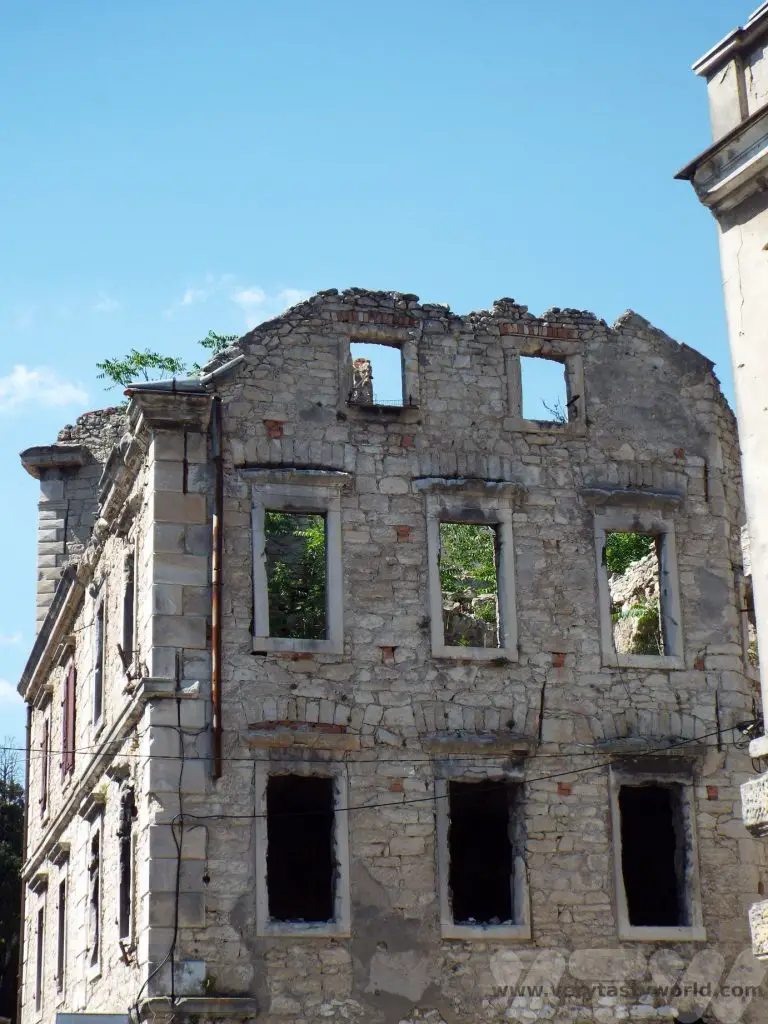
We then headed towards the older part of the city. The Karadoz Bey Mosque is one of the largest mosques in the region and dates from the same year as the Stari Most bridge.
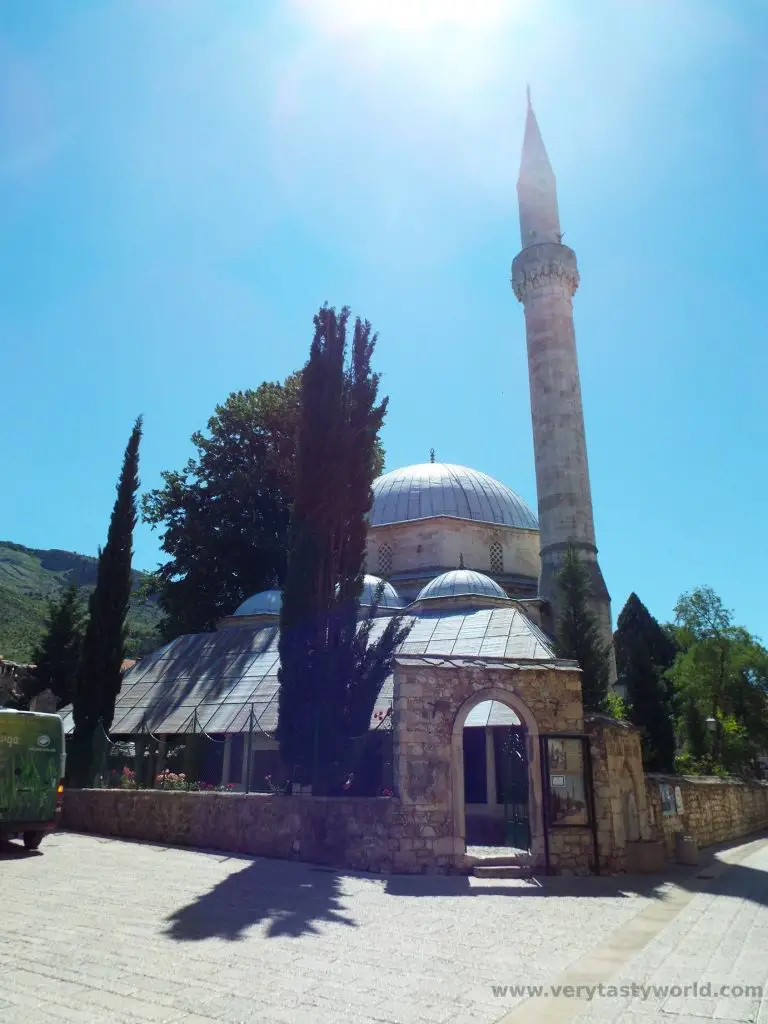
It is possible to visit the Koski Mehmed Pasha Mosque. It is located on a side street just away from the main street.
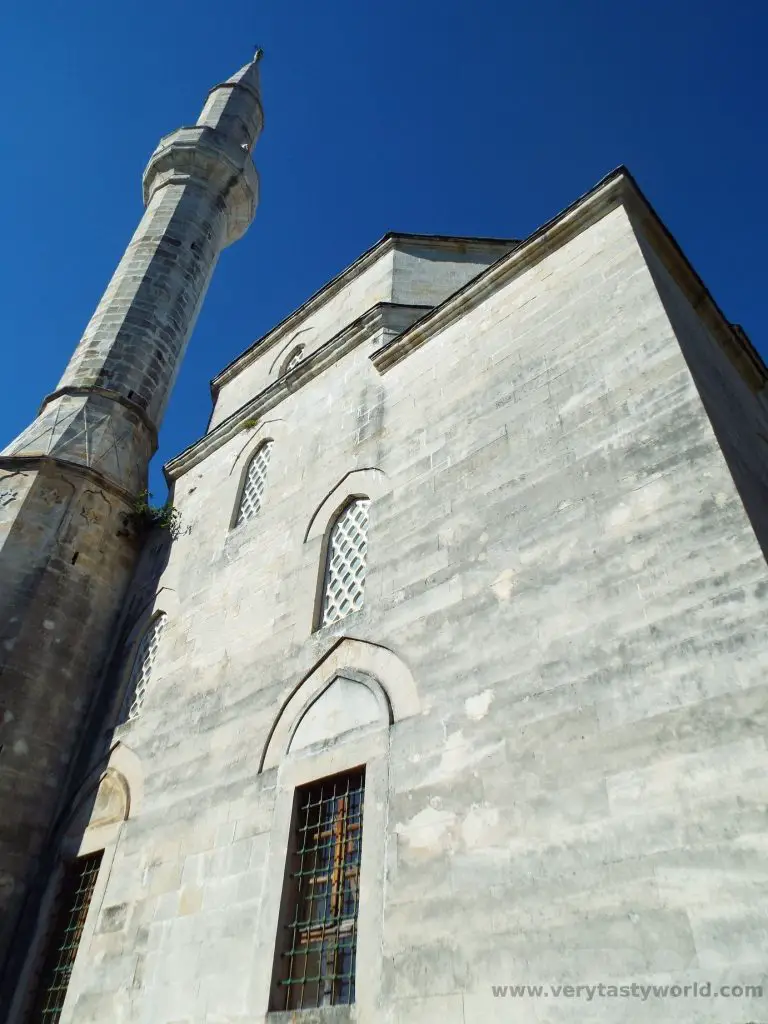
Outside is a fountain traditionally used for washing before entering the mosque to pray.

For visitors it costs 4 Euros to enter the mosque and a further 4 Euros to climb the minaret. Photos were allowed and, although we asked if they would like us to remove our shoes and cover our heads, we were told that it wasn’t necessary.
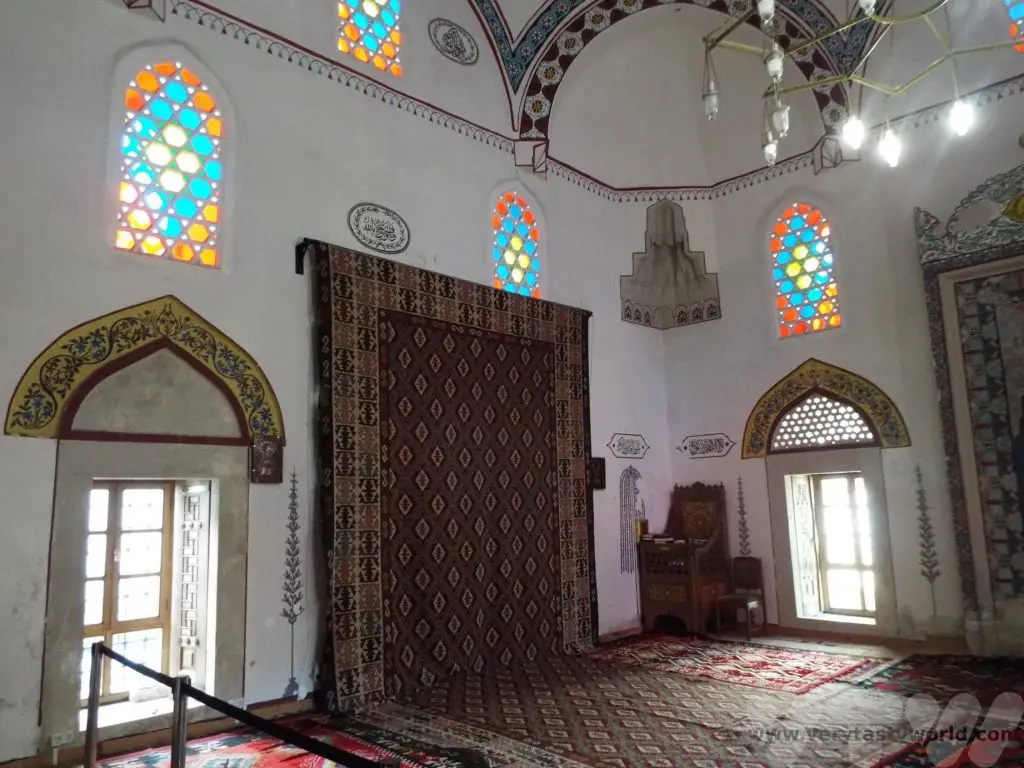
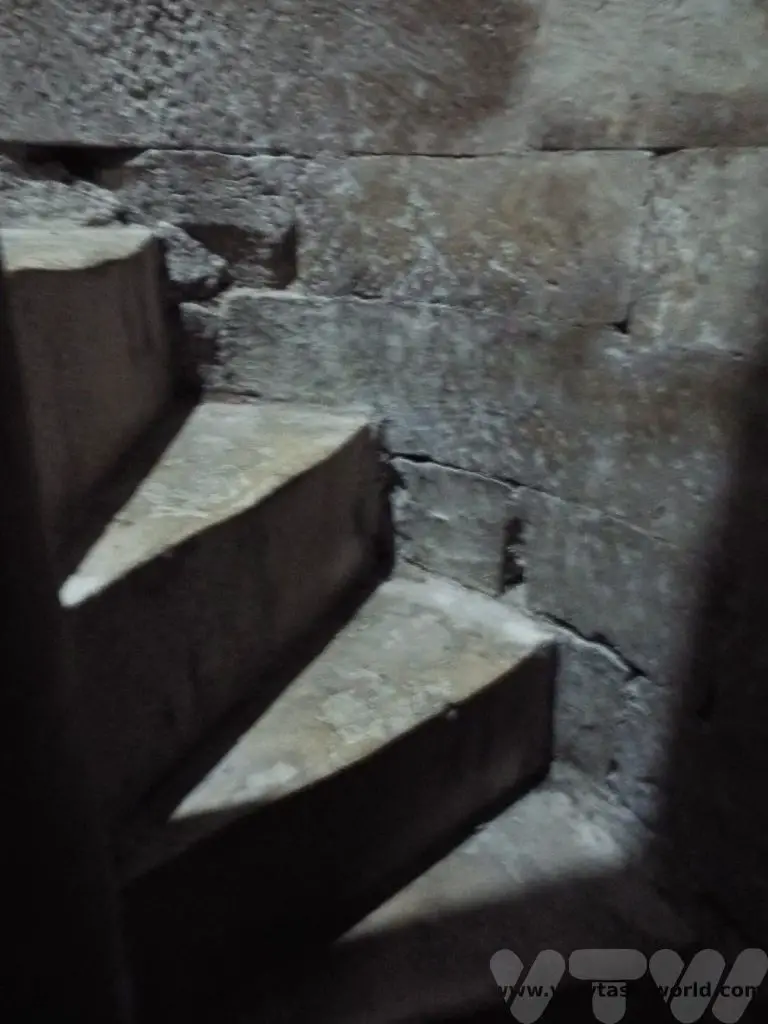
The interior of the mosque itself is quite compact and the climb to the top of the minaret was fairly claustrophobic.
However the view across the river to the bridge was spectacular. The balcony of the minaret was pretty narrow so we were lucky that there was only one other visitor there. You can also enter the small garden adjacent to the mosque for more river views.
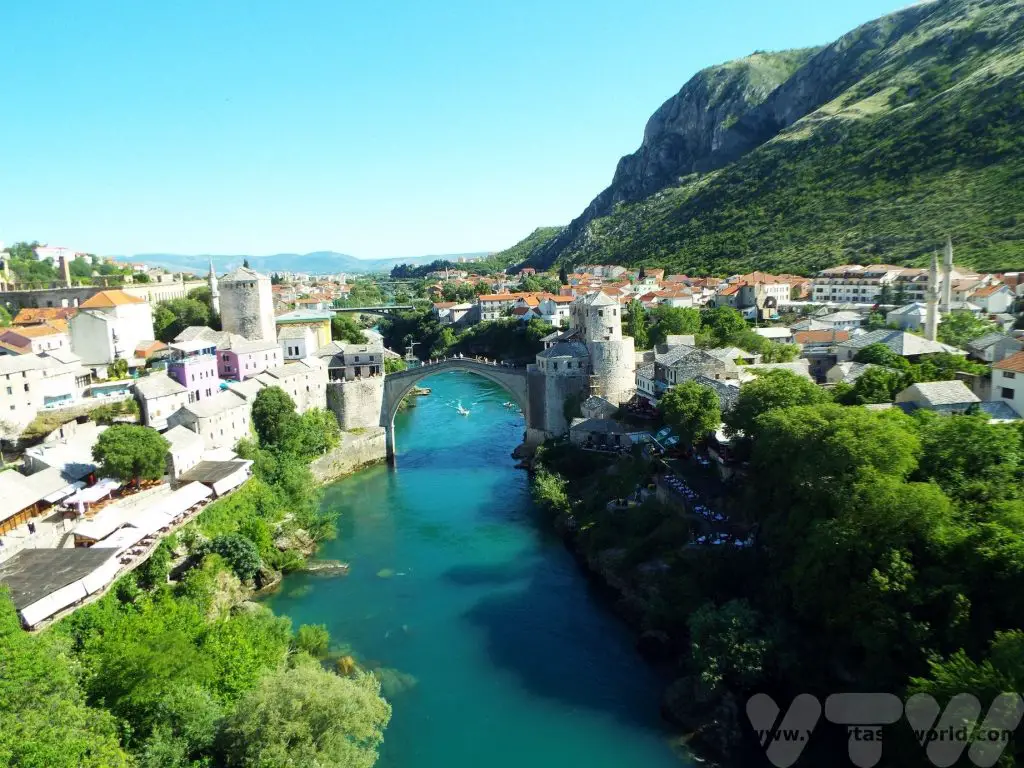
Wandering through the old town, there are lots of shops and restaurants. It is very touristy and can get crowded during the day. There are also a couple of museums in this area, The Museum of War and Genocide Victims 1992-1995 and also the Bridge Museum, which we were keen to visit, but sadly it was closed. There were reminders of the war as we walked through the streets.
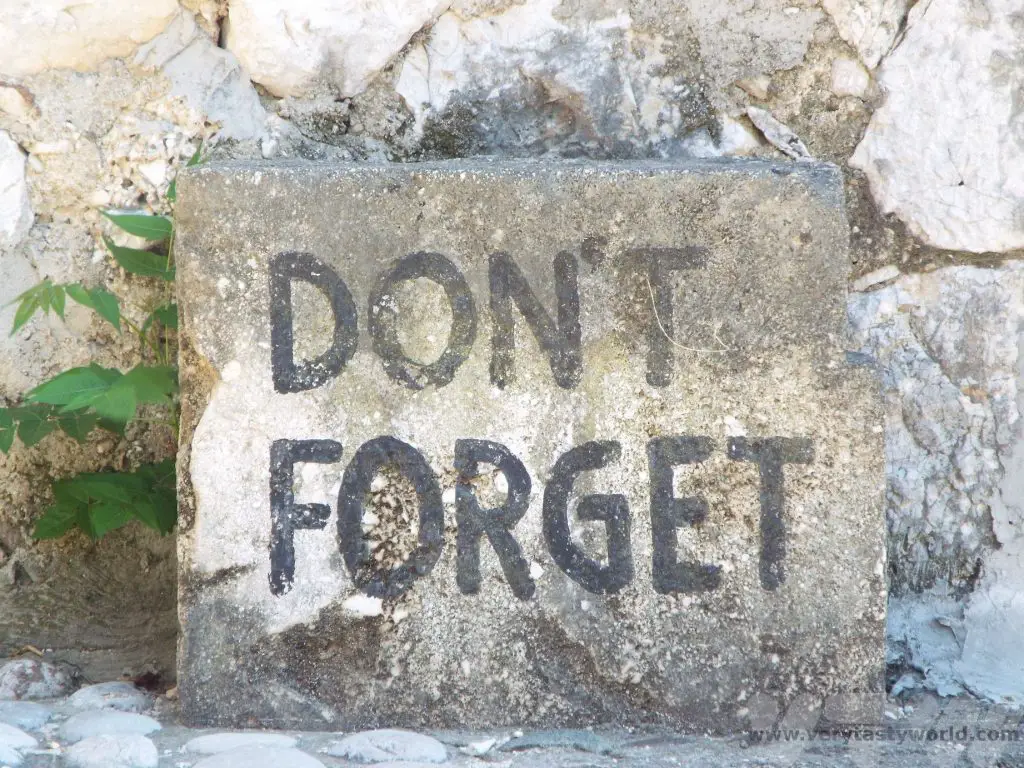

Approaching Stari Most again we crossed the river over the old bridge. The steps can be quite slippery.
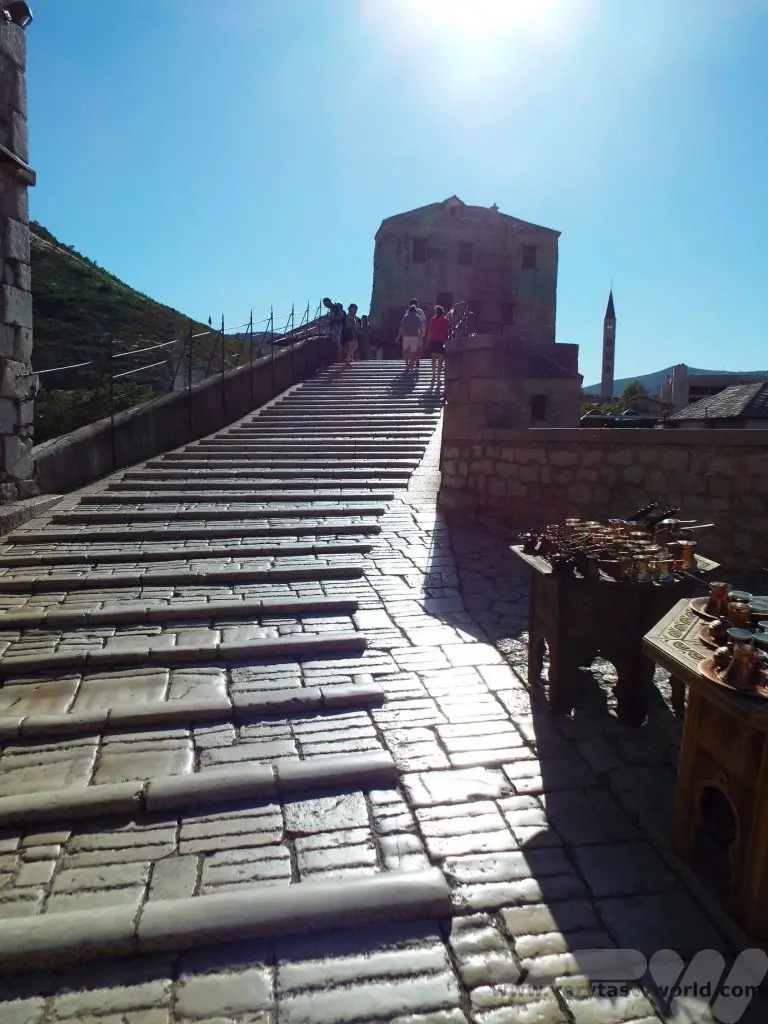
One thing that is very popular is watching locals who dive from the bridge into the crystal clear water below. You’ll see them hanging around at the top of the bridge, sitting on the top railing, and they will usually dive once they have raised enough money – normally in the region of 50 Euros – from tourists. You will be able to tell when they are ready to dive when either one of them dons a wetsuit or they start splashing themselves with cold water because the temperature of the river is extremely cold, especially in spring and early summer. We were some distance from the bridge, upriver, when we saw a diver preparing to go. Despite the camera being focussed and on full zoom, we only managed to capture the splash! There are diving competitions held in Mostar each year.
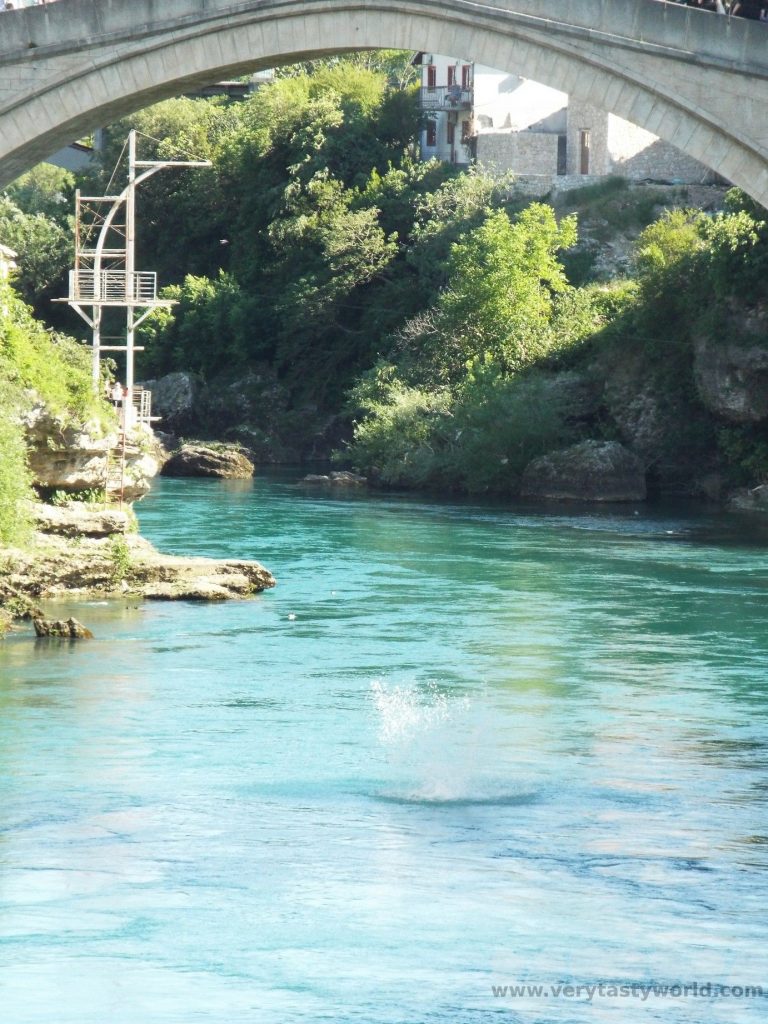
It’s worth noting that the bridge is a focal point for tourists and, because the city is only a couple of hours’ drive away from Croatia, it gets very busy during the late morning and afternoon as day trippers arrive in their coachloads. The surrounding streets and bazaars will be teeming with people. So staying overnight to explore the area and view the bridge when it’s less busy is definitely recommended.
Our walking tour concluded by another stone bridge – the Crooked Bridge – just a five minute walk away from Stari Most. It dates from 1558. It was strategically important because it allowed traffic to be controlled from the towers of the old bridge. This, too, is a reconstruction – sadly the original was destroyed during floods in 1999, but it was rebuilt in 2002.
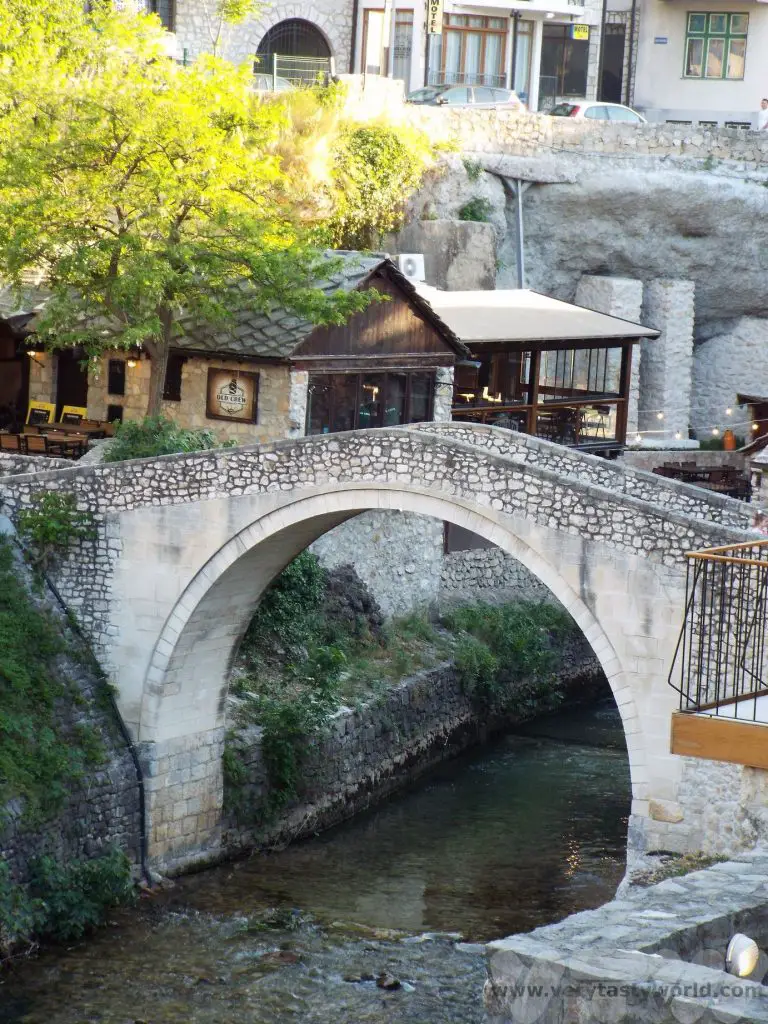
Dining Out in Mostar
There are loads of eateries offering tasty food in Mostar. The restaurants closest to the bridge, or those with a good view of it, are likely to be more expensive than those in the surrounding streets. Mostar was our first introduction to Bosnian cuisine. The national dish is considered to be cevapi – little meaty sausages/kebabs served inside a bread called somun which is a flatbread like pitta but has a really nice focaccia-like spongey texture. It’s served with chopped raw onions, which are quite sweet in flavour rather than being too pungent. You usually get a choice of a small portion (5 little sausages) or larger portion (10 little sausages). Many of the dishes we tried in both Bosnia Herzegovina and Croatia were accompanied by ajvar, a condiment made from red peppers (it isn’t spicy).
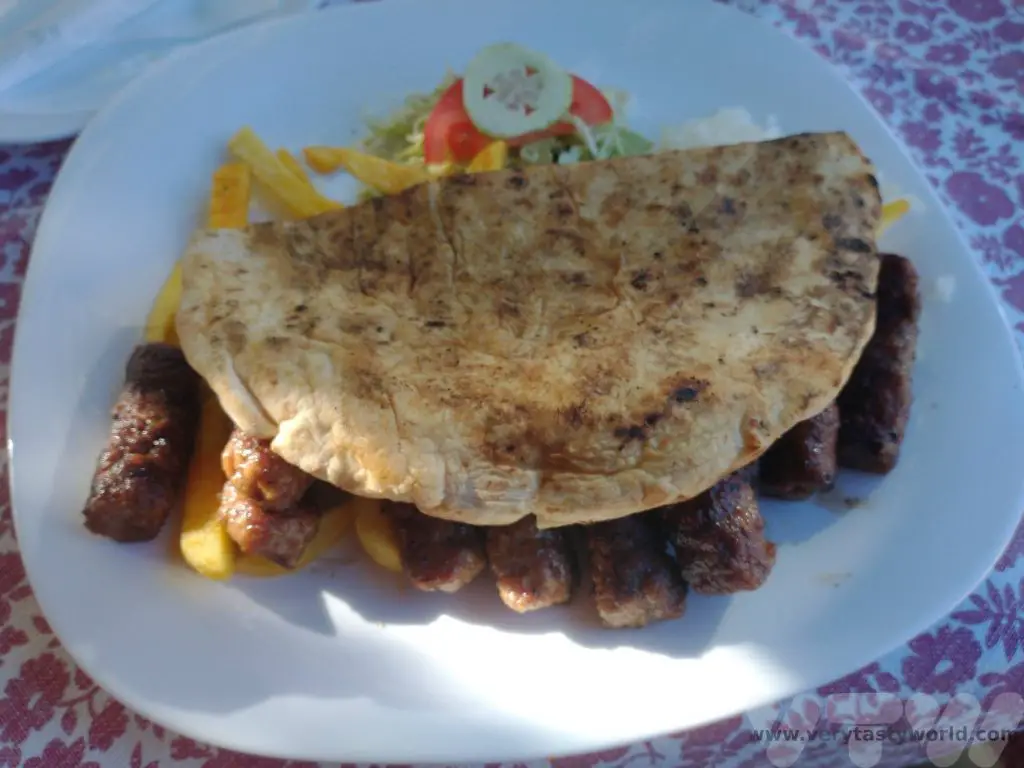
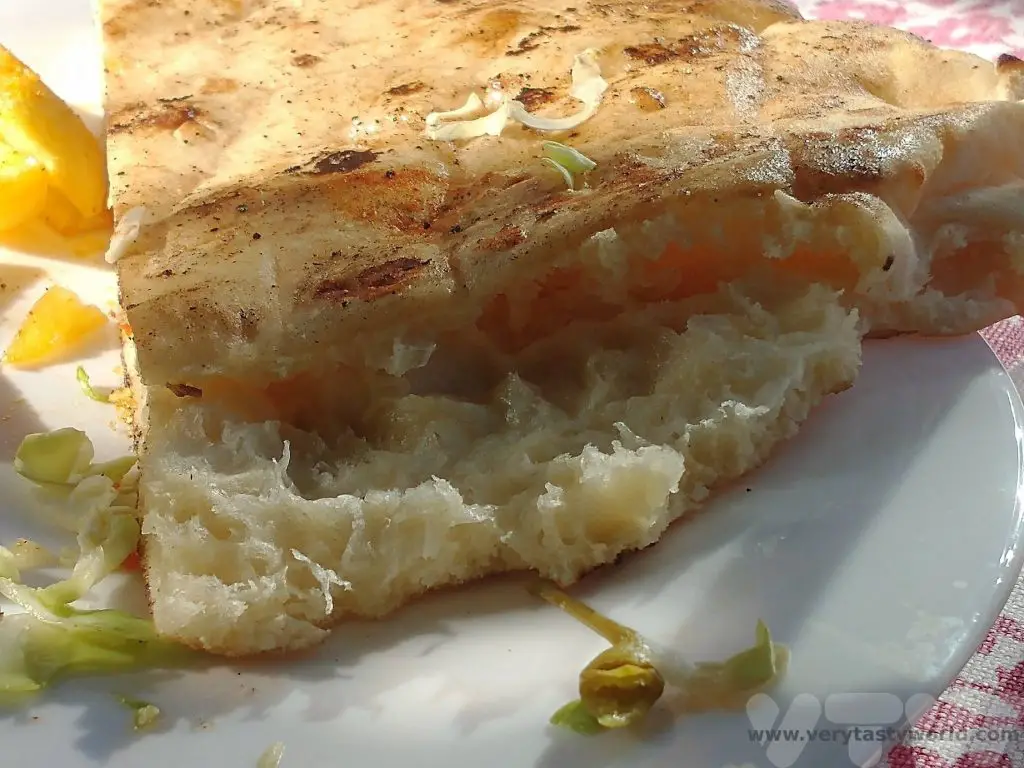
There are plenty of sweet dishes on offer as well. Baklava is a familiar dessert, a sweet, filo-based pastry, filled with layers of nuts and a sweet syrup, popular across the region and the Middle East. We particularly enjoyed hurmasica, a pastry doused in lemon-flavoured sugar syrup. It comes in an oblong shape and is very sweet but really delicious with a nice gooey cake-like texture.
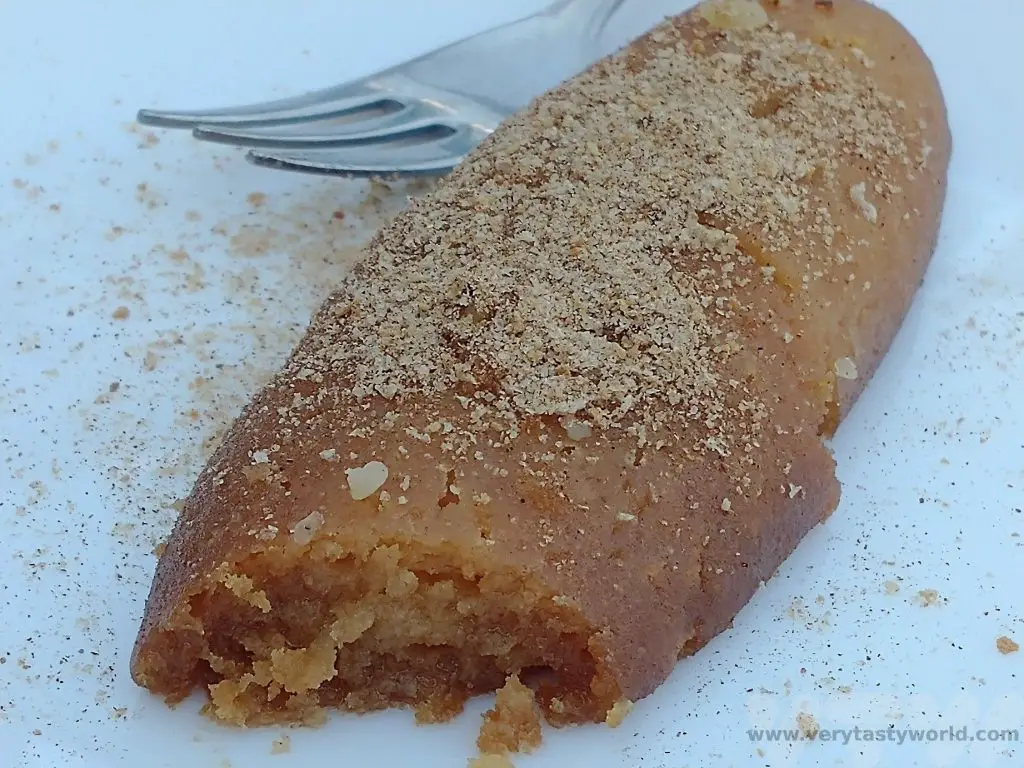
And a meal wouldn’t be complete without a cup of incredibly strong, rich, sweet coffee. Coffee culture is very important in this part of the world.
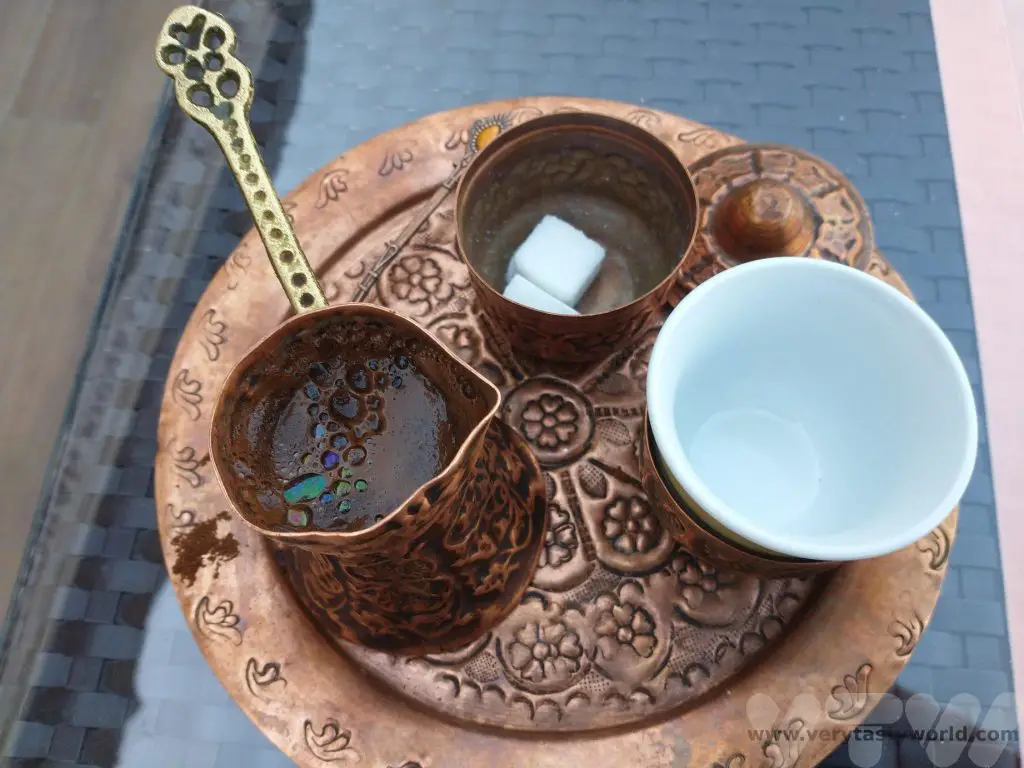
There was also a very good craft beer emporium in Mostar,on Gojka Vukovica, close to the Crooked Bridge. It had a wide variety of local beers on offer, brewed in both Mostar and Sarajevo. We particularly enjoyed Marakuja, an American Pale Ale, Onano Maze, a rich porter, Darkness, a dry Irish Stout and Kukambera, a cucumber-infused lager which was really refreshing on a hot spring day.
And if you’re after something stronger, rakija is the local brandy made from fermented fruit. Its alcohol content can range from around 40% to 60%. It’s not uncommon for local people to make their own rakija. One of the guides we met told us that it was the cure for all ailments! What’s nice about it is that, even though the alcohol content is strong, you don’t just get a blast of booze, the flavours of the base fruit really do come through – it’s a pleasant tipple.
After dinner, when the day trippers have melted away, it’s lovely to wander through the city at night. The bridge and local buildings are lit up beautifully and Mostar becomes a much more peaceful place.
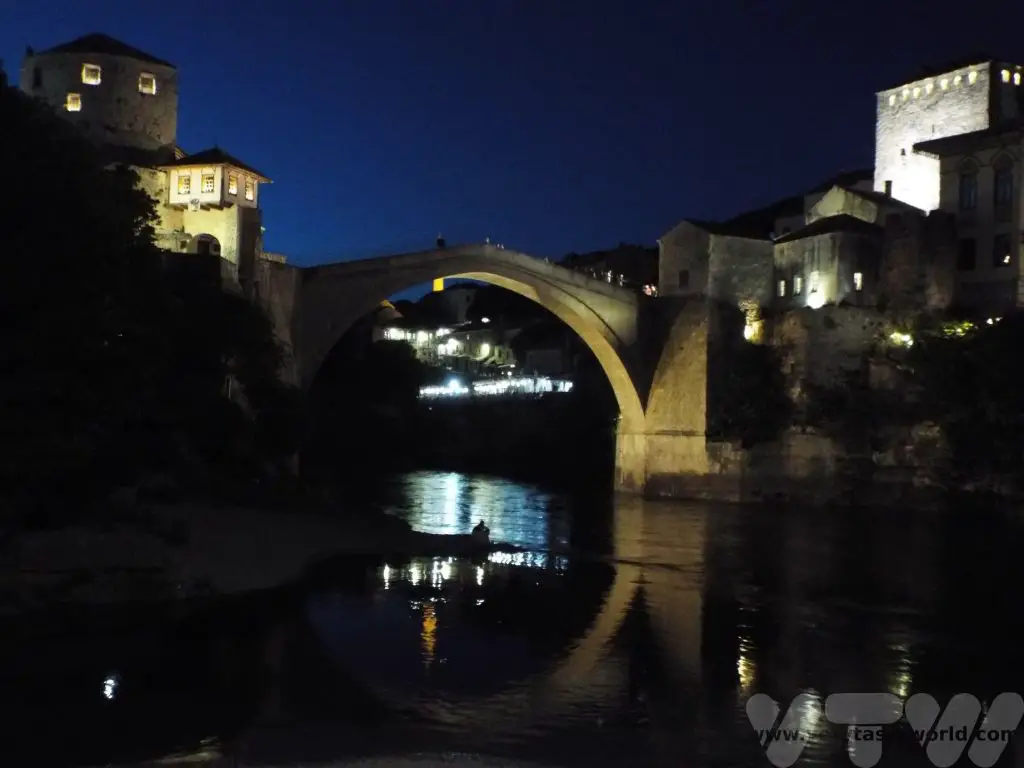
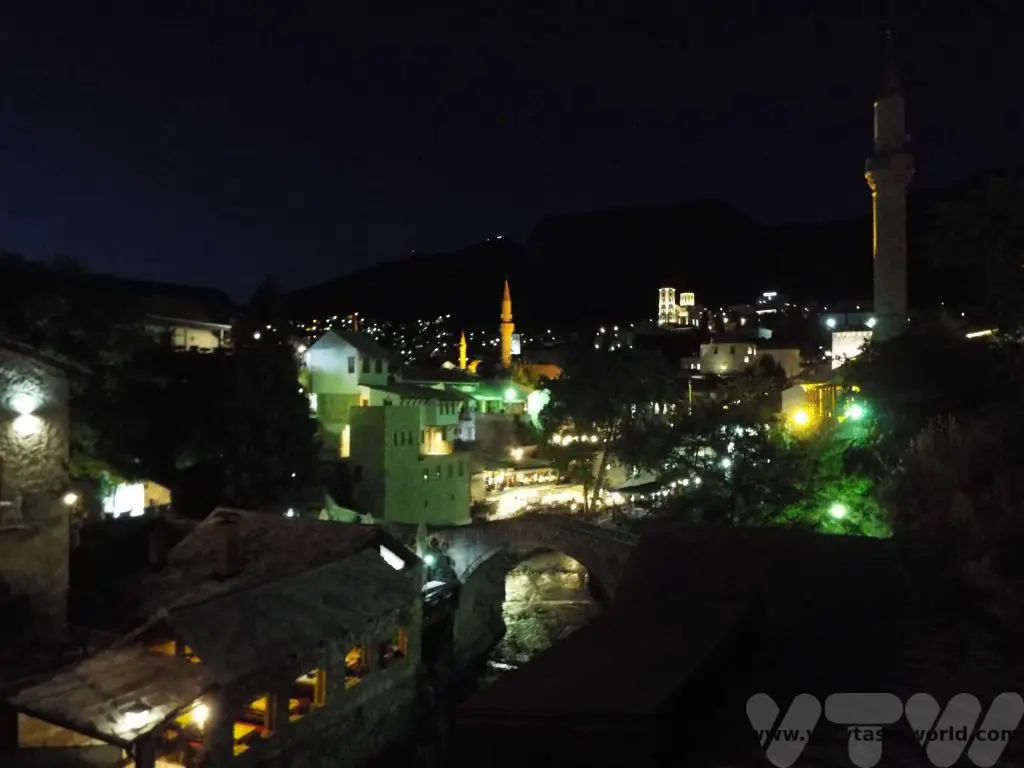
It is possible to see many sights in just one day in Mostar. We recommend staying overnight if you can, or at least waiting until the evening to see the iconic bridge beautifully lit up.
Related Posts You May Enjoy

RECIPE: Salmorejo
Andalusian Cold Tomato Soup
In Spain, cold soups are perfect for a hot summer’s day. Gazpacho is probably the most well known – a blend of fresh tomatoes and other vegetables, such as cucumber, peppers and garlic. Salmorejo is another cold soup, which also originated in Andalusia. We first tried it in a tapas restaurant when we visit Seville and absolutely loved it. It is a blend of tomatoes but has the addition of bread which thickens the soup. It’s a great soup that also helps to avoid food waste as it works really well if the bread is slightly stale.
In the UK tomatoes aren’t that great. Supermarkets often sell perfectly round, perfectly red tomatoes that basically taste of water. We go to our local market for our toms or grow our own. (And home grown always taste better.) What is great about Salmorejo is that even if the tomatoes are a bit insipid, the flavourings ensure that the dish will be delicious.
Our recipe for salmorejo is really easy to make but you will need a blender. This will serve four if part of a wider tapas meal/starter or two hungry people. Also, it’s the sort of soup that you can make first thing in the morning and let the flavours infuse during the day. It even tastes great after being in the fridge overnight.
Ingredients
About 10 ripe tomatoes
3 slices of stale white bread
Clove of garlic (or another if you like garlic but we prefer subtle garlic here)
Good slosh of extra virgin olive oil
Salt and pepper
1 boiled egg per 2 servings
Couple of slices of ham
Method
First of all the tomatoes need to be skinned. The easiest way to do this is to cut a cross at the end of the tomato (the opposite end to the stalk). It doesn’t need to be precise and it doesn’t matter if you cut into the tomato’s flesh -it’s all going to be blended anyway.
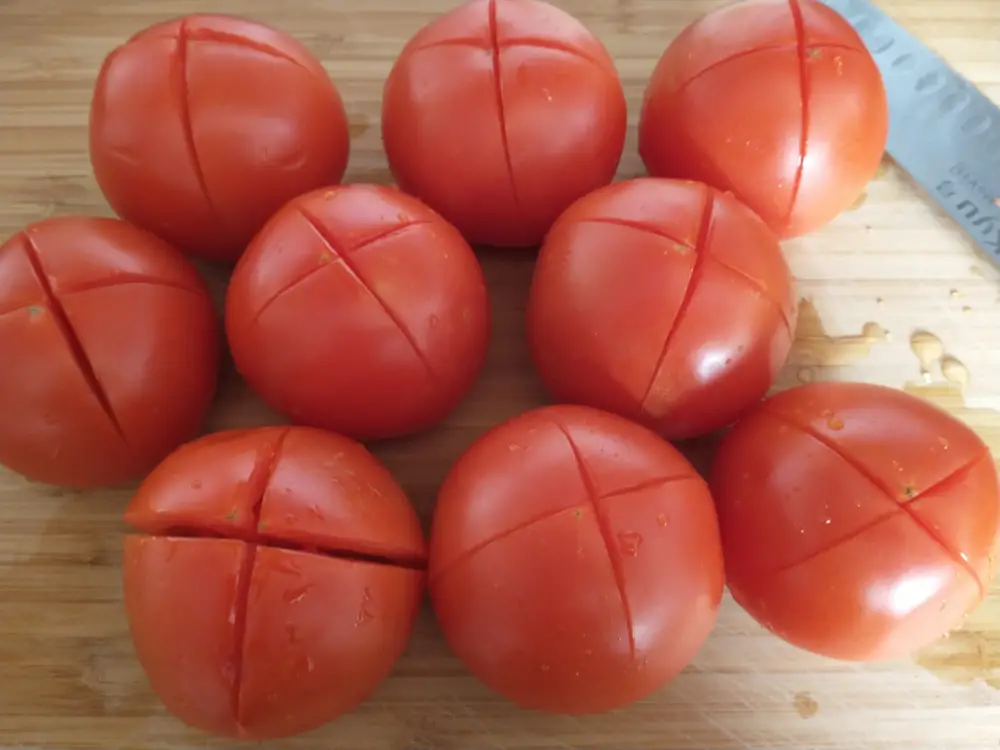
Pour boiling water over the tomatoes and let them sit in the water for a couple of minutes. Then transfer them to a bowl of cold water.
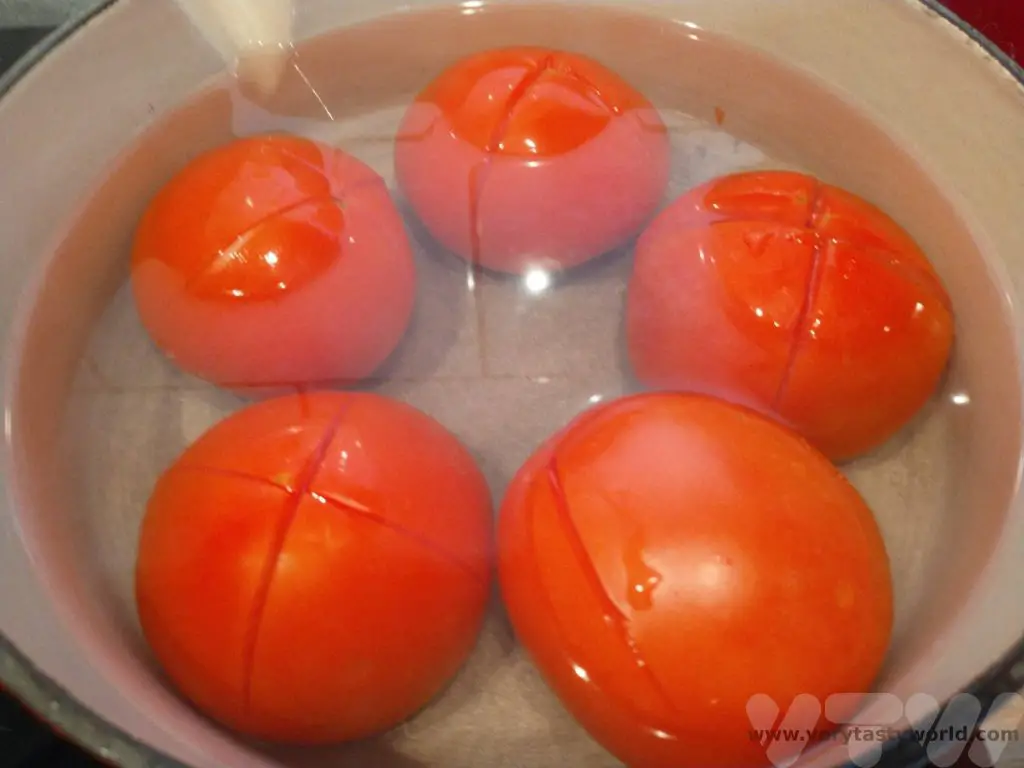
Grab a corner where the slice was made and the skins should just peel away. It’s not the end of the world if you don’t get all the skin off.
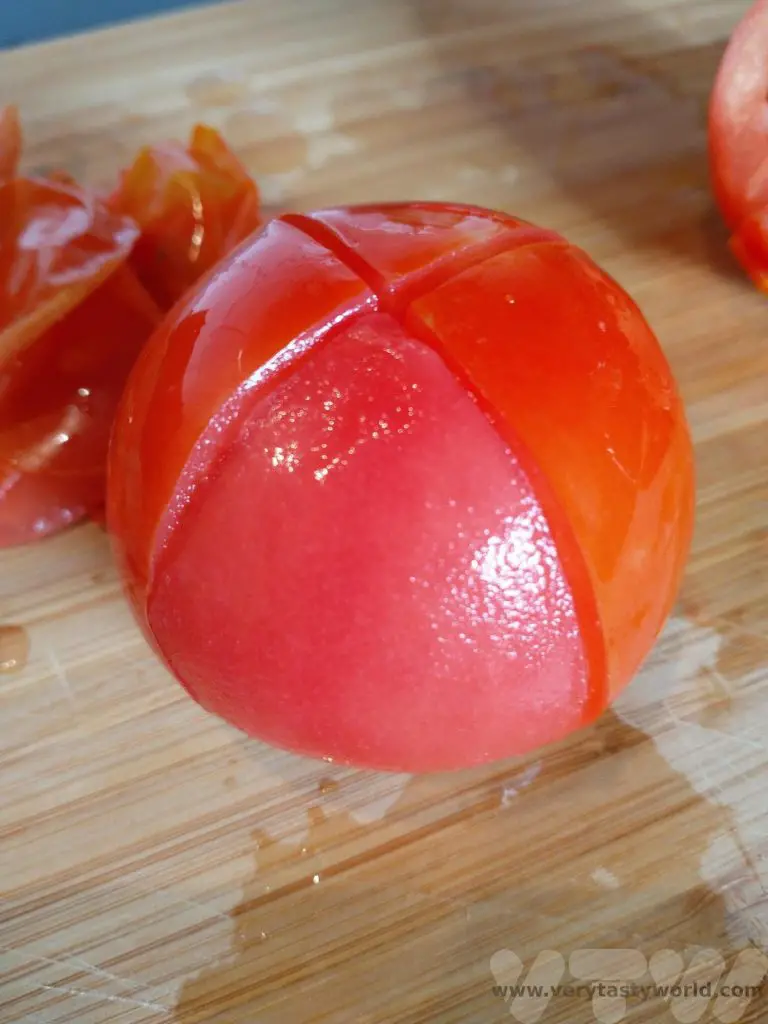
Put the tomatoes in the blender and give them a quick whiz.
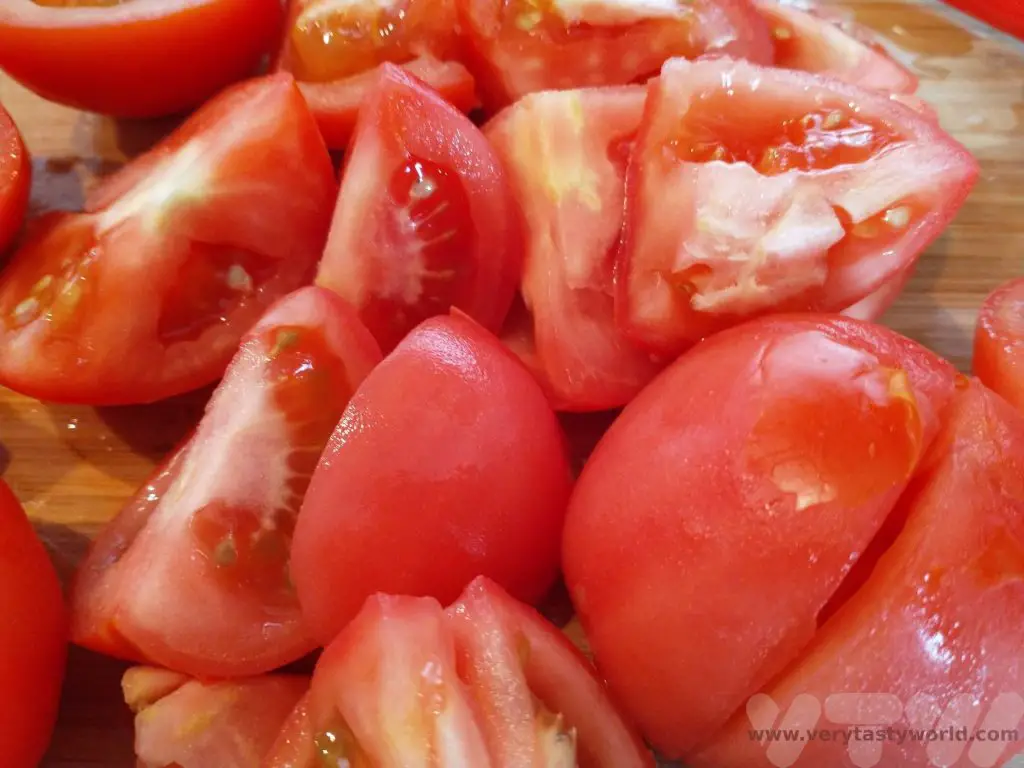
Then tear the bread slices and add those, along with the garlic, oil, salt and pepper.
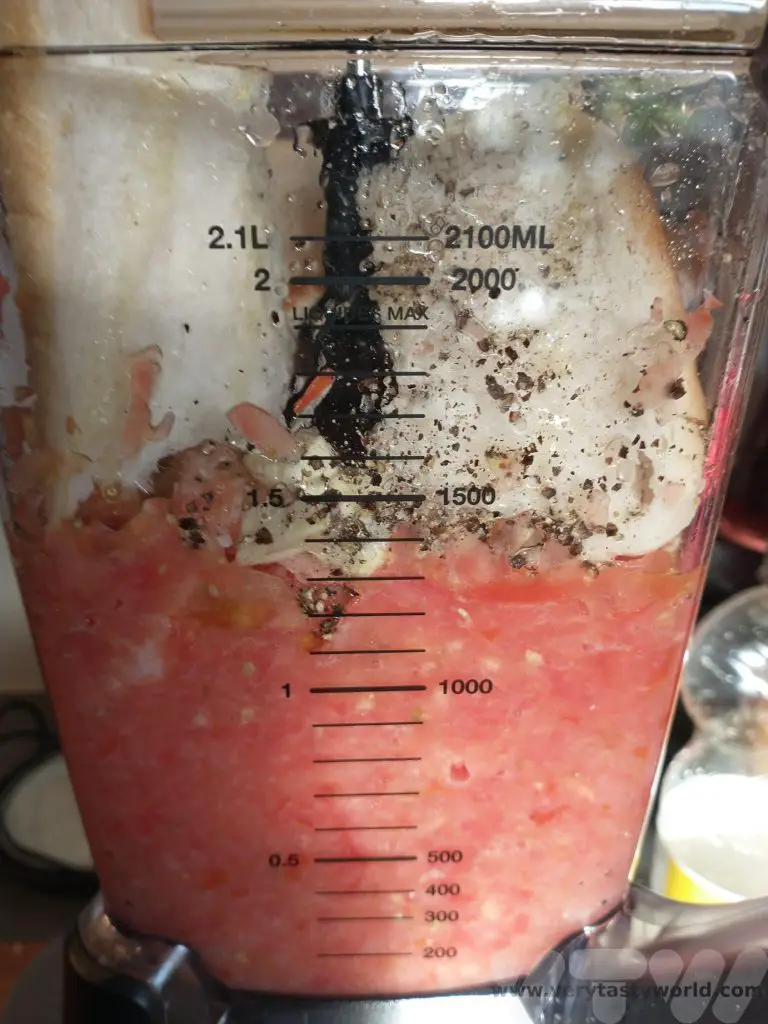
Blend again until you have a smooth, thick soup.
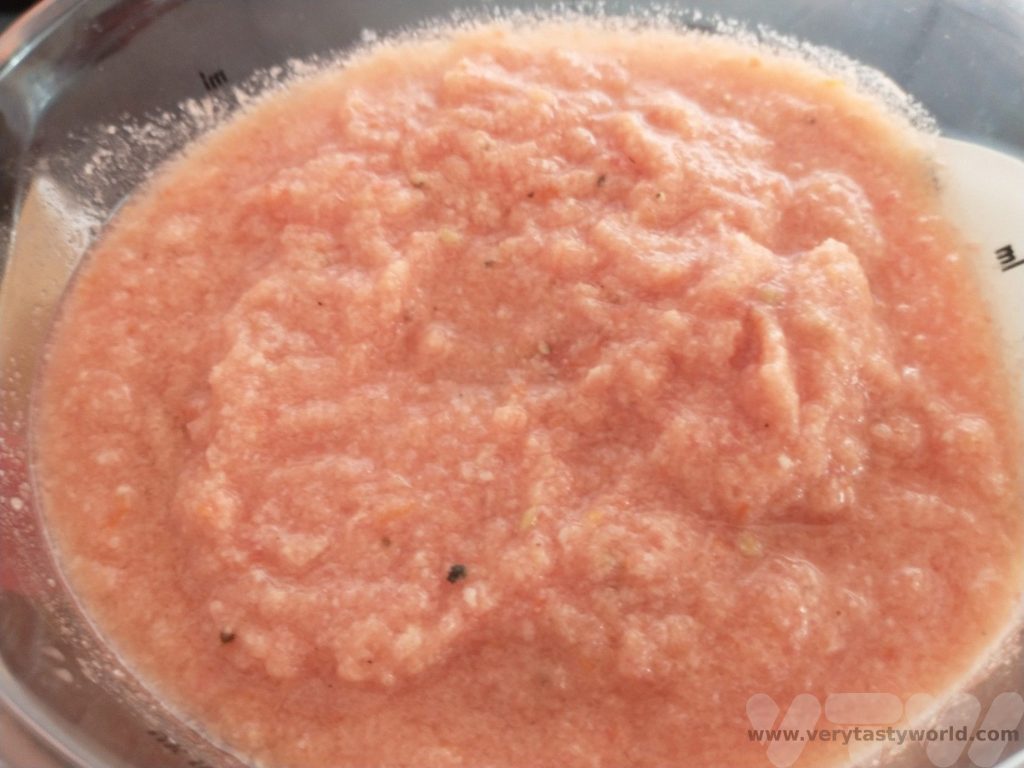
Pour into a jug then put into the fridge and let the flavours infuse.
Serve into individual bowls and garnish with chopped boiled egg and/or chopped ham.
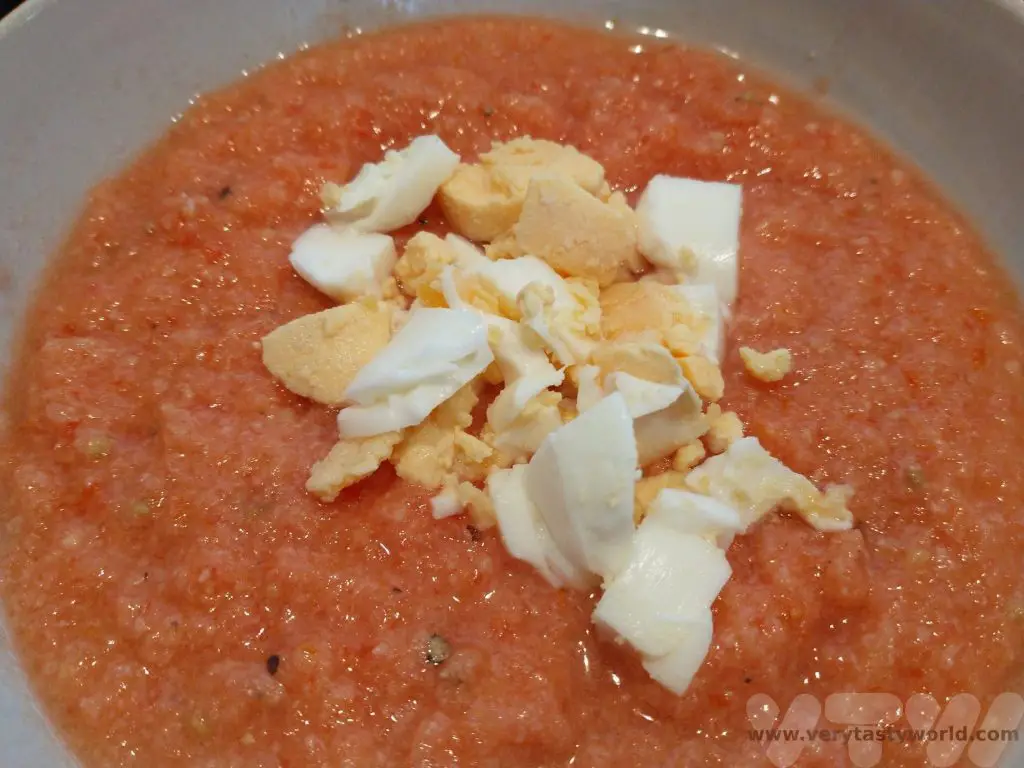

- RECIPE Oyakodon Donburi
- Zero Waste Recipes Before Your Holiday
- RECIPE: Vegetable Biryani Tamil Nadu Style
- RECIPE: Vegan Wild Garlic Pesto
- Recipe: Venetian Pasta Sauce
- RECIPE: Biryani Raita Recipe
- RECIPE: How to Make Costa Rica’s Gallo Pinto
- Recipe: Japanese Simmered Pork Belly – Buta no Kakuni
- RECIPE: How to Make Umeboshi
Visit Guernsey – Art and Literature Activities
The channel island of Guernsey is the second largest in the tiny archipelago in the English Channel and the largest in the Bailiwick of Guernsey (which also includes the islands of Alderney, Sark, Herm and Jethou). It’s a fabulous place to visit, is easily accessible from the UK and has a fascinating history. If you visit Guernsey there are loads of things to do, especially if you like outdoor activities. There are lots of beautiful walks along spectacular cliff paths, and the island is perfect for spending traditional seaside time on pristine beaches.
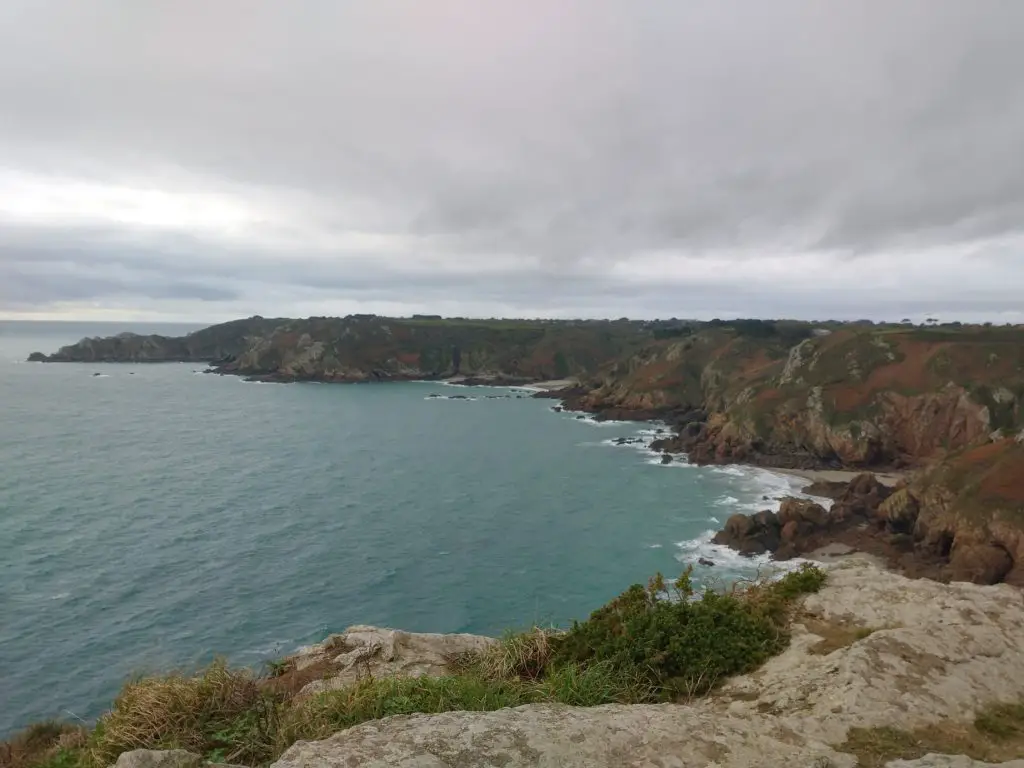
There are a bunch of museums and forts to visit and it’s definitely worth investigating day trips or short breaks to the other stunningly beautiful islands.
Guernsey also has a lot to offer if you’re interested in art and literature, and some of these activities are perfect if the weather isn’t on your side for a day at the beach.
Visit Guernsey – The Renoir Walk
The impressionist artist Pierre-Auguste Renoir visited Guernsey in 1883 and created some fifteen paintings during his stay. They were all based around the charming Moulin Huet. You can take a walk along Moulin Huet to view its beautiful bay where Art for Guernsey have cleverly set up some picture frames at five locations so that you can see the precise spot where he worked on his pictures. Each site also have a display showing a picture of the original painting so that you see how the landscape has changed over the years. Most of the frames are located close to the beach but there is one that is slightly further out and it’s a climb along the path to the cliff-top to capture the view across the bay.
There’s a small car park at the end of a narrow road and just along the path from there is a map showing where each of the frames is located.
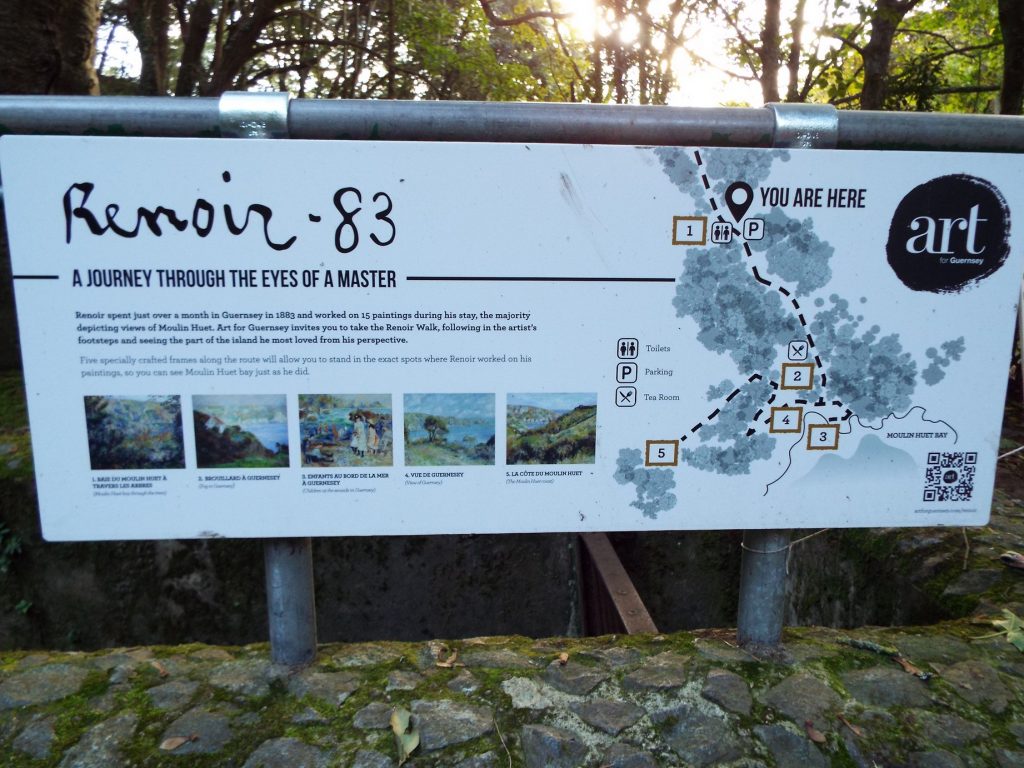
La cote du Moulin Huet.
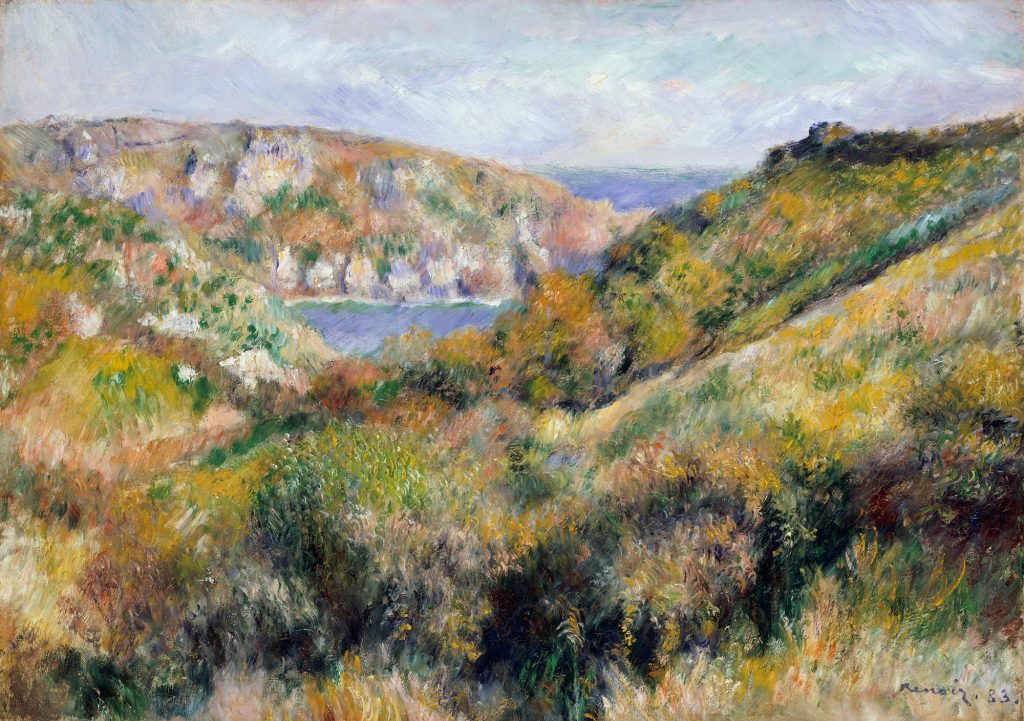
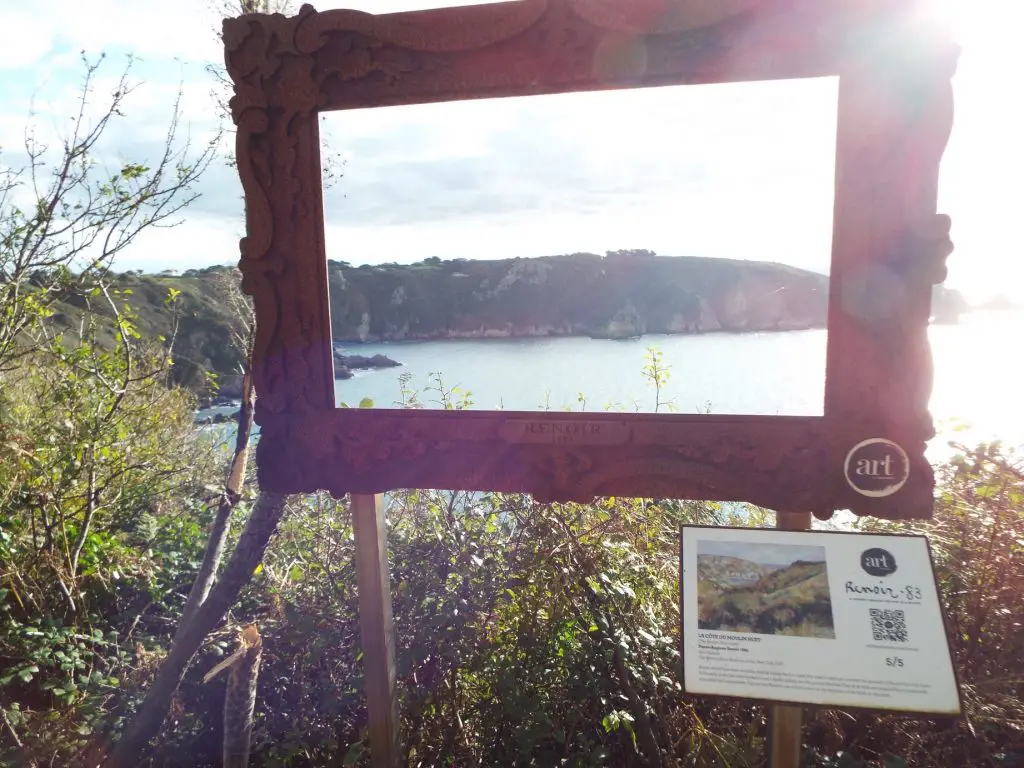
Our version of Enfants au bord de la mer à Guernsey should have been entitled Chien au bord de la mer à Guernsey as our shot was photobombed by a very friendly dog.
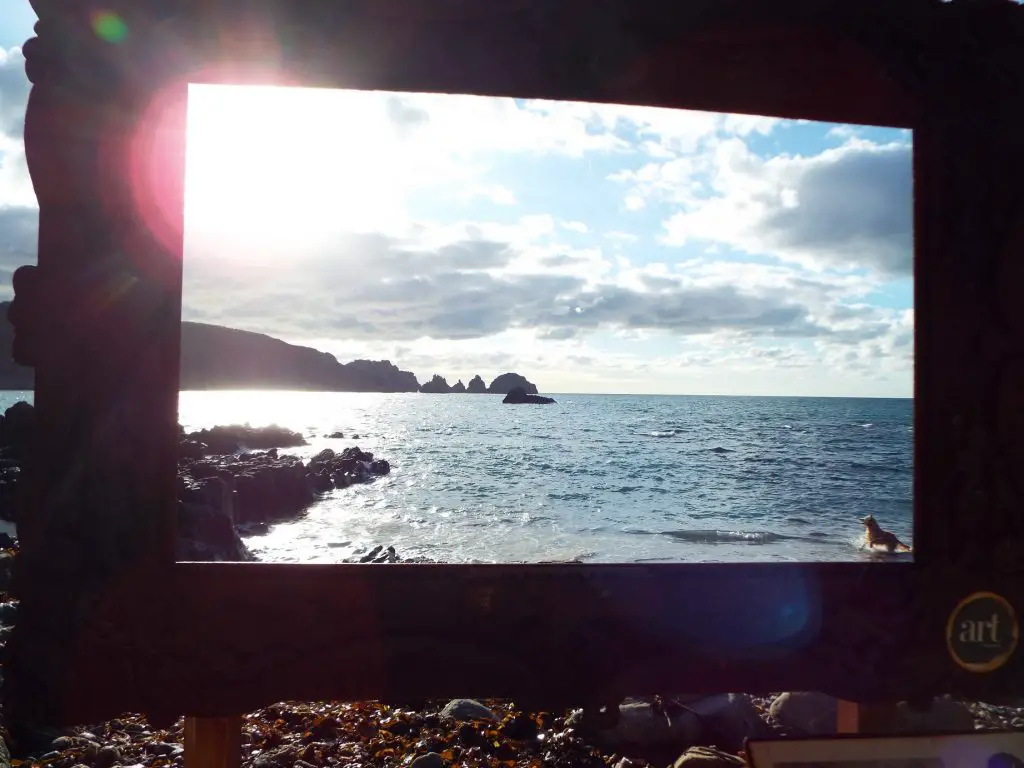
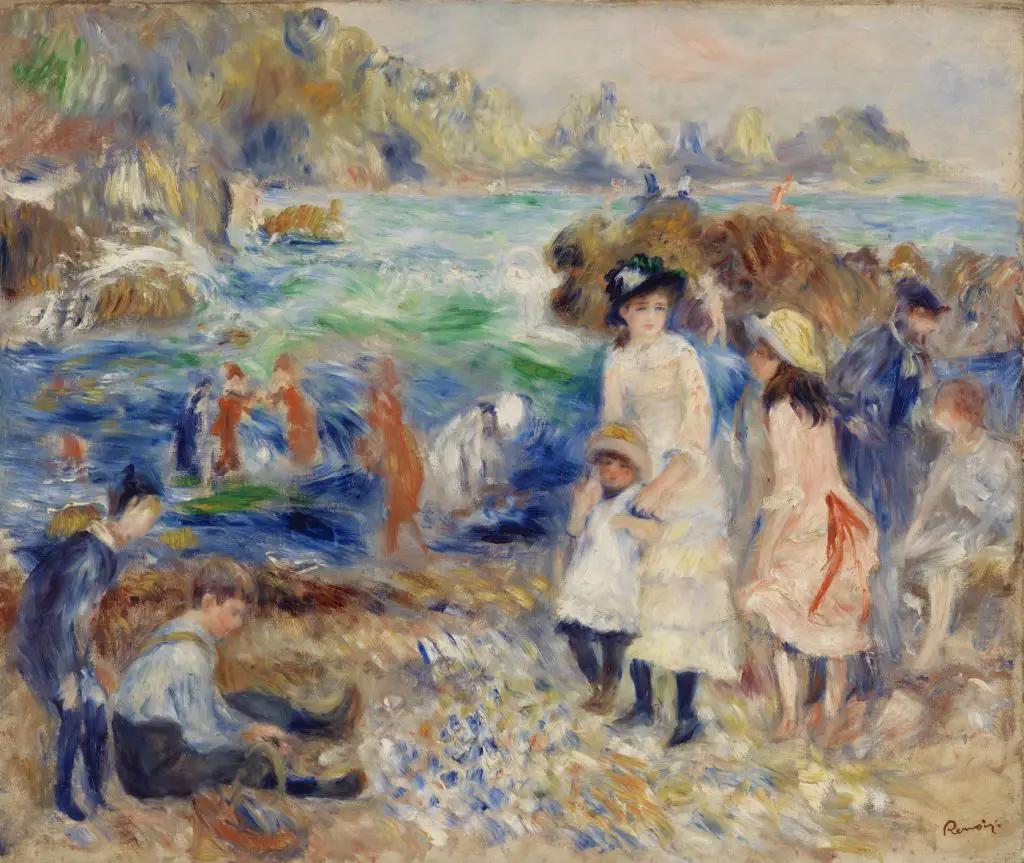
The foliage had changed over the years since Baie du Moulin Huet a travers les arbres was painted.
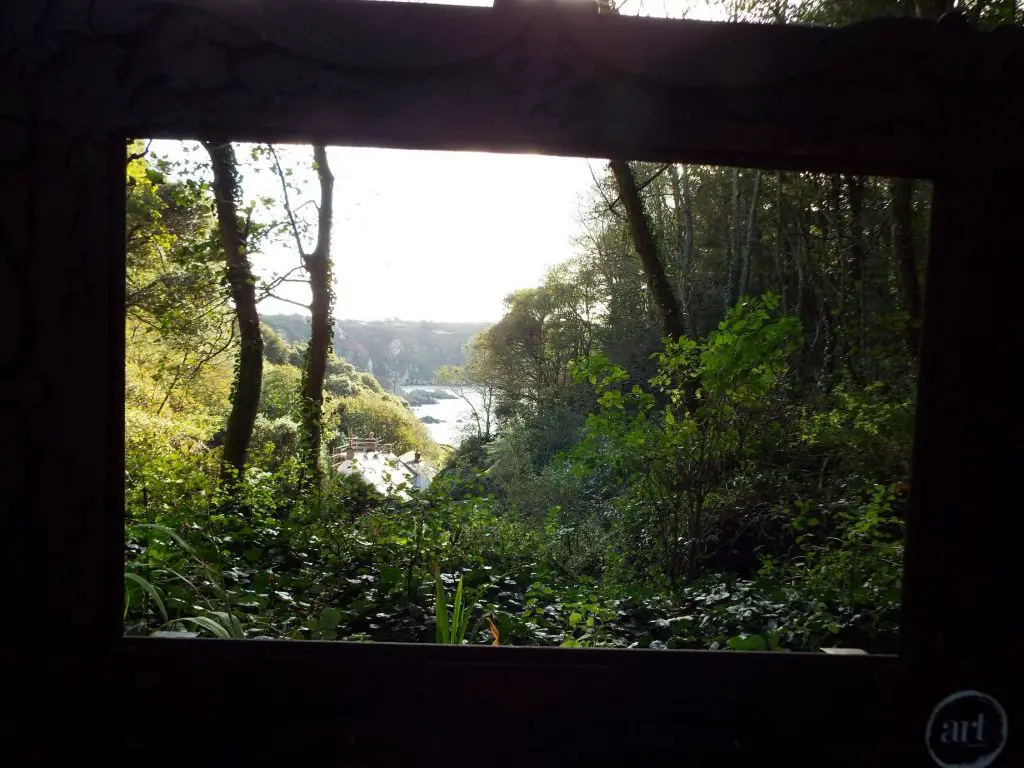
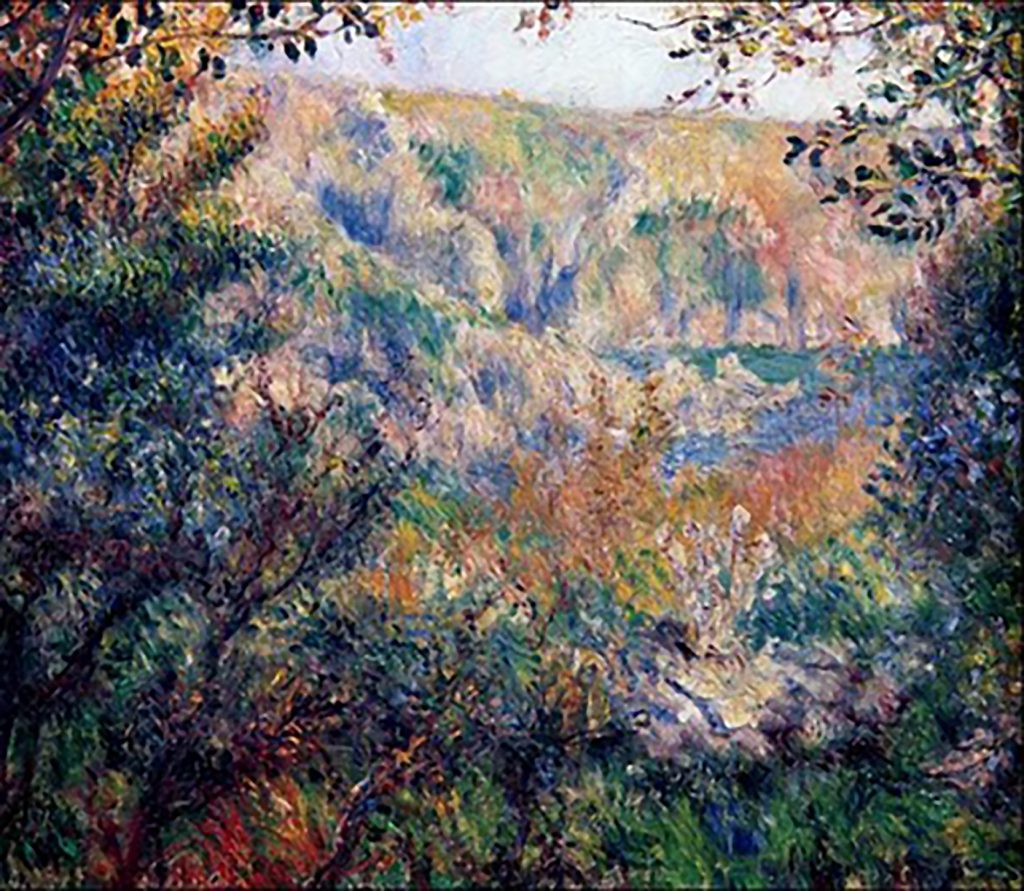
It’s a short climb and walk along the cliffs to see Vue de Guernsey.
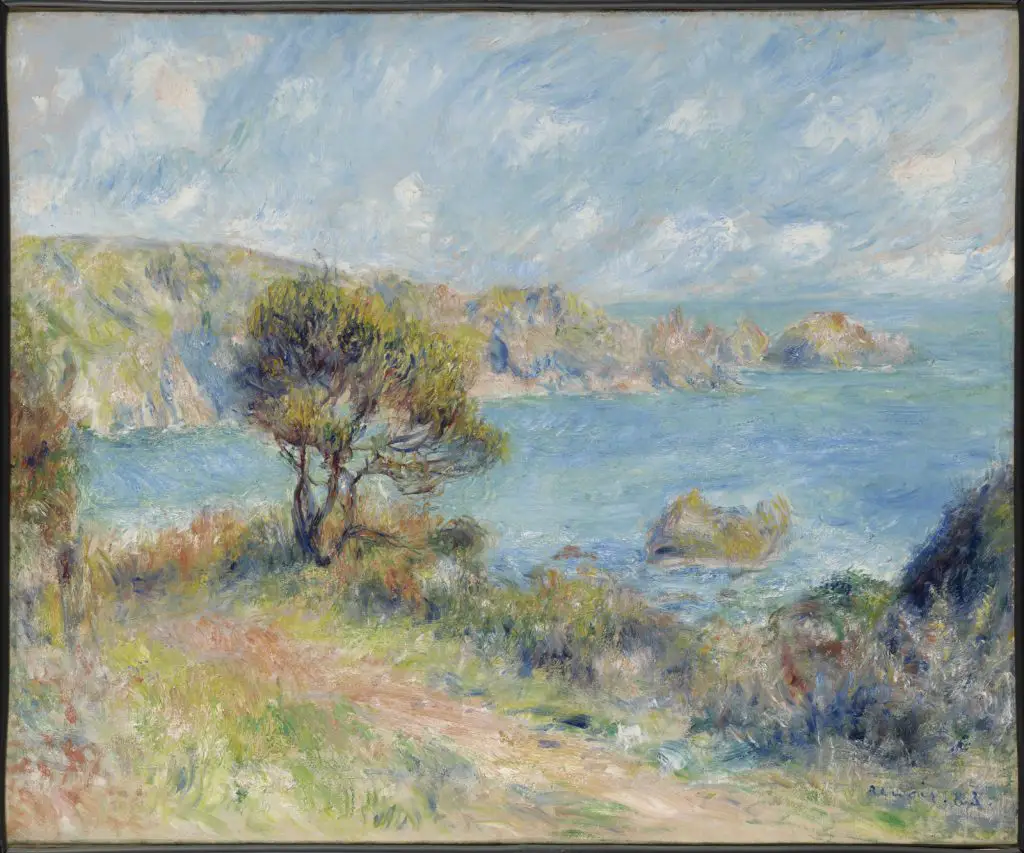
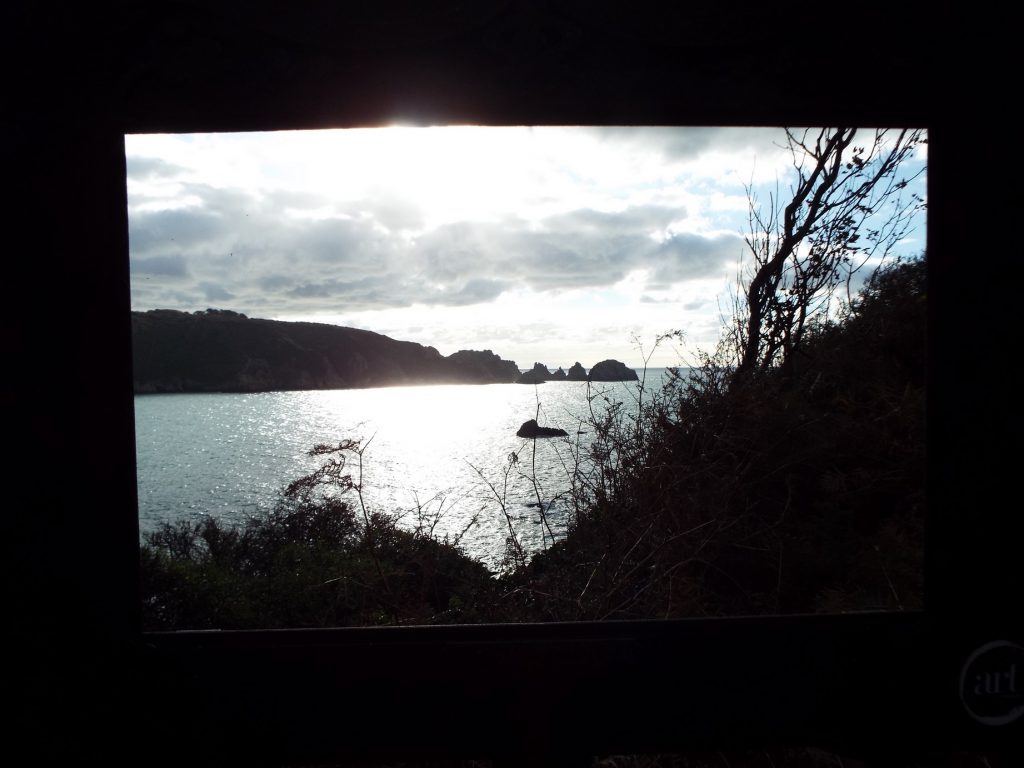
Victor Hugo’s Hauteville House
The French author Victor Hugo spent some 15 years on Guernsey from 1855 to 1870, when he decided to live in exile from his home country following Napoleon III’s coup d’etat in 1851 (Hugo lived in Belgium and Jersey before moving to Guernsey). He wrote extensively while on the island and many believe that his time there was his most productive period, indeed Les Miserables was published during his time on the island. He dedicated Les Travailleurs de la Mer to ‘the rock of hospitality and freedom.’
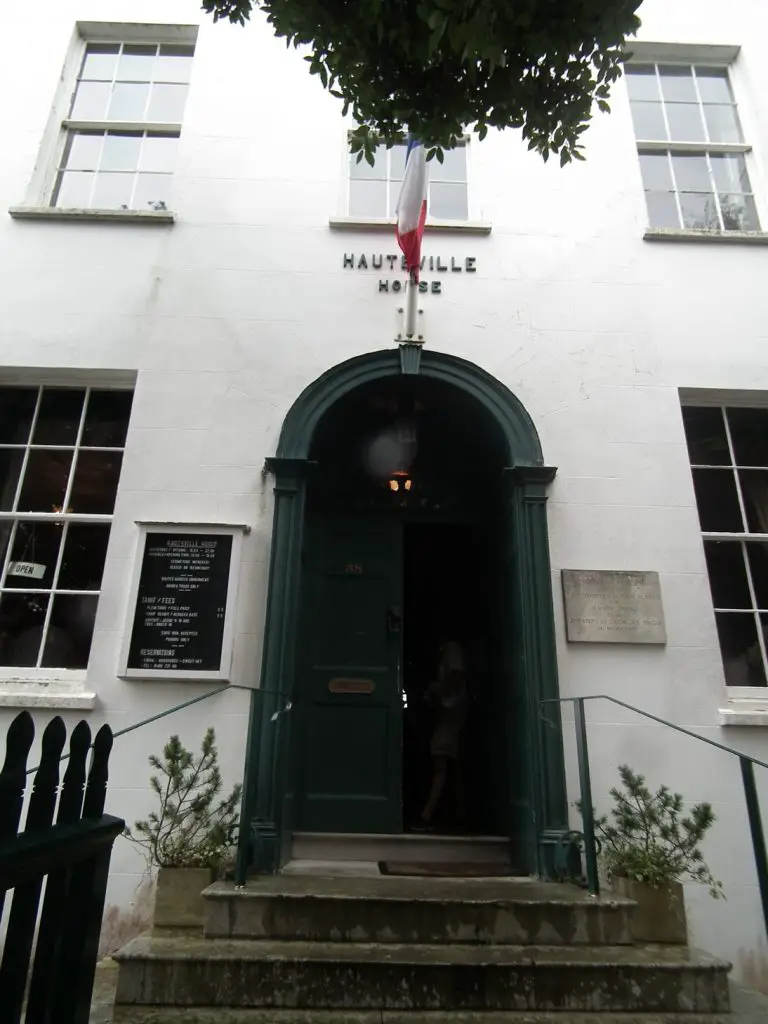
If you visit Guernsey you can tour his former residence, Hauteville House, in St Peter Port
Hauteville House offers a fascinating glimpse into his lifestyle because Hugo decorated the home himself.
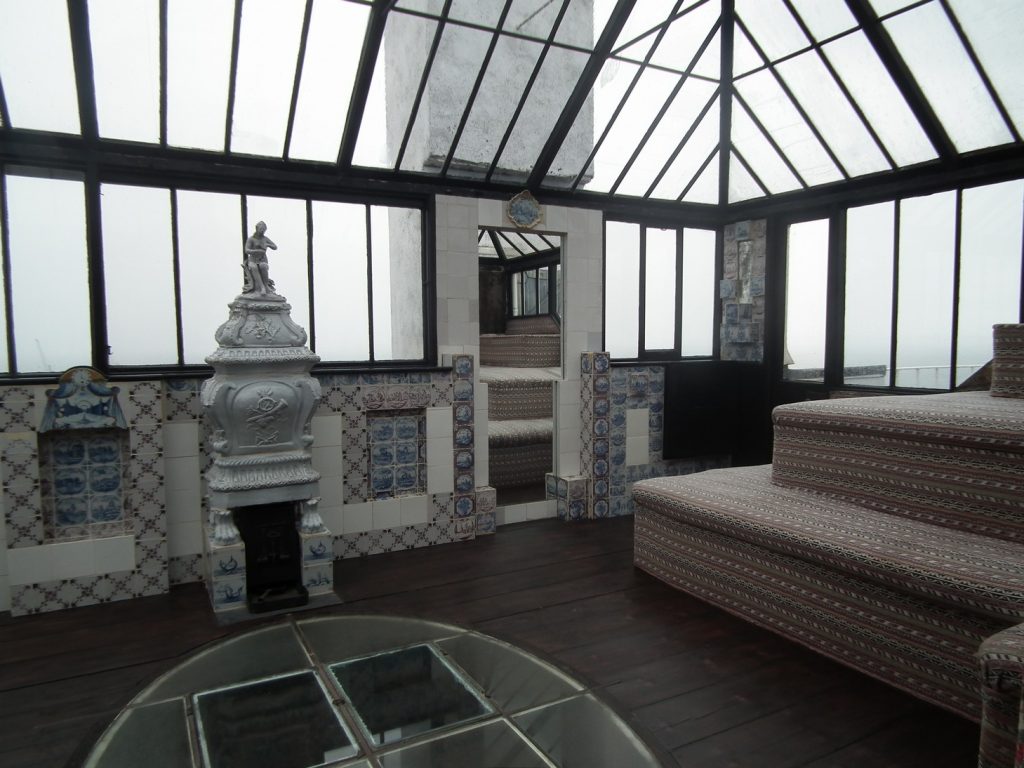
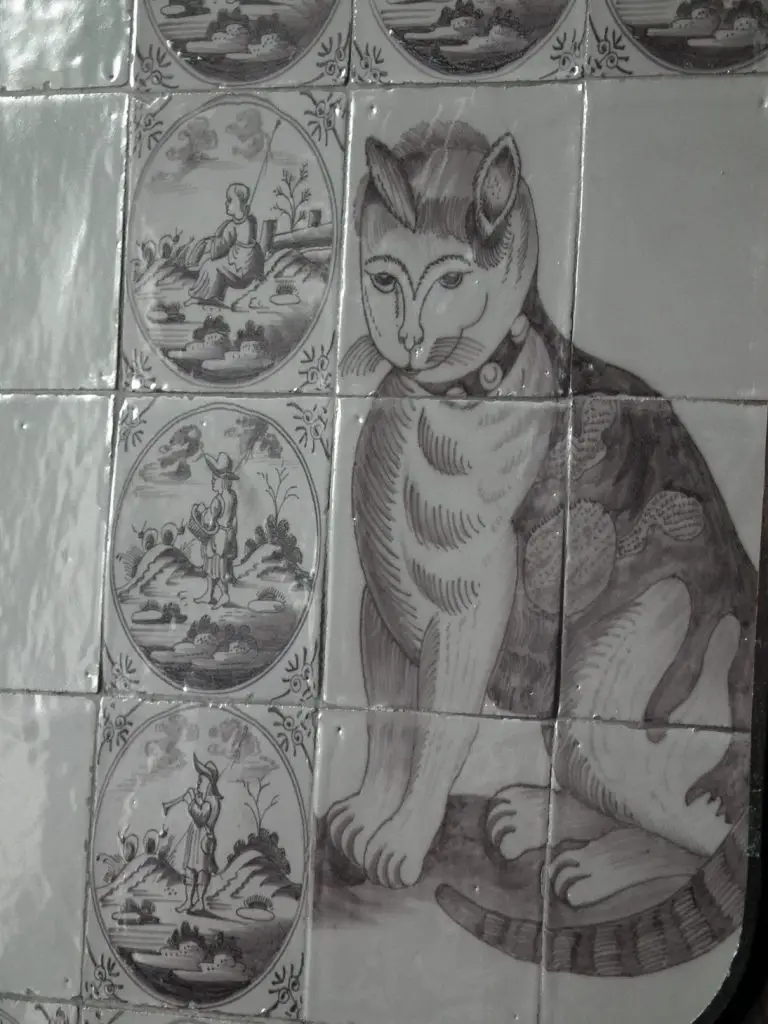
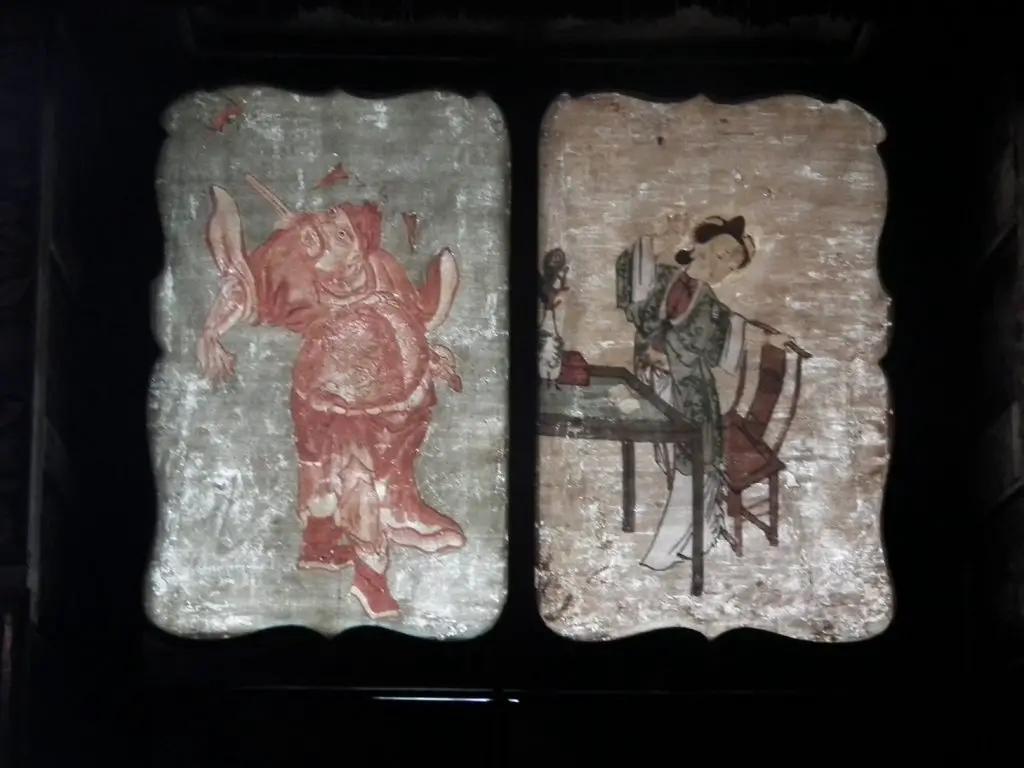
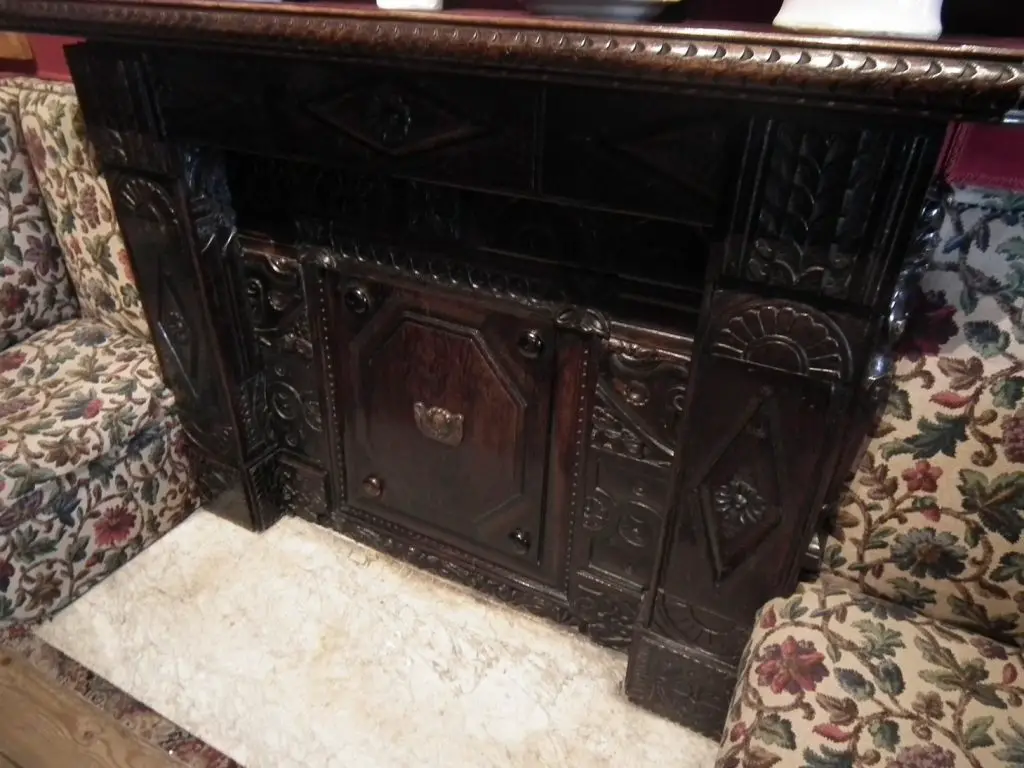
We were particularly taken with the dinner plates on the ceiling!
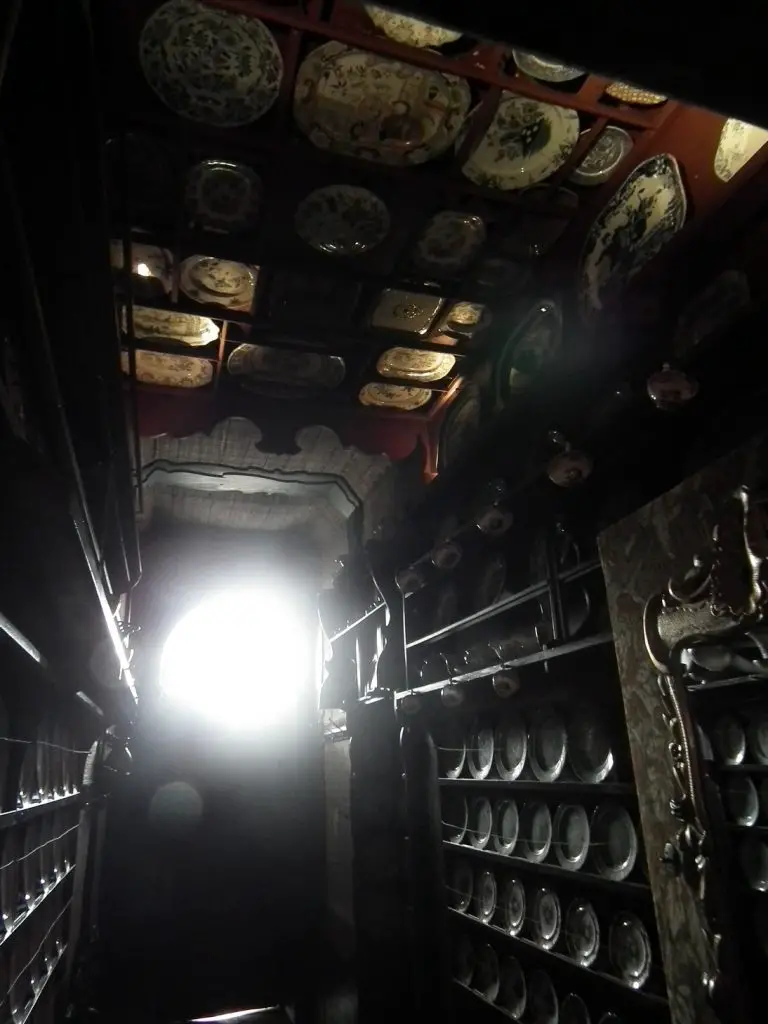
It is also possible to stroll around the garden of Hauteville House.
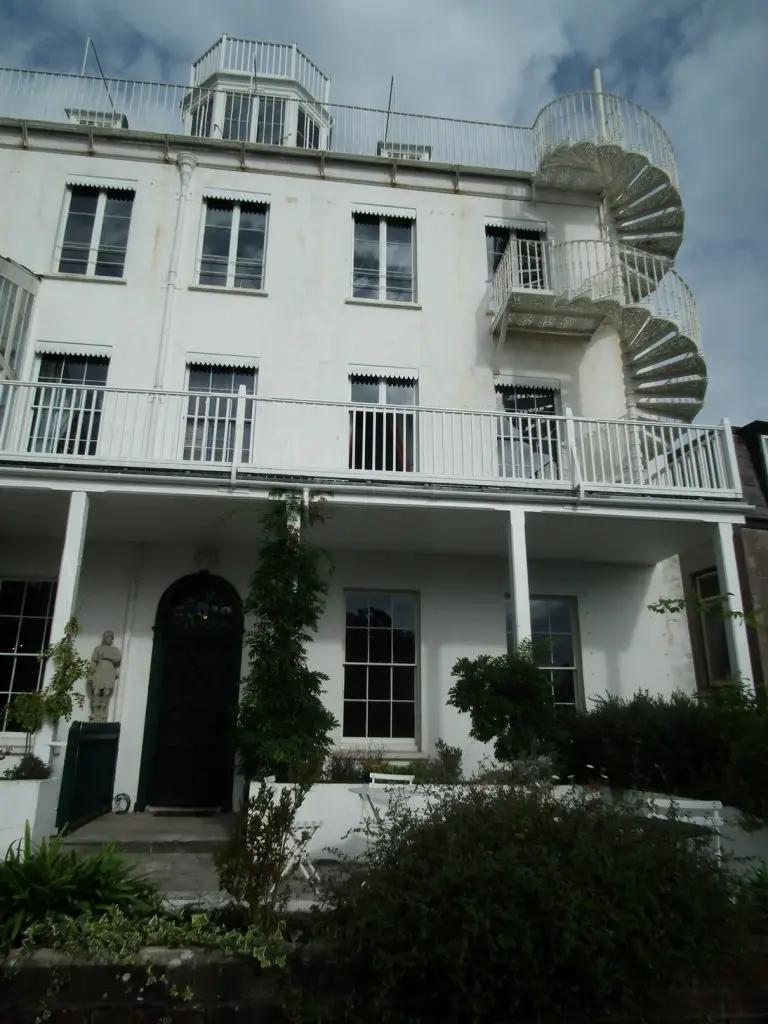
Guernsey Sculpture Park
Another artistic activity when you visit Guernsey is to walk around the sculpture park in the grounds of Sausmarez Manor. It’s located on Sausmarez Road in St Martin, a short bus ride away from St Peter Port.
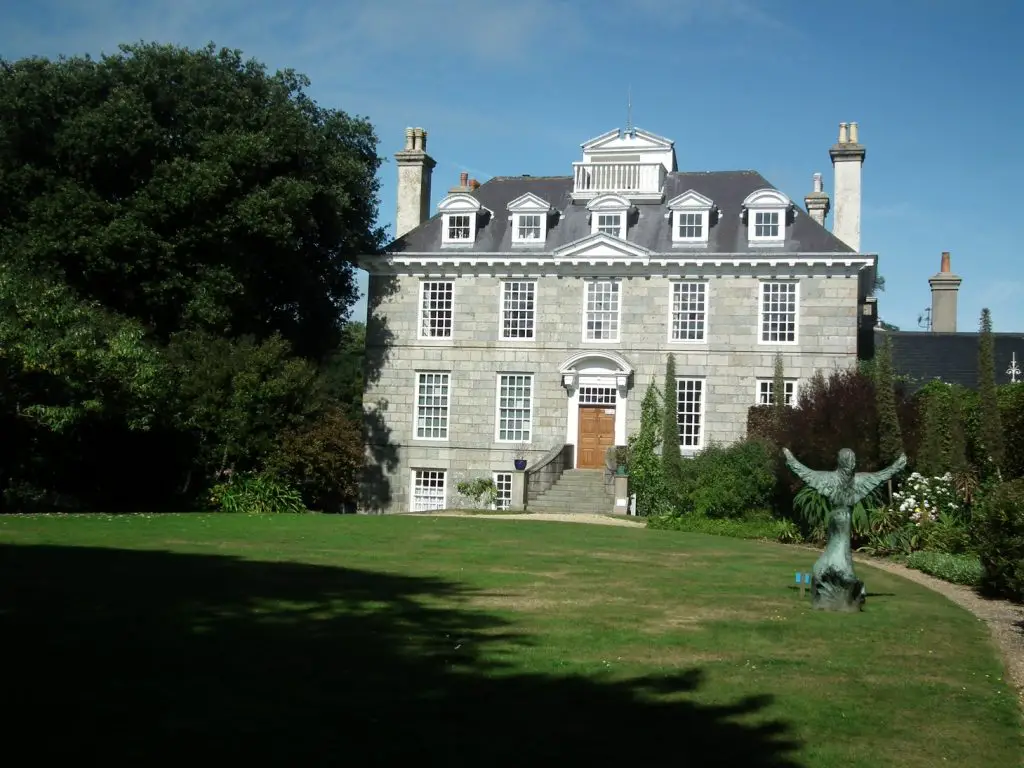
You can follow the ArtParks trail through a lovely woodland and view a couple of hundred sculptures from artists all over the world. You can even buy some of the sculptures if any take your fancy.
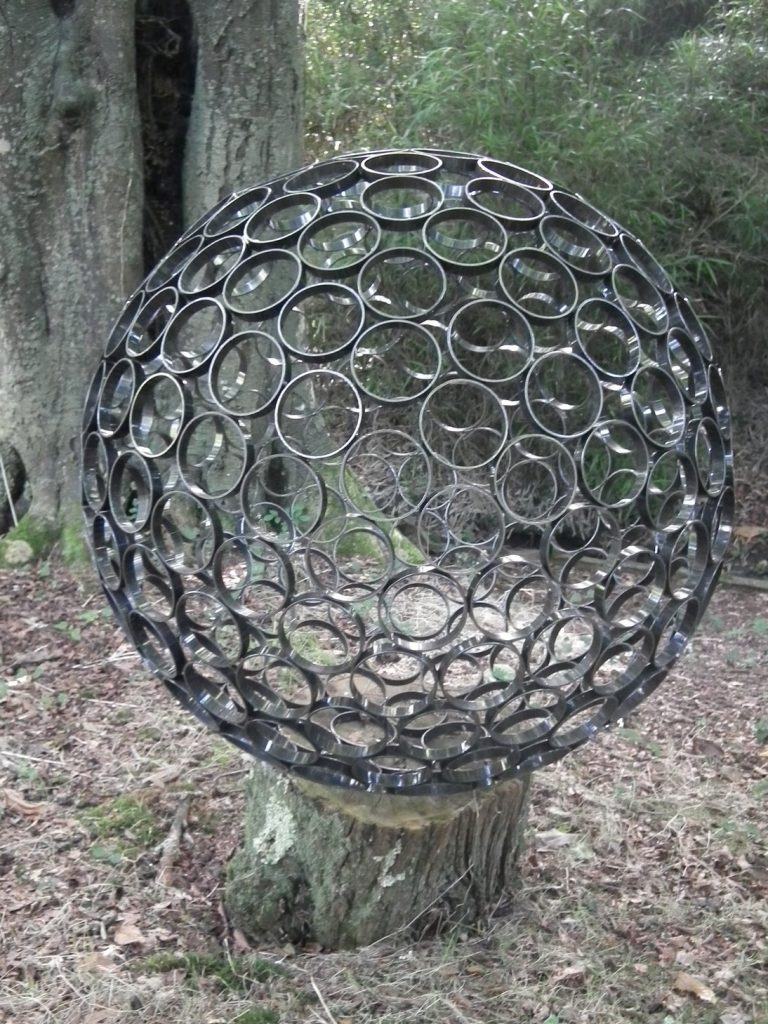
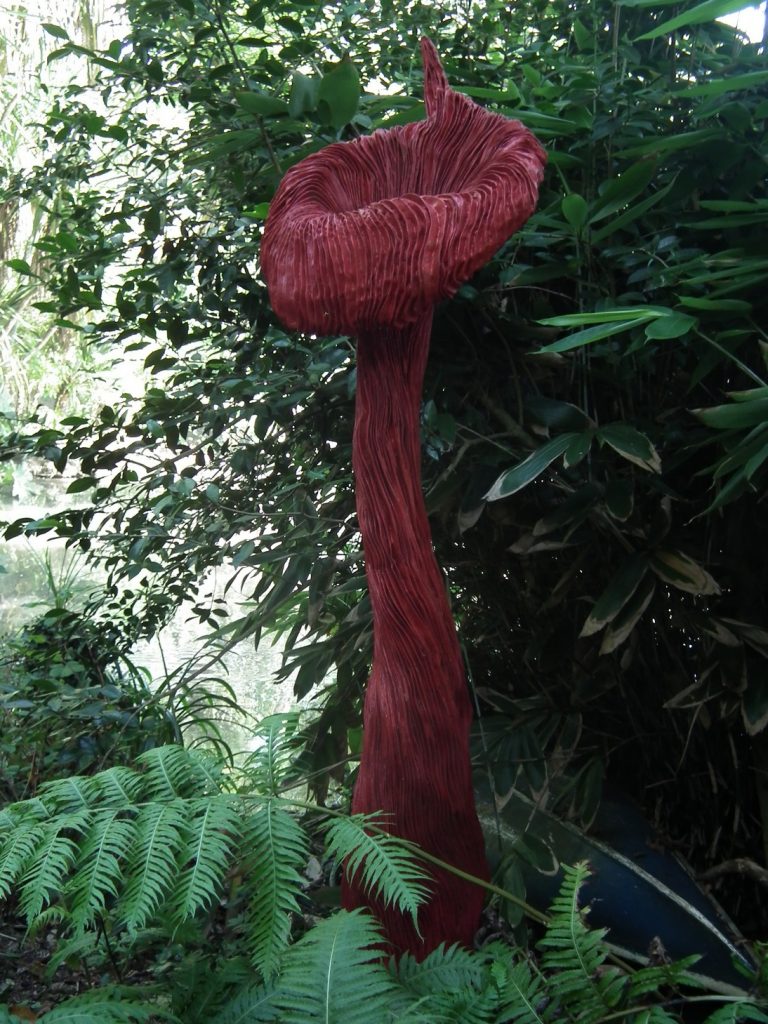
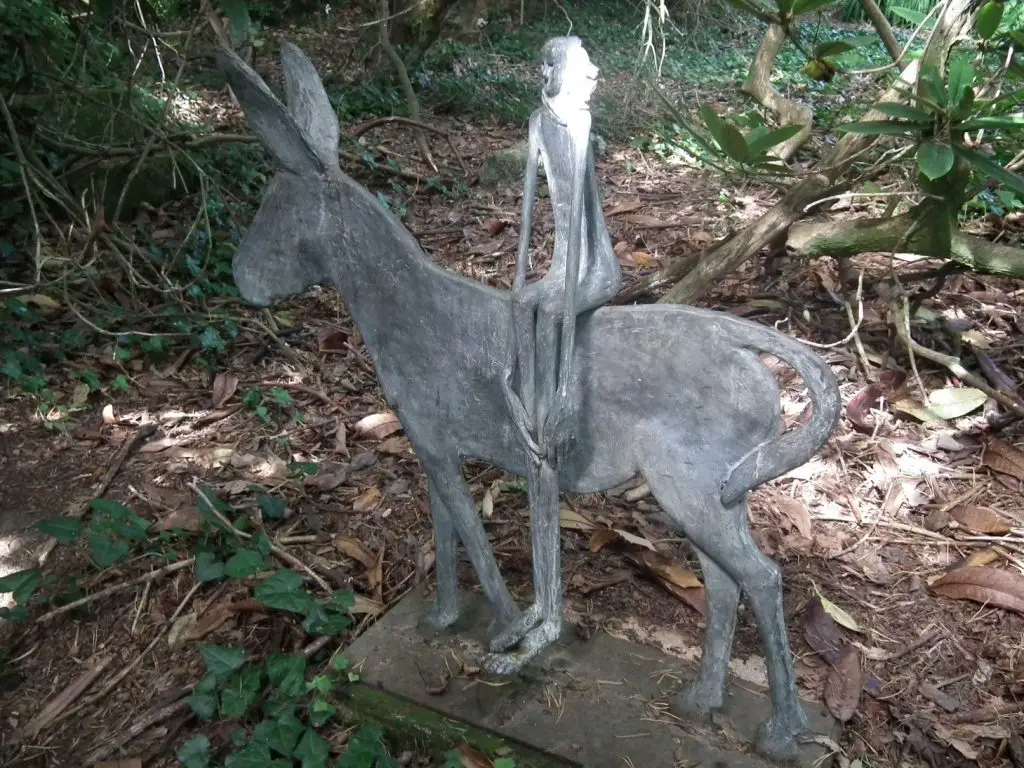
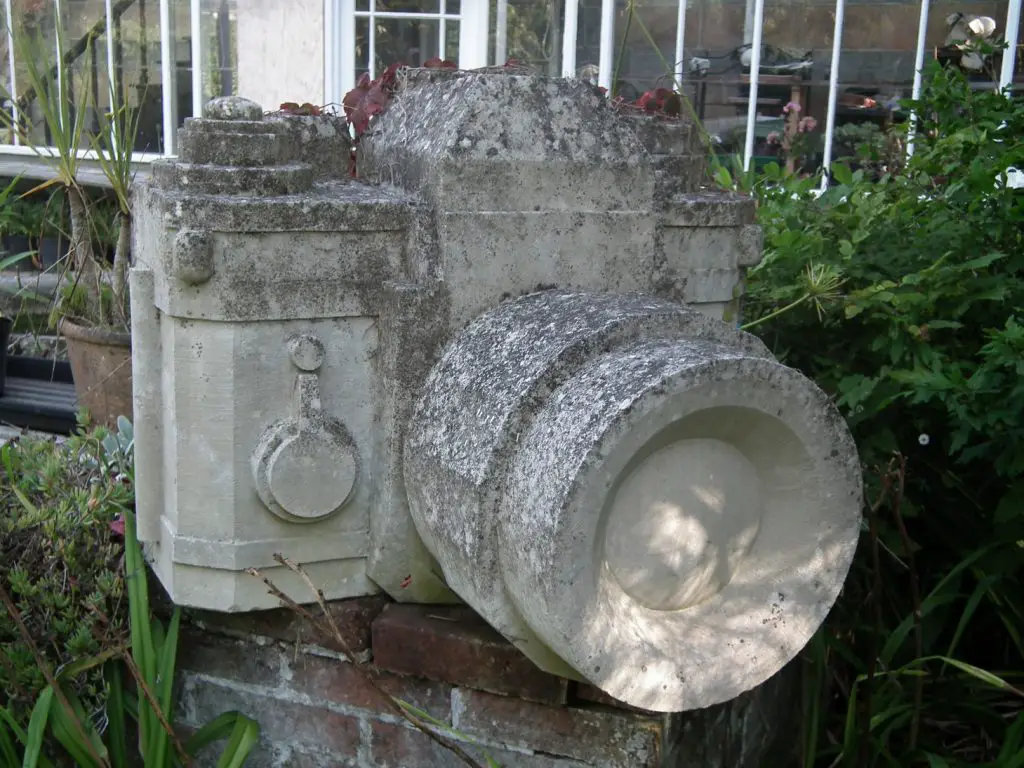
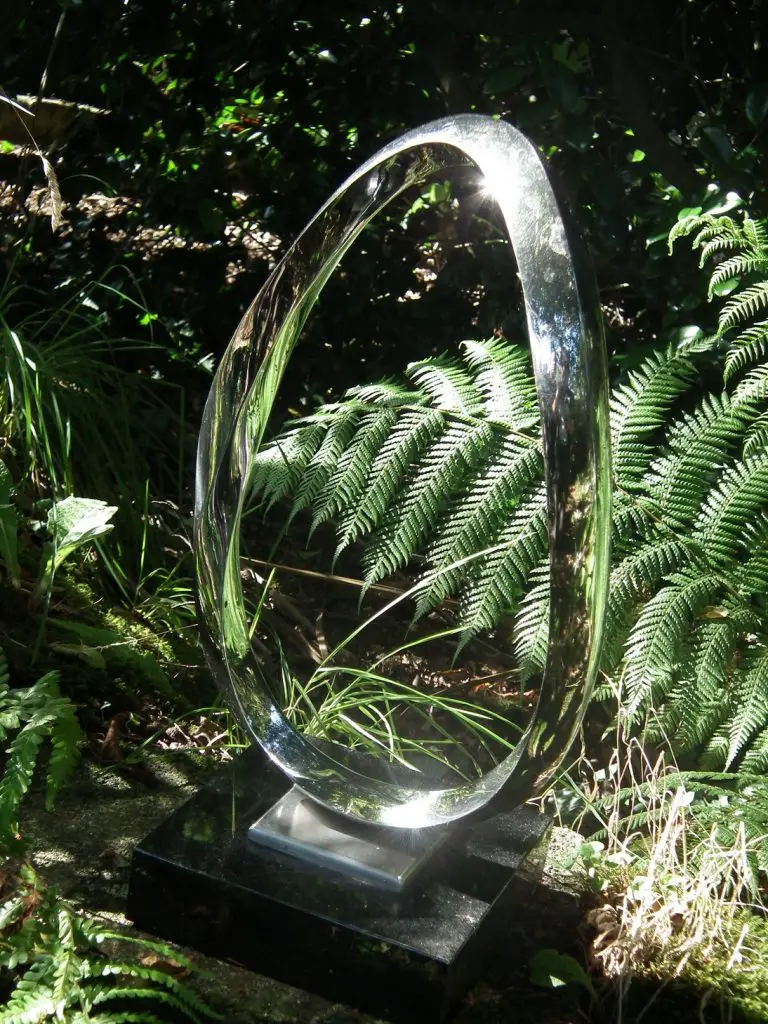
Visit Guernsey – The Candie Art Gallery
The Candie Art Gallery is small but perfectly formed. It has a statue of a striding Victor Hugo in the gardens.
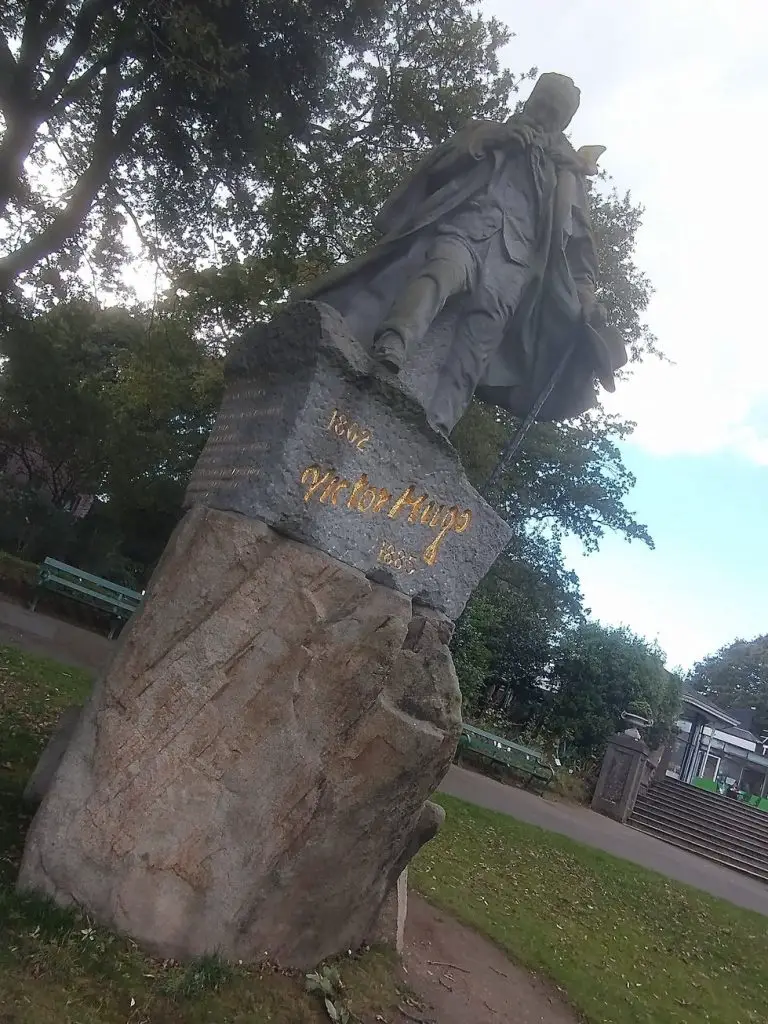
The gallery is part of a wider arts and museum complex, which also includes exhibitions on the island’s history and a highly interactive folklore exhibit which features a recreation of an early 19th century Guernsey cottage (complete with appropriately creepy mannequins) and stories of local legends. Some of the stories are fascinating.
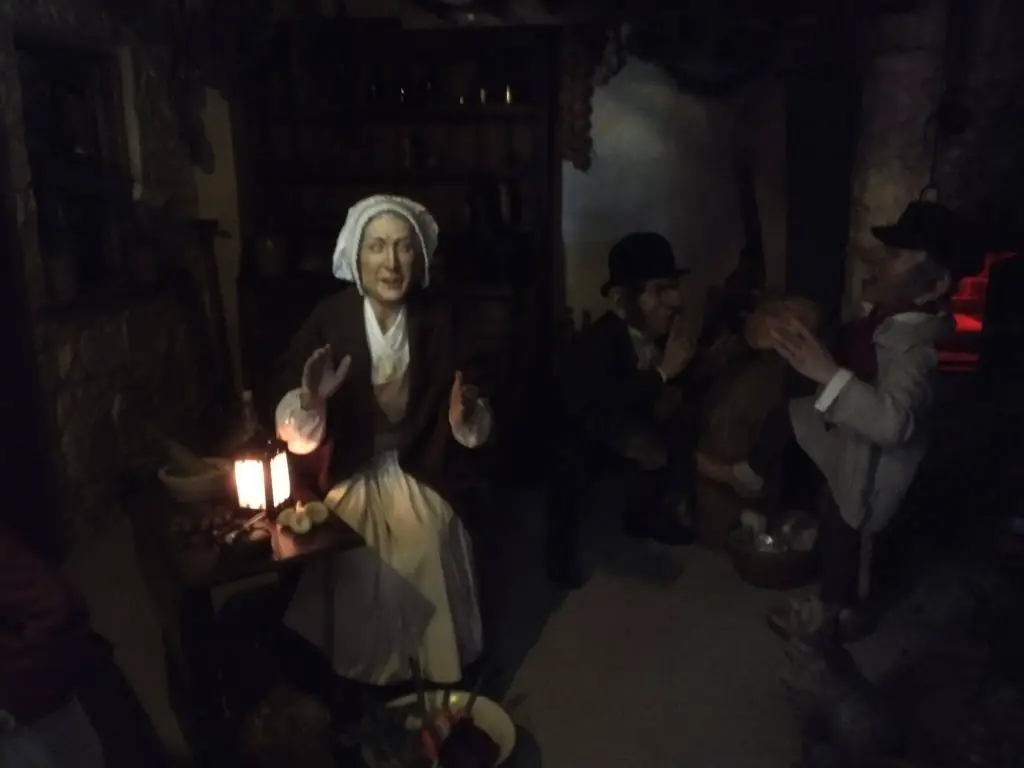
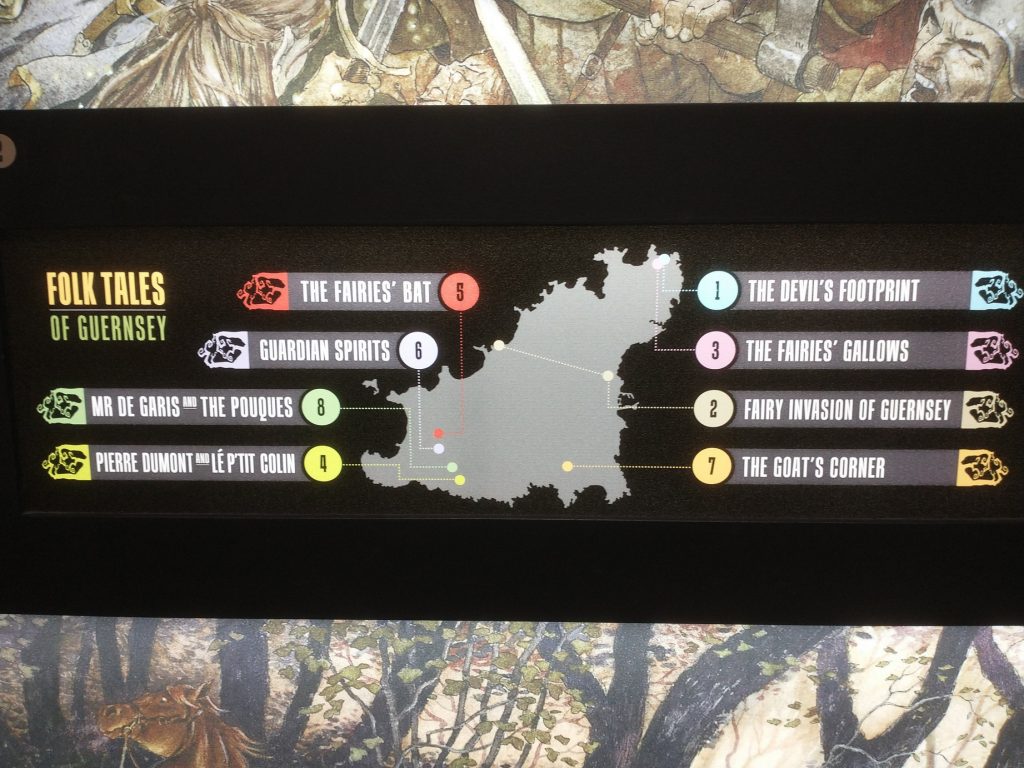
There is also a permanent exhibition art space.
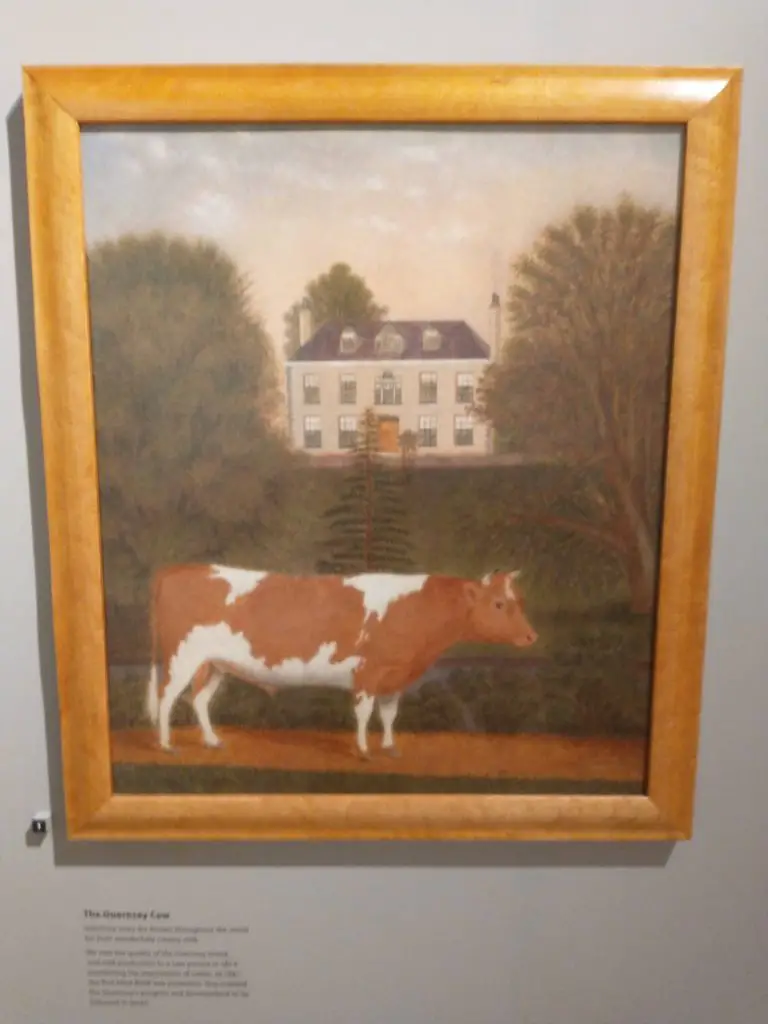
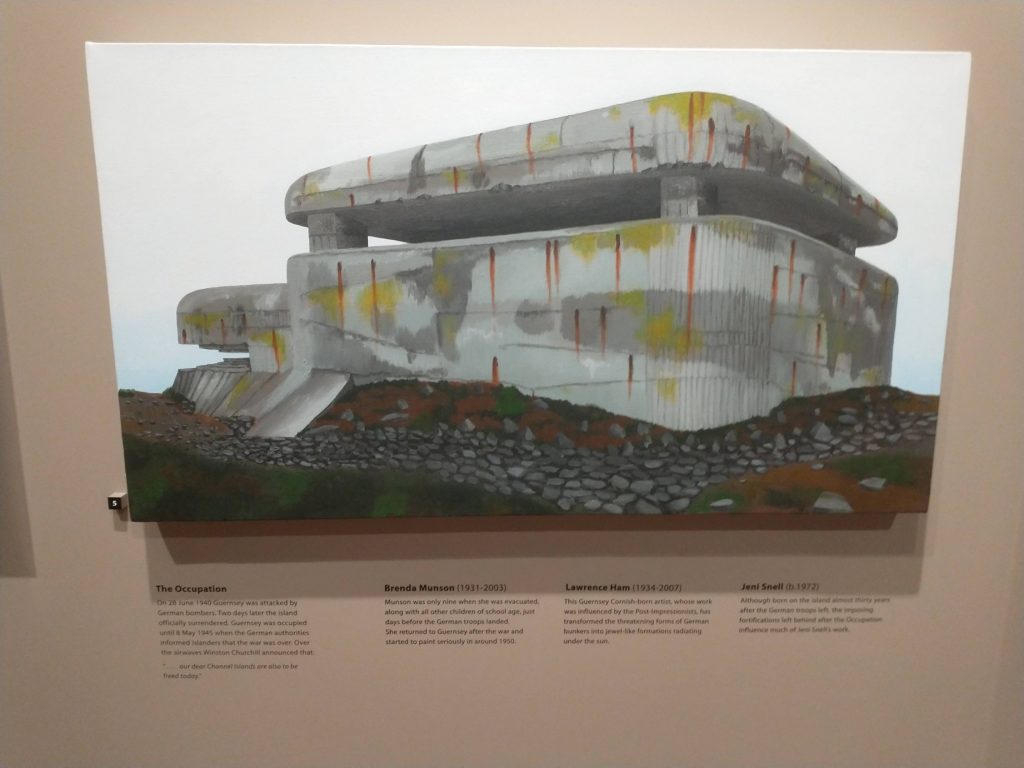
The teeny gallery presents a number of paintings depicting the Bailiwick in chronological order as you circle the exhibition space.
It also hosts some temporary exhibits and there were a couple of very famous names on display when we visited in 2018 – including a Damien Hirst and Yayoi Kusama.
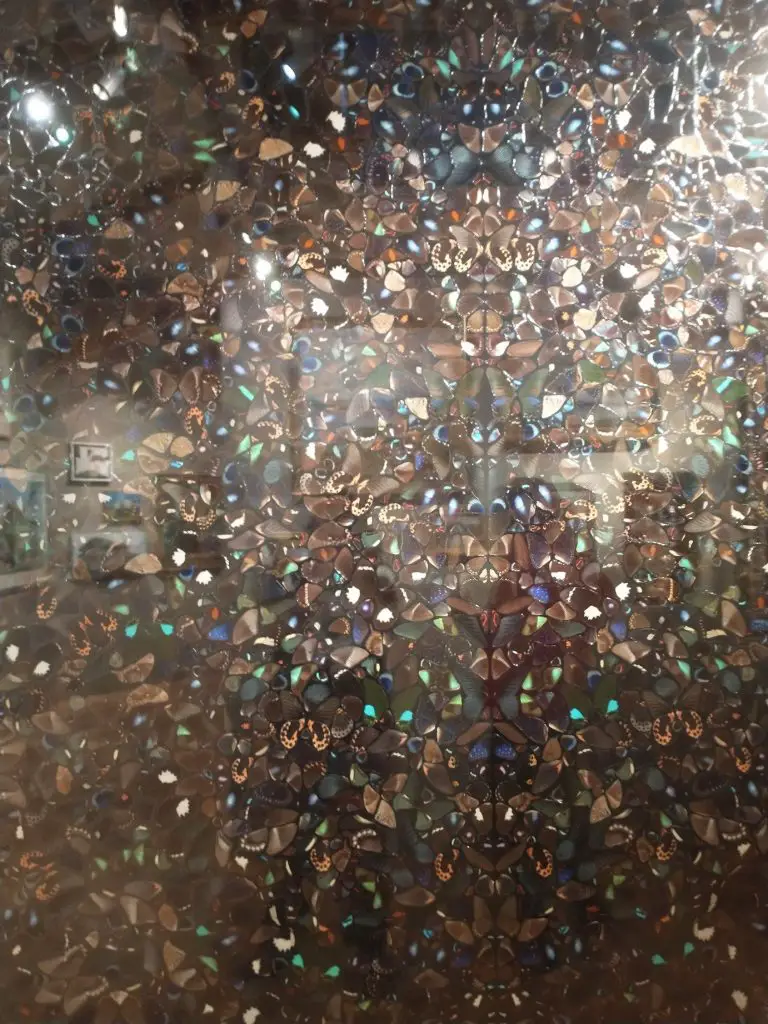
Saumarez Park has a fascinating National Trust Folk & Costume Museum which features a number of exhibits from Guernsey’s history. And there are a number of art galleries on the island, including the Coach House Gallery in St Pierre du Bois as well as Iris And Dora in Ruettes Brayes, St Peter Port. St James The Less, a 200 year-old former church in College Street, St Peter Port, also has a variety of cultural events on offer, including visual art exhibitions and musical performances.
Potato Peel? In a Pie? Literary Guernsey
The Guernsey Literary and Potato Peel Pie Society is a 2008 bestselling novel that was adapted into a film directed by Mike Newell in 2018. It is a historic drama set during the occupation of the Channel Islands in World War 2. It is possible to go on a tour to see some of the locations mentioned in the book. And if you are interested in the history of the occupation there is the German Occupation Museum which is located close to the island’s airport.
Guernsey also has a Literary Festival, this year running from 11th May to 26th June. It offers plenty of events running throughout the duration of the festival, with lots of guest authors visiting the island to give talks, as well as a writing competition for students in the Bailiwick.
Visit Guernsey – The Art of Dining
Guernsey also has a fantastic food scene. While there are great restaurants all over the island, the pretty capital St Peter Port has a plethora of excellent eateries.
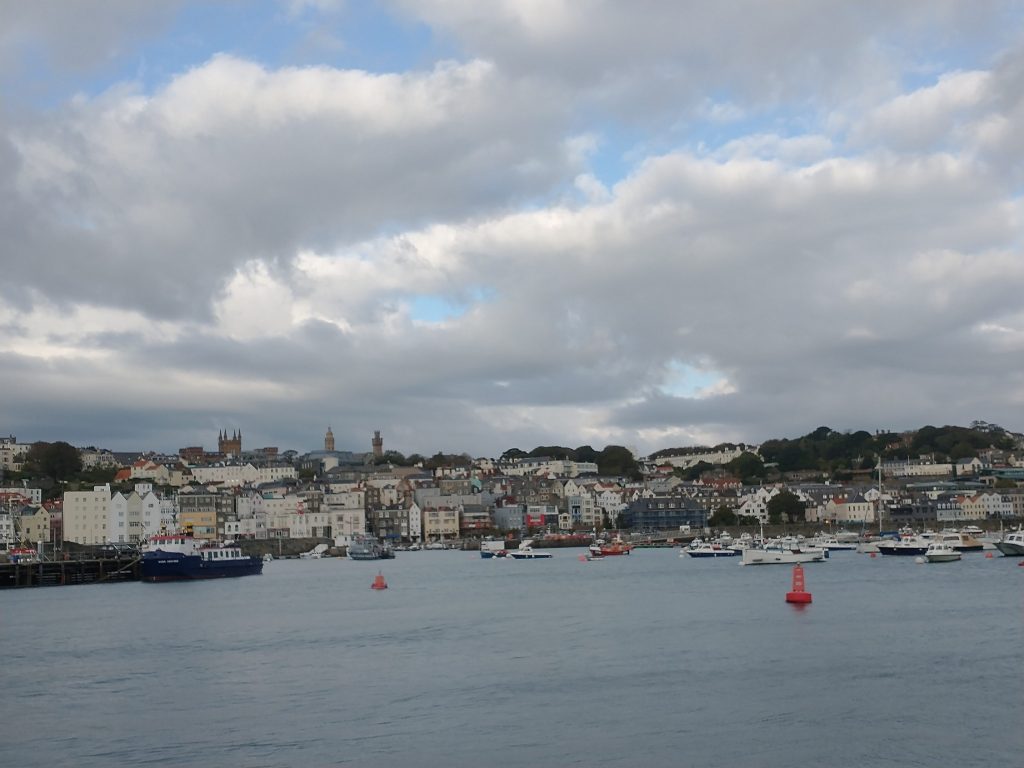
Every October the island has a Tennerfest whereby restaurants, hotels, pubs and cafés will put on a special fixed priced menu and offer people the chance to eat out for a much cheaper price than normal. Make sure you to get a reservation, though, the event is really popular and the best emporia will be fully booked. Being an island, the seafood is superb.
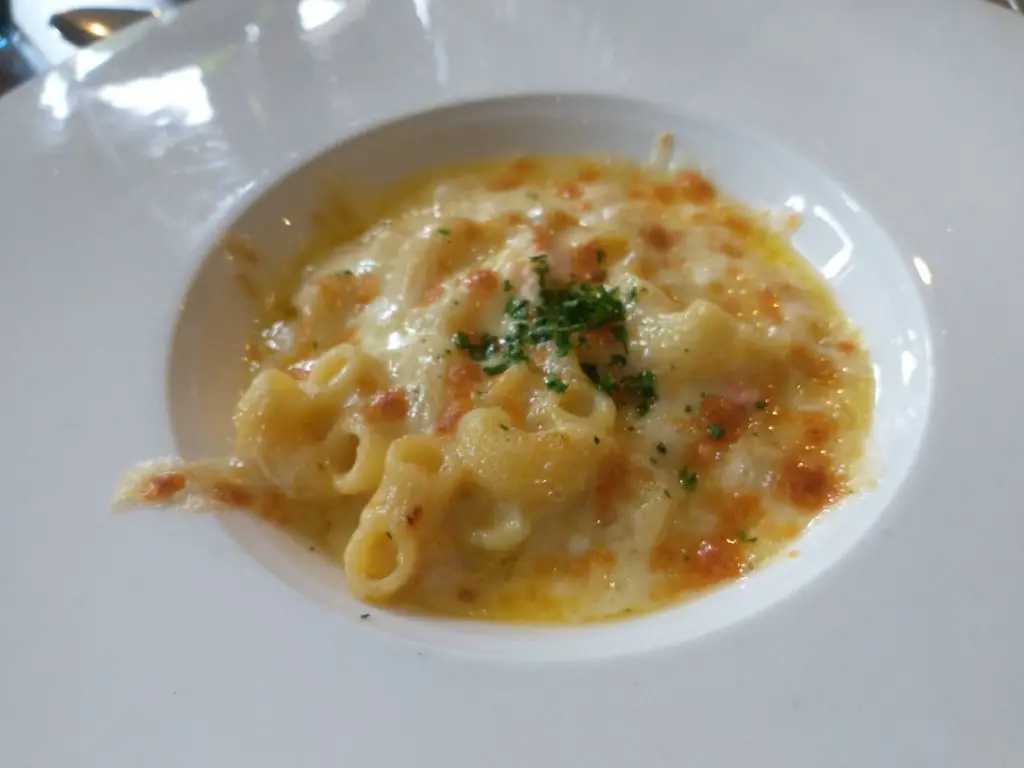
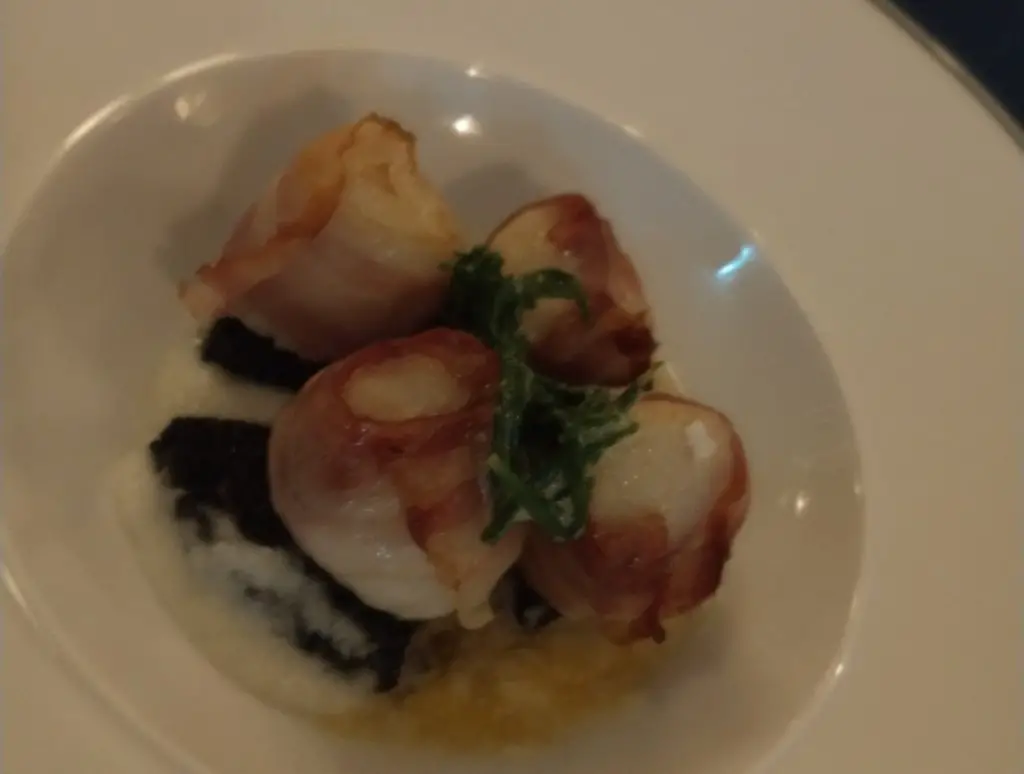
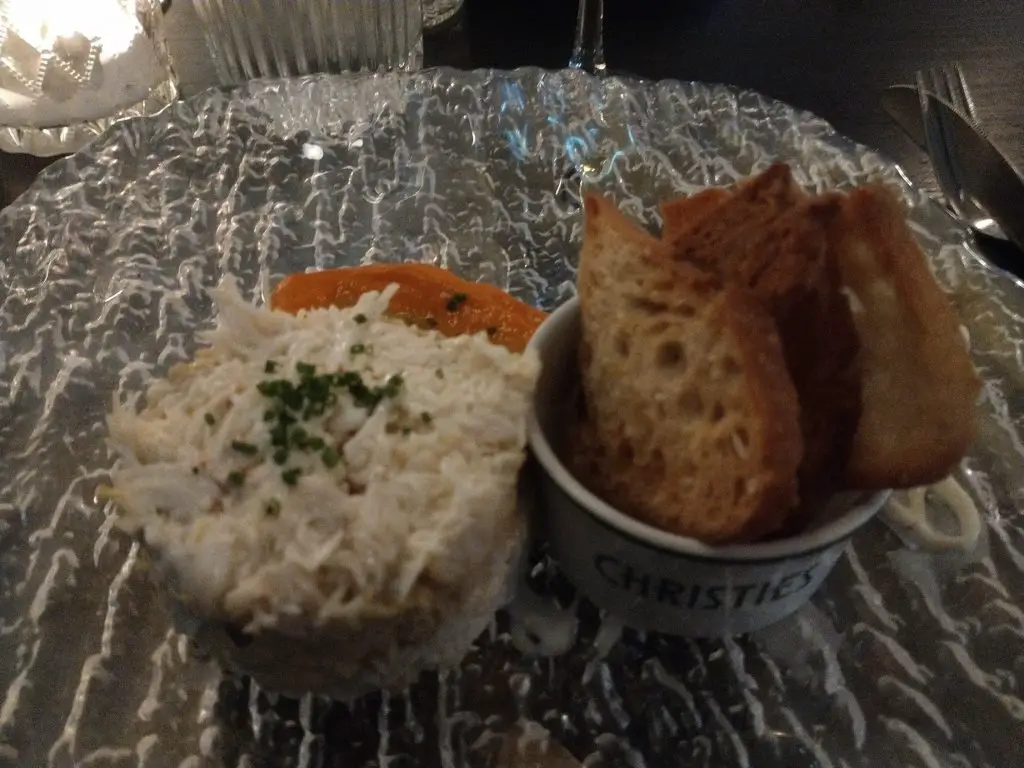
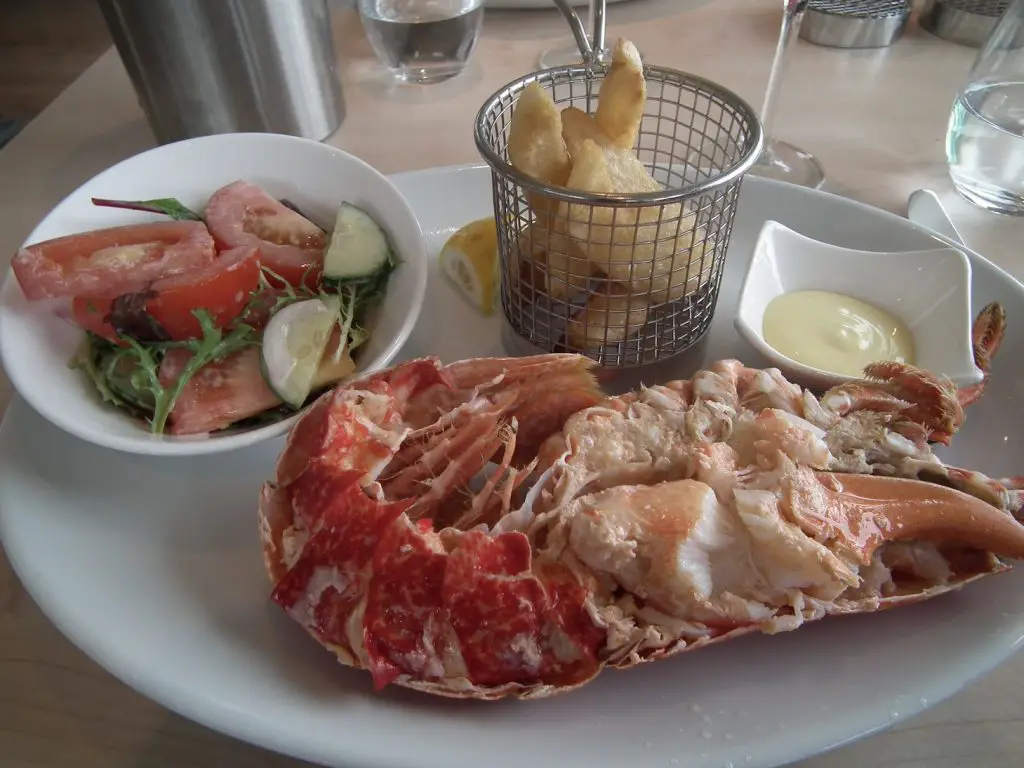
Related Posts You May Enjoy

RECIPE: How To Make Wild Garlic Pesto
Spring is a fantastic time of year for walking in the English countryside. The weather is often warmer and the blossom on the trees provides a wonderful backdrop. We even get a bit of sunshine sometimes! It’s also a great time for foraging for the spring greens that start growing – there’s nothing like picking free food whilst on a walk. At the moment, nettles, ground elder, three cornered leek, garlic mustard (aka Jack-by-the-hedge) are all flourishing and they can all be used to create and add flavour to delicious dishes. Wild garlic is our favourite and we have a fabulous recipe for wild garlic pesto.
There are some basic rules to foraging in the UK. You are allowed to pick flowers, fruit and leaves but you are not allowed to dig up roots (e.g. horseradish) unless you have the landowner’s permission. We never take more food than we need.
Wild garlic is an invasive plant and when it grows it spreads wildly, which is fantastic for a forager. It’s usually easy to recognise and has a very definite garlicky smell.
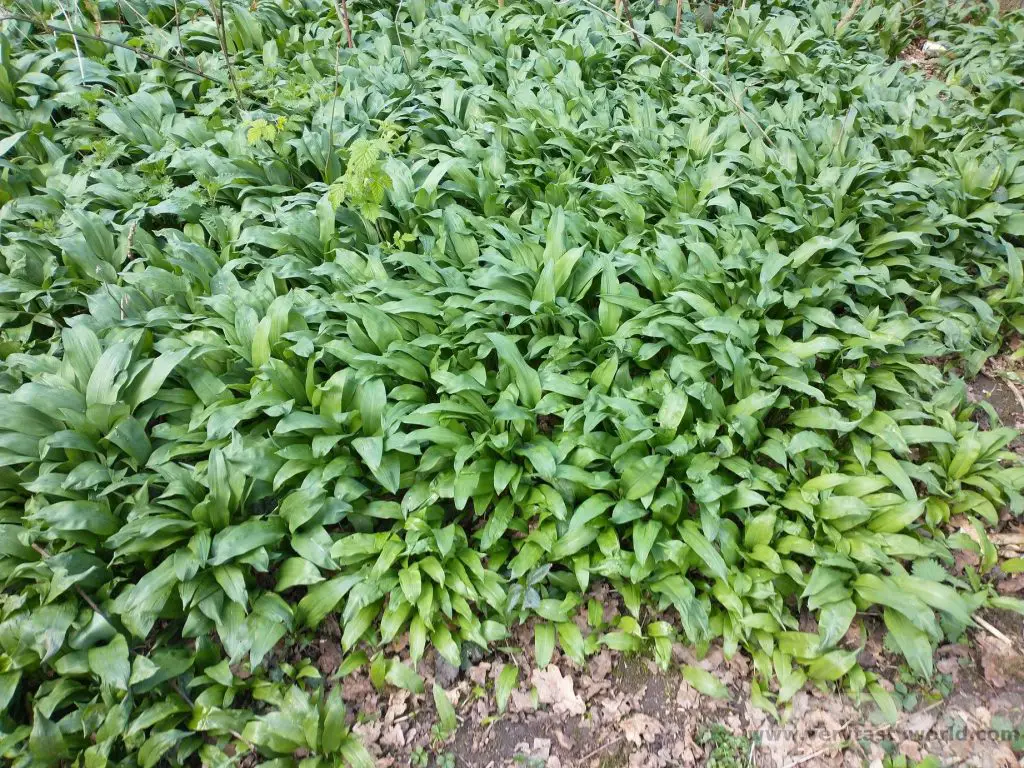
A few weeks after the leaves show through, delicate little white flowers will appear. These are edible too and have a very mild garlic flavour – they make a fantastic edible garnish. The buds can also be pickled and can be used as substitute for garlicky capers.
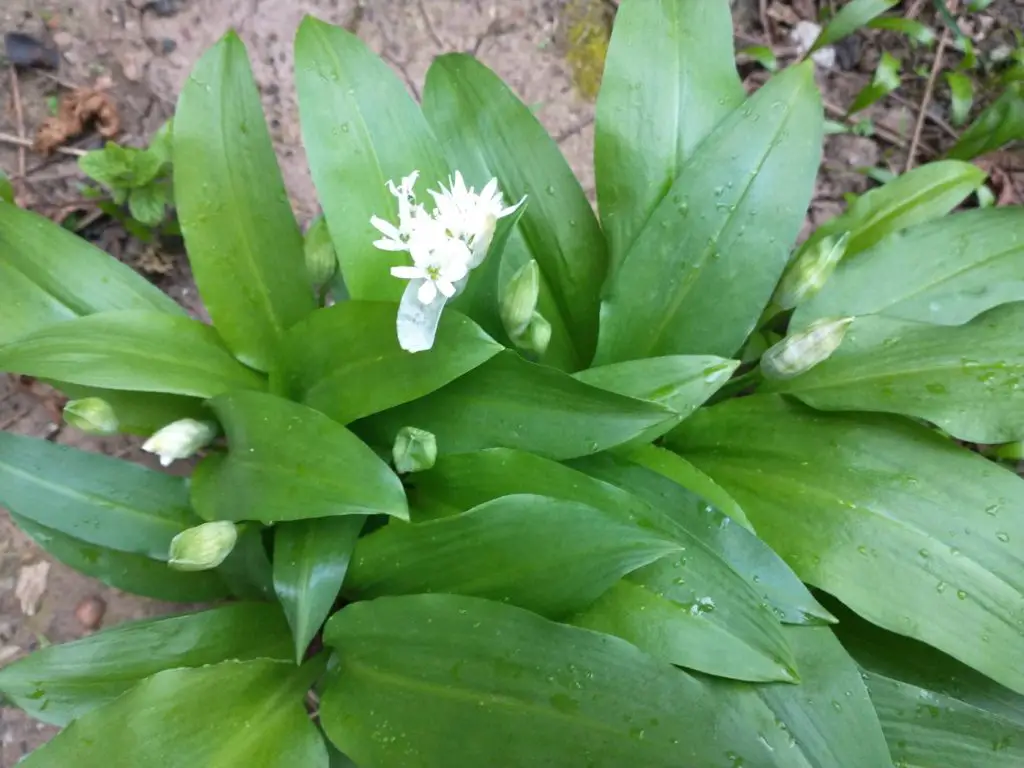
If you are foraging it is really important that you are 100% sure of what you are picking. Never eat anything if you are not certain about what it is. Many plants are poisonous and some can look very similar to edible species. Beware: there is a plant which looks very similar to wild garlic when it’s young and just peeping through the soil. Arum maculatum, also known as Lords and Ladies, is very toxic. Apparently even putting the leaves into your mouth will result in an immediate burning sensation. It sometimes grows worryingly close to the wild garlic. When it’s more mature it develops shiny arrow-head shaped leaves but when young, looks very similar to wild garlic.
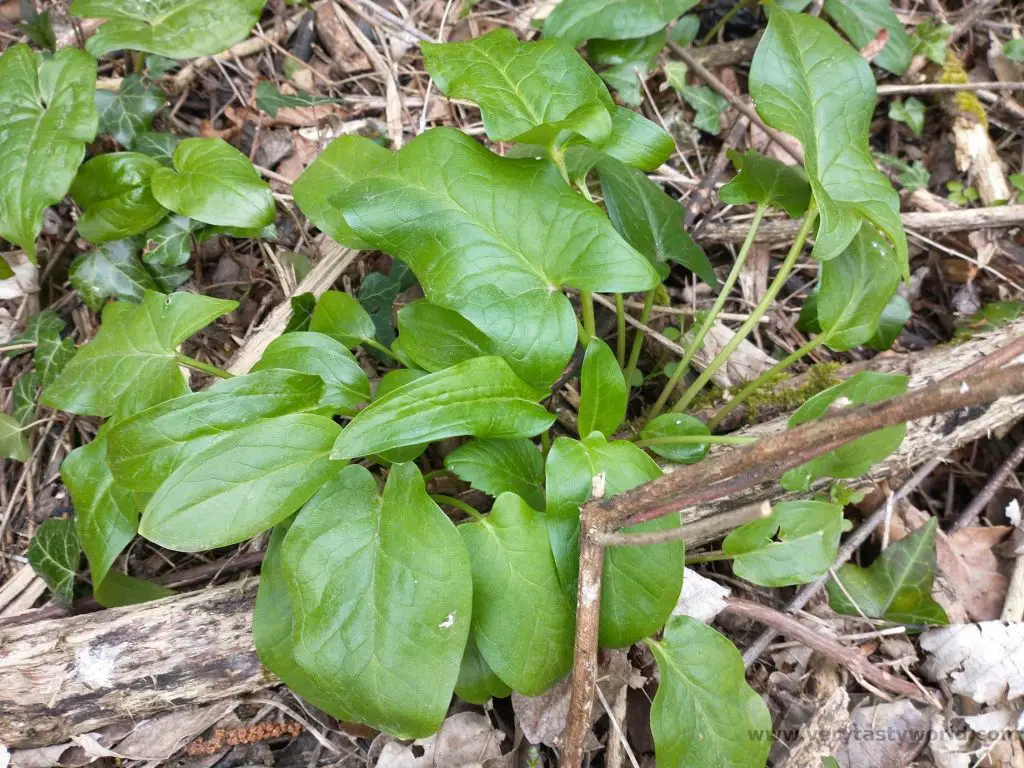
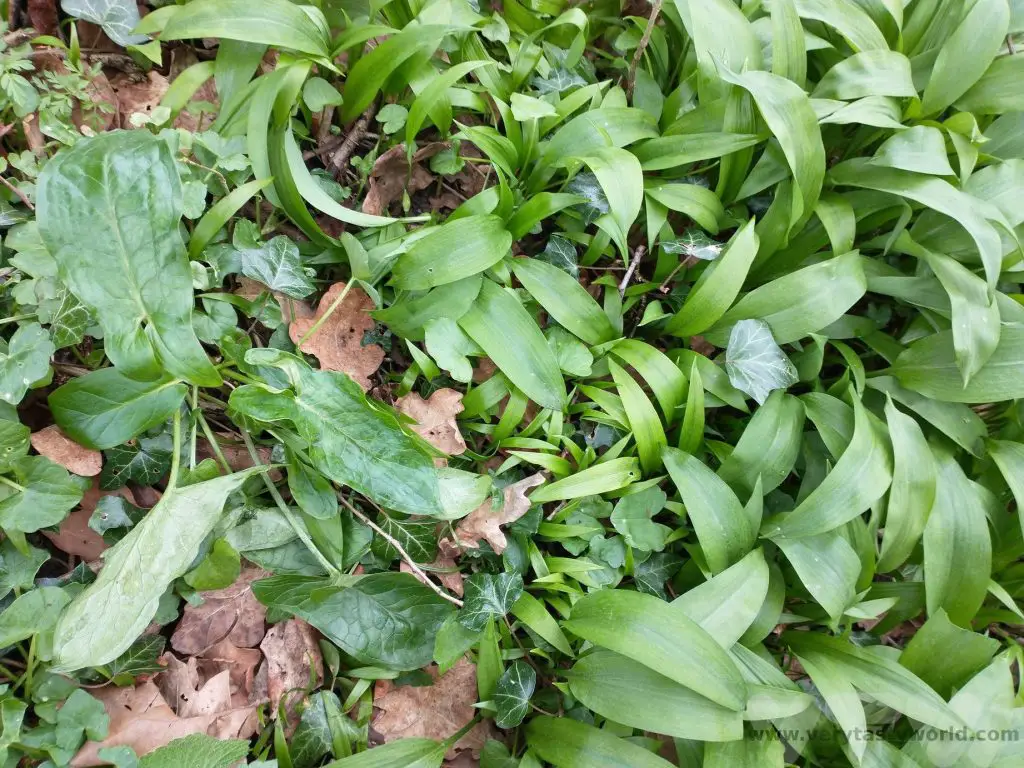
Bluebells, or their white-flowered counterparts, which can also easily be confused with wild garlic’s white flowers, can also grow nearby. Bluebells are extremely pretty but also poisonous.
Whenever we gather wild garlic we go through a process of washing it thoroughly and checking each leaf when we get home.
Wild Garlic Pesto Recipe
This is a recipe that is not at all accurate – it’s one where you can fling the ingredients together and end up with something delicious. Our wild garlic recipe uses cashew nuts instead of pine nuts. They are a lot cheaper and add a lovely creaminess to the pesto.
Ingredients
Bunch of wild garlic leaves
Handful of cashew nuts
Chunk of Parmesan or Grana Padano cheese
Slosh of extra virgin olive oil
Squeeze of lemon
Pinch of salt
Method
Roughly chop the wild garlic leaves and place into a blender. Throw in the nuts. Roughly chop the cheese into chunks and add these. We recommend adding the leaves first – to the bottom of the blender – so that the weight of the nuts and cheese ensures they get chopped up more finely.
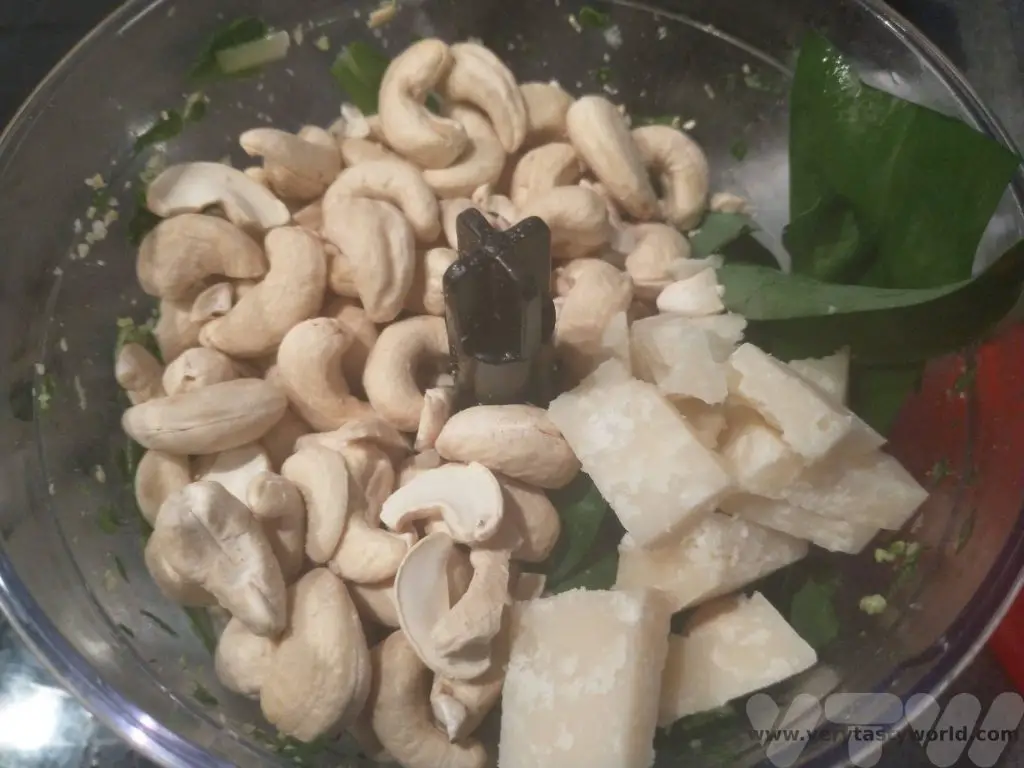
If you are planning to eat the pesto right away, add the oil, lemon juice and salt. The pesto freezes really well but if we are planning to freeze it we don’t add the oil or seasoning; instead we stir it in once it has defrosted.
Blend together until you get the texture you like – smooth or nutty – both work well.
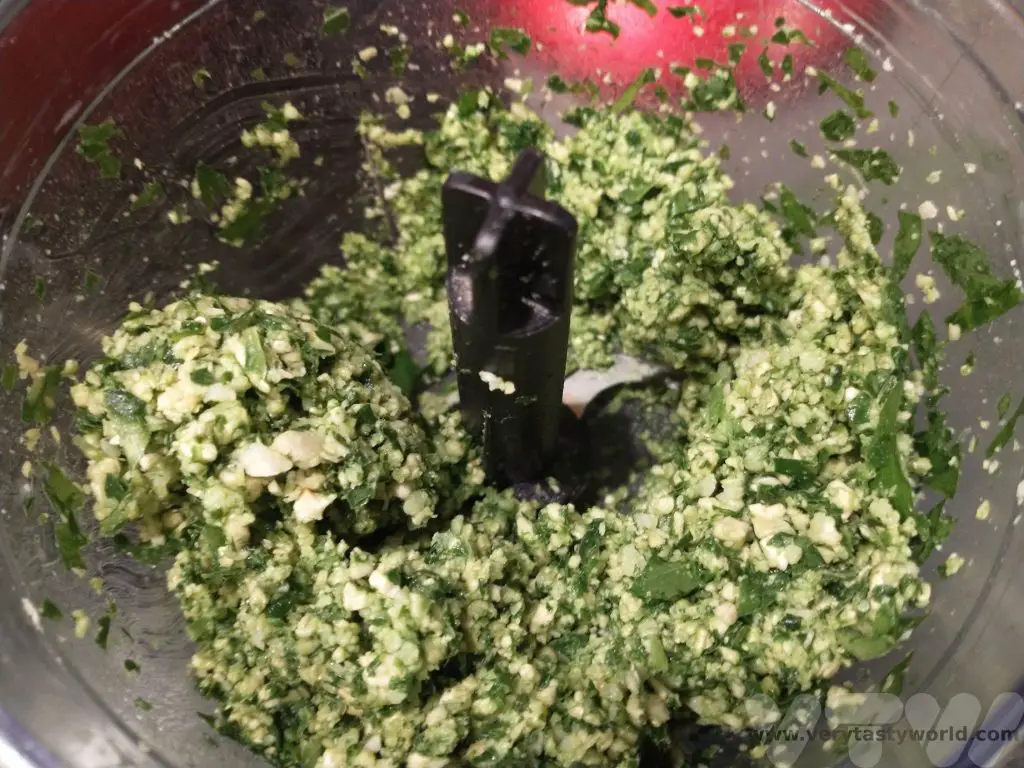
If you are planning to freeze the pesto, decant into containers and pop into the freezer. We recycle plastic takeaway containers as they provide the perfect portion for two people.
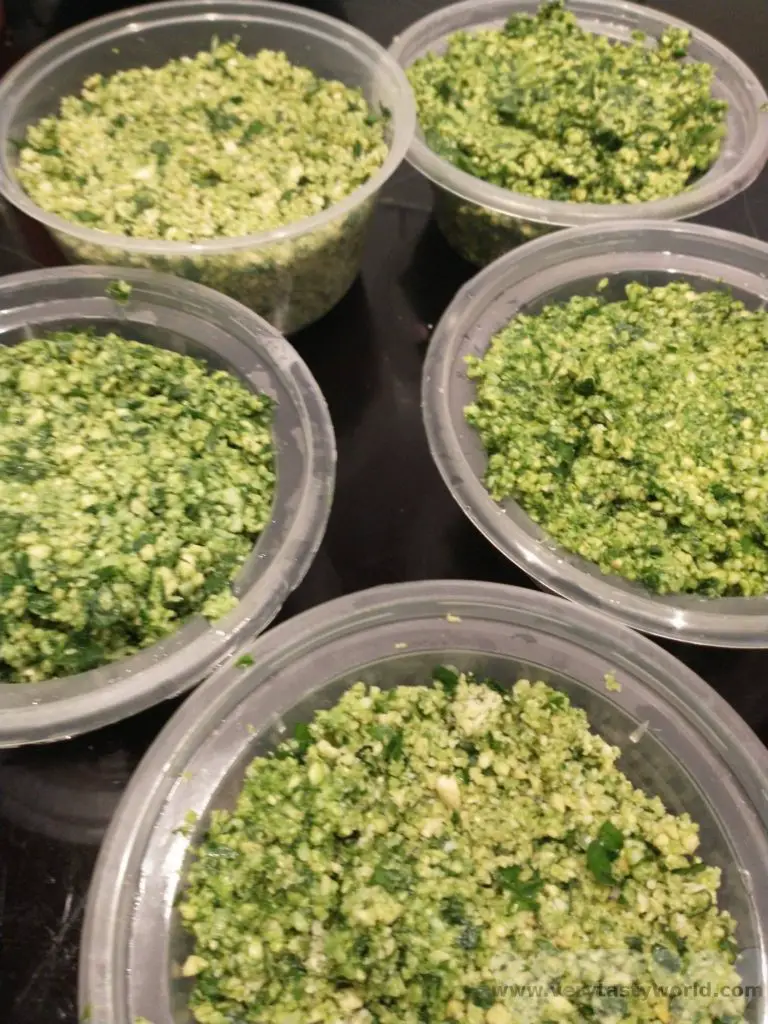
We’ve tried variations using pistachio nuts and nutritional yeast, which can replace the cheese in order to develop a vegan version. Pistachio are more nutty in texture and their flavour is more pronounced in the finished pesto.
The great thing about this recipe is that is so easily adaptable – mix and match ingredients. It’s the underlying gentle garlicky flavour that the wild garlic leaves produce that make this such a brilliant pesto. We’ll be foraging and freezing for as long as the season lasts.
Related Posts You May Enjoy

- RECIPE Oyakodon Donburi
- Zero Waste Recipes Before Your Holiday
- RECIPE: Vegetable Biryani Tamil Nadu Style
- RECIPE: Vegan Wild Garlic Pesto
- Recipe: Venetian Pasta Sauce
- RECIPE: Biryani Raita Recipe
- RECIPE: How to Make Costa Rica’s Gallo Pinto
- Recipe: Japanese Simmered Pork Belly – Buta no Kakuni
- RECIPE: How to Make Umeboshi
